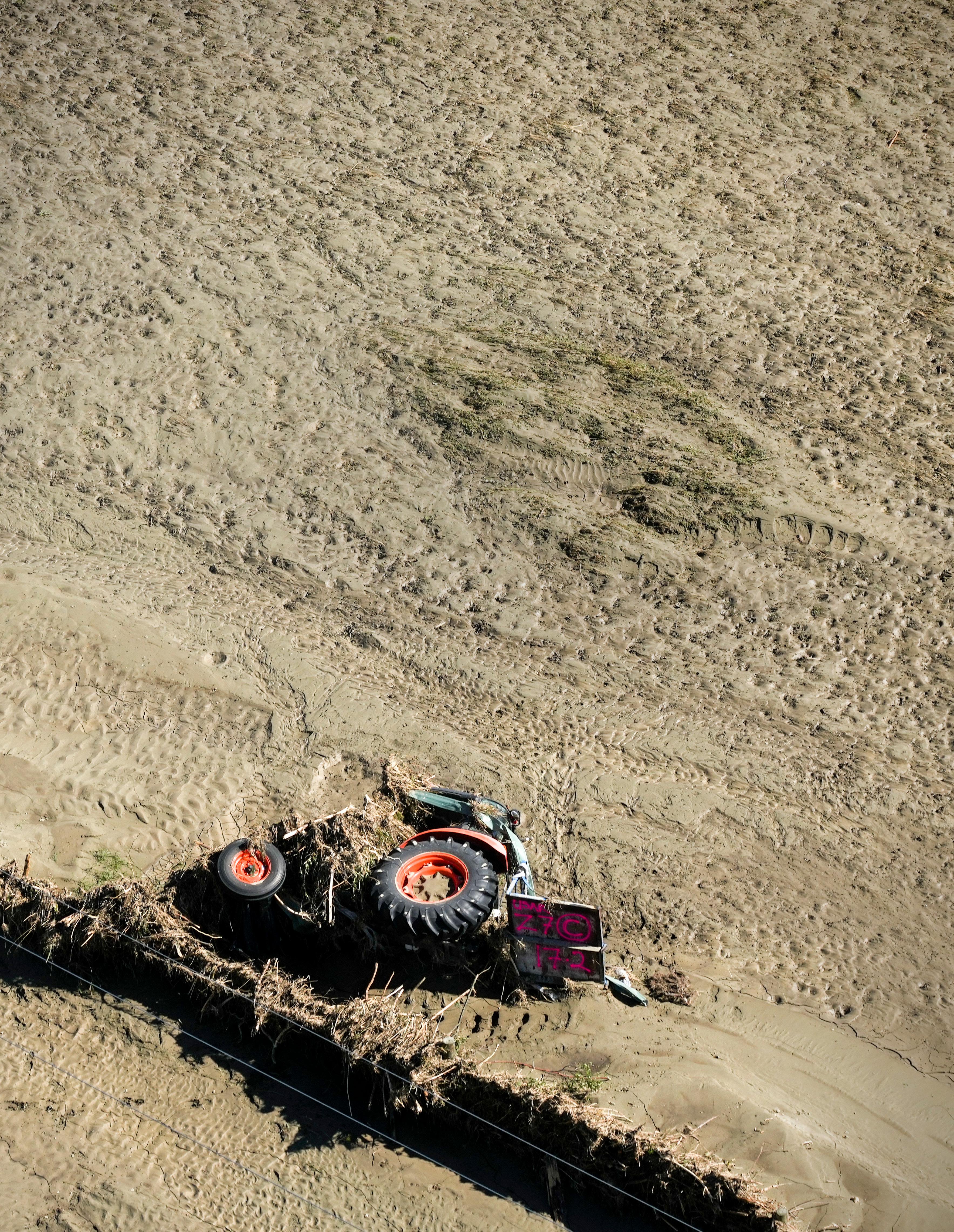
BACKING FARMERS $12.95 incl gst APRIL 2023 AFTER A FLOOD Special coverage post Cyclone Gabrielle and the lessons learned p16 M bovis: A review of the reviews To lease or not to lease a tractor Manager series: Haldon Station's Paddy Boyd
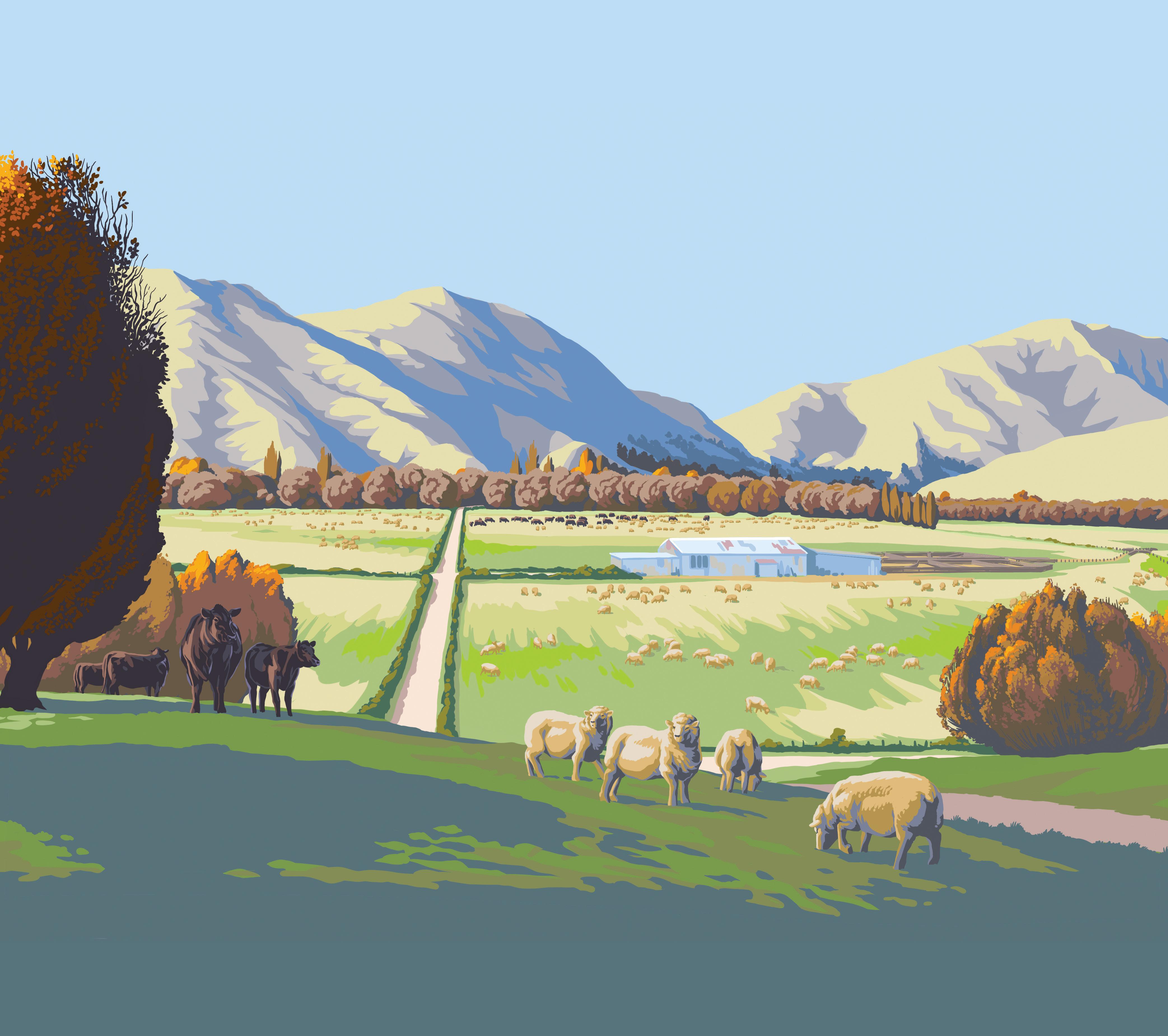
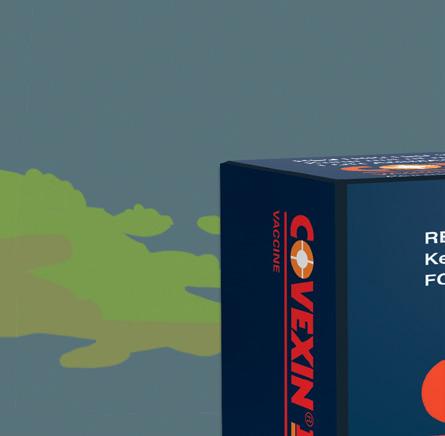
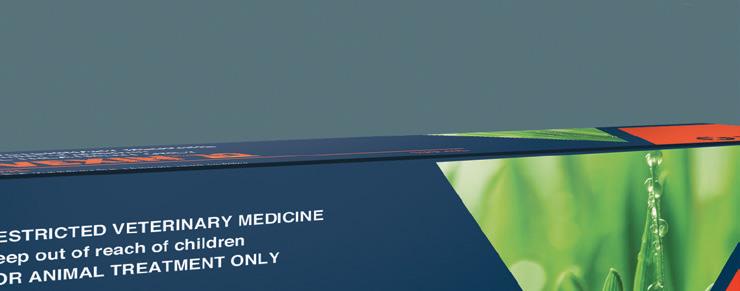
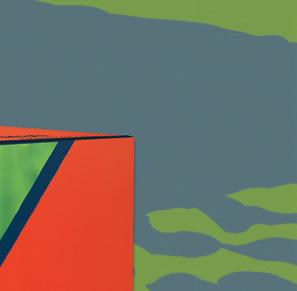

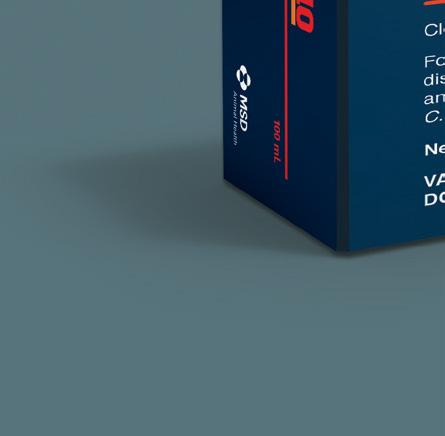


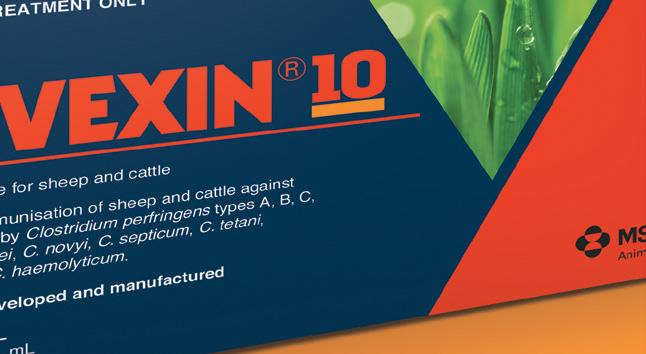





Unsurpassed 10-in-1 clostridial protection NOW AVAILABLE IN A LARGER 500ML PACK
Fast growing/high producing stock grazing new pastures, crops or supplementary feed are more vulnerable to clostridial disease and sudden death.1,2
That’s why we created Covexin®10. Made here in New Zealand specifically for our conditions, Covexin 10 offers the most comprehensive clostridial protection available on the market today. Talk to your vet about upgrading to Covexin 10 and get peace of mind that you are providing the best clostridial protection for your stock.

ASK FOR COVEXIN 10, THE PREMIUM 10-IN-1 PROTECTION

VAXIPACK® RECYCLING LEARN MORE AVAILABLE ONLY UNDER VETERINARY AUTHORISATION ACVM No: A9028. Schering-Plough Animal Health Ltd. Phone: 0800 800 543. www.msd-animal-health.co.nz NZ-BOV-221000001 © 2022 Merck & Co., Inc., Rahway, NJ, USA and its affiliates. All Rights Reserved. 1. Lebrun et al (2010) Cattle enterotoxaemia and Clostridium perfringens. Veterinary Record 167, 13-22. 2. Lewis (2011) Control of important clostridial diseases of sheep. Vet Clin Food Anim 27 (2011) 121–126.
SCAN QR CODE to read a farmer testimonial
SUBSCRIBE TODAY
BENEFITS:
• Choose from print or digital subscription options
• Subscribers save between 17% and 22% off the cover price, depending on your subscription term

• Share your magazines with team members to grow their knowledge or subscribe them all and each have a copy
• A great reference tool to refer back to time and time again
• Your subscription is a tax deductible farm working expense
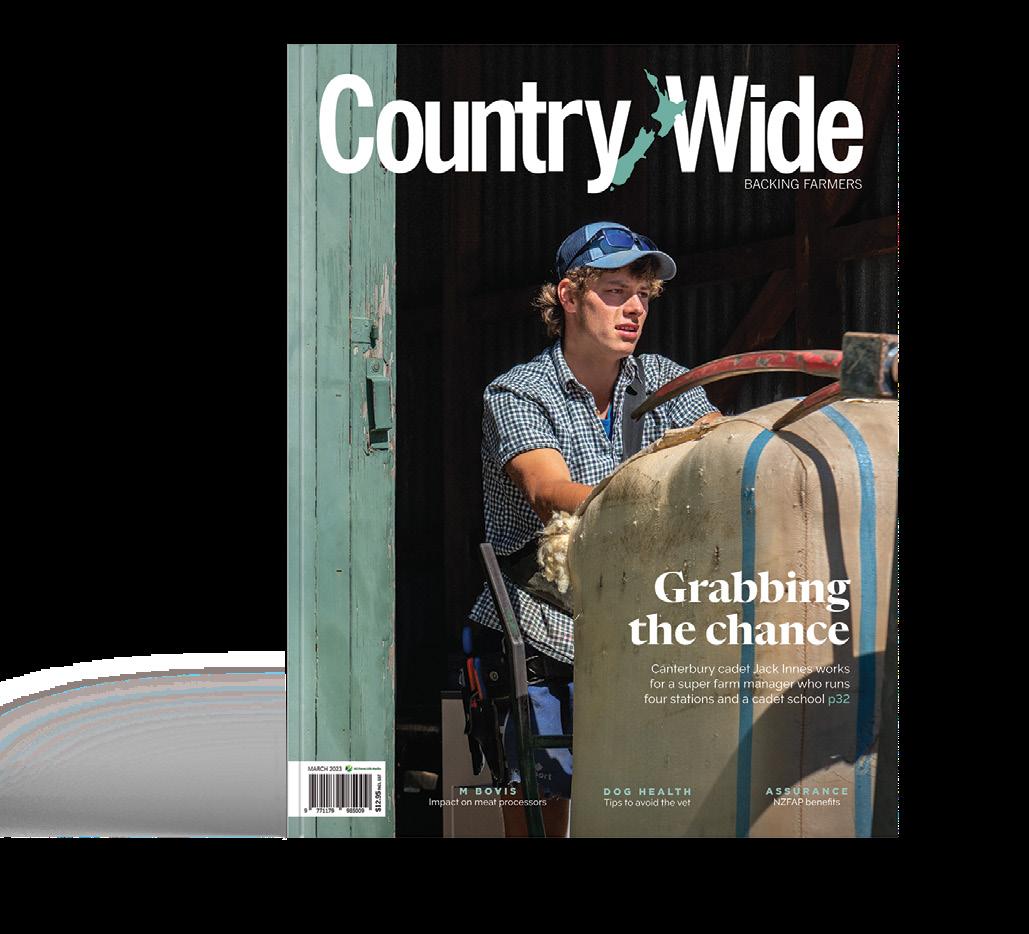
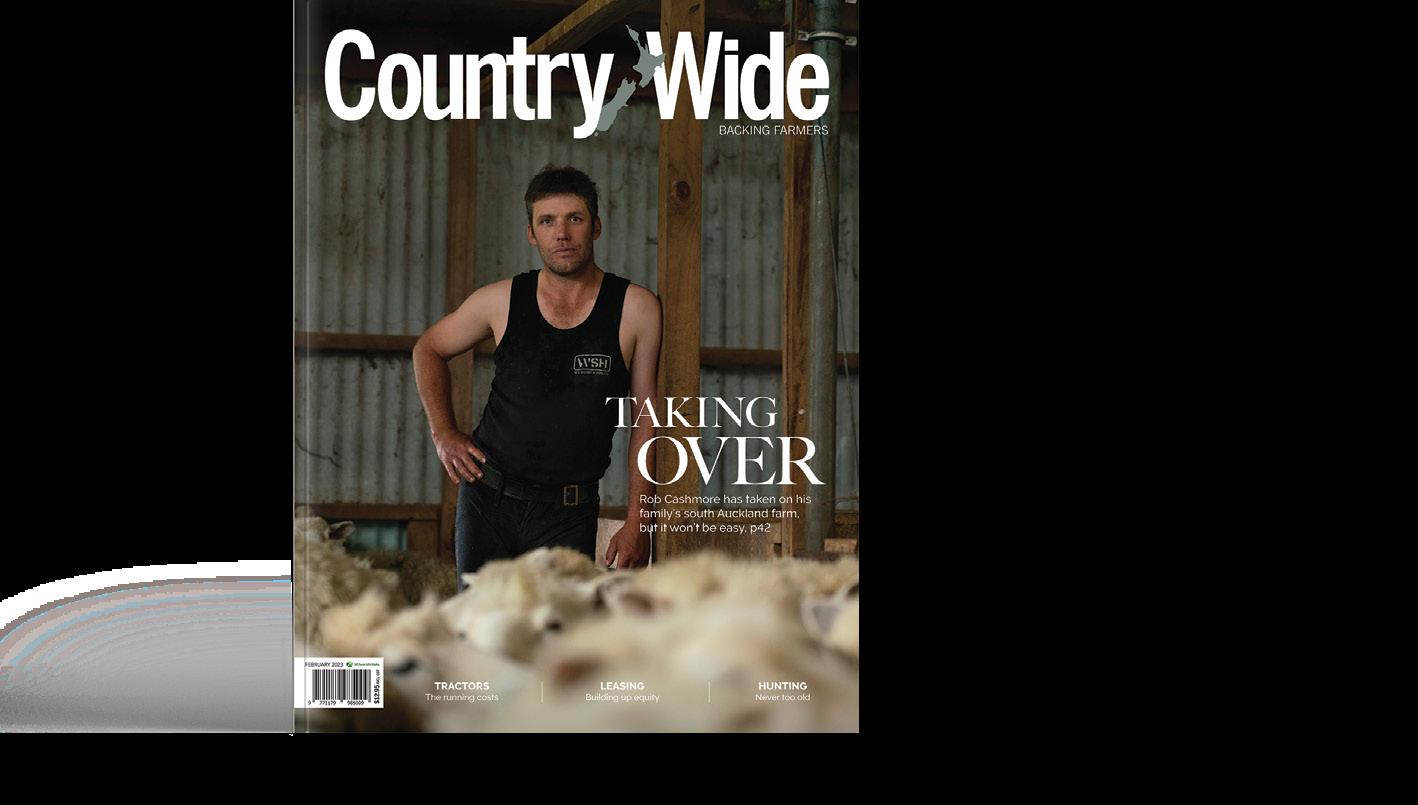
• Entry into regular subscriber-only competitions and giveaways
• Access to years of archive content on our website
0800 224 782
subs@nzfarmlife.co.nz • www.nzfarmlife.co.nz

12 MONTHS $129
24 MONTHS $252
36 MONTHS $360
3* AND 6-MONTH SUBSCRIPTION TERMS ARE AVAILABLE, VISIT OUR WEBSITE FOR DETAILS.
*CREDIT CARD PAYMENT ONLY Use
RuralcoFarmlandsyouror card and SAVE 10%
Rising to the challenge
Who’d want to be a farmer?
Drought, floods, disease, falling prices, rising costs and overbearing government regulation would crush many, but farmers are a hardy bunch.
After Cyclone Gabrielle, communities banded together and worked out solutions, such as ferry supplies across swollen rivers and building access routes. The loss of life and property is tragic. Farmers have an enormous task ahead of them as the clean up will go on for a long time.
Farmers have proven time and time again they are made of sterling stuff and rise to the challenge.
Climate change has been blamed for cyclones but critics say there is no science linking it to the global increase in temperature. Anyway, shouldn't global warming be the cause? Climate change would be the symptom. The sky blackens and 700mm falls. Yes, the climate has changed.
Regardless of the cause, we must deal with the consequences of these events, focusing on the immediate needs of affected communities rather than using them as political leverage.
Global warming is what the world should be concerned about and the focus should be on ways to adapt, not on trying to prevent it by taxing and penalising the wrong people – farmers.
I’ve always said a problem is an opportunity and United States ag
emissions expert Professor Frank Mitloehner showed it can be (p36).
Mitloehner said on a recent visit to New Zealand that global warming and ag emissions were an opportunity for NZ farmers. If the focus was climate neutrality, not carbon neutrality, farmers could help lower NZ’s global warming. Climate neutral is where methane is created and naturally destroyed in a constant herd or flock.
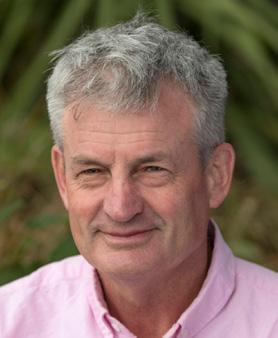
NZ farmers have done a great job to reduce methane, but they could be incentivised to go further to lower the nation’s warming.
The problem is that Government and anti-farming groups work off the GWP100 which measures ag methane inaccurately. They prefer the stick approach.
Was global warming replaced with climate change so the focus could be on emissions, not warming? So agriculture would do all the heavy lifting?
This would explain why the Government won’t listen to calls for the GWP* to be used instead of the GWP100.
NEXT ISSUE: May 2023
BEEF SPECIAL Annual special covering business, markets, management, animal health, genetics, onfarms and more.
A veteran United States commentator gives insight into his country’s beef industry and its outlook.
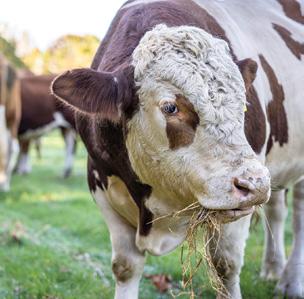
Got feedback?

Contact the editor: terry.brosnahan@nzfarmlife.co.nz
Ph: 03 471 5272
@CountryWideEd
Onfarm: Calving yearling heifers gives a farmer a gauge on temperament earlier and allows females to be culled as three-year-olds.
Country-Wide | APRIL 2023 5
NOTE
EDITOR'S
APRIL 2023
MANAGER
SERIES:
62
68
85
CROP
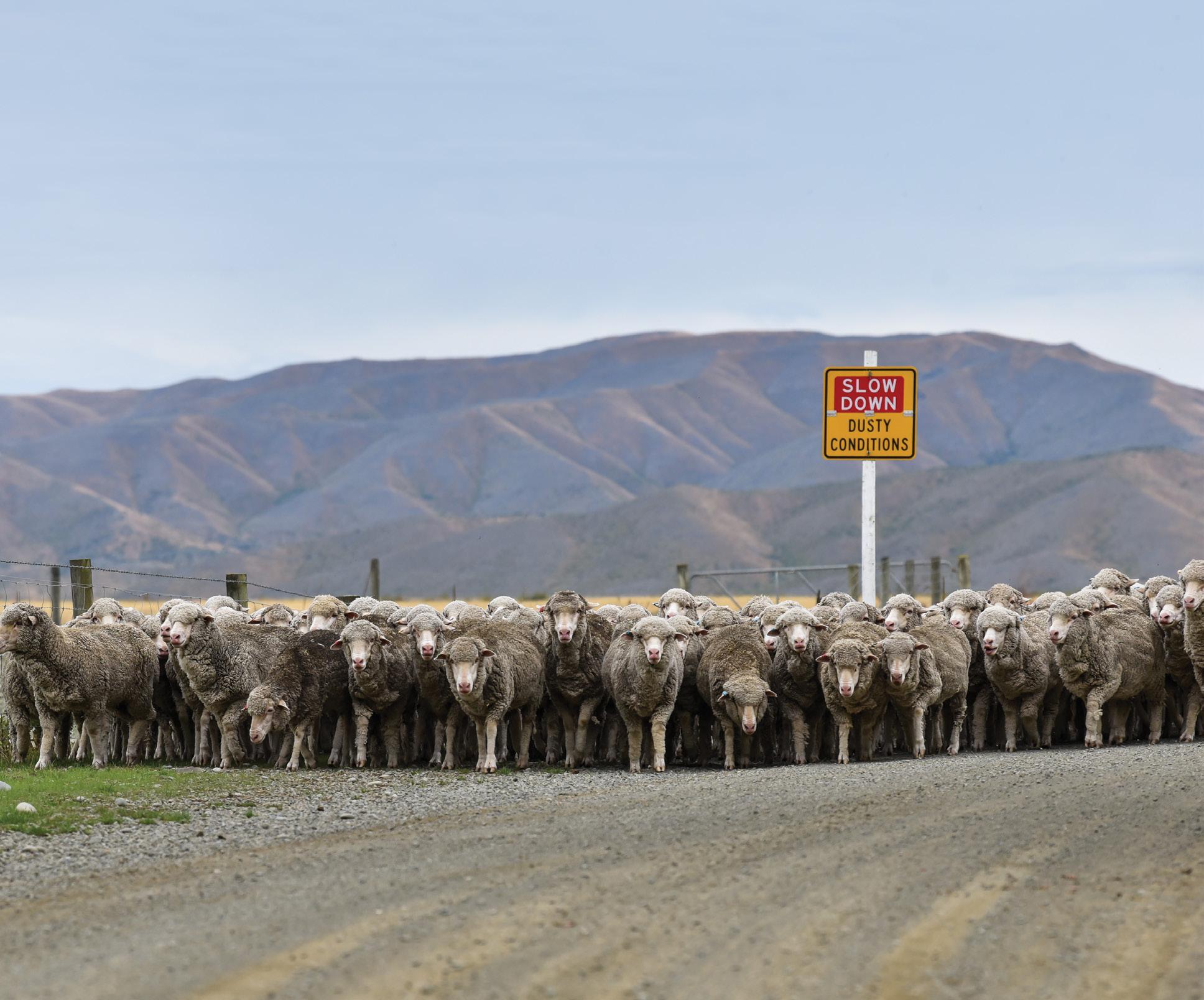
6 Country-Wide | APRIL 2023 CONTENTS APRIL 2023 @COUNTRYWIDENZ 8 BOUNDARIES 10 HOME BLOCK AFTER A FLOOD 16 In the wake of Cyclone Gabrielle 18 Picking up the pieces 22 Dealing with damaged pastures 25 Pasture survival poor after three days 26 Access and fencing top priorities 28 The big cleanup 30 Are the worms gone postcyclone? 32 The Royal wave: Lessons from life-changing events 34 Technology saves the day BUSINESS 36 Opportunities with methane 39 Aunty Thistledown 40 Pothole downgrades prediction 42 Lamb hopeful $7.60 by June 44 Managing the cash flow squeeze 45 Bigger, and more Aussie lambs 46 Tractors: To lease or not to lease 50 Inflation: Rethink the methodology
M BOVIS 52 Reviewing the reviews
SERIES:
FARM MANAGER
Paddy Boyd, Haldon Station
LIVESTOCK
Onfarm: On the home straight
Flystrike challenges south
Onfarm: Doing the hard yards at Puketira
74
76
Stock Check: Stock need pasture choice
AND FORAGE
to know how the rumen works
SOLUTIONS
FARMING IN FOCUS
86 It pays
89
90
SERIES 62
Paddy Boyd has made a career out of managing the Mackenzie Basin’s Haldon Station and its people.
Published by NZ Farm Life Media PO Box 218, Feilding 4740 Toll free 0800 224 782 www.nzfarmlife.co.nz
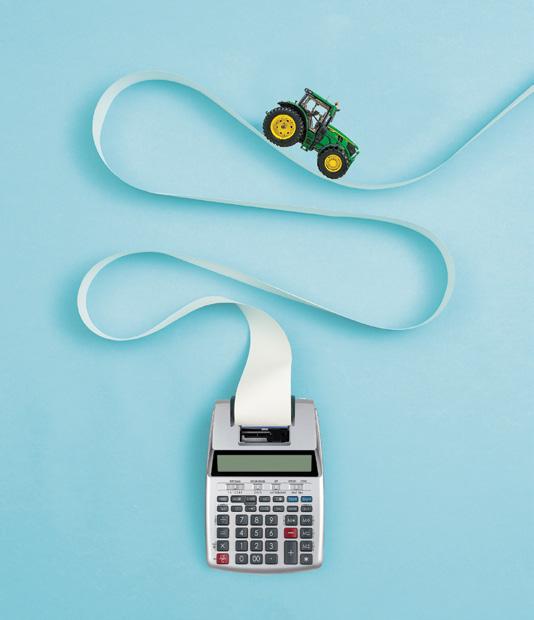
Editor Terry Brosnahan 027 249 0200 terry.brosnahan@nzfarmlife.co.nz
0274 746 093 tony.leggett@nzfarmlife.co.nz
Andy Maciver 06 280 3166 andy.maciver@nzfarmlife.co.nz
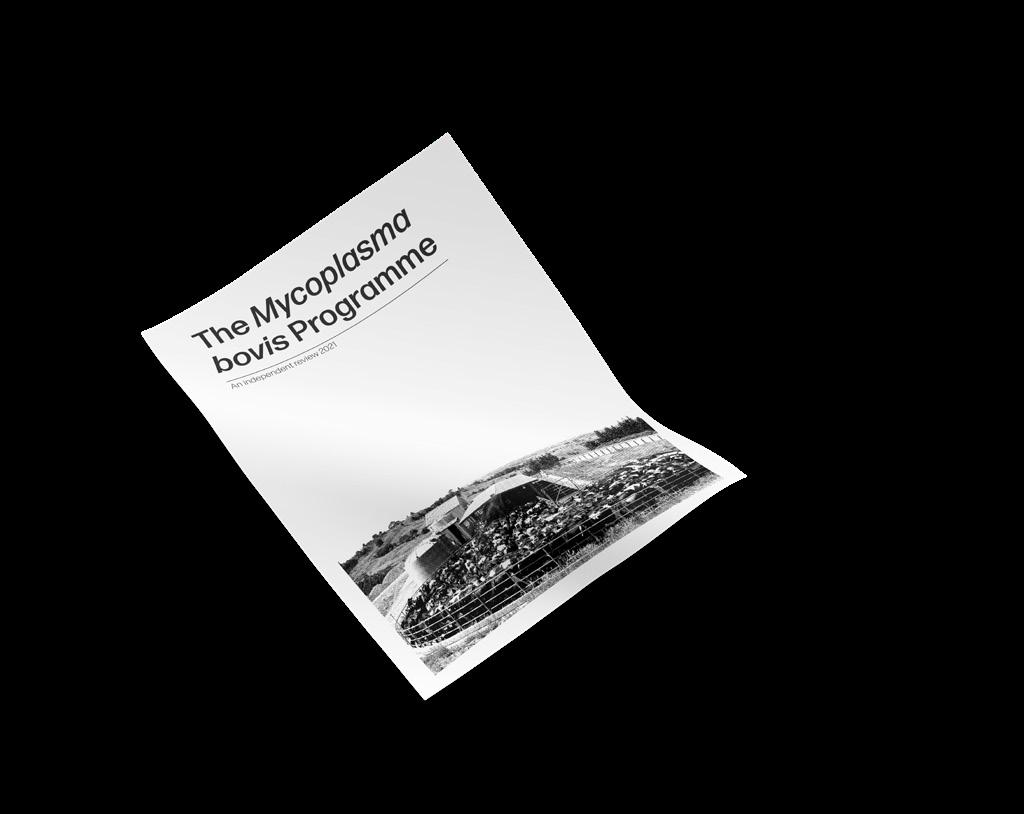
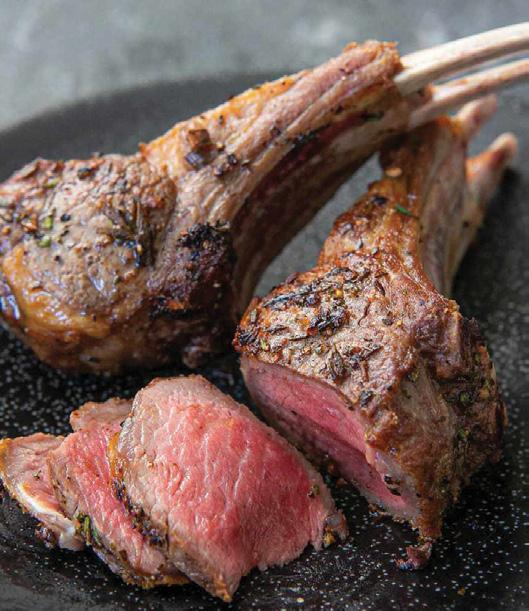
16 SPECIAL REPORT: AFTER A FLOOD
Country-Wide looks at the devastation caused by Cyclone Gabrielle. The lessons learned from it, other floods, and options for farmers.
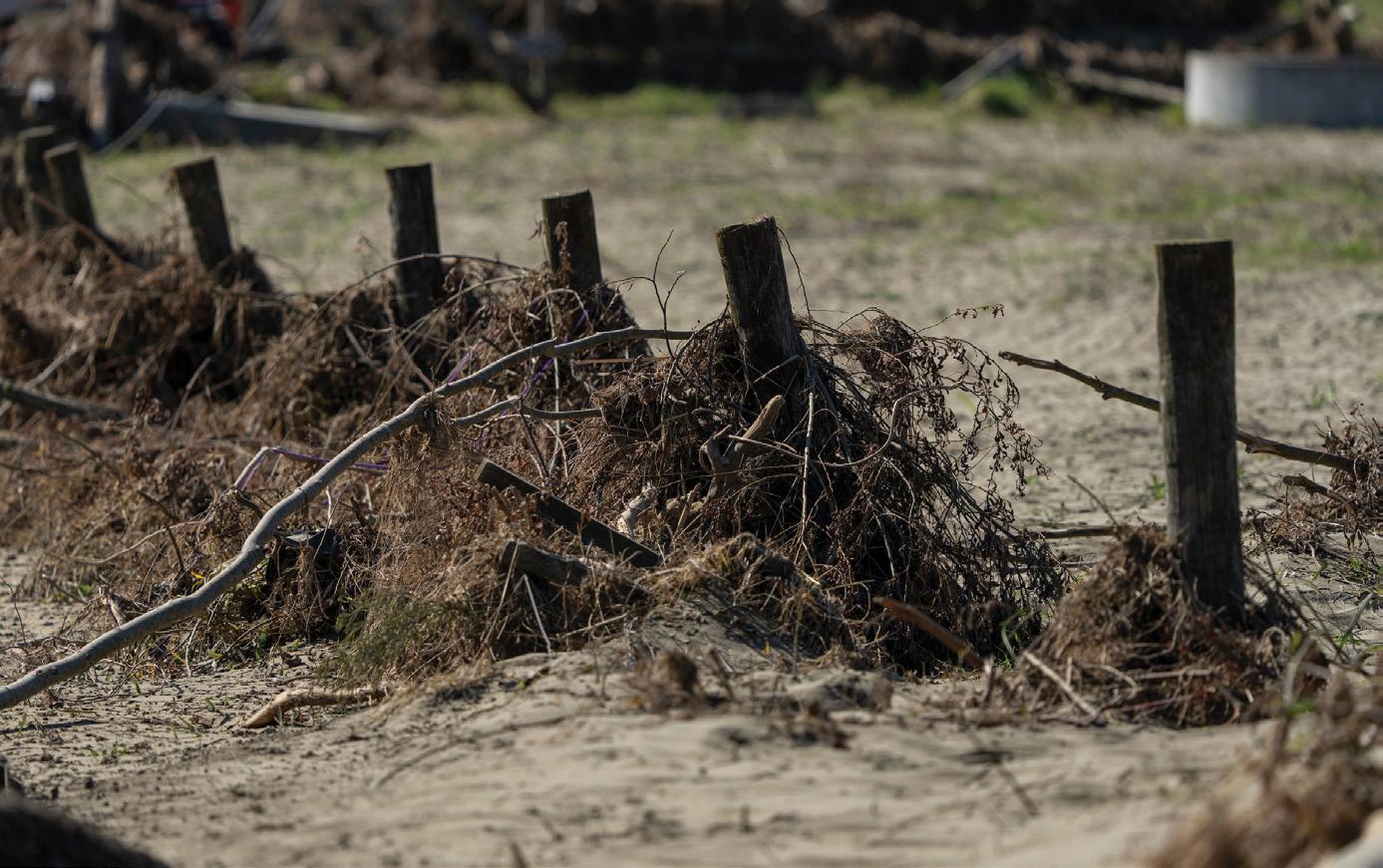
emily.rees@nzfarmlife.co.nz
Sandra Taylor 021 151 8685
James Hoban 027 251 1986
Joanna Grigg 027 275 4031
Glenys Christian 027 434 7803
Annabelle Latz 027 808 6469
Louise Savage 027 260 2750
Sarah Horrocks 027 555 7941
Auckland, Waikato, BOP janine.aish@nzfarmlife.co.nz South Island, Lower
angus.kebbell@nzfarmlife.co.nz
Tony Leggett | International 027 474 6093 tony.leggett@nzfarmlife.co.nz
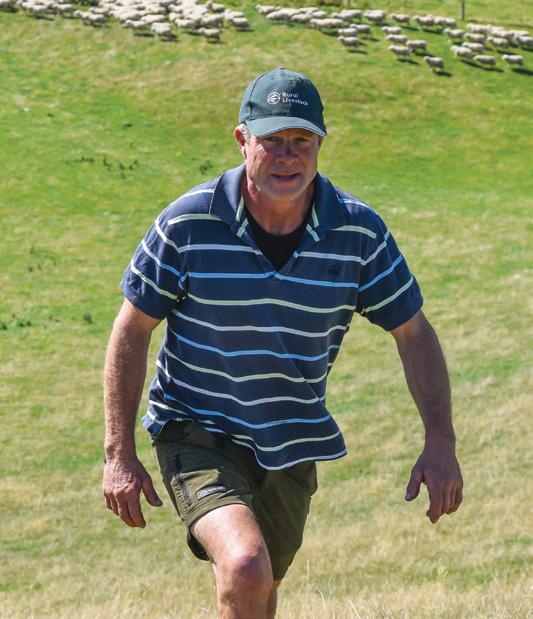
Subscriptions
nzfarmlife.co.nz/shop 0800 224 782 subs@nzfarmlife.co.nz
Printed by Blue Star, Petone
ISSN 1179-9854 (Print)
ISSN 2253-2307 (Online)

Country-Wide | APRIL 2023 7
68
46
On the home straight
Tractors: To lease or not to lease
40 Pothole downgrades prediction
COVER PHOTO JOHN COWPLAND
Farming comes to town
IT’S APPROPRIATE THAT Marie Burke is both a farmer and qualified teacher. She was one of the pilot participants in Beef + Lamb New Zealand-backed “Farmer Time”, connecting year one to eight students virtually with real-life farmers. Marie and her husband Rob (pictured) were paired with a city school in Orewa, north of Auckland.
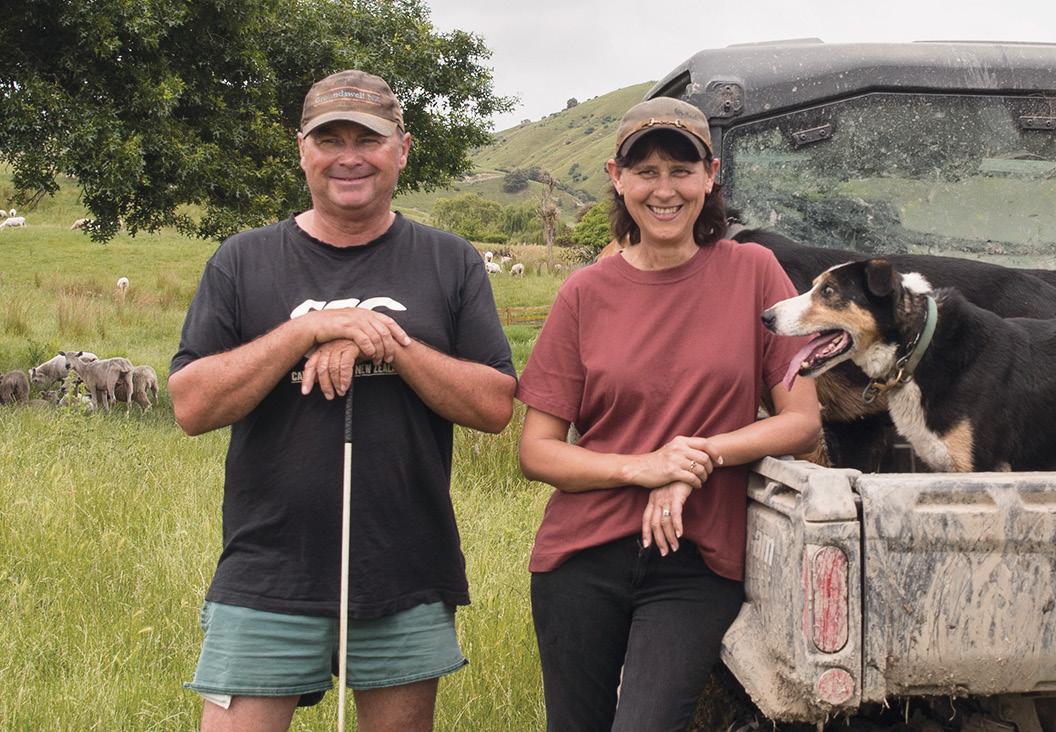
Farmer Time aims to inspire, engage and educate young people about how food is produced and ends up at the fork.
Marie has been the national co-ordinator for almost a year now.
Students participate in live chat sessions with their matched farmer or grower and learn about seasonal tasks on the farm. The children get to see how classroom learning can be applied on the farm and see potential careers in action. They get to know a farmer and farming and farmers become “humanised”. Find out more at www.farmertime.co.nz
+ More on the Burkes' farming operation p76
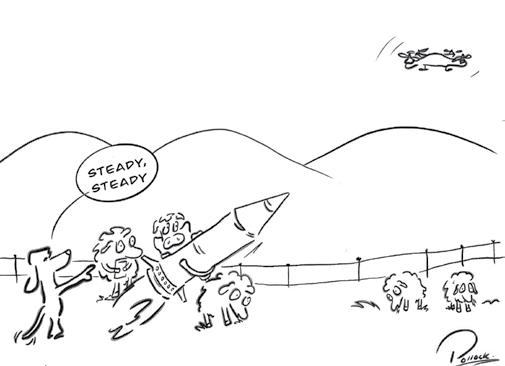
CHATGPT – FRIEND OR FOE?
ChatGPT is the latest in artificial intelligence and it’s causing quite a storm amongst the professional panickers. It’s going to take our jobs and stupify our students.

To allay your fears you can chat with ChatGPT at www.chat.openai. com. Its replies are lightning fast and frighteningly coherent, but also a bit bland. For example, here
CRIMINALS ARE USING DRONES TO CASE FARMS
COMMUNITY HALL RESTORATION
IT IS 111 years old, made of White Pine and was considered for demolition, but locals have banded together to save the Wendonside Hall, near Riversdale. Since late winter in 2022, about 20 people including Bevan Hopcroft have been repairing and painting it at different times. See Hopcrofts farming p68.
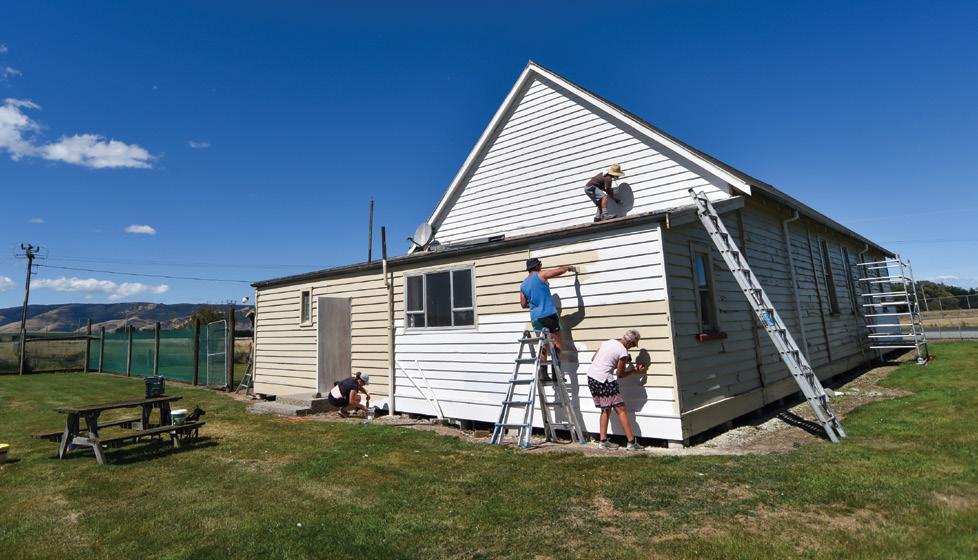
is a limerick it wrote about our esteemed publication:
There once was a mag called Country-Wide, For farmers, it was their pride. With news and advice, It's like having a slice, Of the countryside right by your side
It’s good, especially for a split second effort. But it’s no match for a human who knows what they are doing. However, most of us humans don’t know what we’re doing. And that is where ChatGPT lends a helping hand.
You can ask it to write a pop song about your farm dog, get instructions to change your oil
8 Country-Wide | APRIL 2023 BOUNDARIES
JOKE
A nurse walks into a bank to deposit her pay. She reaches into her purse to pull out a pen to sign her cheque. To her dismay, she pulls out a rectal thermometer. In frustration, she throws her arms up and shouts, “Oh, great! Some arsehole has my pen!"
TELL A GOOD STORY
The agricultural sector is terrible at telling the story of how food is produced, and why it is produced the way it is, United States scientist Professor Frank Mitloehner says.
DID YOU KNOW?
Boeing tested its in-flight Wi-Fi with potatoes. As far as your wireless internet signal is concerned, you are interchangeable with a potato. Because of their water content and chemistry, potatoes absorb and reflect radio wave signals the same way humans do. So when Boeing wanted to make sure that their planes’ wireless signals would make it through all the passengers, they piled the seats with potatoes.
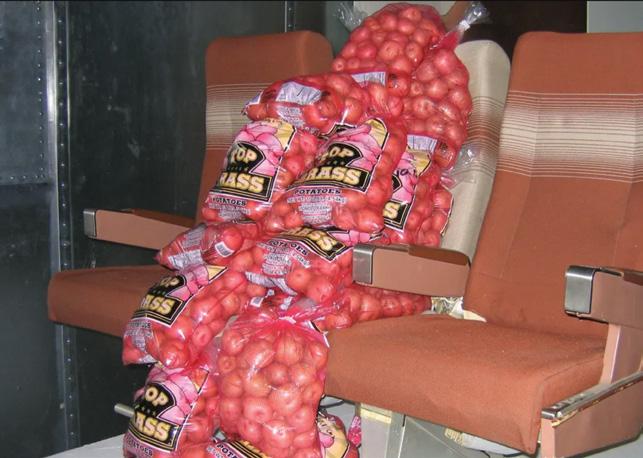
Known as the greenhouse gas guru, Mitloehner is part of a research team which visited New Zealand recently as part of a programme gathering information from countries that are concerned with the impact livestock has on climate. The project titled, Journeys throughout the World, documents different approaches being taken by countries to mitigate the effects of agriculture on the environment.
“...if there’s one sector that agriculture, not just in the USA, but throughout the world, does chronically poorly - it is communicating.”
Mitloehner, who leads the Clarity and Leadership for Environmental Awareness and Research (CLEAR), at University of California, Davis, said interacting with the public on externalities is something the agriculture sector can make a difference on.

CLEAR has developed some tools, which are available on their website, to help improve communication and understanding
of agriculture. These include ‘explainers’ which have an explanation of a topic or concept.
Mitloehner said these were popular. They also write longer pieces and make videos.
Mitloehner urged patience to those wanting to use feed additives to reduce methane emissions.
He advised waiting until research was further along, because the research needed to be very holistic and thorough.
Mitloehner said research was still being carried out on feed additives, but it was not myopic about just methane.
“Of course, methane is our key objective.”
Mitloehner said they must not reduce methane, and then suddenly discover there are worse problems like higher nitrogen emissions, animal welfare considerations, or residues in milk and meat.
He said in the United States, they could not use feed additives to reduce emissions but they would in the future.
+ Read more p36
filter, produce computer code, draft a letter, compose a sonnet, make a crochet pattern of a giraffe.
Why write “all the best” in Bob’s retirement card when ChatCPT can draft you a list of heartfelt answers to choose from? "Congratulations on your retirement, Bob! Wishing you a
well-deserved break and lots of happy adventures in the years ahead."
But good sentence structure can only get you so far. ChatGPT was built to process language, not ideas. It can put pen to paper, but it can also be wildly off base. The crocheted giraffe came out looking like a donut-shaped rabbit.
TAXATION
“...a nation to try to tax itself into prosperity is like a man standing in a bucket and trying to lift himself up by the handle.” – Winston Churchill.
Country-Wide | APRIL 2023 9
A fitting tangi

their hilltop urupa.

IT WAS RAINING, but it wasn’t February rain. No one was sweating under their wet weather gear; likely more filled with concern that winter was closer than they thought. Rain on a hilltop with teasing cloud, but hardly a breath of wind to rustle the gazebo sheltering the small, fenced urupa. About 60 people had gathered at our neighbour’s place to farewell the matriarch of their family. In a rare reversal, the land had been converted from European to Maori title, so a traditional burial was possible in a place that even the
least spiritually inclined would agree was blessed.
There was room on the small rounded hilltop for the burial site and a circle of mourners, family up close and friends on the edge where the grassy slopes gently fell to the bush that protected the steeper gullies below. Further out the view grew hazy, but our gentle green hills rolled to the west and to the north the sea, too far away to tell what mood it was in. The rain had made the cross-country drive too risky even for the Toyota Hilux pressed into service as a hearse.
Not to be thwarted, a farm trailer was dressed in greenery and the coffin laid in its bed with mauve hydrangeas and other colourful blooms. A small bulldozer took up duty and its first gear was the perfect pace for the procession. A person carrying a speaker was typing code into a phone and soon the soulful strains of a gospel choir added to the scene. There were umbrellas and gumboots amongst the odd jacket and tie. Extravagant earrings adorned handsome young women wearing long (and short) black dresses. There were greetings, jokes and tears in equal measure. I saw a formidable-looking bloke with
facial tattoos put his arm around his visibly upset girlfriend and gently kiss her on the temple.
At times there was beautiful soft singing but also occasional silence, the silence that only an atmosphere such as this can command. We never get to say of course, but I’m sure the guest of honour would have approved. Her farewell held all the colour and dignity of her life, and in the same vein was a truly unique affair.
Had the proceedings been part of a movie, with that atmosphere, in that light, against that backdrop, awards would have been forthcoming. Simply by being there the mourners were rewarded. And reminded by the officiator that life is fleeting and must be made to count. It is too precious to waste, as some do, with thoughtless actions and too little regard for others.
With final goodbyes spoken and last tears shed, the coffin was lowered and the soil replaced.
Other tasks loomed such as towing stuck vehicles and worrying about the wellbeing of the closest of those left behind. The breaking of half-century partnerships is a devastating reality which I doubt can ever be reconciled. When the loss is not immediately yours it’s easy to offer consolation and think that it will help. I hope it does in some small way. It was a privilege to be part of this day, part of this group of people and to be reminded of the ultimate reward of a life well lived.

10 Country-Wide | APRIL 2023 HOME BLOCK
Paul Burt is privileged to join the farewell to the matriarch of a neighbouring family at
Matata
“In a rare reversal, the land had been converted from European to Maori title, so a traditional burial was possible in a place that even the least spiritually inclined would agree was blessed.”
IN TRUE KIWI farming fashion, we’re all politely wincing while stating that some other poor bugger has it worse than us. There’s always someone who’s been hit harder with floods or drought, others with less money or more problems than us. This is both true and charming; we’re a humble, empathetic bunch. But the fact is, we’re all in need of a cup of tea and a lie down.
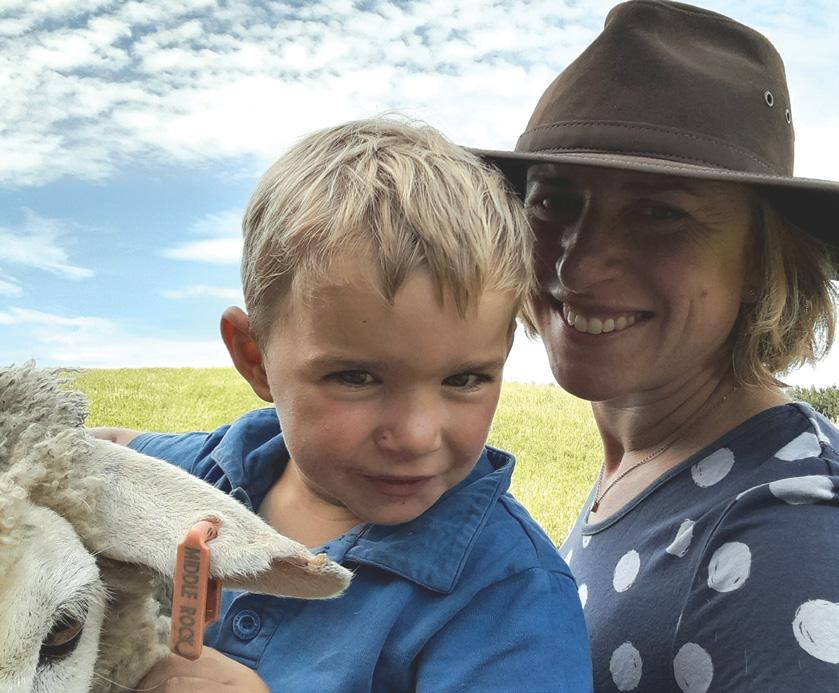
Life here at Middle Rock has been free of cyclones, floods and drought, with problems limited to beetles in my boots and a phantom backdoor poo problem. I am pleased to advise a three-yearold boy has been apprehended in relation to both offences. And yet, with 2023 determined to pack a punch of its own, it’s hard not to feel a little battered beyond the backyard.
The vagaries of weather are not entirely unprecedented, but the scale of interference from the Government sure is. Not only have we endured the nation’s infantile sufferance of dual-worded slogans to stay home, get jabbed or be kind, we’ve simultaneously had

years of navigating an unrelenting agricultural policy barrage.
I remain unsure if I am getting old and cynical or getting old and sensible. Possibly neither, though my advancing collection of sturdy footwear (don’t get me started on the sturdy underwear) confirms the getting old part.
Before you kindly think “surely not?” and generously crossreference these words with the intentionally small, somewhat blurred profile picture featured top-left, I ought to disclose that it’s almost a decade out of date. I simply refuse to let the editor update it and despite the editorial fighting talk, he’s far too much of a gentleman to refuse. It turns out there’s an upside to living in an age where we’re all too scared to question pronouns or profiles.
Though perhaps we’re progressing on from political correctness at all costs. Strange was the relief of Ardern’s resignation –an insidious weight lifted. I say this not necessarily for any political preference, simply for an end to the verbose wafty rhetoric so high in virtuous emotion that it ran unchallenged.

the outcome in October, may the rigours of judgement be both applied and applauded. Just as cute three-year-old perpetrators should be held accountable, so too should charming politicians. May we mature beyond fairly voiced criticism being labelled as unkind, misogynistic or lacking “social licence”.
Closer to home, now that we’re all done working out what a remit means and how to pronounce HWEN like a flash granny saying ”when”, I suggest we get back to basics. For me, that means dealing to rank grass, the souvenir of a summer of southerlies.
Finally, policies are being held up to the light of day, with many thrown to the Beehive bonfire. Real-world practicalities are back in vague consideration, outcomes accountable and dissenting voices beginning to be given some air time. All form such a crucial part of a healthy democracy yet seemed to get lost in the virtue-signalling hot air of the last few years.
Soon it will be time for my unreliable, wildly incorrect election predictions. Whatever
Back to basics also means weaning the household off our year-long addiction to Pamol and kiddy Nurofen. Between colds, Covid, RSV (a deceivingly short name for a gruelling cold with an unshakable cough), the flu and a coupla’ spew bugs for good measure, we are on our knees.
Once proud upholders of the nocturnal-no-child policy, the past 18 months have reduced us to many a night of musical beds – tragically trying to placate small people while maximising much-needed sleep. Fancy getting to 40 and being back to having incomplete recollections of the night before.
There’s life in the ol’ girl yet.
Country-Wide | APRIL 2023 11
Charlotte Rietveld parts the pronouns and profiles to cope with beetles and the scatological habits of a three-year-old at Middle Rock.
So much to think about
“Whatever the outcome in October, may the rigours of judgement be both applied and applauded. ”
Rakaia Gorge
Deceivingly charming three-yearold Edward Rietveld and his ageing mother Charlotte.
Clearing and shearing

sorts of other insects. I felt a bit bad because mowing was going to do the insects out of a meal, but I went ahead and mowed anyway, and did not find any fawns.
Soon after, I read about declining insect populations around the world and how their numbers can drop very quickly. The inference being that what befalls insects will also happen to us.
The message being that our farms have to feed more than just us.
I was very impressed with Sacha Bond’s lamb shearing record. I followed her tallies during the day and with 150 out in the first run, she was on track for 600. She made a speech afterwards from the shearing board and said all the right things. What really impressed me, apart from the physical effort, was the professionalism evident and promoted in the shearing industry.
A sad irony that the wool price received does not match the excellence on display.
IN CHINA, 2023 is the year of the rabbit. I think we have had the year of the Californian thistle. I spent some time getting an old carpet weedwiper up and running and that worked very well. You could see the thistle curling up before you left the paddock.
The only problem was that I didn’t have the time to operate it and the optimum time for killing thistles passed. Subsequently, we have done a lot of mowing to tidy things up.
The worst paddocks were sprayed out completely and then we had to burn to get the drill through and plant short-rotation grass.
To put a different angle on calis, one day I was searching through a big patch of thistle looking for any fawns that might be hiding in there. The thistles were in full flower and alive with bees and all
In the week prior to Sacha’s record, we were shearing lambs on a hot and sticky day and had our own shearing milestone.
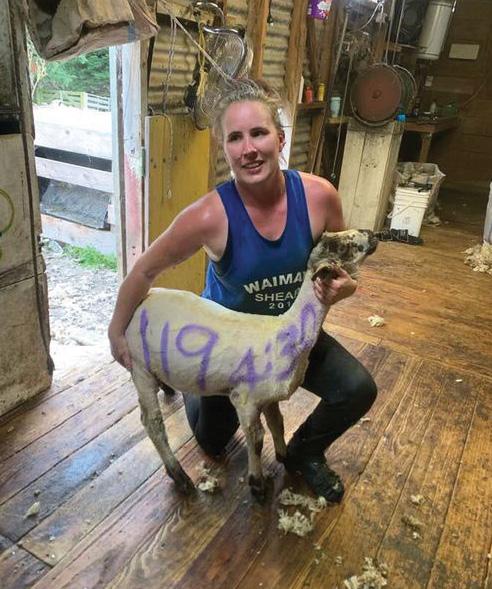
Trace is a rouseabout and learner shearer and was on the third stand for the day. It was apparent she was struggling at times and I did want to do a few for her so she could straighten her back up. She was having none of that and battled on to do her first 100. In fact she got 119 by 4:30pm. A fine effort.
I am reluctant to say too much about our season, given that to the South, they have been very dry and to the North, suffered catastrophic damage. We have managed to fill a silage pit and that doesn’t happen every year.
The paddock earmarked for summer forage was too wet to sow before Christmas. With the good chance of northeast rain, I thought
I would get away with broadcasting the seed and harrowing and rolling. There was barely a drop of rain for the next two months. The weeds grew prolifically, but not the crop. I have really missed that quality feed.
Harvest was a breeze and done in four fine days. There is still linseed to do.
I won’t talk about the frustrations of the lamb season. At the time of writing, we are building into a very nice autumn. Organising and hosting a national conference has been occupying quite a lot of our time. I have had a lot of fun making a walking track down a steep hill for conference attendees. I have put in macrocarpa sleepers for steps and done the digging the old fashioned way – with a mattock. That is a Sunday morning-type job and two hours at a time is enough.

12 Country-Wide | APRIL 2023 HOME BLOCK
Andrew Steven tackles thistles, but pauses for thought on their insect population.
“She was having none of that and battled on to do her first 100. In fact she got 119 by 4:30pm.”
Learner
shearer
Trace with 119.
Timaru
SCOTLAND STARTED OFF this season's six nations in fine form, dispatching the auld enemy on their home patch and pummeling Wales in Edinburgh, which gave us Scotland supporters a little hope which is a dangerous thing.
Beating England certainly put a spring in our steps as it usually does, but making it two in a row against Wales brought new confidence.
Next stop Paris, and our brand of ‘Rip Shit or Bust’ rugby wasn’t quite enough to overcome France, the number two side in the world – the 19-0 head start was maybe over-generous but wow did we play! Ireland were too strong for us. We should have taken our chances and will need to find another gear or two for our world cup pool match.
Throughout my farming career, the six nations has had the ability to make a huge difference to my spring. If Scotland is competing well and getting the odd win, anything’s possible, but unfortunately the opposite applies too.
Anyway, credit must be given to coach Gregor Townsend who should be given a contract extension, assuming Scott


Robertson would rather take the All Blacks job, assuming the NZRFU eventually get round to giving it to him.
Credit should also be given to Marc Gasoigne who recently joined us for a tour of Scotland, talking about Farmstrong NZ and how it helped him change his life following years of depression. He watched the first match in a pub surrounded by Scots and the second match in Orkney at their rugby club, and we reckoned he was a lucky charm, and despite becoming addicted to haggis and whisky (he had one of them every day) he departed before the French match and we started losing!
As some of you may know, we have been working hard over the past couple of years to bring Farmstrong to Scotland and with the help from Gerard Vaughn and the New Zealand team we are close to launching. To raise awareness further, Marc, a dairy farmer from Hamilton, came across and spoke to more than 1000 people over 12 events, including the National Farmers Union conference, and he had a huge impact.
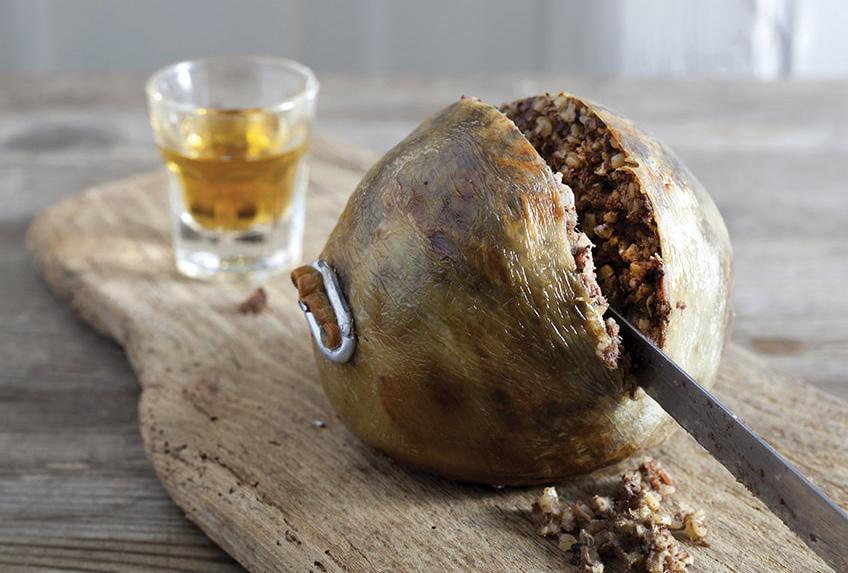
As chairperson, I had the honour
of joining Marc for the second half of the tour and listened with audiences in Glasgow, Orkney, Thurso, Dingwall, Oban and Stirling, and on each occasion you could hear a pin drop when he was talking.
He connected with farmers and crofters on their level, which is hard to do at the best of times, but when you’re talking about such a personal experience it takes real guts, which Marc displayed every time he took to the stage.
Questions varied, but the common theme was the discussions afterwards in smaller groups and on a one-to-one basis. It’s hard to quantify quite how big an impact has been made, but Farmstrong Scotland is on everyone’s lips following the tour. Thank you Marc. You have made many friends over here, inspiring us all to think about wellbeing and how we look after ourselves and each other.
With son James still in NZ and some of our full-time staff moving on to new challenges we have drafted in extra cover for lambing and calving, which will complement our young team who are thriving with extra responsibility. I continue to be impressed by the capability of our team. Our average age at the moment is just short of 21 and they are absolutely flying!
Included in this group are three Kiwis (two more to come) on their OE and it’s great to have them back again – they are good banter and always keen to get stuck in with whatever’s happening.
Finally, a shout out to everyone in NZ who’s suffered due to the cyclone. We have been following things on social media and being with Marc as it happened, I was kept fully up to speed. Hopefully the damage to farms and homes is being repaired where possible and our thoughts are with you.
Country-Wide | APRIL 2023 13
When Scotland is playing rugby well it can make all the difference for John Scott at Hill of Fearn.
The Kiwi influence
“...we reckoned he was a lucky charm, and despite becoming addicted to haggis and whisky (he had one of them every day) he departed before the French match and we started losing!”
Hill of Fearn, Scotland

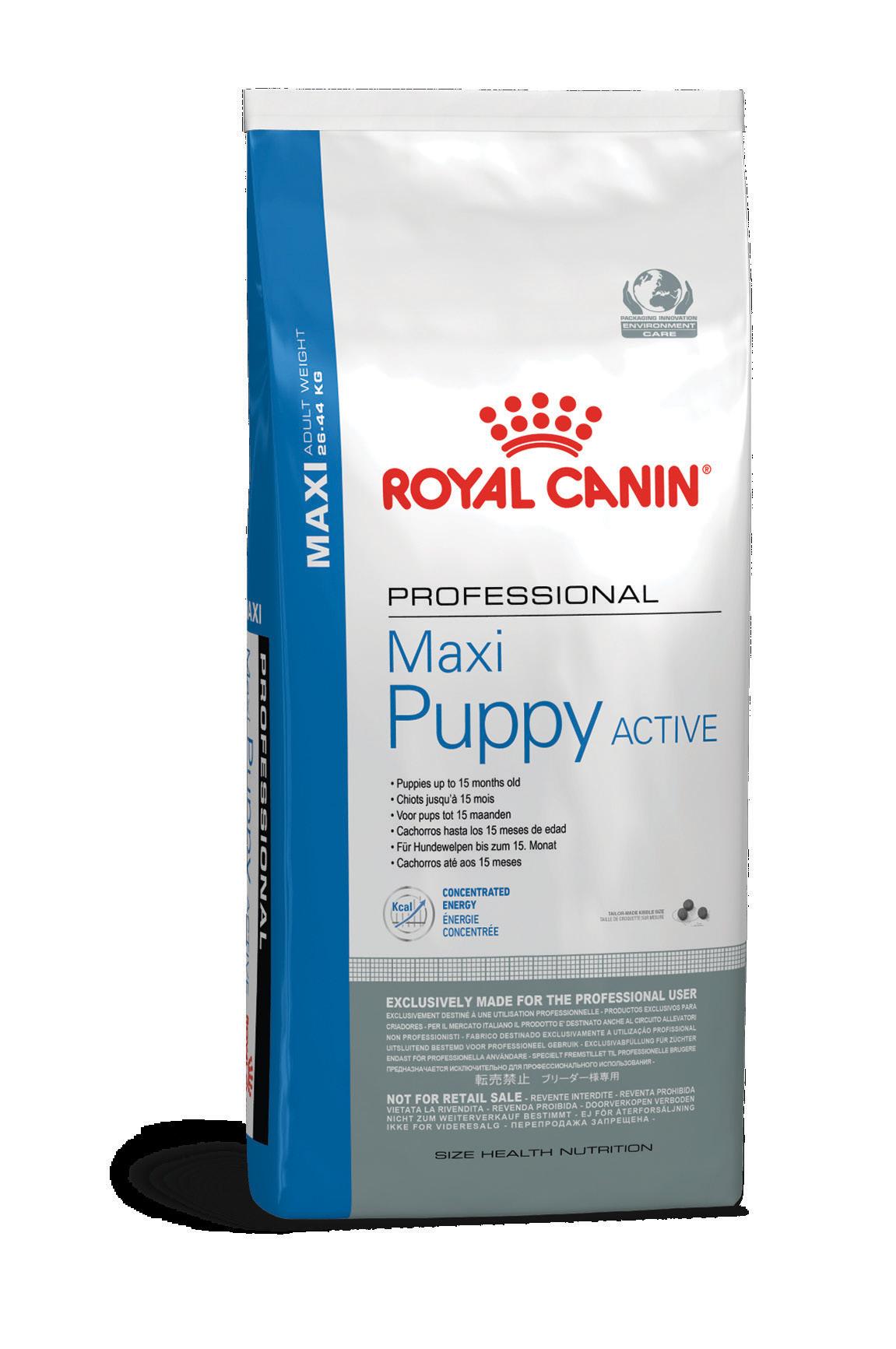
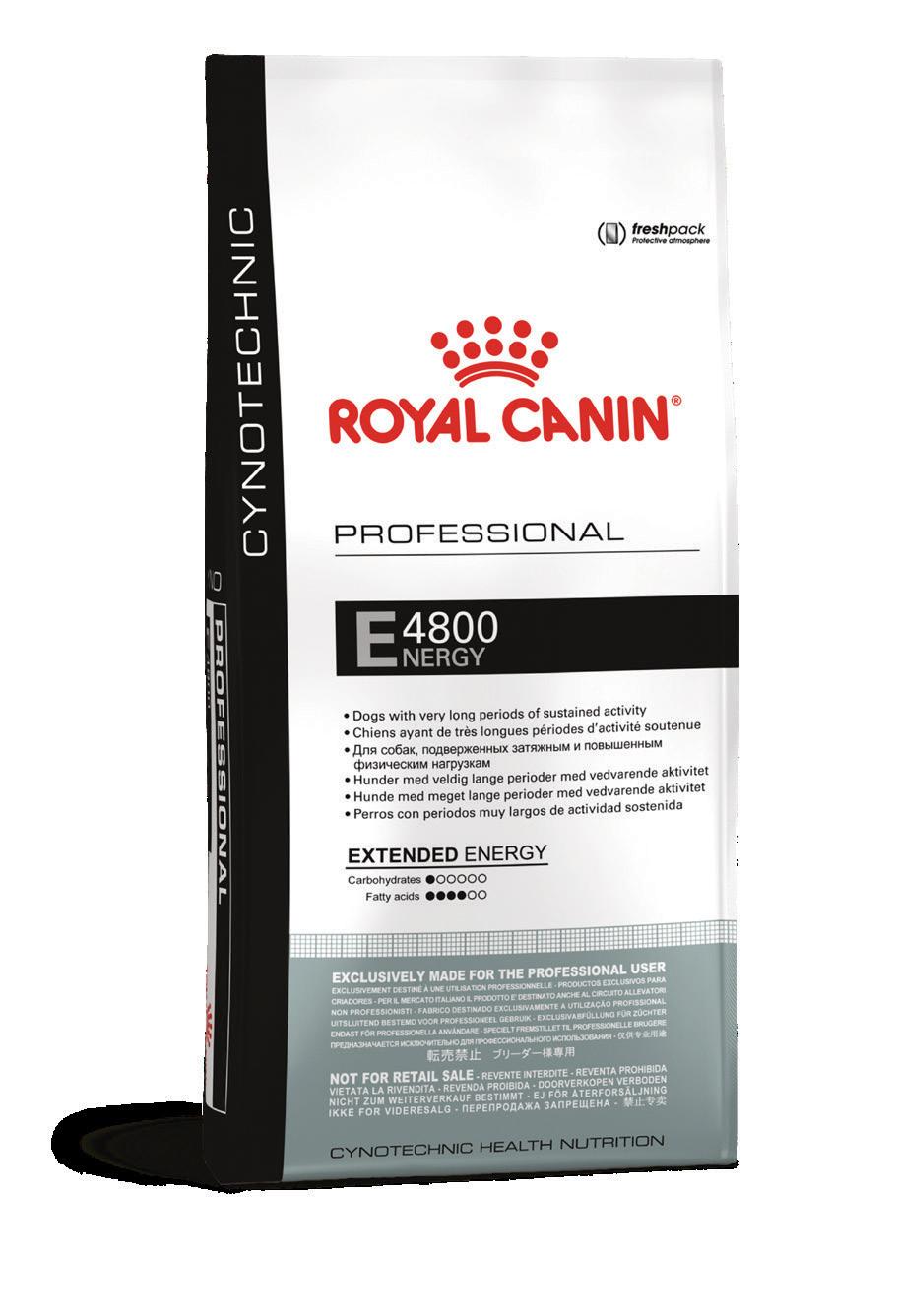
14 Country-Wide | APRIL 2023 DONATED FOR EVERY BAG* *For every specially marked Royal Canin® Energy 4800 20kg, Maxi Puppy Active 20kg and Medium Puppy 16kg bag sold at a participating veterinary clinic in New Zealand between 1 April 2023 and 31 May 2023, Royal Canin Australia Pty Ltd will donate NZ$1 to the Will To Live Charitable Trust New Zealand (CC57571), up to a maximum donation of NZ$10,000. Full terms and conditions are available at https://www.royalcanin.com/nz/competition-terms To find out more visit: facebook.com/willtolivenz ROYAL CANIN® ENERGY 4800 20KG, MAXI PUPPY ACTIVE 20KG & MEDIUM PUPPY 16KG. SPEAKING UP FOR RURAL MENTAL HEALTH INSPIRE, SUPPORT AND BOOST POSITIVE WELLBEING AND MENTAL HEALTH IN HARD WORKING RURAL NEW ZEALANDERS.
Micha Johansen took precautions as the Tukituki River spilled across the paddocks.

dotted about the district, but impressive all the same. The floods weren’t all bad. What they did achieve was a great sense of community, not only locally, but nationally. Seeing so many people come together to help each other out was amazing. People just getting stuck in and helping out wherever they could, and however they could, volunteering their services and simply being the good ol’ genuine Kiwis of, what often feels like, days gone by.
AS EVERYONE ALREADY knows, things got pretty wet in the middle of February. My parents and I stood in the dining room in Central Hawke’s Bay and watched as the Tukituki River began ‘breaching’ the stopbank via gaps designed specifically for this reason.
Despite what certain political parties and activist groups might try to lead us to believe, New Zealand has had floods and other extreme weather events before, and our very sensible forefathers used their common sense when designing stopbanks. This means that when the Tukituki floods, it spills out over farmland to the north, rather than flood the town on the rivers south. Pretty damn clever were our predecessors.
Shortly after the river began to flow over the stopbank, I thought I’d better hightail it over the back paddock, to turn the power off to the pump. By the time I got to the pump, water was well over knee height.
At the height of the flood, it would have been well over my head, which was nothing compared to how the high water got to in some of the tight valleys
The truckloads of goods, notably stock feed and generators, demonstrated the love and care from the entire nation, which warmed many a person's soul, on what was for some, absolute destruction of lives and properties.
Stories abounded at work. One lost a nephew, another one’s mother could not swim, yet dogpaddled through floodwater to the neighbours for help. Many others had floodwaters and silt throughout their homes. And a guy I know who was married on February 11 essentially got to spend his honeymoon in a flat with his 19-year-old daughter and her flatmates, which I thought was pretty damned funny.
“The truckloads of goods, notably stock feed and generators, demonstrated the love and care from the entire nation.”
NOT QUITE HUMANS

Unfortunately in times of crisis, a certain echelon of “not quite humans” decide to take advantage of people experiencing an incredibly stressful time in their lives. Looting, stealing and destroying whatever might be left. The reaction of PM Hipkins and his ilk describing the criminal happenings as “scaremongering” by right-wing politicians was an

added kick in the guts the citizens did not need and left a lot feeling very vulnerable, dismissed and unheard.
Many residents were left with no option other than to set up their own checkpoints and patrols, which they manned after spending a large chunk of their day shifting silt and moving general debris. They certainly weren’t set up because of scaremongering; they were set up because shit was happening.
Back on farm at Eke, everything is trucking along the same. I’ve recently connected with Rookie Bull Rider of the Year, Koby Parsons. That’s rekindled my inner cowgirl, and I wonder if at 51 I could start a barrel-racing career.
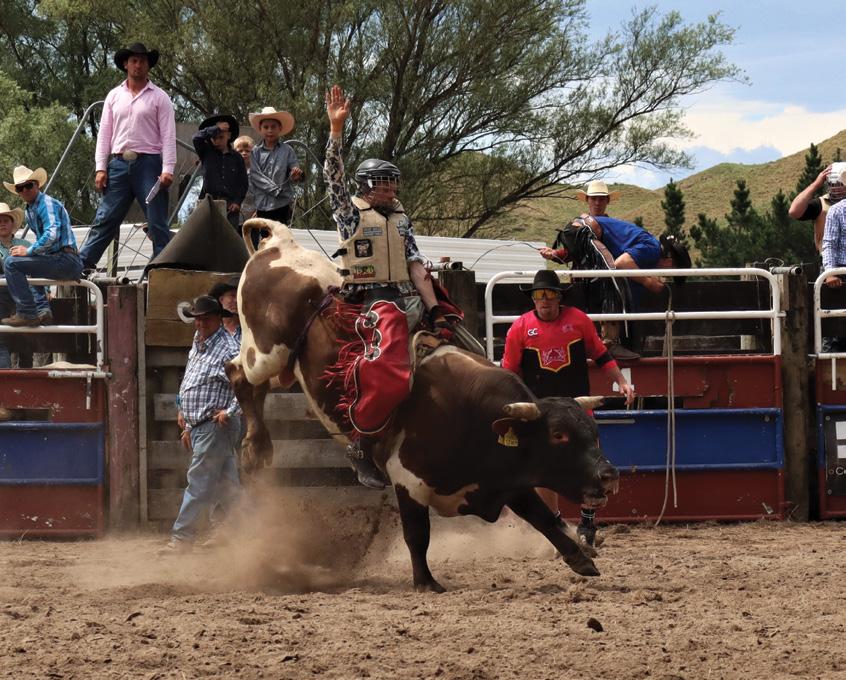
Meanwhile our cows are now nicely pregnant and with an empty rate of under 10%, which is great. Unfortunately with going into autumn, nicely pregnant cows become very slow, sleepy, meandering cows. Most are generally still fast asleep when we go to fetch them in the morning, then the walk to the cowshed, up through to be milked and then leaving the cowshed is done at a maddeningly slow pace.
Lucky for them they have big, old, doe eyes and long fluttering eyelashes. And we only have to do it once a day!
Country-Wide | APRIL 2023 15 HOME BLOCK
Wet, but not all bad
Eketahuna
 Wayne and Julia Dohmen’s flood damaged home at Puketapu, Hawke’s Bay.
Photo: John Cowpland.
Wayne and Julia Dohmen’s flood damaged home at Puketapu, Hawke’s Bay.
Photo: John Cowpland.
After a flood
Country-Wide investigates the devastation caused by Cyclone Gabrielle that wreaked havoc on farms from Northland to Tararua. The lessons learned from it, other floods, and options for farmers.

Picking up the pieces
Less bureaucracy, better co-ordination and easily accessible information systems are farmers’ top wishes as they clear up after Cyclone
Cyclone Gabrielle was such a large-scale event, it forced industry bodies to work together, along with rural servicing companies, says Wayne Langford, Federated Farmers’ national vicepresident and adverse events policy spokesman.
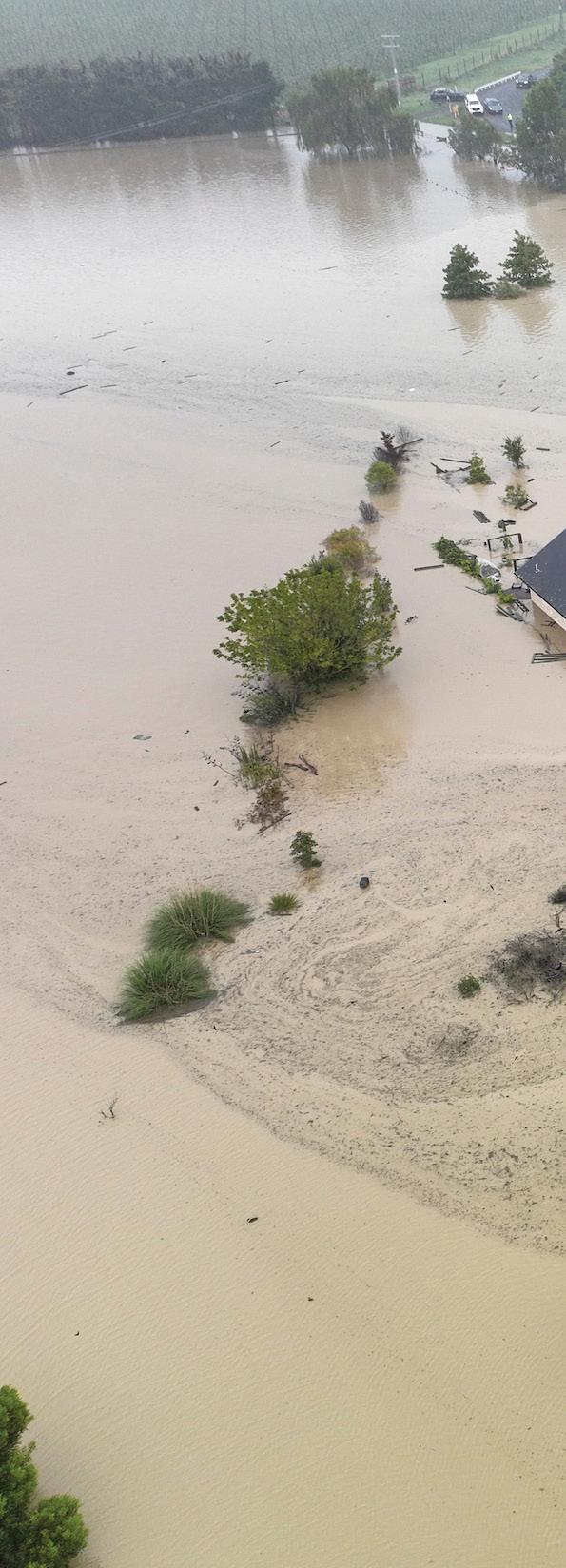
“There was damage from Northland through to Manawatu and Tararua. Some valleys were absolutely steamrolled and others not affected.”
With cellphone, landline and internet coverage knocked out, different data and contact lists were compared and crossreferenced, then satellite phones were sent out to isolated areas. Communities banded together so there was one point of contact and big areas could be checked off.
The focus could then go on immediate needs and getting supplies to farmers where roads had been washed out. But there were delays in assessing damage on some farms, slowing the move to the recovery phase. Langford says an appropriately sourced and easily rolled out structure should be set up so all damage can be assessed under similar criteria.
The Ministry for Primary Industries’ feed co-ordination service quickly received pledges of 60,000 bales of hay, several hundred tonnes of maize and
4000 hectares of grazing. But Langford says with a lot of people wanting to help, some were perhaps unaware of what was available.
“People took it upon themselves to deliver feed supplies. But then where did they unload it? That caused a few issues.”
It was also important not to forget the stress affected farmers were going through, with more to come during the rebuild.
Some have seen a lifetime of work washed away overnight.”
Communication frustrations
Hawke’s Bay Federated Farmers’ president Jim Galloway says there’s “huge frustration” at continued road closures, sometimes announced at very short notice and with little in the way of timeframes.
“The roads are still a mess. Farmers can’t get themselves on and off their properties, or their stock.”
In one case there was a plan to use a stock crate mounted on an old trailer to be towed across a river by tractor to move stock.
“But then you need yards on either side. It’s not a simple process.”
One of the best things about the cyclone response was the helicopter and light plane pilots, only some of whom were paid, flying in supplies to farms that were cut off. While Hawke’s Bay
Regional Council had 100 crews working on restoring road access, some farmers were still reliant on these air services. But on the negative side an initial lack of co-ordination delayed getting communication systems up and running again. A lack of information from the National Emergency Management Agency over the radio, which farmers
18 Country-Wide | APRIL 2023
AFTER A FLOOD
“Everyone was rushing around blind like bluearsed blowflies.”
Gabrielle. By Glenys Christian.
were reliant on, was made worse by referrals to its website that they couldn’t access.
Federated Farmers’ meat and wool chairman Toby Williams farms at Whangara, north of Gisborne. He found UHF radio worked well and one of his tenants had a Starlink satellite phone in their house. But as recovery got
underway the lack of up-to-date data and access to it was exposed. In one case, a helicopter dropped off supplies to last three days for eight families in a remote area when there were 12 families waiting.
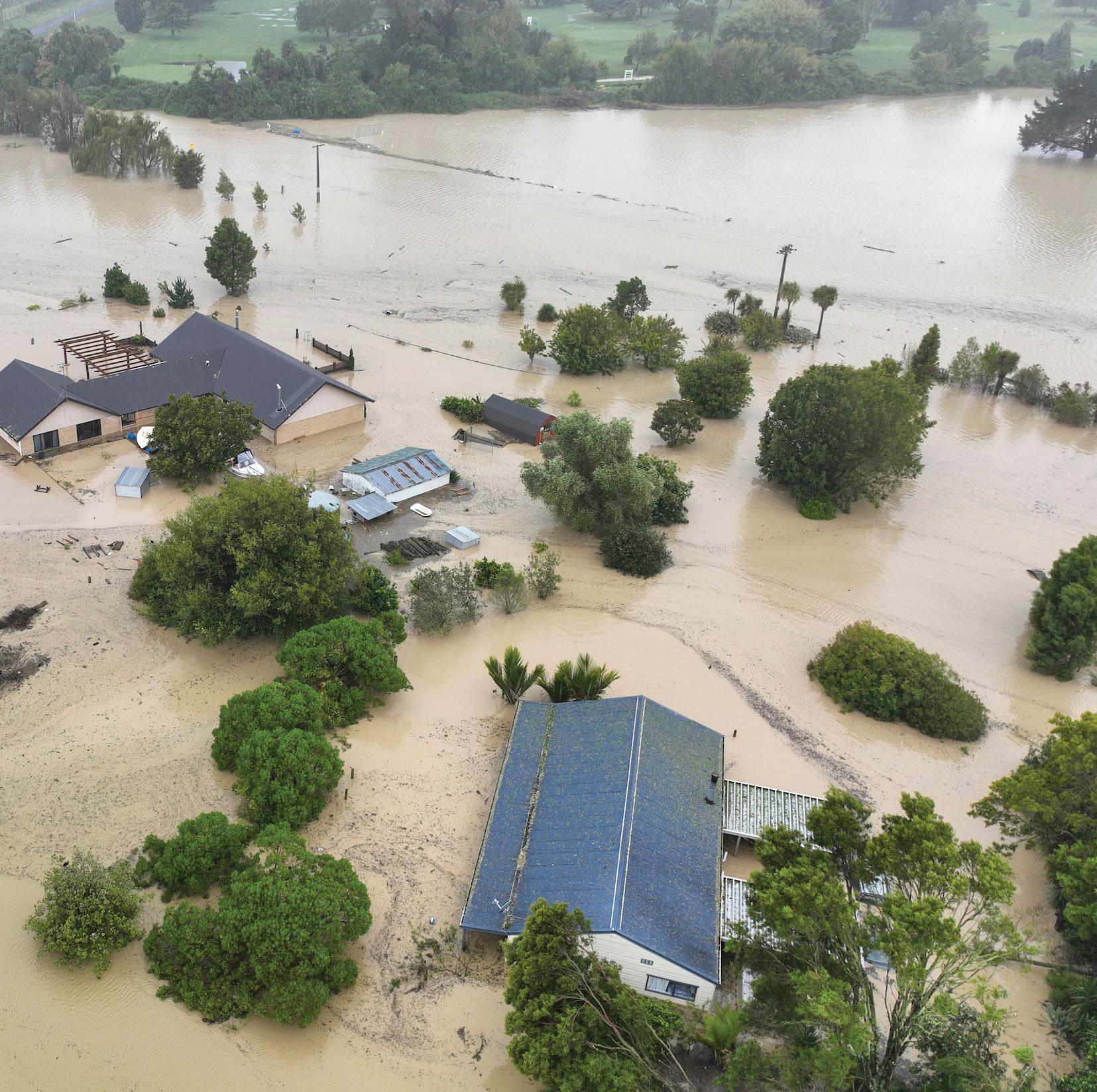
“There was no adequate mapping of rural properties and where people lived and how many,” Williams says.
“Everyone was rushing around blind like blue-arsed blowflies.”
Planning for more
Williams would like to see the creation of a database of rural community details that could be used in an emergency without worrying about the usual privacy considerations.
Country-Wide | APRIL 2023 19
Flooding in Awatoto, near Napier. Photos by John Cowpland.
Salmonella is widespread on New Zealand farms and cases have increased nationwide1. Striking without warning and spreading quickly, Salmonella can pass from your stock to the ones you care about most.
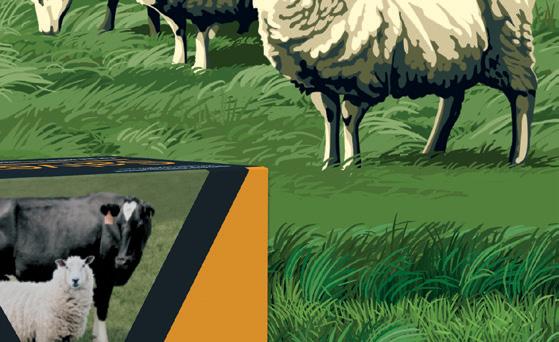
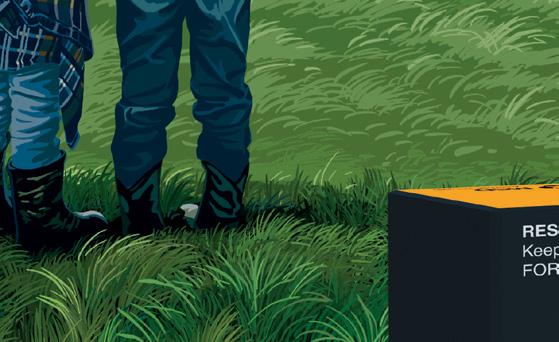
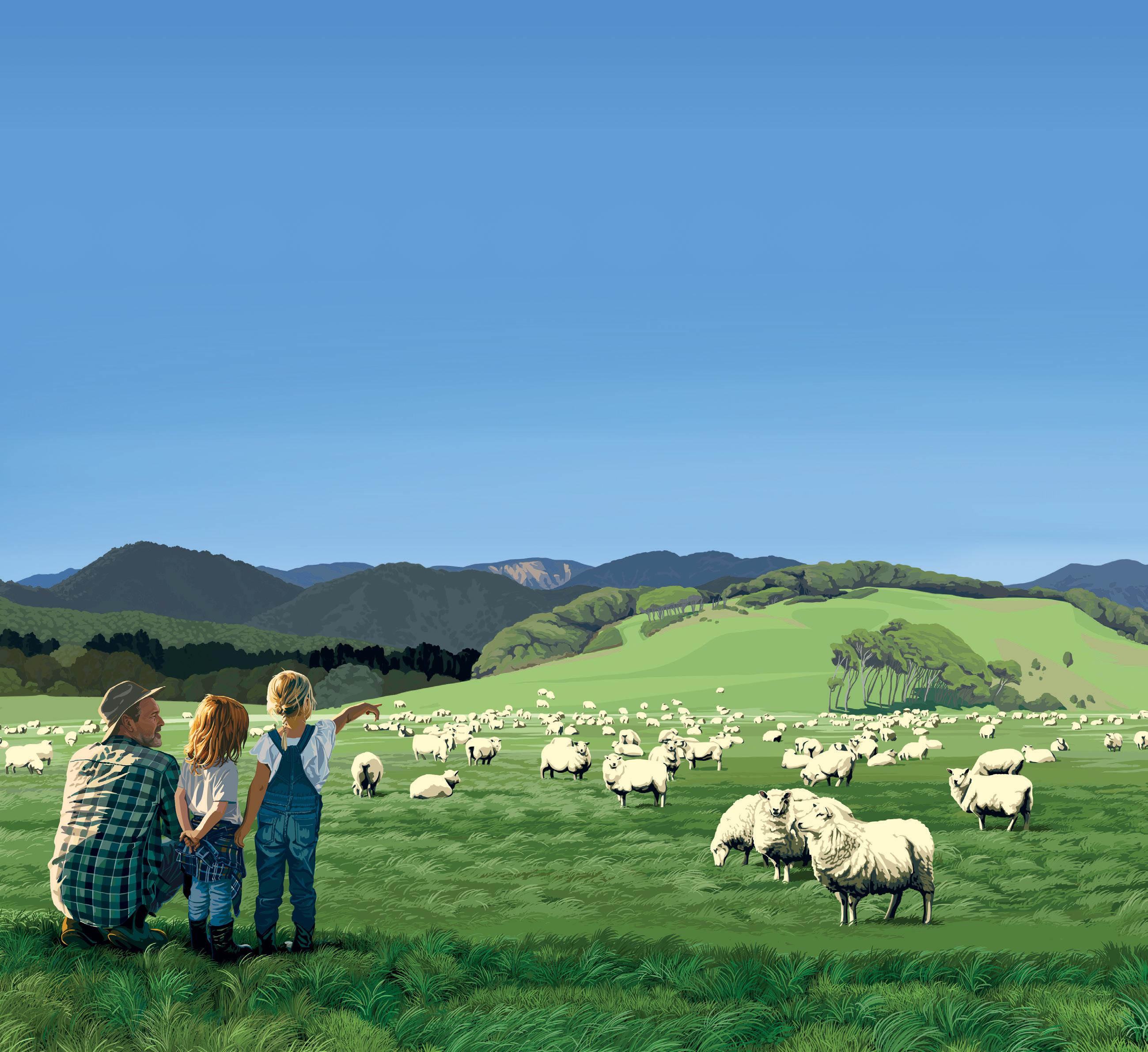
Vaccinate today to reduce the destructive impact of an outbreak*. SALVEXIN®+B

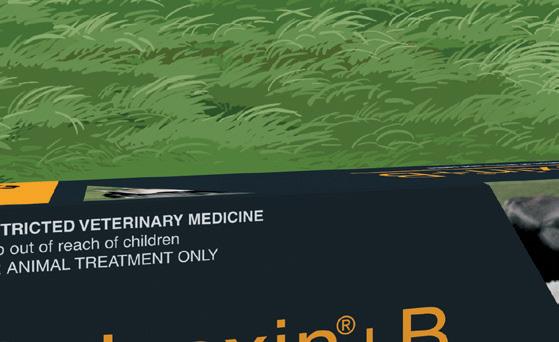



20 Country-Wide | APRIL 2023 AVAILABLE ONLY UNDER VETERINARY AUTHORISATION. ACVM No: A7886. Schering-Plough Animal Health Ltd. Ph: 0800 800 543. www.msd-animal-health.co.nz NZ-SAL-221000002 ©2023 Merck & Co., Inc., Rahway, NJ, USA and its affiliates. All Rights Reserved. *Salvexin+B should be used in conjunction with other management practices to help control the risk of Salmonella. 1. Surveillance. Vols 41-47, No. 3, September 2014-2022
NEW ZEALAND’S ONLY SALMONELLA VACCINE FOR SHEEP AND CATTLE
VAXIPACK® RECYCLING LEARN MORE
Salmonellosis is over 2.5 times more prevalent than in 20131
“The person at the bottom needs to be focused on first.”
Farmers were frustrated with bureaucracy as there seemed to be a lot of egos at play and patch protection, meaning some responses had been “higgledy-piggledy”.
Farmers’ biggest issues now were cash flow and access, as they needed to move stock off farm rapidly.
“Going into autumn the grass that’s being banked up for winter is being eaten,” Williams says.
Farmers hoped that cattle would be able to be driven again and held in temporary yards with the Ministry for the Environment turning a blind eye to their crossing waterways. Animal health problems such as fly strike, high worm burdens and potentially facial eczema were of concern.
Insurance companies were processing claims quickly and fencing repair payments of up to $20,000 for each farm were being paid out from Government emergency funding. While that would cover replacement of one kilometre of eight-wire fence, many farms had lost tens of kilometres with some resembling one big paddock. Fencing costs, which had already ballooned, were likely to increase even further as repair work got underway.
“The adrenaline has worn off and we want to go back to normal but that’s about two to three years away,” Williams says.
Communication was the biggest issue for northern sheep and beef farmers with most very grateful for an initial check to see they were alright.
“But then they felt left in the lurch because we didn’t set expectations,” Northland Federated Farmers’ president Colin Hannah says.
Patchy internet coverage caused frustration once it was restored, but some of that could have been due to the move from 4G to 5G.
“But I know of at least five cellphone towers where generators were stolen and high winds also took out feeder lines.”
Labour shortages
While power companies had worked quickly to restore connections to farmers’ gates, there was a region-wide shortage of electricians to make repairs on farms.
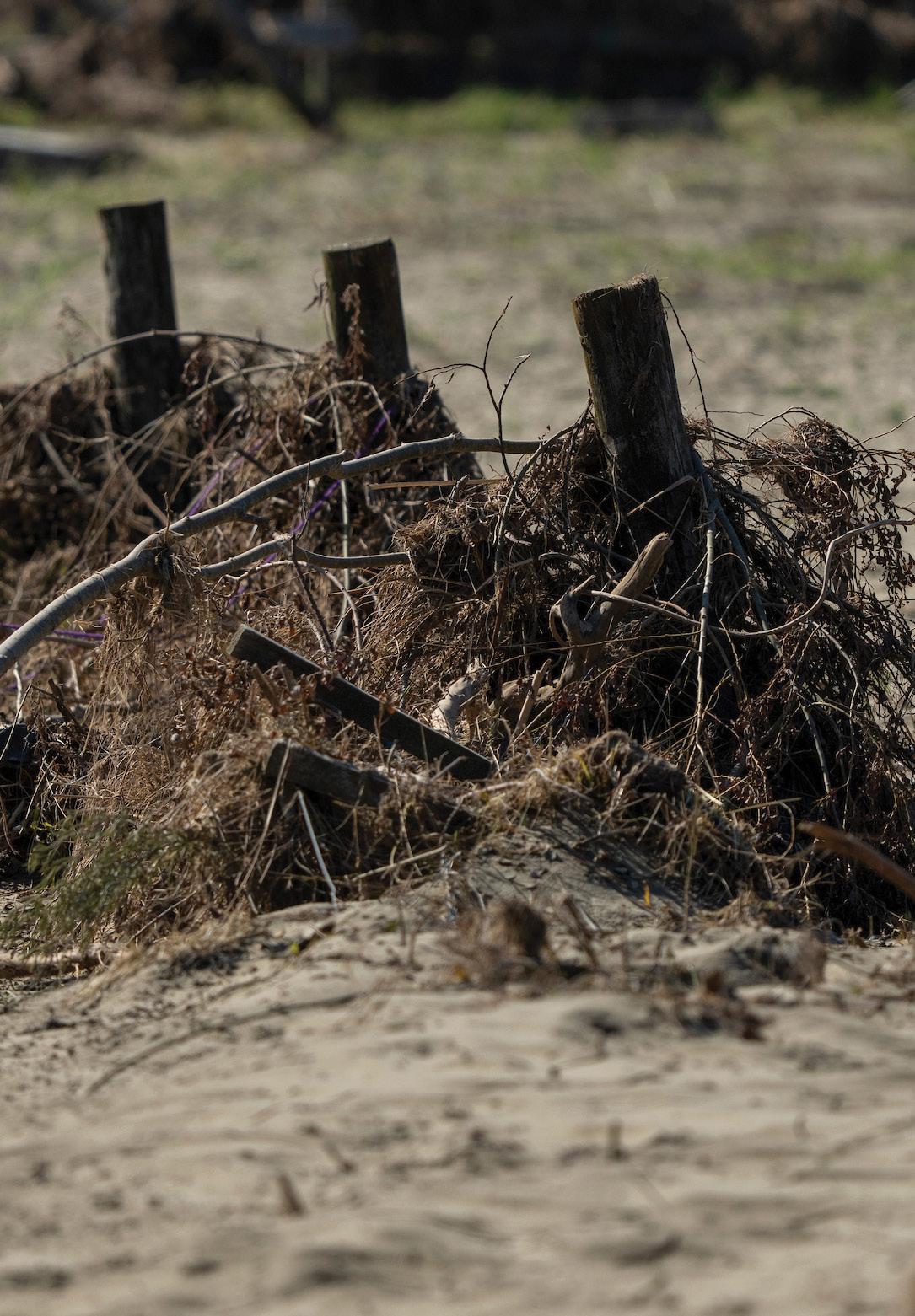
“And farmers will have to wait weeks for certified engineers to check farm bridges – there just aren’t enough,” Hannah says.
There was plenty of feed onfarm due to wet weather since the middle of last
year and processors had more problems with flooding and power outages at their plants than with farmers being unable to send stock to them.
Silt couldn’t be moved from paddocks until the ground dried out, meaning a shortage of diggers and digger operators was looming.
But Hannah says he was surprised at the positivity of many farmers attending the Northland Field Days at the start of March.
“Their attitude seemed to be that Government legislation was more damaging than Gabrielle.”
Country-Wide | APRIL 2023 21
AFTER A FLOOD
Fencing repair payments of up to $20,000 for each farm were being paid out.
Dealing with damaged pastures
Soil scientist Dr Jeff Morton says silt is farmers’ new soil and he recommends it is oversown and fertilised as soon as possible while autumn soil temperatures are still high.
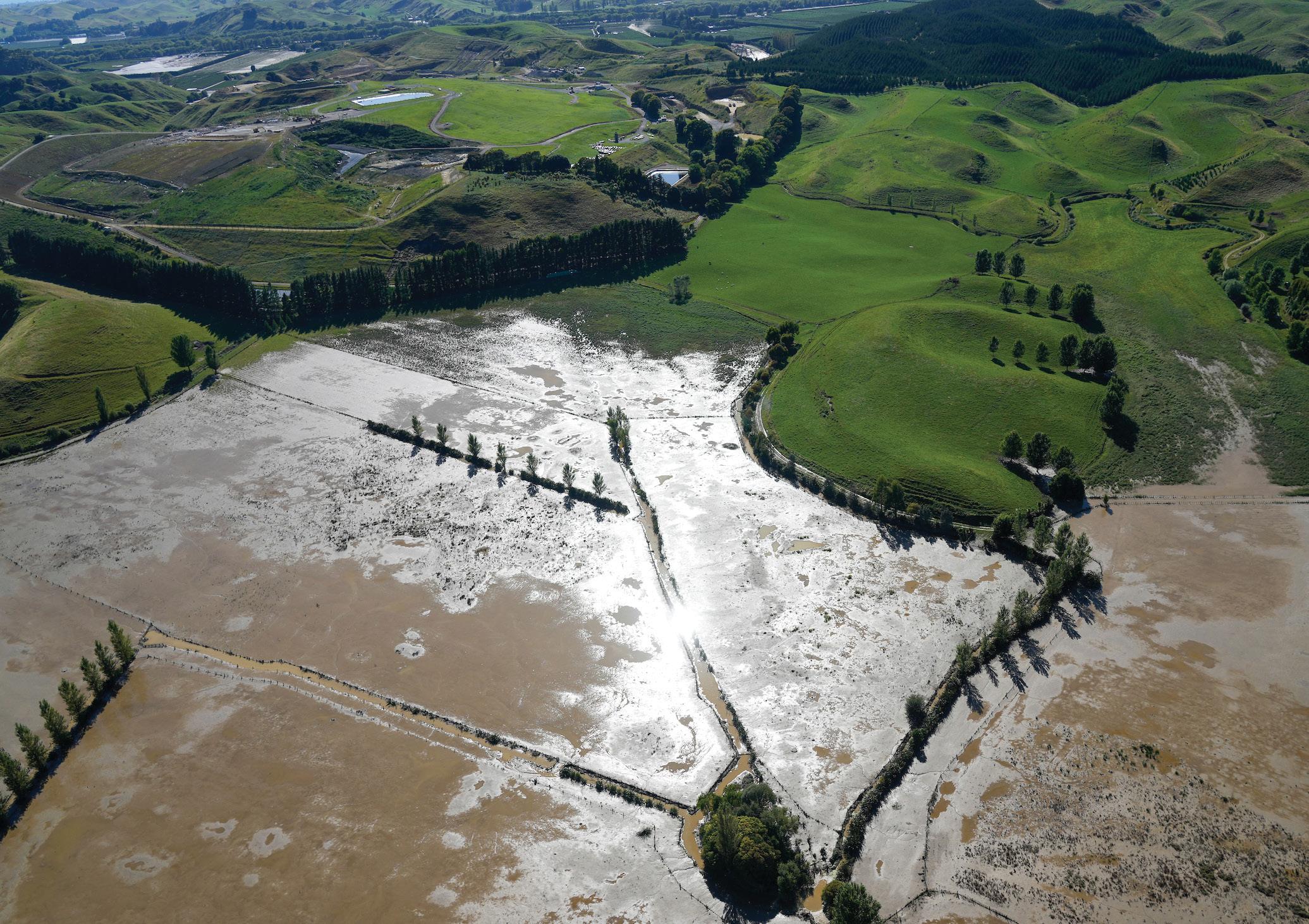
He says if dealing with a thin layer of silt, it should be lightly cultivated and sown with a pasture mix. Applying DAP at or post-establishment will give the pasture a boost.
He says in his experience, silt is often rich in sulphur with a high pH, but ideally a soil test should be taken to determine the nutrient status of the silt.
“Get in quickly while temperatures are still reasonably high.”
Once the pasture is established, it is important not to over-graze it or graze
it over winter because it will pug easily. Silt has no structure and unfortunately it will take years to build.
“It will take a while to get back to where you were before in terms of structure and moisture-holding capacity.”
Lincoln University-based plant scientist Professor Derrick Moot also recommends farmers dealing with siltdamaged pastures get a soil test taken so they know what they’re dealing with.
He says it’s possible that the nutrient status (phosphate levels) of the silt will be high if it came off pasture areas of hill country, but low if it came off forestry blocks.
He says the decision about what to
plant depends on feed requirements. An annual ryegrass would be an option for fast-growing winter feed crops, but additional seed and resowing areas of flood damaged winter crops should be fine, provided the soil is still there and fertility is high.
“Some DAP down the spout could be useful if fertility is low.”
SLIPS: Dr Morton says there are two parts to the slip: the slip scar and the slip debris.
They should both be oversown as soon as possible and he suggests a helicopter might be the best tool for the job as it can apply seed to a localised area.
22 Country-Wide | APRIL 2023
AFTER A FLOOD
Time is of the essence for farmers dealing with slips and silt-damaged pastures in the wake of recent cyclones and ongoing wet weather. By Sandra Taylor.
Silt cultivation is recommended to combine topsoil and silt if possible.
Photos by John Cowpland.
He says this should tie in with autumn fertiliser applications, giving the damaged area a boost of sulphur and phosphorus.
Dr Morton recommends sowing the damaged pasture with white clover and cocksfoot. The former being the legume for fixing nitrogen and the latter being a larger and hardier seed and subsequent pasture species.
“This seems to be the ideal mix.”
He says slips can often appear worse than they actually are, but he urges farmers to get on with the job of resowing the area while there is still a window of opportunity in autumn.
This might be a job for a contractor, given farmers in storm-affected areas will be swamped with urgent repair work.
CULTIVATING AND SOWING IN SILT
:
According to information in Beef + Lamb New Zealand’s flood recovery information, if silt has completely covered pasture it will not survive and will need to be re-grassed. Because silt is typically relatively infertile with no organic matter or nitrogen and poor soil structure, cultivation is recommended to combine topsoil and silt if possible.
SEDIMENT 10–25CM: Where sediment is between 10–25cm in depth, levelling will help achieve a consistent depth of silt across the paddock and once the silt has dried, heavy machinery such as a swamp plough can be used to mix the silt and topsoil.
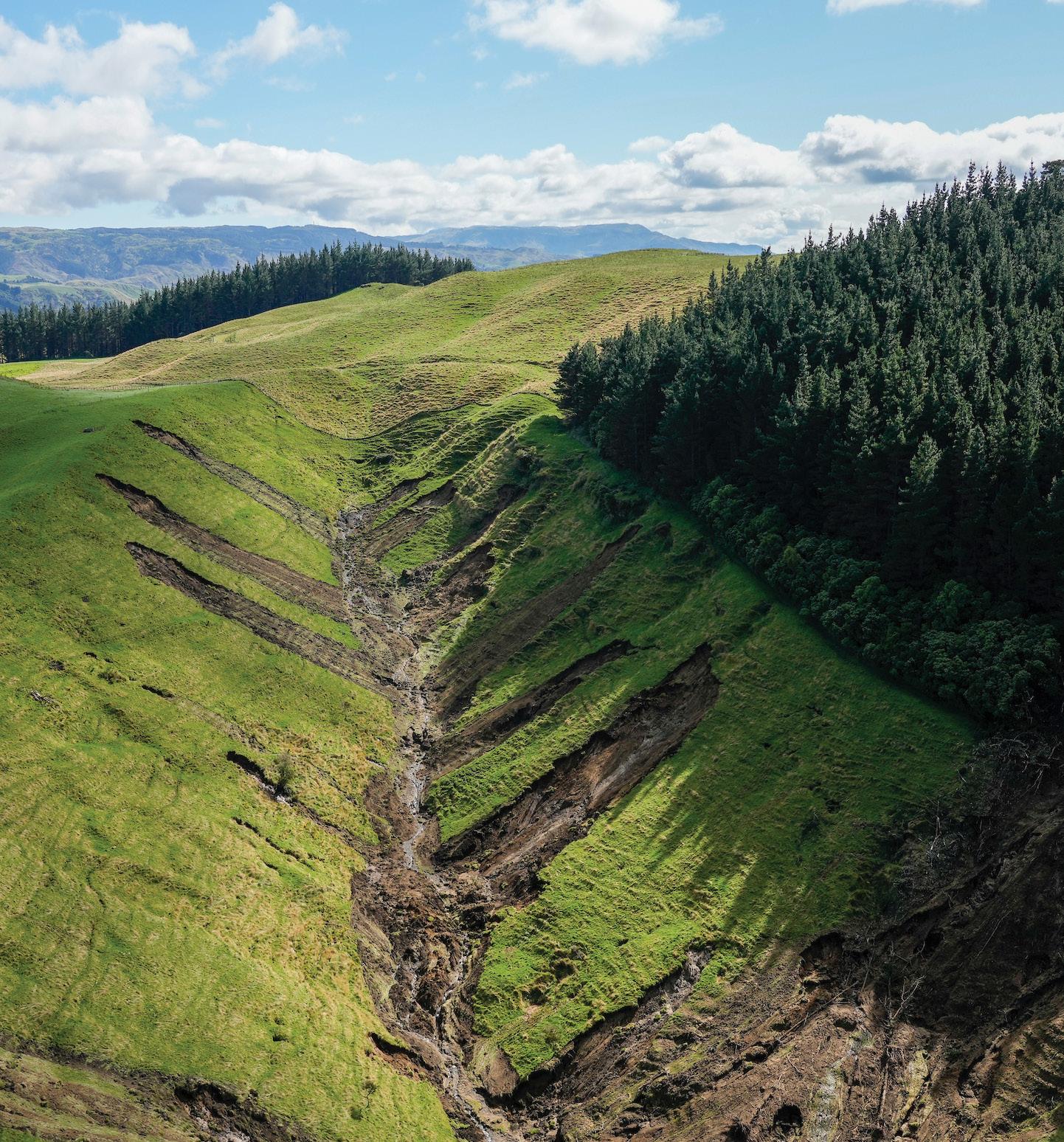
It can then be cultivated as normal.
If the resulting soil is predominantly silt, then short-term ryegrasses, forage oats or other deep-rooted short-term crops are recommended before returning the paddock to permanent pasture.
SEDIMENT OVER 25CM: Where flood sediment is over 25cm, then the paddock can either be oversown with a helicopter or the silt cultivated and drilled. In either case, the paddock will probably need to be recultivated the following spring or autumn due to poor soil structure.
If cultivating deep silt, the silt should
be left to dry sufficiently before light machinery is used to break up the surface before drilling either forage oats or a short-term ryegrass and harrowing.
After grazing the oats over winter, the oats can be mulched to help build organic matter or made into silage.
OVERSOWING: Oversowing with a short-term ryegrass is an option for clay/ silt loams and can be done when the soil is still damp and sticky. Once the silt has caked and cracked it is too late for oversowing.
It is a riskier option than cultivation or direct drilling, so a higher-thannormal seeding rate will be required and it’s important to only use coated seed.
If the silt is too wet, the seed will rot and if it’s too dry then the surface of the silt will cake and crack and seedings struggle to grow primary roots.
Stocking of newly sown areas should begin as soon as possible without pugging. If feasible, mulching before re-grassing is a good option to help build up organic matter.
Farmer case study
In May 2021, floodwaters from the nearby Ashburton River swept across Chris and Anne-Marie Allen’s farm at Methven, destroying fencing, pastures, winter feed crops and irrigation infrastructure.
The water brought with it tonnes of sediment – a material the couple had never had to deal with before.
CARRY OUT A SOIL TEST: Unsure of its nutrient status, they sought advice from Ravensdown’s chief scientific officer, Dr Ants Roberts. He told them that while the sediment probably had limited nutrient value and was likely to be pH neutral, the only way to find out for sure was to do a soil test, which is what they did.
Chris suggests farmers in a similar situation work in with neighbours to test the nutrient status of the sediment or silt, as everyone will be dealing with the same material.
On paddocks where the sediment was less than 15cm deep, Chris says it was business as usual with cultivating and
Country-Wide | APRIL 2023 23
Dr Morton says the slip scar and slip debris should both be oversown as soon as possible.
resowing, as the original fertility mixed with the sediment and the paddocks are now pretty much back to normal.
WORK WITH NATURE: Chris advises farmers to work with nature when dealing with flood damaged paddocks, rather than trying to pick up every last stick or piece of debris from every paddock. He says the sticks and debris will rot and break down over time.
The couple sowed oats undersown with short term ryegrass into some of their flood-damaged paddocks. This worked well and was used for silage. This crop has been followed by an oats, red clover and white clover mix, also for silage as well as lamb finishing.
BE PATIENT: Some paddocks Chris and Anne-Marie thought were a write-off have come away surprisingly well and two years on they are getting some good grazing out of them. They will need regrassing at some stage, but they are still producing feed and while they are a bit
bumpy to drive over due to the uneven distribution of sediment, Chris says they are still growing grass.
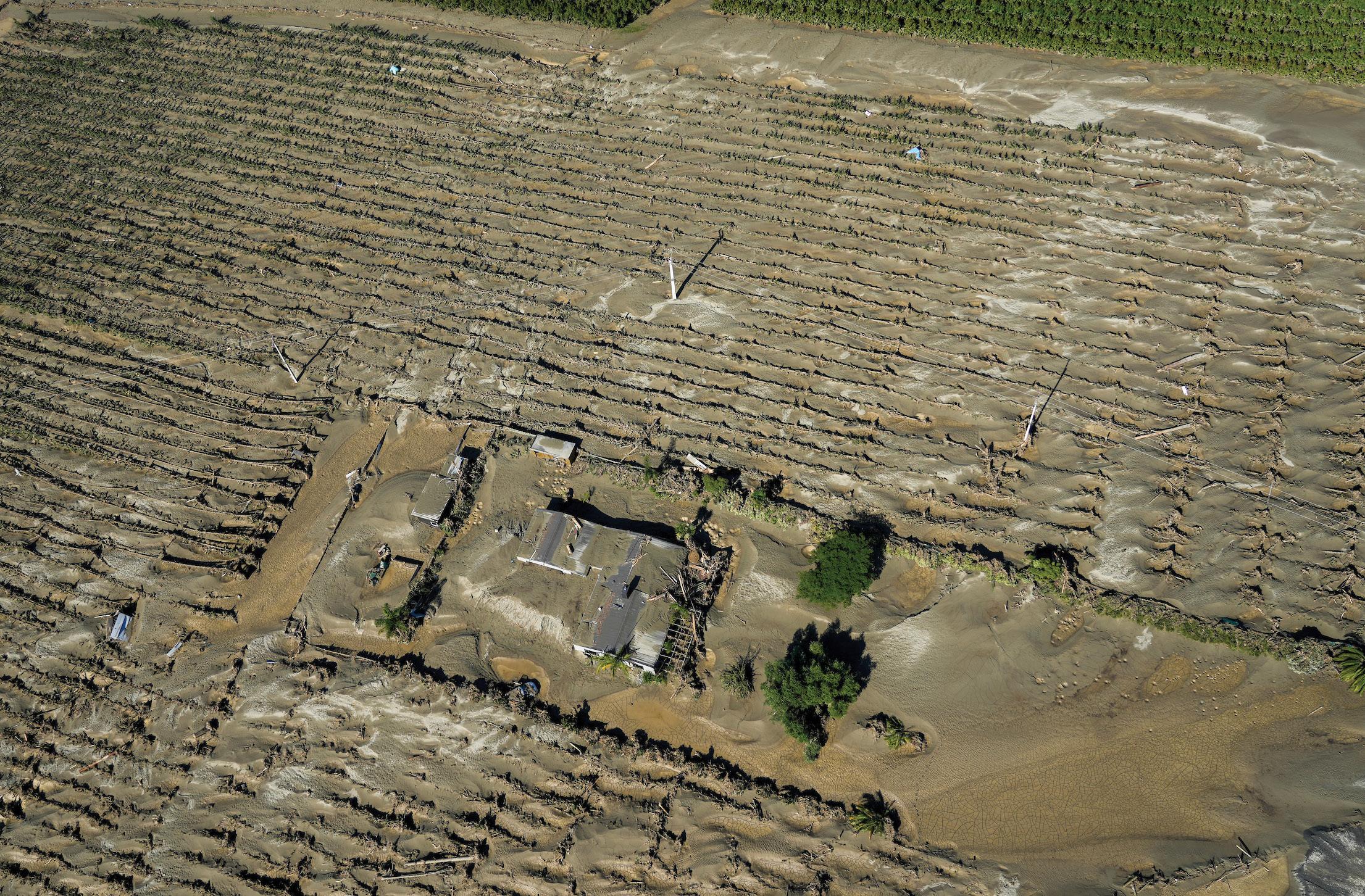
One lucerne paddock, which was covered in thick sediment over 100mm, has come back better than ever and while it’s full of weeds carried down in the flood water, it is still growing good quality lucerne. They will renew the stand and deal with the weeds in a year or two.
PRIORITISE WHERE YOU SPEND YOUR MONEY: “You can’t fix everything at once.” Chris suggests working out which paddocks are still producing some drymatter and which are completely unproductive and prioritising those.
Prioritise where you will get the best bang for your buck, he says.
“Work out what will make the biggest difference in terms of production and focus on those.
“It will then take the pressure off the rest of the farm.”
MAKE USE OF VOLUNTEERS: Volunteer labour helped make what Chris describes as fast visual progress. Their work included clearing access, repairing stock water and putting up temporary fencing.
“After three months we were 60% of the way there and at six months we were 90% of the way there; now we’re just finishing it off.”
WEEDS: Weeds in the sediment brought down by floodwaters have been a problem and Chris and Anne-Marie are working to ensure they keep on top of them before they become established and a long-term issue.
KEEP A RECORD: Chris suggests writing a list of paddocks that need attention and using a highlighter on a farm map to record where the water flowed.
“In a few months and years you’ll look back and see how the list has shrunk.
“Seeing the list shrink is great for the mind. Progress is the best healer.”
24 Country-Wide | APRIL 2023
Damage in Esk Valley north of Napier.
Pasture survival poor after three days
BY: JOANNA GRIGG
Farmers with flood-affected flats may find LandWISE’s website resource ‘Soil Repair After Cyclone Gabrielle’ helpful for those special flat-land powerhouses.
LandWISE consultant Dan Bloomer, based in Hawke’s Bay said Beef + Lamb NZ had some great flow charts for hill country information on slips. For orchards go to a horticulture sector body.
Bloomer said the resources on LandWISE’s website are directed at flatland areas and draw on robust science. This includes the Department of Agriculture’s 1950’s scientific studies on revegetating flood deposits post 1948 and 1950, and university and Crown Research Institutes’ studies following the 2004 lower North Island weather event. This was the last study done on flooded pasture.
“After the cyclone, we put all the resources up on our LandWISE website and this was quickly added to and peer reviewed by scientists, all in their own time.”
Bloomer said the three-page revegetating cropping soils chart that “everyone is using” was based on work by AgResearch, and Ravensdown added a flow diagram. This is on the website alongside at least 10 other reports, radio interviews and technical documents for rural professionals. These include a 30-page report on silt recovery after the southern North Island Storm Event 2004.
The report says about 80% of the time the resident pasture died after flooding (see Figure 1). High rates of survival only occurred when paddocks were under water for less than three days and under shallow silt. Research has found that recently-grazed pasture plants are more prone to silt and flooding damage than those with some regrowth on them. Pastures with leaf tips above water will survive. Subtropical grasses like paspalum will survive better than temperate grasses. The grasses best suited to withstand deep siltation have rhizomatous spreading habits, couch and browntop. Creeping buttercup also tends to survive longer. Perennial ryegrass will only survive about a week, cocksfoot a few days longer, and tall fescue and Timothy longer yet. Anecdotal evidence also suggests that Timothy and fescue do well on sandy silts in local accretion areas.
Flooding effects on pastures are worse when:
It occurs when soil temperatures are warm
A pasture has been hard grazed
Flooding is prolonged
Pastures are covered by at least 5mm of silt.
In terms of understanding silt fertility post Cyclone Gabrielle, Bloomer said soil testing is already underway. But each catchment is so diverse that sediment quality will vary.
Further reading: landwise.org.nz/projects/soil-repair-after-cyclone-gabrielle/
Country-Wide | APRIL 2023 25
Occurence (%) 40 35 30 25 20 15 10 5 0 1-3 3-5 >5 Days under water Grass died Grass lived Occurence (%) 45 40 35 30 25 20 15 10 5 0 0 <5 5-9 10-25 >25 Silt depth (cm)
Figure 1: The effect of days under water and silt depth on survival of resident sward at the time of the flood.
AFTER A FLOOD
Access and fencing top priorities
BY: GLENYS CHRISTIAN
An 80-year-old English poplar fell onto stockyards on the Northland farm of former agriculture minister Sir Lockwood Smith during Cyclone Gabrielle, costing him $20,000 to reinstate. More trees over fence lines saw one of his Belgian Blue bulls get in amongst heifer calves, temporary fencing had to be quickly used to keep pregnant cows away from fallen pines and macrocarpa and onfarm work has been set back by a month.
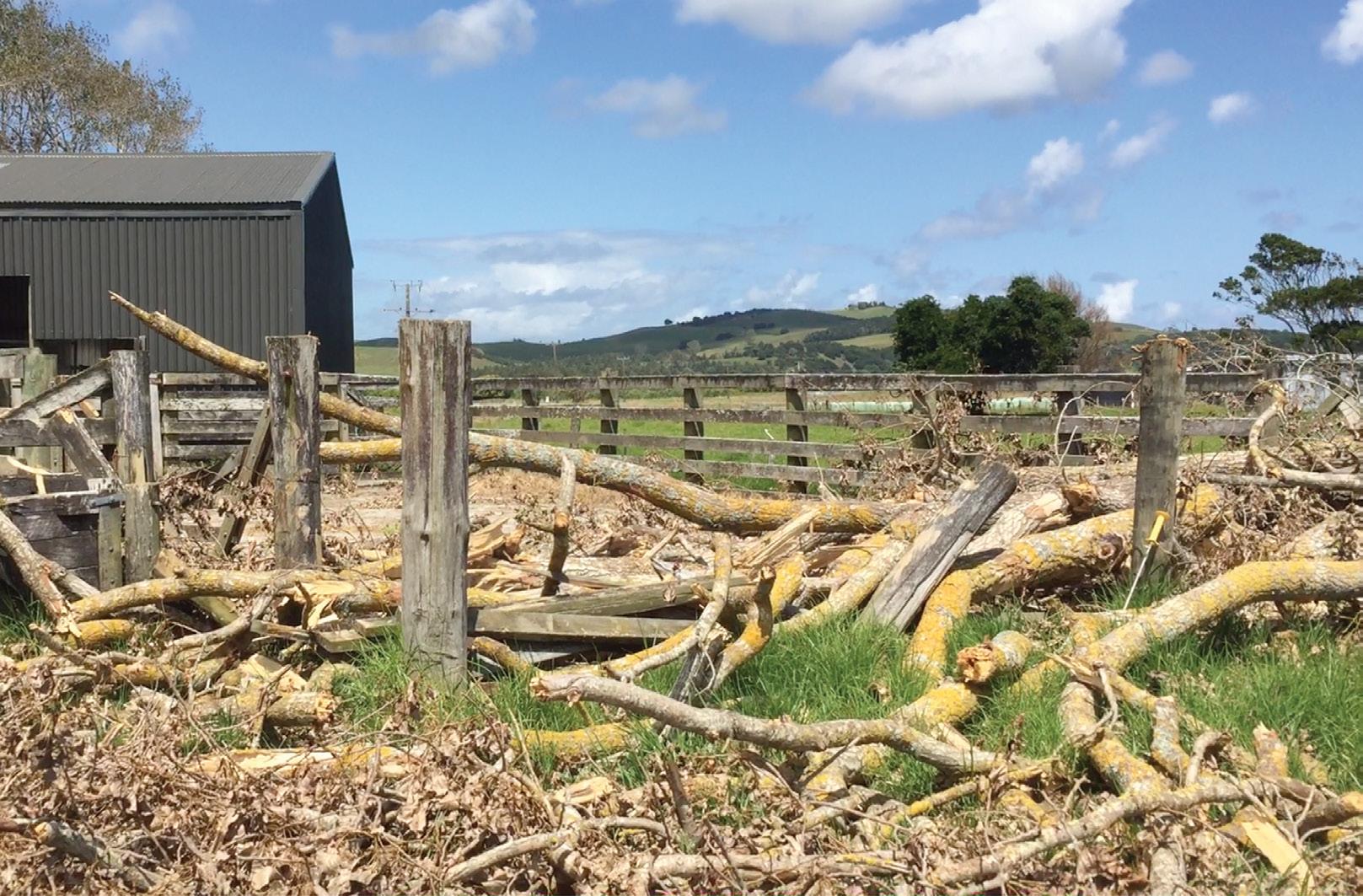
“But that’s nothing compared to Hawke’s Bay and Gisborne farmers,” Smith says.
“It just makes me cry to see what’s happened.”
Smith’s farm overlooks the Ruawai Flats. It had “quite a heavy bout of rain” during Cyclone Hale and came through the early northerly winds of Cyclone Gabrielle well. “But we were warned of the sting in its tail and that’s when the wind did most damage.”
Farm manager Adam Clarke was quickly out clearing away three fallen poplars across his driveway and another blocking nearby State Highway 12. A contractor with a 12-tonne digger dealt with the larger trunks.
While flats were underwater for three days, land on farms to the north was submerged for well over a week, causing pasture damage. Maize silage crops, already struggling through a very wet season, took a beating from the wind.
ASK FOR HELP WHEN YOU’RE READY
ASK FOR HELP when you’ve planned for it is the advice of David Acland. He and wife Kate’s Mt Somers Station was hit with flooding two years ago with the Ashburton River flowing through 120 hectares.
Lucerne was covered by silt and fences, culverts, water systems, tracks and shelterbelts were damaged, together with slips on their higher country.
He says the critical message is to make sure you ask for help when ready.
“But do it so it doesn’t place pressure on you. If people say they will turn up tomorrow you’ll feel you have to work alongside them. But you don’t want people coming and charging around when you’re not ready. Do it within your plan.”
In their case they got together
Smith’s house was without power for less than 24 hours but a neighbour further away from the main road had to use a generator for two weeks.
Smith will be planting more native species in the future, after noting that not a single pohutukawa or totara blew over. However, hybrid poplars will still be used along creeks at risk of erosion because of their strong root systems.
Elsewhere in the country Smith says forestry harvesting needs to be limited,
with their whole farm team and the people they trusted to be part of what they soon realised would be a long-term recovery process. That could include farm advisers, banks and insurance companies – “the people you’re going to do it with”.
“Have your list and work through it because that gives you an idea of the direction..,” he says.
“If you’re under the pump you
26 Country-Wide | APRIL 2023
AFTER A FLOOD
Sir Lockwood Smith’s damaged stockyards in Northland. Photo supplied.
the issue of slash needs to be addressed and river dredging carried out regularly so a greater volume of water can be carried.
“The thinking around climate change isn’t as smart as it could be,” he says.
of the way to the roof on the second storey of the woolshed,” he says.
“A hay barn is gone. We were smashed pretty hard.”
In his house on higher ground, he heard 100-year-old trees crashing to the ground, “I knew it was bad.”
four-wheel access.
A couple of hundred lambs have since been sent across to be held in yards on the other side, with Daniel and neighbouring farmers hoping a Bailey bridge will be in place by the end of March.
WALL-TO-WALL water is how Rissington Cattle Company’s Daniel Absolom describes the sight of the Mangaone River flowing through the Hawke’s Bay farm the morning after Cyclone Gabrielle.
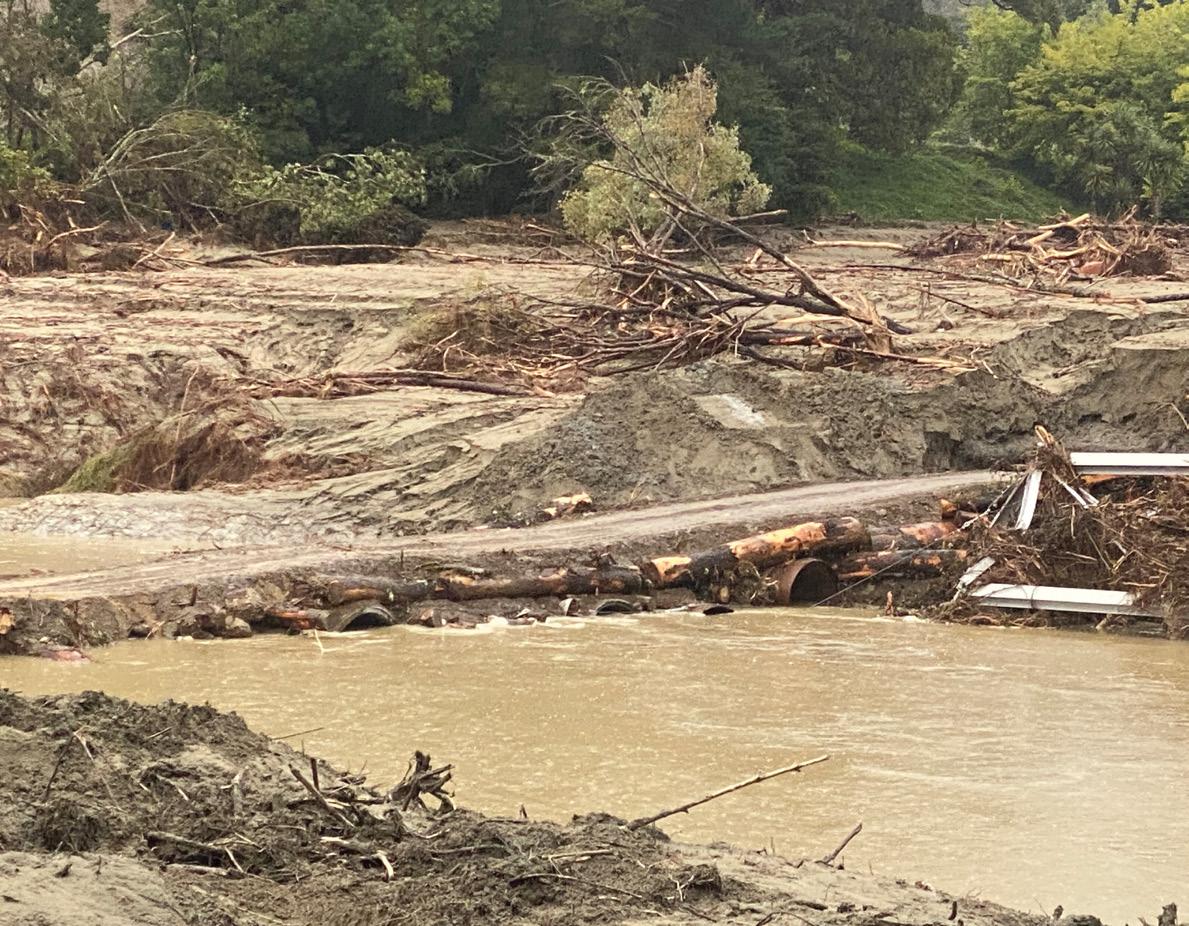
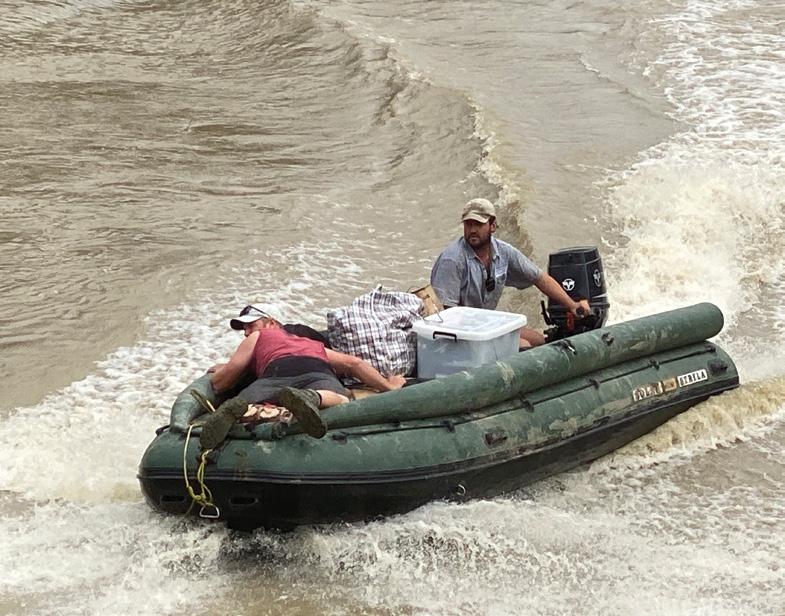
“It was 15 metres high and two-thirds
don’t have to do everything now. When you’re in the grind of it, it can be hard to realise you’ve actually achieved a lot.”
In their case fencing materials turned up from the Rural Support Trust three months after the flooding, which was very much appreciated.
“And look after yourself,” he says. “It’s easy to say, but hard to do.”
Daylight revealed kilometres of fencing buried in silt or slash, but the priority was to restore access, with a crossing over the unstable riverbed reinstated just nine days later. Fortunately, two 30-tonne diggers were already on the north, cut-off side of the riverbed, so once operators were flown in they were able to create a temporary
He was pleased to see affected North Island farmers getting together to chew the fat.
“Some of them don’t have a temporary fix yet, but then they have to do the permanent fix,” he says. “It’s not going to be sorted in one or two months.
The Aclands had access and machinery. But every situation is different.
“It’s hard to accept help when you don’t have access.”
Due to good growing conditions, there’s enough feed for cattle, which make up 80% of Rissington’s stock and were due to be sent to the meat works on March 20, delayed for 10 days. Twoyear-old bulls won’t go off the farm until May with older ones not due to depart until spring.
“We delayed weaning our calves, which in hindsight was a masterstroke,” Daniel says. “But getting rams to ewes will be a challenge.”
Stock water has been restored with generator-powered pumps at dams or springs, and they’ve set up some solarpowered electric fencing.
“But there’s still a lot to do before winter.”
The plan is to fence to silt lines then reassess next summer, but Daniel accepts some ground will never come back into production.
“You’ve got to listen to nature when she talks to you like that.”
Country-Wide | APRIL 2023 27
Left: The new Mangaone River crossing. Below: Andrew O’Rourke ferries supplies to other farmers. Photos supplied.
The big clean up
There’s years of clean up and rebuilding waiting for the victims of Gabrielle.
Photographer Louise Savage lives in the thick of the flooded Gisborne region and post-flood went to visit some of the locals dealing with the cyclone’s aftermath.
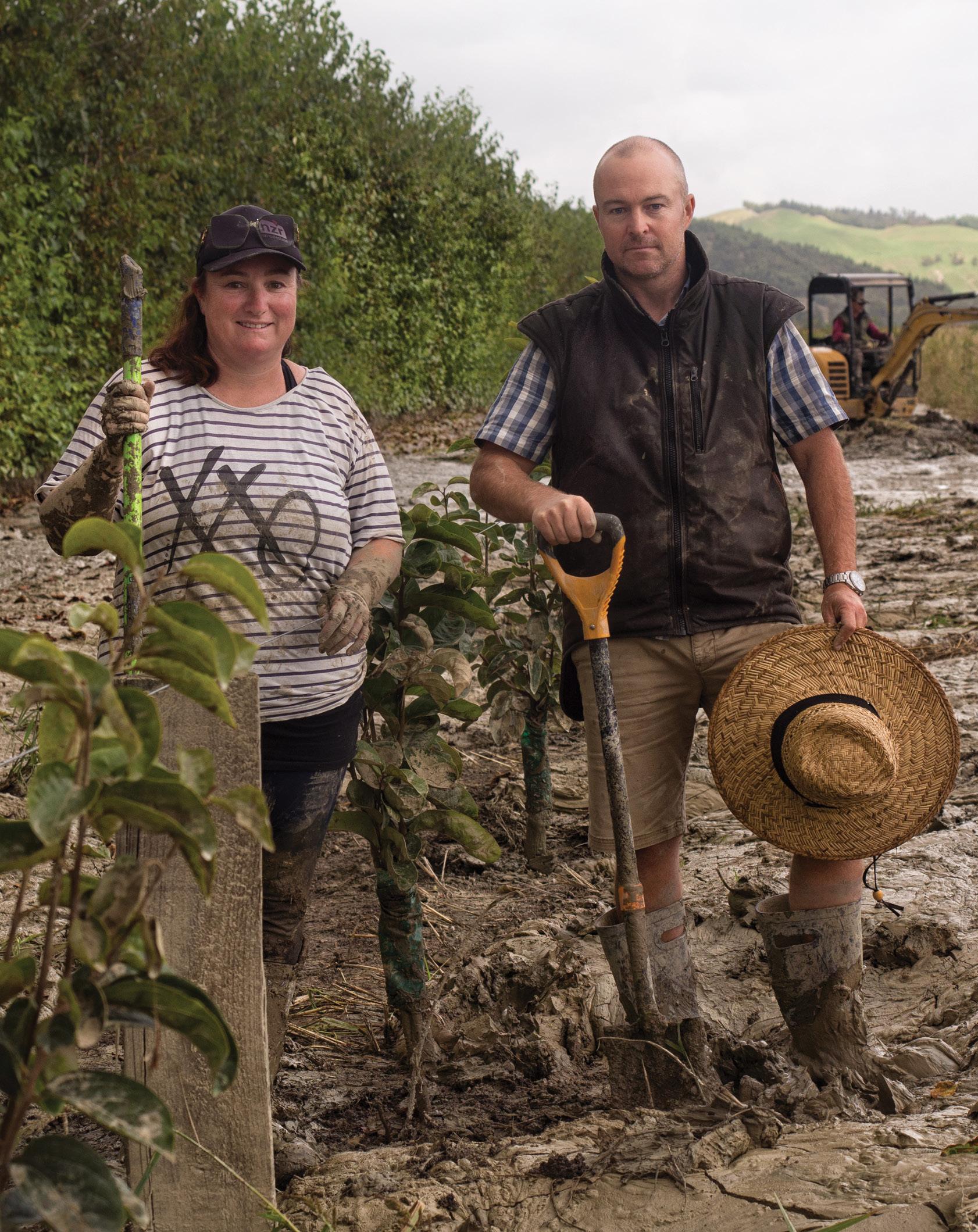
The year 2022 was the rainiest in Gisborne for at least three decades, and summer 22-23 the wettest summer on record. Cyclone Hale struck in January followed by several 100mm plus downpours, then Cyclone Gabrielle in February. Gabrielle was the most damaging storm since Bola 35 years ago. In the interval from Hale to Gabrielle, the Poverty Bay flats received two-thirds of annual rainfall in just three weeks.
Waimata Valley, a sheep and cattle farming area close to Gisborne, is just up the road from one of Gisborne’s most iconic venues, Waiohika Estate. It was where the summer festival RnV took place only 10 days before Cyclone Hale. It slammed the district, plunging
Gisborne into a state of emergency that still hadn’t been lifted. (It was lifted on March 14, a month after the cyclone.)
Monowai Station recorded 1056mm of rain in January and February, fully two-thirds of Waimata’s annual rainfall. Waimata Valley Road has been dogged by power outages and closures ever since, caused by washouts, flooding, downed trees and slips on to the perpetually unstable, cracking road.
Three weeks after Gabrielle, Ian and Richard Utting were still checking on and shifting cattle at Waimiro Station from paddocks partly inundated with silt up to a metre-and-a-half deep. The Utting’s cattle were fine, but Ian Utting felt for the “poor buggers” further up the valley, still cut off up some
closed side roads with no power or communications.
“One neighbour grabbed a ride in a supply chopper, with his swag, to the other side of his farm to check on his stock. He’s staying in a hut out the back there.”
Only a few kilometres up the road the valley is narrower and damage even more severe. The road almost obliterated with silt accumulated to 5m deep in places. McNaughton’s Bridge, normally 10 to 12m above the surface of the Waimata River, has been under water as evidenced by debris caught on the deck of the bridge.
To the south of Gisborne, Chick and Crispin Bridge farm sheep, beef and grow citrus at Manutuke.
28 Country-Wide | APRIL 2023
AFTER A FLOOD
Lauren and Ed Hindmarsh.
At 6pm on Tuesday March 14, following torrential rain, a substantial landslide buried and obliterated a row of large willow and liquidambar trees, then blew out a debris field entirely, covering 3200 mandarin and lime trees (see p90).
Geonet recorded a 4.4 magnitude earthquake a little north-west of Gisborne.
Chick Bridge said she felt “a bit of a shake” the evening before the landslide. When son Ruie scanned the hills with binoculars the next day he noticed something was very different about the view.
The material from the massmovement came to rest within two metres of a neighbour’s house, which has been red-stickered. The spoil is 6m deep and contains large blocks of subsoil material, with numerous puddles of water within the hump-and-hollow terrain of the debris. Walking over the slip gives the impression of being on a “glacier” of debris.
The total area of both the slip scar and
the deposited material is 13 hectares.
“The area at the top of the slope failure was really very wet, hardly surprising after a very wet winter, a very wet summer, and two cyclones,” Crispin Bridge said.
What comes next?
The Bridges don’t know yet how they are going to deal with the enormous volume of material that’s come down.
“There is far too much to move, so it may be a case of trying to level the surface and smooth it out, but that will have to wait months for the stuff to dry out.
“We’ve lost 13 hectares of productive land,” he said.
While the Bridges’ huge slip was coming down, the Te Arai River was coming up at Tam and Dan JexBlake’s Waingake Road farm. Deer fences along Waingake Road still have debris caught in them, right to the top. Several houses along this road have been inundated with water and red-stickered.
One house, an old villa, placed on raised foundations after Bola, escaped the flood, just.
Cameron Pihama, first-year Growing Future Farmers (GFF) cadet, was shovelling mud out of stockyards on the Jex-Blake’s Manutuke block. Meanwhile a group of four second-year GFF cadets had travelled over to Gisborne from the King country to volunteer for the cleanup, and were disentangling a fence from the debris. The fence had been brand new only three weeks before Gabrielle sent 2.5m-deep flood water across the flats alongside the Te Arai River.
Further down river, Lauren and Ed Hindmarsh have a 7ha avocado, lemon and persimmon orchard at Pipiwhakao Road, Patutahi.
The entire orchard, just like their neighbours, is buried in sticky, suffocating mud up to 600mm deep, left behind when the Te Arai River also flooded their area. To try to save their trees, Lauren and Ed, with the help of a small digger, but mostly with shovels,
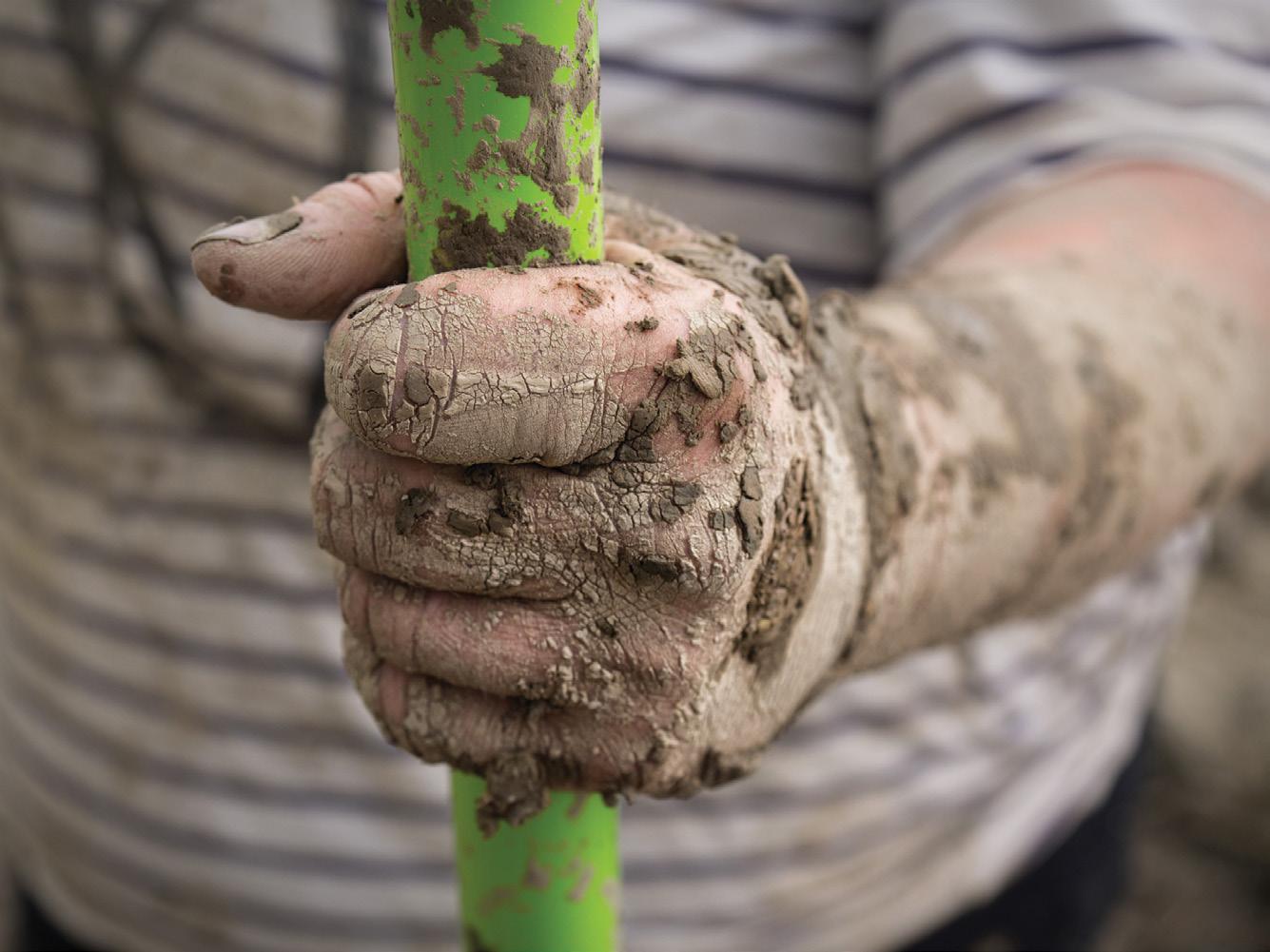
were scraping mud from around their two-year-old persimmon trees.
Hindmarsh had done his research.
He said Persimmons were hardy trees and there have been examples of them surviving being silted. But he conceded that those surviving trees he’d read about it were mature ones.
“Ours are just babies.”
There is nowhere to put the silt. At the moment they are piling it between the rows, but it is still oozing. Medium term, they will have to remove the mounds of silt, but where to? All of their 7ha block, naturally, is planted in trees.
Lauren Hindmarsh, pausing from the filthy and exhausting work, was just thankful their house had survived, being above the flood. “Only just. By seven centimetres,” she said.
Country-Wide | APRIL 2023 29
“There is far too much to move, so it may be a case of trying to level the surface and smooth it out, but that will have to wait months for the stuff to dry out.”
Are the worms gone post-cyclone?
In ‘normal’ times, when looking at on-farm worm management there are two broad areas where we can have influence:
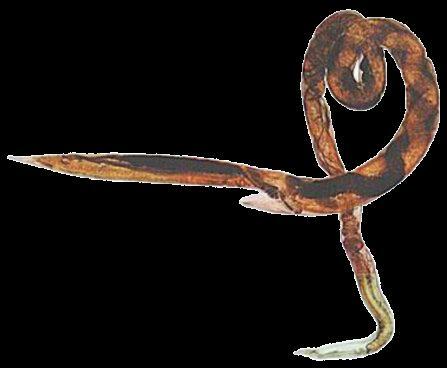
• The overall farm system – things that impact the ability to manage worms – includes stocking rates, ability to ration and manage feed, key feed-demand dates, forage types, balance of animal species and balance of younger and older stock.
• The tactical aspects – drenching and monitoring programmes, use of different forage types, integration of stock classes, planning of grazing rotations and area swaps.
When your farm has been badly impacted by a weather event, the level of control over many of these is greatly diminished. This could be as big as being unable to keep ewes and rams apart and thus losing control over lambing date, or as small as having to wait an extra week to get some lamb drench delivered.
Recovery from these events can also raise some interesting questions about worm management on affected areas, such as, ‘How much flooding is required to wash worms away?’, ‘When I re-grass my silted flats, will the resistant worms down there be gone?’ and ‘Will my stock be more likely to get liver fluke if my paddocks have been flooded?’.
When looking at the big picture of animal management in the face of cyclone recovery, the priority has to be
on the health and welfare of the stock. In these times, it may be that lack of control over the farm system dictates worm management decisions that are not strictly ‘Wormwise’.
Examples of this in the coming months may be:
Ewes over tupping:
• Typically we would advise a bestpractice split-flock monitoring and management approach to avoid the need for whole-flock (or indeed, any) drenching pre-tup in areas where Barbers pole worm is a risk.
• However, this may be completely impossible on some farms this autumn. Where ewes and lambs have become mixed up, where it’s not possible to separate light and heavy ewes, or if feed starts to run short ahead of mating because of area restriction or lack of control, it may be entirely justifiable to do a whole-flock Barbers pole worm treatment.
Routine lamb treatments:
• Where there is lack of grazing control and inability to yard animals easily for routine treatments, there may be an argument for a long-acting treatment to keep lambs safe until it’s possible to easily handle them again.
• Be aware in this situation if you’re using a long-acting Moxidectin injection because these products have differing lengths of protection against the different parasite species. For example, the protection period from these products against (non-resistant) Trichostrongylus is about 5–6 weeks, not 100 days.
Ewes pre-lamb:
• Lack of grazing control in the autumn can result in suboptimal feed levels going into winter and/or feed quality issues that impact what ewes are eating through winter, and the regrowth of paddocks that got out of control.
• A subsequent heavy rain event through winter (as we saw in Manawatu in 2004) could move more sodden ground and further affect the ability to control grazing rotations.
• An outcome of both of the above is the possibility of lower than optimal feed levels at lambing.
• Keeping this in mind, taking a conservative approach to the feed budget and prioritising feed to the ewe flock on hill country farms are a must.
• However, if, as lambing approaches, it has not been possible to manage feed
30 Country-Wide | APRIL 2023
AFTER
FLOOD
After a weather event, worm management can prove difficult, but Ginny Dodunski has some ideas for keeping control.
A
to have good covers coming under the multiple ewes, use of long-acting drench products (that would not normally be recommended) may be justifiable.
If as a result of the cyclone you’ve had to take preventive actions against worms that aren’t particularly ‘Wormwise’, I have two bits of advice.
First, don’t beat yourself up. It’s unlikely that actions taken in one year in isolation are going to completely mess up the worm situation or drench resistance status of your farm. Second; where you have had to ‘break the rules’, have a think about what mitigations you might use to reduce the impacts.
In the case of treating a lot of ewes with a long-acting product pre-lamb, could you leave some better conditioned untreated ewes amongst the treated ones to provide some refugia? Or is it simpler to lamb untreated singles in with twins? Especially if you’ve lost the ability to differentially feed them anyway.
The risk from long-acting products is that they let resistant parasites survive and reproduce for a long period inside
the ewes. If you do treat ewes this way, do some FEC monitoring (at docking, say) to ascertain how badly this is happening in your case. Then you can have a conversation with your vet about whether to use something to remove those.
Those ‘curly’ flood questions
‘How much flooding is required to wash worms away?’ To paraphrase Massey parasitologist Ian Scott: ‘worms are essentially aquatic organisms’ – after all, the worm larvae your stock ingest are suspended in the water droplets on your pastures.
It would be a stretch to imagine that anything but the fastest flowing flood waters would physically wash all the larvae out of the sward. So presume the larvae will still be there, unless they’ve been buried under silt.
‘When I re-grass my silted flats, will the resistant worms be gone?’
Probably yes, if the original pasture sward was well buried. Management is the same as for any re-grassing programme – be careful of the status of the worms you first introduce on to
those areas. A couple of light grazes with undrenched adult stock are ideal.
‘Will my stock be more likely to get liver fluke if my paddocks have been flooded?’
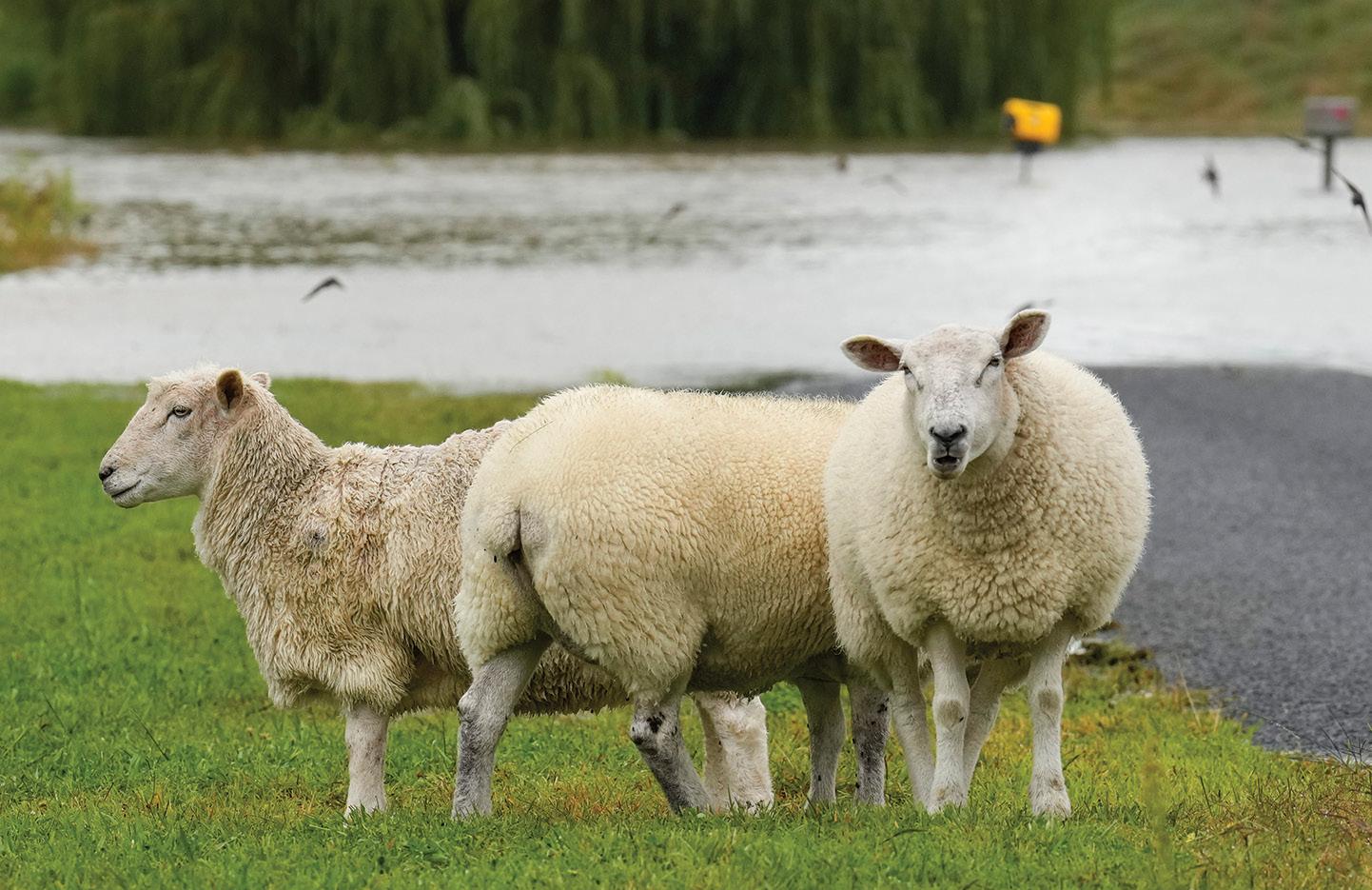
Fluke can be more of a risk (if they are present) in environments where there are substantial areas of ponded water. However in most New Zealand areas, the big fluke years tend to come after droughts where stock have been grazing down hard into swampy areas to get the last bits of green.
Thankfully this time, in most of the cyclone affected areas feed was plentiful prior to the flooding, so fluke should be less of a risk. That said, tail-end ewes are typically the best class of ‘indicator’ stock for fluke challenge. If post-mortems on these reveal no fluke, you can be pretty confident that the rest of your stock are unaffected.
Country-Wide | APRIL 2023 31
Ginny Dodunski is a veterinarian and the Wormise programme manager.
“It’s unlikely that actions taken in one year in isolation are going to completely mess up the worm situation or drench resistance status of your farm.”
The Royal wave
On March 13, 1986 we had a very severe flood in South Canterbury, although in no way was it as extreme as the recent flood in Hawke’s Bay.

I farmed two farms at Pleasant Point; one beside the Tengawai River and close to the township, and another on the downs nearby. By 4am the rain was so heavy we moved all our stock to what we thought was the highest ground on the farm by the river. Overnight there was about 250mm of rain in the headwaters. The result was a flow of 1500 cumecs (cubic metres of water per second) soon after daylight on March 13. The floodbanks were designed for a maximum flow of 900 cumecs. The banks eroded and soon there were 300-
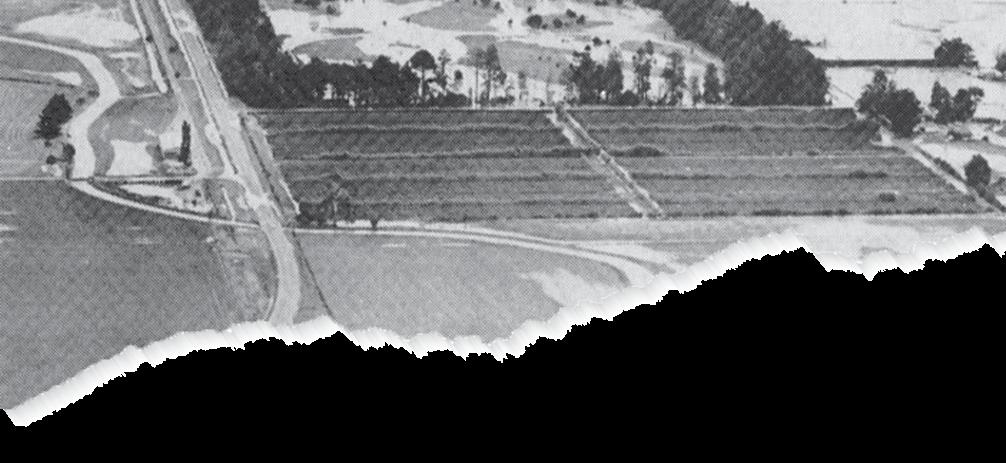
400 cumecs flowing over the farm, with a further 300-400 cumecs from further upstream, flowing right through Pleasant Point.
All of this water could not get back into the river, so it flowed through farms and roads all the way to the sea 30km away. There was huge damage to houses, buildings, fences, grain silos, and severe stock losses.
Although early action meant we lost no stock, there was three months’ work repairing the damage to the farm.
Some anecdotes:
• The day after the flood we were pulling a tree off a fence when the Police arrived and told us we couldn’t do that as “we aren’t starting until Monday!”
• Civil Defence had the police remove all residents from Pleasant Point and no one was allowed in. I had dispensation to move between farms. After four or five days, the 1500 ewes by the river had no feed left and had to be moved through Pleasant Point to the farm on the downs. We frequently did this in the normal course of running the farms. I knew if I asked the authorities they would say no to that, so I didn’t ask and moved the ewes anyway. What a fuss the authorities made, they tried
to stop us, but the ewes quietly made it to good feed. On national news that night there was an aerial shot of the stock moving through the town with the caption: “The boys in blue helped move the sheep.”
• The constant sight of news helicopters filming us working in the mud was most annoying to the point where the next helicopter was going to “get the fingers”. But I waved instead and in reply got a “royal” wave. It was then Deputy Prime Minister Geoffrey Palmer doing an inspection of the damage. He was so appalled at what he saw that he instituted a 90% subsidy for repairs to fences, buildings, etc. Thank you Geoffrey, that was a lifesaver after having to contend with two very bad droughts (and Rogernomics) over the previous three years. Our repair cost was $30,000 (1986 dollars), reduced to $3000 thanks to the repair subsidy.
• It was wonderful to see the community and groups of farmers from other districts rally round with practical help for repairs, and moving wet hay out of barns to prevent fire, etc.
• At that time I also worked as a farm
32 Country-Wide | APRIL 2023 AFTER A FLOOD
Peter Clarke is no stranger to flooding and says there are lessons that can be learned from what can be life-changing events.
Aerial photo of the Pleasant Point township when flooded March 13, 1986. Photo: pointhistory.org.nz
consultant and was able to work with large scale contractors with scrapers to re-level a number of farms that had been severely eroded.
Lessons and comments
• Be completely aware of what is happening to river flows and do not wait for official warnings: take early action yourself.
• These floods are not on flat land, they are on “inclined floodplains”, meaning the water will flow at high speed, hence the severe damage. But that also means it is relatively easy for individual farmers to build small floodbanks upstream of houses and outbuildings, and the incline will take the water on past the protected area.
• It is not possible to protect fully against floods of the magnitude of the recent Hawke’s Bay flooding.
• The issue is that we live and farm on those inclined flood plains. Those plains were formed by flooding, it is a natural process. Think of the entire Canterbury Plains, all formed by flooding. We puny humans try to keep the rivers behind man-made banks, which works well until eventually the riverbeds will be higher than the surrounding land.
• But we can try to build infrastructure on high ground, we can maintain floodbanks, and we can be proactive in secondary smaller banks to protect houses and farm buildings.
• Pleasant Point has had additional flood protection since 1986 from a “wingbank” several kilometres upstream to divert any escaping water back to the river.
• Our local regional council has a “flood
map” which has been used since 1986 to set minimum floor heights for buildings.

• The Tengawai River is a tributary of the Opihi River. The Opuha Dam has been operating in the Opihi catchment for over 20 years. The dam provides electricity generation and enhanced river flows in summer for recreation and irrigation. But very importantly it provides a very real measure of flood protection by removing peak flows in the river. It is the (short-lived) peak flows which do the damage during floods.
• It is always so good to see how relatively quickly communities can do the repairs and return to normal.
• But there is no escaping it – from time to time we will suffer flood damage.
• The worst stress from the flood came from bureaucratic rules, not from the police, but Civil Defence. That is disgraceful. I thought the police were bored and not happy having to guard the township to keep the residents out.
Global warming
The manipulative political climate constantly pushes the theory for political advantage that floods are due to global warming. Are we all going to believe that?
Consider this:
All the “flat” land in New Zealand was formed by floods over millions of years.
Floods have provided us with some of our best soils.
If all the recent floods are due to global warming, then we must have had global warming at the time of the 1929 Westport flood, Pleasant Point flood 1945, and for the last several million years while our flood plains formed. Floods are natural and will occur again.


Country-Wide | APRIL 2023 33
Source: Star (Christchurch)National Library of New Zealand.
Technology saves the day
She was far from home, but quick thinking helped Gisborne-based photographer and writer Louise Savage get messages through during Gabrielle.
Gisborne is well-used to floods. Its “wettest year on record” was 2021, but Cyclone Gabrielle coming hot on the tail of January’s Cyclone Hale and striking what was already a high water table on the Poverty Bay flats meant the damage was extreme. Alongside houses being flooded or swept away, numerous slips, 71 roads in the district are closed and 17 bridges are either broken or gone altogether.
Being a bit of a weather geek, I started to watch the enormous, whirling weather mass that became Cyclone Gabrielle a whole week before she arrived. I was planning a trip to Christchurch, photographing, and my travel dates were

on a collision course with Gabrielle’s calculated arrival in my home region –Gisborne.
I became increasingly reluctant to go, leaving my small block on the Poverty Bay flats, horses, house and family. However, the photo-project was a one-off and unrepeatable opportunity. I thought, what’s the worst that could happen, and reasoned it’d be either water coming up into the house or the roof blowing off, so I wrapped my laptop in two plastic bags and hid it in a safe place.
Getting prepared
After shifting horses to high ground, filling water containers, gas bottle, the
fridge, and fuelling my vehicle, I said goodbye to my family and got on my early Saturday flight while Gabrielle churned 48 hours offshore.
One by one friends dropped off social media north-to-south as Gabrielle cut a swathe of damage down the island. On Sunday I had last contact with home. Water was rising and the wind was wild. In sunny, dry Canterbury I had a sense of impending trouble as my people just weren’t contactable by any means, including my Hawke’s Bay family – my brother at Puketapu and my mum in Havelock North.
I stayed in Canterbury with my daughter Harriet, a third-year Massey
34 Country-Wide | APRIL 2023
AFTER A FLOOD
student having a ball working a summer holiday polo-grooming job in Amberley. Anxiety levels started to rise for the four Gisborne locals among the Glenmark Polo staff. We couldn’t get any news of home but saw images from further north of rising flood waters, overturned cars, slash-wrapped bridges, and collapsing and teetering homes.
During sleepless nights and many cups of tea, I regaled the twenty-somethings with how bad it had been during Cyclone Bola, which areas went under, slipped or were cut off for months, and how postBola I’d always kept 40 toilet rolls and weeks-worth of food in the house.
Ironically, I could see and receive Tairawhiti Civil Defence posts and evacuation notices for areas all over Gisborne district, yet no one at home could see them. Te Karaka, where I have many friends, self-evacuated in 70 private cars and everyone got out, but I couldn’t contact those friends.
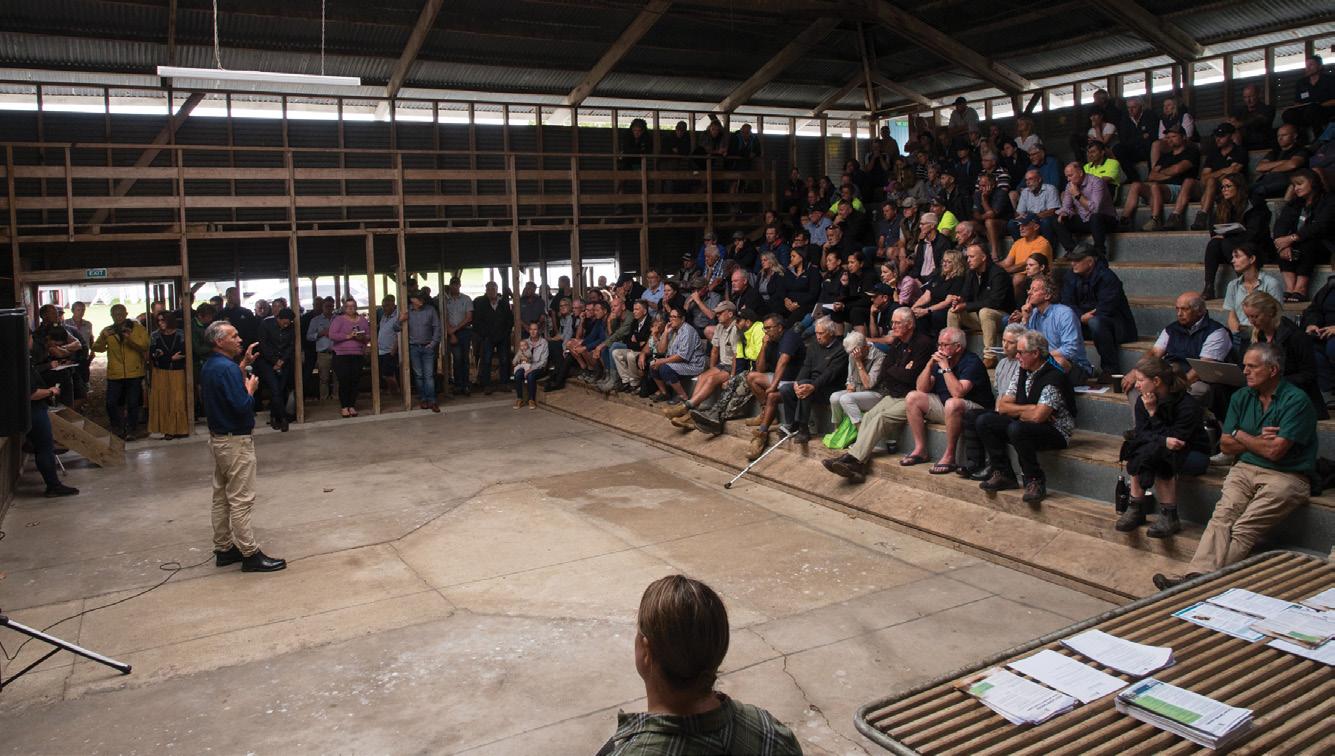
Reaching out for Garmin InReach
Harriet had a tech-savvy friend in Rotorua and we asked Sean how I could set up my own communication to at least message out once I returned home to let people
know their Gisborne whanau were okay.
Sean decided I needed a Garmin InReach to enable me to text using the Iridium satellite network. The gadget was in stock at a Christchurch store and I phoned to ask the box be opened and the device charged up ready for me to collect.
On Tuesday afternoon I completed my photo job and would have headed home. Flight cancelled, rebooked, cancelled again, and the same process repeated over the next couple of days.
Harriet drove me the hour to the airport, and back, four times. Cancellations were due to damage to the Gisborne tower, or maybe runway damage, or perhaps because only Air Force planes were allowed to land. Noone knew what was going on.
I sought advice from Facebook friends, and a pilot friend offered to fly me home herself if I could get to Auckland. So, fifth-time lucky, I boarded a plane with a hand-written boarding pass. Worried exGisborne people I didn’t even know sent messages begging me to check in on their families and to message with my satellite link once I got home.
Once in Auckland, it seemed the first commercial flight to Gisborne was imminent. I ran to the departure gates
and was let through, the pilot bemused by my hand-written slip. I couldn’t believe I was actually going home until the plane door was closed.
At home there was water everywhere, but the house and sheds were unscathed and the one pony left at home was unconcerned on her little island of lush grass in metre-deep Lake Gabrielle.
Amazingly, the power came on, but we had to use our containers of water and there was no communication other than via satellite. I knew far more about what was happening around the local district than my family and neighbours. I was able to use my new gadget to text most of our significant people. My brother at Puketapu replied simply via his satellite gadget: “Sam and I fine. Property is destroyed.”
Essential communication
Slowly we realised the gravity of the situation as tenuous communication came on stream. The Gisborne Herald printed free newspapers containing advice and delivered to every house they could get to, which was generous and much appreciated. Days later we could text using pop-up Starlink aerials, followed by slow internet.
As I write this, Gisborne has already received more than two-thirds of average annual rainfall, mostly in a three-week period. At home, because our rain gauge overflowed twice, we’ve recorded at least 620mm (annual about 900mm).
Everyone was comparing Gabrielle to Bola. Gabrielle delivered far less rain locally, but the ground was already saturated thanks to Cyclone Hale 10 days before. Some rivers rose higher than Bola. A stand-out difference between the two events was the accurate forecasting and warnings we received ahead of Gabrielle, which simply didn’t exist in 1988. It is also terribly sobering that plantation forestry, touted as a solution to the severe erosion problems of the Gisborne hill country, and ramped up after Bola by government subsidies, is now proving to be part of a vast environmental catastrophe.
Country-Wide | APRIL 2023 35
Dave Hadfield, Gisborne District Council, addressing a woolshed-meeting of farmers and landholders - those who were not stranded by washed-out roads and broken bridges, about the damage to the road network.
Left: A Garmin InReach device enabled Louise to send text messages using the Iridium satellite network.
Glºbal warming:
OPPORTUNITIES WITH METHANE

Agriculture can be part of a climate solution, says greenhouse gases guru, Professor Frank Mitloehner.
By Joanna Cuttance
36 Country-Wide | APRIL 2023
BUSINESS GREENHOUSE GASES
Professor Mitloehner leads The Clarity and Leadership for Environmental Awareness and Research (CLEAR) at University of California, Davis, and he told an audience at NZ’s Lincoln University that by carefully choosing which methods of managing methane from livestock to use, opportunities could be created to help reduce global warming.
“Methane is the Achilles heel on one side, but it is also a real opportunity on another side,” he said.
The agriculture sector in Mitloehner’s home state of California developed an opportunity that not only reduced methane, but added another revenue stream and helped the transport sector.

Californian law mandated a 40% reduction of methane to be achieved by 2030, which was below 2013 thresholds. With incentive-driven support, innovative ideas were developed and implemented.
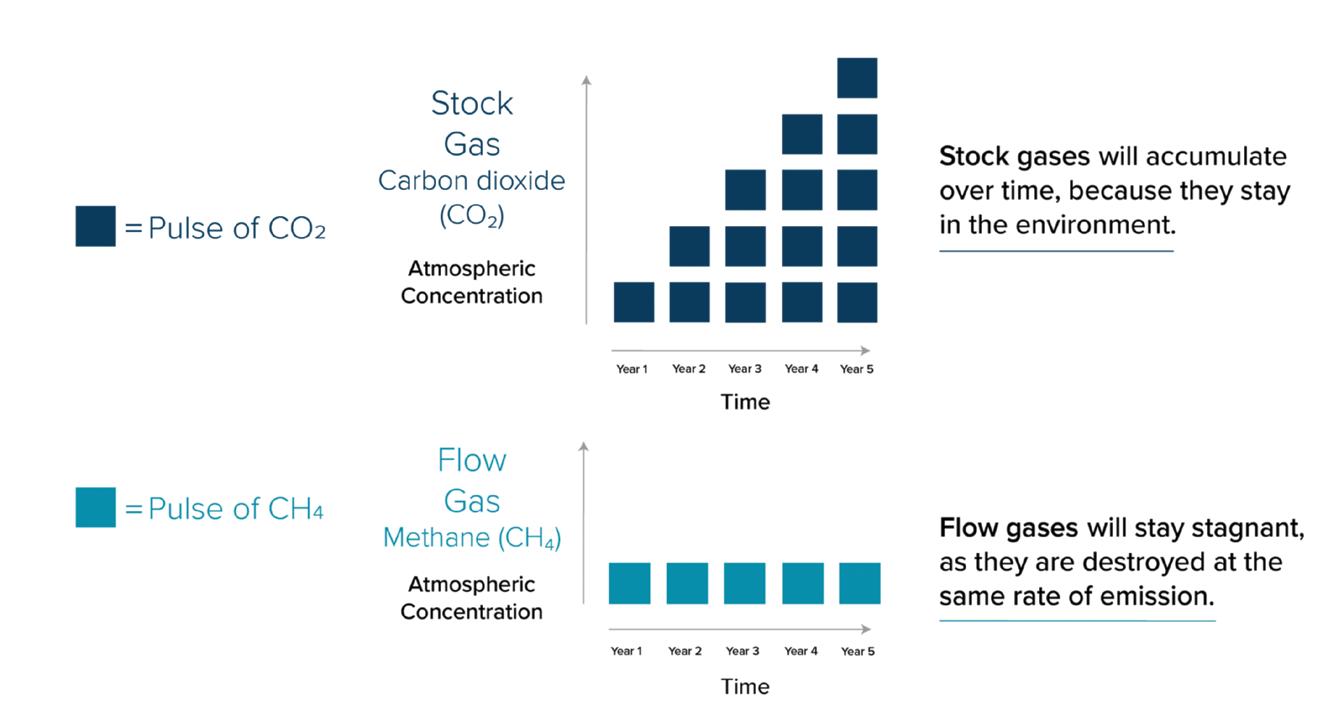
For example, dairy farmers are covering their open lagoons, which are
used for storing manure. The covers trap biogas emanating from that manure and 60% of this gas is methane. The biogas is taken, cleaned up and converted into renewable natural gas that’s used for fuel in heavy duty trucks and buses.
Farmers doing this have made money from it, and the sector was well on its way to achieving the 40% reduction of methane by 2030 as asked for by the Californian policy makers, Mitloehner said.
Mitloehner said NZ would need a different approach to make a meaningful contribution to the climate scenarios, as California was significantly different from NZ. Agriculture in California was very intensive and very large scale; a farm with fewer than 500 cows was not financially viable. However, lessons could be learned from each other, he said.
Mitloehner suggested a matrix fit for purpose was needed to describe the impact the agriculture sector has on warming.
“We need to be able to tell farmers, at
this point in the future you will be climate neutral - meaning you will not cause additional warming, and here are different pathways to get you there.”
Some rethinking needed
Mitloehner stressed the aim should be “climate neutrality”, not “carbon neutrality”.
He said, warming was the reason people cared about greenhouse gases, not because they produced carbon emissions.
Mitloehner said the term carbon neutrality was often used in Australia and New Zealand. He said carbon neutrality was a useful term when burning fossil fuels. For example, in the transportation and power sectors, the main emission is CO2. For those CO2 emissions not to cause additional warming but to at least plateau, they needed to reach carbon neutrality.
However, in animal agriculture the main emission was methane, not CO2.
“That makes us a different beast, because it doesn’t mean we have to go to zero methane to stop warming,” he said.
Reductions of methane lead to reductions in warming. When methane reductions reach a point by which they no longer cause additional warming, that is climate neutrality.
For example, a constant livestock herd produces a constant amount of methane. Almost an equal amount of the methane that is produced by a constant herd is also naturally destroyed. This meant when there was a reduction of 0.3% methane a year, then it was not causing additional warming.
Mitloehner said rather than climate neutrality, it would be better to reduce methane further and become part of a climate solution, which was preferable, because the fossil fuel side could never do this. To bring about change he believed incentivising was essential.
“If you don’t enumerate reductions of a greenhouse gas like methane, it will not happen,” he said.
Mitloehner likened using incentives as a “carrot approach” and directive policies as a “stick approach”. He felt the carrot led to farmer buy in, and the development of innovative ideas,
Country-Wide | APRIL 2023 37
Time (year) 1 2 3 4 5 Time (year) 1 2 3 4 5 Time (year)
Figure 1: Carbon dioxide vs methane
whereas the stick led to disconnect between farmers and what policy makers wanted to achieve.
Policy makers throughout the world have varying approaches to managing the impact livestock has on climate.
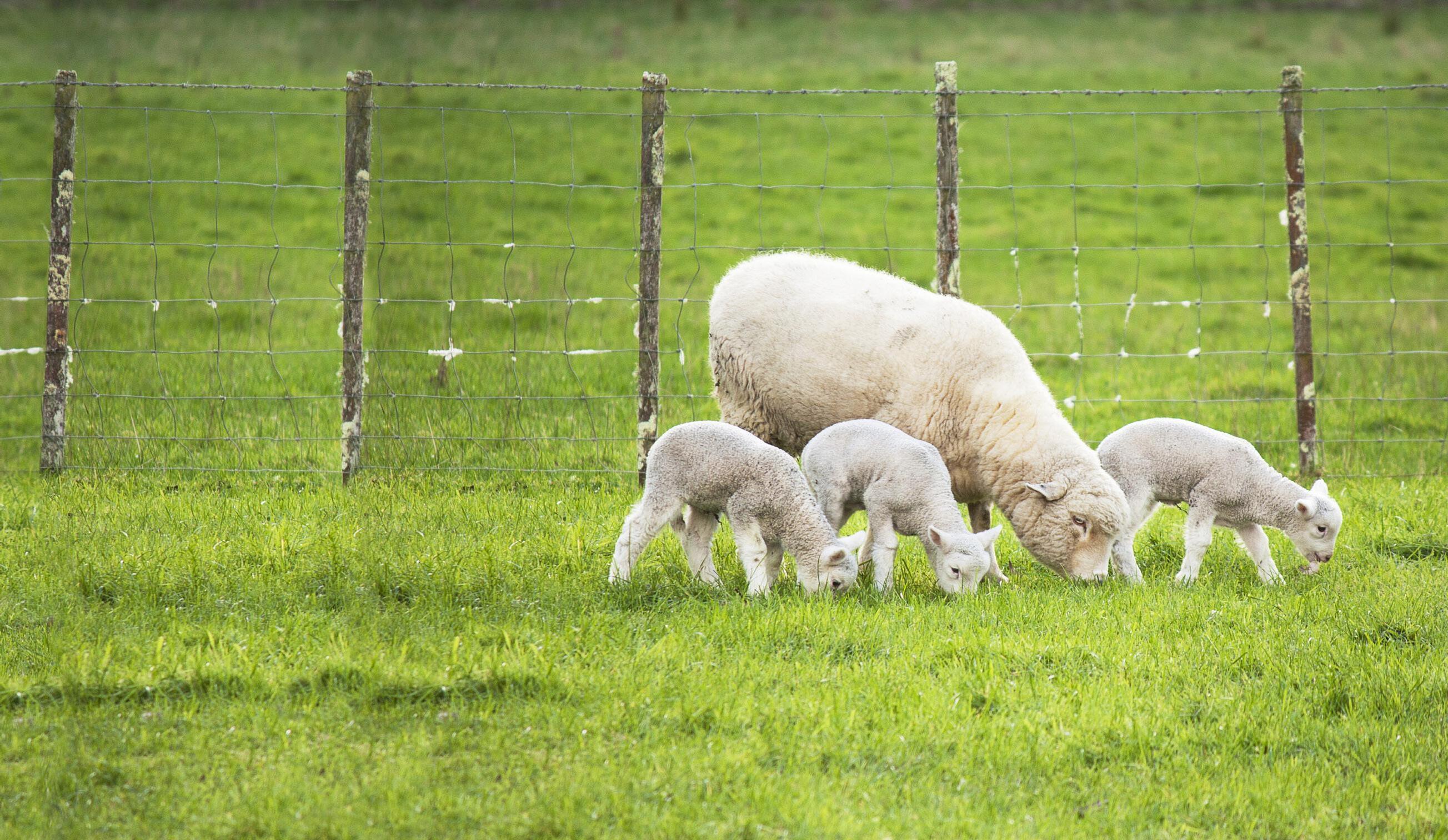
Mitloehner said the primary approaches he had seen were government investment to facilitate methane reductions, carbon trading schemes to incentivize methane reductions, taxation of methane emissions to encourage technology adoptions, and mandated reductions leading to herd reductions.
He felt one of the worst approaches was that taken by the Netherlands Government. It decided to reduce nitrogen emissions from the entire country, but rather than spread this over all sectors, including transport, it decided to make agriculture the only target for nitrogen reductions.
Mitloehner said the Dutch government invested 25 billion euros, and with this
money aimed to buy 500-600 of the most-polluting farms and reduce the herd by 30%. A third of all farmers needed to stop farming dairy and swine. Farms are being sold under market conditions and farmers had to sign that neither they nor their children would ever be farmers again.
He said farmers were extremely upset, and there was a disconnect between the largest parts of animal agriculture versus what policy makers had in mind for them.
He felt this approach was unlikely to achieve what the policy makers wanted to achieve.
Mitloehner didn’t support the Irish approach either. Policy makers there decided they needed to get rid of a third of their cows. Mitloehner said culling these cows would not reduce the demand for the products that these cows produced. Rather, this demand would be satisfied by another country, for example,
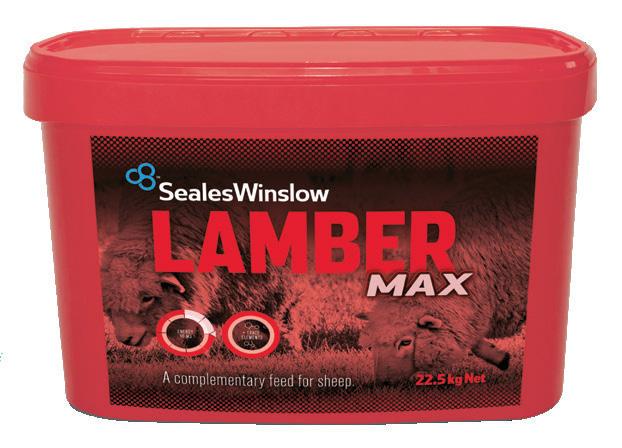
Brazil or Germany, therefore moving emissions from one place to another in a process called leakage.
“Leakage is not reducing emissions, rather moving them from one place to another because demand is not affected,” he said.
The US approach was to fund $2.8b to “Climate Smart Communities”. From this, $800m was going toward beef and dairy sustainability work. Mitloehner said the US government actively supported farmers to reduce emissions nationwide. He said it was more than just incentives, with millions of dollars also going towards research.
Mitloehner said along with federal incentives there were also state incentives. To bring farmers on board, the legislation was written in a manner of financial incentives and partnership agreements between government and industry, which led to innovative ideas being implemented.
38 Country-Wide | APRIL 2023
DEAR AUNTY THISTLEDOWN,
A man on the internet says that Brazil has the BSE mad cow disease, and that means the Brazilians can no longer send beef to China. And since Brazilian beef makes up, like, 50% of Chinese beef imports, we can expect a higher demand for beef. Can you tell me how much higher the farmgate beef price will lift on the back of this?
If a classical case of BSE were to be confirmed in Brazil then the claxons would sound. It would indicate a terrifying case of food contamination. A confusing one too, since like NZ, Brazilian cattle are predominantly grass fed. How do you accidentally trick a pasture-fed animal into eating its comrades? How did the land get infected with BSE?
To be frank with you, I can often tell which orifice a man on the internet is talking from by the comments he makes about meat prices. Men on the internet seem to flutter in from nowhere with their proclamations, despite having the barest notion of things like the difference between a quota and a tariff.
Your man on the internet’s interest in Brazilian beef has been fleeting. It has been less than two years since the last time Brazil had to temporarily suspend exports to China.
There are two forms of bovine spongiform encephalopathy (BSE): atypical and classical. Despite the name, the atypical form is fairly typical; it spontaneously appears in older cattle throughout the world and it’s not a big deal.
Since Brazil has more than 200 million cattle, and some of them are geriatric, it’s not that uncommon for atypical BSE to pop up. When this happens, Brazil voluntarily suspends its beef exports to China (as stipulated in their trade agreement) until both parties can confirm this is not a case of classical BSE.
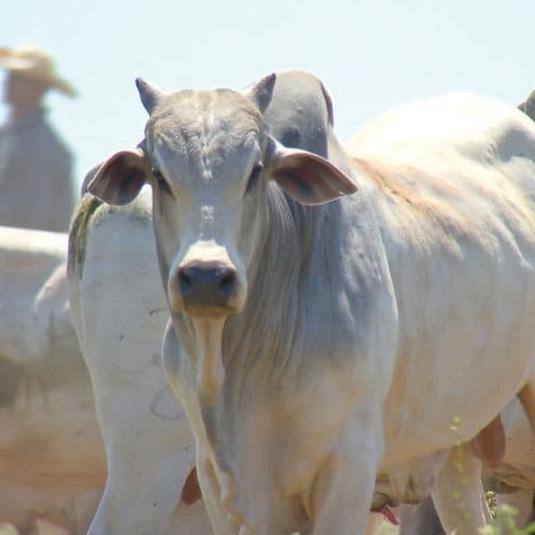
Sometimes there is extra political stuff bubbling away, and in 2021 the Brazilian BSE beef suspension dragged on for
three months. The world kept spinning and your kill sheet did not buy you a Bentley. Even if there were a shortage of Brazilian beef in China, other South American countries are better-suited to fill the place of the low-cost, highvolume beef heading from Brazil to China. NZ exporters aim for more premium markets for our teeny weeny annual offering of four million cattle.
There is no evidence to suggest the latest Brazilian BSE case is anything but the standard atypical BSE. Brazil is in the same “negligible risk for classical BSE” category as NZ, Australia and North America, and everybody else who wasn’t feeding meat-and-bone meal to cattle during the 1990s.
The classical form of BSE is spread by feeding BSE-infected animals to non-infected animals. Since cattle are vegetarians, this is generally easy to avoid. But the Poms still found a way.
Infected animals take years to develop the always-fatal brain damage after eating contaminated food. Plus, there is no way to diagnose an animal without an autopsy. That makes tracing the disease a nightmare. Carcases would be being incinerated for decades.
See how grim the situation got and I haven’t even mentioned the dead consumers yet. At least 178 people and countless pets perished as a result of eating infected beef during the United Kingdom outbreak of the 1990s. Many more UK beef consumers are expected to develop symptoms as they age.
The prospect of people dying from contaminated beef should not make the man on the internet fizz with excitement. If consumers were to worry that their next quarter pounder would result in their demise, then we would see a decline in beef consumption across the board… even if it didn’t come from Brazil.
Read the room, man on the internet. Pull yourself together!
Cali Thistledown lives on a farm where all the gates are tied together with baling twine and broken dreams. While she rarely knows what day it is, she has a rolodex of experts to call on to get the info you need. She’s Kiwi agriculture’s agony aunt. Contact our editor if you have a question for her, terry.brosnahan@nzfarmlife.co.nz

Country-Wide | APRIL 2023 39 COLUMN
Dear TBF,
Thanks, Titillated beef farmer
POTHOLE DOWNGRADES PREDICTION
Based on Beef + Lamb New Zealand’s October prediction, farmers expected 2022/23 to be a reasonable year but lamb hit a pothole and mutton prices choked.
By Joanna Grigg.

The Beef + Lamb NZ Mid-season Update (released March) has taken this pothole on board and downgraded forecast revenue and net profit for the average sheep and beef business for 2022/23. Gross revenue is forecast to average $678,000, down 6.4% on last year and within this, the sheep meat contribution looks to be 14% lower. This is at a US dollar value of NZ$0.63.
In October it was all smiles as the forecast was for the average lamb farm gate price to be 815c/kg. By March the updated forecast had shaved 55 cents off this – to 7.60c/kg.
Initial forecasts picked mutton prices to slide 3.1% on the previous year, to 519c/kg in the 2022/23 season. But by March this forecast was shot to pieces. The updated annual average mutton farm gate price for the 2022/23 season is now forecast at $4.30/kg, down 23% on 2021/22, and 11% below the five-year average.
What was forecast to be $181,000 farm
profit before tax is now looking more like $96,600. This is a 35% decrease on 2021/22 and below the 10-year average.
There is not much in the kitty to pay tax, feed the family, or for unexpected costs like cyclone damage or drought. Even conservative budgeters are feeling a bit short-changed, given that high hopes for Christmas goodies never eventuated. Farmers exposed to early summer markets were especially impacted. Farms top heavy in sheep, generally those in Southland/Otago, will feel the missing revenue acutely.
Forecast revision
Beef + Lamb NZ (B+LNZ) chief economist Andrew Burtt said things did come back more than expected and forecasts have been revised accordingly.
“A key reason is that China’s Covid relaxation took longer than expected.”
The B+LNZ Update also mentioned a hangover effect, from a slow processing winter. The number of lambs processed in the first four months of 2022/23 was
similar to that in the previous season.
In the North Island, lamb processing started strongly as there were carry over lambs from the winter, but tapered off to be behind as more grass was available, which allowed farmers to hold on to lambs longer.
The South Island dry saw lambs continue to flow in, lamb processing get ahead of the five-year average and a drop in farm gate price.
One upside might be the chance of a good rebound, mirroring the fall off. B+LNZ is pitching the farm gate price for lamb to be $7.60/kg CW average, for 2022/23. With only three-and-a-bit months to roll, this suggests B+LNZ is optimistic the year to June will finish strongly, given the schedule was well below this in early March. Burtt agrees in theory.
Statistically, the end of season months would have to be higher than $7.60/ kg CW if the current price was tracking below this, to make the average, he said.
Overall, the view from the top is that
40 Country-Wide | APRIL 2023
OUTLOOK
*Lamb Meat value as a percentage of the value of total lamb exports, including co-products. e estimate, f forecast | Source: Beef + Lamb New Zealand Economic Service, StatsNZ
market fundamentals for NZ lamb and mutton exports are looking positive for the remainder of the 2022/23 season, despite the weak start. This is small consolation for those selling in the first half of the season.
The Meat Industry Association reported that meat exports in January 2023 were “slow”, with total export values down by 7% compared to January 2022. A total of 36,496 tonnes of sheep meat was exported globally, an increase of 18% by volume, but a drop in value of 5% to $343 million.
Burtt said there was still a lot of lamb to be sold but volume looked to be similar to last season. Farmers should be aware that the forecast is for farmgate prices, which takes into account all payments to farmers. This can be a bit more than the base advertised schedule price.
Mutton woes were firmly related to China. The value of mutton exports dropped significantly in the season to late February, reflecting weakening Chinese demand. B+LNZ puts this down to China relaxing its Covid restrictions, more people getting sick and not eating out. Adding to this, meat inventories seem to have reached their maximum, meaning reduced demand. Since an overwhelming majority of NZ’s mutton exports are to China, the reduced demand has a significant effect on prices at the farm gate.
The outlook is more positive though. China is expected to get over its pandemic hurdles and consumers are expected to go eat out again. The Update said the “pent-up demand” as shown by elevated savings levels in China will be a motivating factor for consumers.
While beef is the one shining star, it isn’t enough to save the day. For most sheep and beef farms, sheep income drives the bulk of the returns, with beef second.
*Mutton meat value as a percentage of the value of total mutton exports, including co-products e estimate, f forecast | Source: Beef + Lamb New Zealand Economic Service, StatsNZ
On the negative side, Burtt said Australia is back with more beef, but positives are that China is back in the market and there is a possible chance of United States cattlemen calling for restrictions of Brazilian beef imports into the US.
Exchange rates could make a 16%
Country-Wide | APRIL 2023 41
Farm gate price cents/kg carcaseweight Compared to 20/21 Compared to five-year average LAMB 760 Down 12% Down 2% MUTTON 430 Down 23% Down 11% Lamb meat Coproducts Total lamb
meat Sep year 000 tonne $ / tonne $m FOB $m FOB $m FOB % 2018-19 305 10,445 3186 203 3389 94% 2019-20 307 10,829 3327 155 3482 96% 2020-21 307 10,435 3201 149 3350 96% 2021-22 292 12,970 3782 215 3997 95% 2022-23e 284 11,561 3286 254 3539 93% 2022-23e % change -2.5% -10.9% -13.1% +18.0% -11.4% Mutton
Co-
Total mutton
Sep year 000 tonne $ / tonne $m FOB $m FOB $m FOB % 2018-19 84 6715 564 100 664 85% 2019-20 86 7523 647 105 752 86% 2020-21 95 7713 729 110 840 87% 2021-22 87 8159 711 114 825 86% 2022-23e 84 6942 581 113 695 84% 2022-23e % change -3.9% -14.9% -18.3% -0.3% -15.8%
Table 1 Updated Beef + Lamb NZ Farm Gate Prices forecast for lamb, mutton (average for the 20/23 year) and compared to 2020/21 and the Five Year Average. Mid-season Update, March 2023.
Lamb
meat
products
Mutton meat
Table 2 New Zealand lamb exports
Table 3 New Zealand mutton exports
Lamb hopeful $7.60 by June
LAMB AT $6.60/KG carcaseweight (CW) felt like such a time in the doldrums, given the super summer prices of 2022. Farmers tried to be consoled by the fact it was only a shade below the five-year average for mid-February. But when will it bounce up?
Rabobank analyst Genevieve Steven carries out “educated” crystal-ball gazing for a job. “At the bank we are looking six months out, but also looking at trends that will influence prices five years out – what are the upside and downside risks.”
She said we saw some promising signals from the United States and China through February and expect schedule prices will continue to lift over the coming months to levels in line with five-year average prices.
The five-year average South Island
lamb price is $7.60/kg CW for lamb (across the whole season).
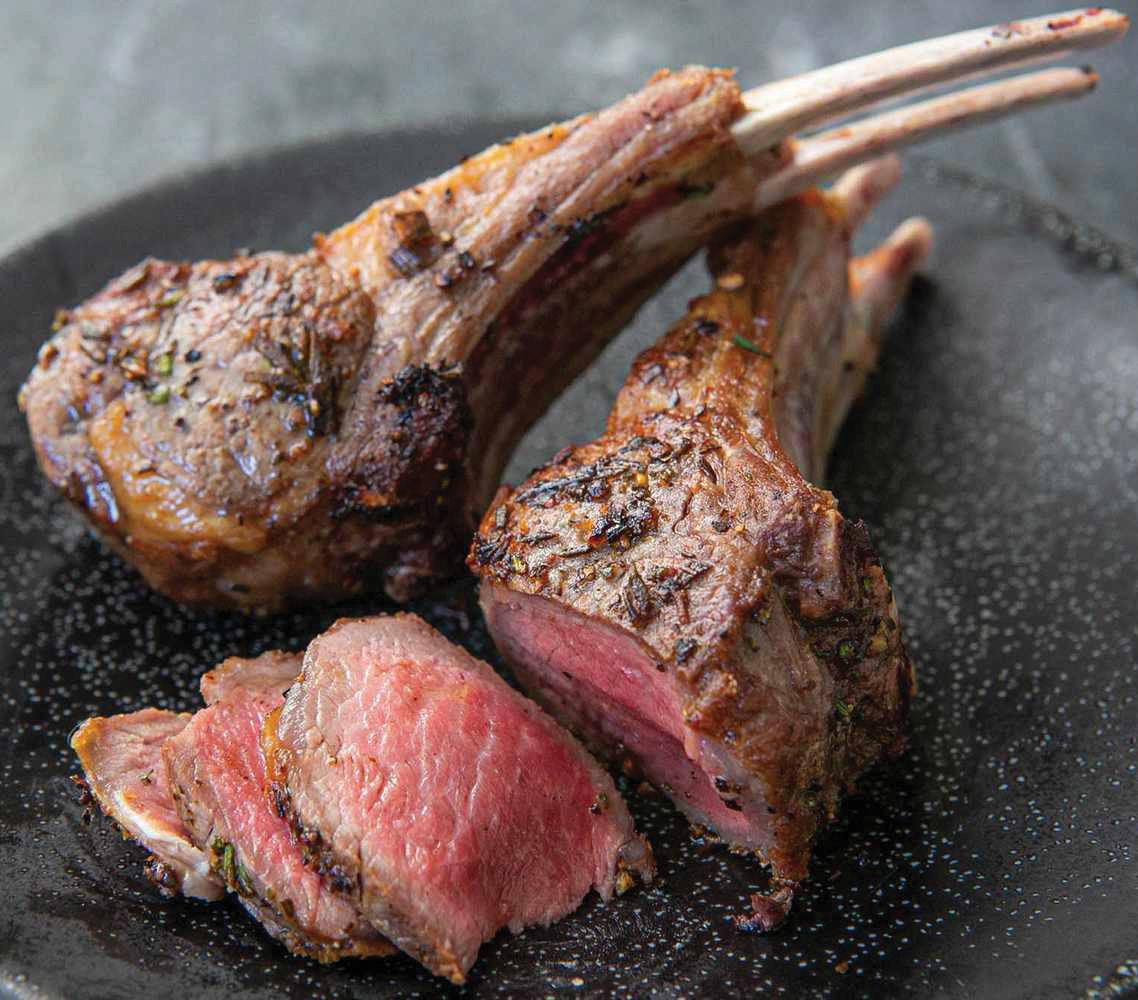
Higher returns for lamb and mutton in China would bolster schedule prices. With lockdowns in China lifted and life starting to return to normal, sheep meat demand and pricing is expected to tick up gradually through the year, Steven said. But there are some downside risks to the schedule, as farmers keep lambs longer to add extra weight, we could see more lambs coming out in March and April.
“Processors could possibly respond by holding prices or taking a few cents out of the schedule if a situation arises where there are backlogs – this scenario is more likely in the South Island than in the North Island.”
Another factor to consider is the additional bobby calves that need to
difference. The update said a 10% depreciation of the NZ dollar against the US dollar (i.e. from 0.63 to 0.57) and the associated cross rates against the British pound and the Euro, increases the average lamb price received by farmers by 16%. In the 2022/23 season, the value of the NZD is expected to decline against all three currencies.
Weighing up options
Sheep farmers looking to improve revenue before year-end might look to dairy grazing, as revenue is looking to increase here. This category of farm income is usually about 6% of total revenue for the average farm.
“Sheep and beef farmers are thinking carefully about risks from environmental perspectives and charging dairy farmers appropriately,” Burtt said.
Farm costs were always pitched to increase. At the start of the season, expenditure for 2022/23 was estimated by B+LNZ to increase 3.4% to $535,000 for an average farm. This updated
be run down the slaughter chain this spring, due to changes in Fonterra’s policy.
“They may come on stream when farmers are selling those Merino/ crossbred lambs that went through winter,” Steven said.
“The schedule is heading in the right direction, but don’t fantasise about big schedules anytime soon.”
The record highs seen in 2021/2022, are unlikely to be seen again in the medium term, she said.
Steven’s advice is to do what’s right for your farm – do a good feed budget and gross margin analysis and explore selling store lambs if a feed market is pushing them to good prices.
Mutton kill is well behind in the South Island, because of labour challenges and little demand from China, Steven
42 Country-Wide | APRIL 2023
OUTLOOK
forecast is similar (a 4.1% increase), as farmers have to keep a tight lid on costs and look to screw it down even more. Repairs and maintenance are forecast to decrease to an estimated $44,500 per farm in 2022/23. This is only 7% above the five-year average.
Statistics New Zealand reported Q4 2022 costs were +15 higher (year on year) with interest rates up 46%, fuel 36% and fertiliser 28%. Burtt makes the point that farm expenses are made up of both value and volume, so farmers have dropped the volume of purchases to control overall expenses. Fertiliser, lime and seed expenditure is forecast to increase 6.1% to $102,100 per farm.
Burtt said farmers are deferring repairs and maintenance, and fertiliser.
“If you don’t buy the chocolate bar, the high price of chocolate won’t appear in your accounts.”
Interest expenditure is forecast to be 12.5% higher (to $54,000 for an average B+LNZ farm).
“This formula involves looking at our individual farms and seeing what they have fixed and floated, and also debt repayment levels.”
Coming off a high is not a nice feeling, especially where there is uncertainty where it might land. Mutton still had a way to go before it achieved the levels it had in the previous two seasons. Farmers enjoyed record high farm gate profits for sheep meat and beef in 2021/22. Provisional tax following this good year is squeezing cash flow. The B+LNZ
Update suggests the tax bill will decrease by 35% from the 2021/22 level.
One surprise has been the reported decrease in sheep numbers, via Statistics NZ December 2022 figures. Breeding ewes were reported to have dropped 6% and hogget numbers lifted 5%.
“We will be very interested in the final May numbers,” Burtt said, adding that the issue seems to be that the ewe decline reported is not reflected in the mutton kill.
“It doesn’t really stack up.”
The B+LNZ Economic Service will update figures further when final data is released by Statistics NZ in May 2023.
700 hectares, average stocking rate of 6.4 stock unit/ha (2885 sheep, 395 beef cattle and 30 deer).
said. Demand from China is strongest during their winter months and in the lead up to the Spring Festival.
In 2022, 206,000t of NZ sheep meat was exported to China at an average price of $7.65/kg FOB (free on board). This was down from $8.19/kg the previous year, she said.
Chief economist at Beef + Lamb NZ Andrew Burtt said by early March, the vibe from meat companies went from being nervous and hopeful to feeling a lot more confident about lamb.
NZ lamb is expected to recover to near levels achieved last season, despite the weak start. B+LNZ is forecasting that at an exchange rate of US$0.63, the average farm gate lamb price to be 760c/kg for 2022/23. Burtt said the farm gate price can be different to the schedule base price as it reflects what is actually paid to the surveyed farmer, including premiums.
Country-Wide | APRIL 2023 43
NZ c/kg CWT Jan Feb Mar Apr May Jun Jul Aug Sep Oct Nov Dec 1000 900 800 700 600 500 400 SI lamb five-year price range SI lamb 2021 SI lamb five-year price average SI lamb 2022 SI lamb 2023
Figure 1: South Island lamb prices opened in 2023 below the five-year average and are picked to inch up to the average of $7.60/kg CW. Source: RaboResearch 2023.
i
The average B+LNZ economic service farm is 4500 stock units grazing on
“Sheep and beef farmers are thinking carefully about risks from environmental perspectives and charging dairy farmers appropriately.”
MANAGING THE CASHFLOW
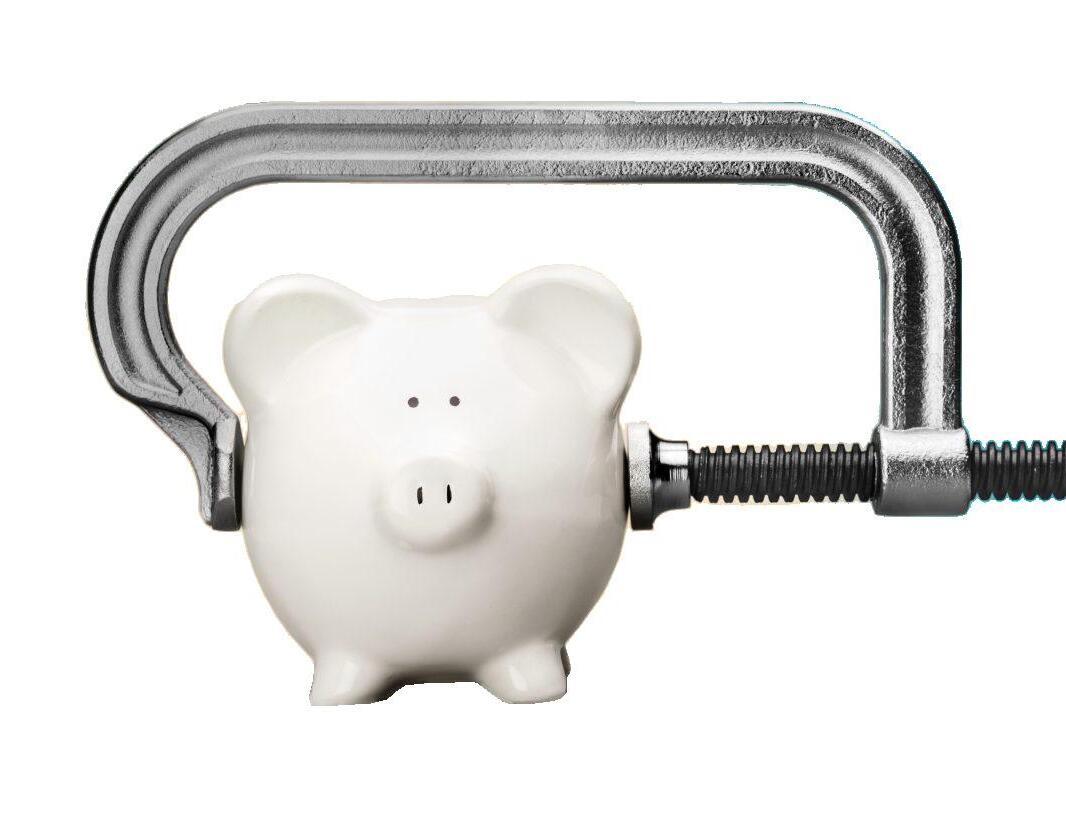
Nelson and Fiona Hancox and their three sons farm 43,000 sheep and beef stock units across three West Otago farms – Kowai Downs, Mt Allen and Wohelo.
Nelson has actively managed the farms to trim spending.
He said making cashflow tight over summer has seen the meat schedule falling below expectations and rising input costs – partly due to a very dry summer/autumn.
The home farm, near Tapanui, has only received half its monthly rainfalls since November. Feed inputs are number one to be protected, though, and this has helped the Hancox’s business meet the budgeted lamb revenue of $120/lamb and $120/mutton.
The initial lamb budget, set-down last winter, was conservative, which luckily they should be able to achieve, Nelson said.
“This was quite low at the time, but I prefer to budget low, and this year we’ve had to work to get it.”
The slide in the Chinese market in 2022 was not reflected in the spring schedule price initially, but when meat processors did react in December, they pulled the lever hard.
Summer planting
The family planned for a dry summer, taking heed of NIWA’S advice, and put in an extra 100 hectares of summer kale. Nelson said the summer kale has given them the ability to finish the bulk of the lambs, rather than be forced to sell on a flat store market.
Funds were diverted away from spring regrassing into planting kale. Thirty percent of lambs have been eating kale from early February, which has taken the pressure off the pasture area.
As the summer kale paddocks are eaten, they are in turn re-grassed. All up, there are 220ha of swedes and kale left for winter.
The business usually fattens 90% of sheep and cattle progeny but after three dry autumns Nelson is not counting on this. He said he concentrates on feeding stock the best they can, and will then just see what percentage goes store.
“This also depends on Silver Fern Farms' killing capacity in the next few months.”
Stores are usually sold to Canterbury cropping farmers in early April, but they may retain lambs, having feed available after the purchase of a new property.
Showing some good planning, Nelson purchased urea, DAP and chemicals in
autumn last year when they were about 30% cheaper. This has been used for this year’s brassica crops.
“We have an independent fertiliser representative who gave us good warning of price increases.”
He bought a second-hand baler and the bulk of the balage was made using farm staff instead of contractors. This made feed cost considerably cheaper.
To keep spreading costs down, the tractor-driven spreader was bought back into action, rather than spreading by helicopter on the brassica crops. This autumn they may target the lower fertility areas of paddocks with phosphate and sulphur, while some high fertility areas will receive no fertiliser at all this year. Overall, it will be close to half maintenance.
How much phosphate and sulphur goes on in autumn will be dictated by the lamb earnings this season. This will be the policy until the world price of fertiliser eases, Nelson said.
Crunching the numbers
Fiona codes the accounts, and actuals are tracked against budget. The business normally runs within 5% of the budget.
“We have cut out the bulk of our development and capital expenditure
44 Country-Wide | APRIL 2023
SPENDING
Nelson Hancox and his family have made some hard decisions to trim spending and manage cashflow on their farms. He told Joanna Grigg how they’ve done it.
until we see how the season unfolds,” Nelson said.
“We spend on development and capital fertiliser when money’s flowing in the good years, which allows us to ride the tough years.”
He’s been through three periods of high interest rates. In 1984 he fixed at 12% which, combined with a high debt to equity ratio, was an incredibly stressful time. But fixing, as he puts it, “saved his arse”.
The remaining debt was at 18% with a penalty overdraft at a stock firm at 32% – an interest rate level some younger farmers might find hard to grapple with. The 2009 interest rates of 8% were largely avoided by fixing longer term.
Nelson describes this 2023 peak as “bloody painful”.
“Perhaps we could have fixed more, and we had some mixed advice on this, but we’ve missed that window I think, so we have to ride it out.”
Looking to winter, the Hancoxs value their contractor relationships, so have communicated with them about what services they might be cutting back.
“It’s important to keep your contractors in the loop, and not dump them totally in bad years.”
Nelson is focused on maintaining ewe condition to ensure better scanning. Lighter ewes are preferentially fed and culled if they don’t recover well over summer and autumn to a body condition score of three.
This year he is using crop to feed hoggets better to get them all over 41kg. This will allow 8500 to go to the ram, rather than the usual 6000. The idea is to grow returns from hoggets.
In last year’s autumn dry, half the Kowai hoggets were grazed off farm in North Canterbury.
Nelson said they were grazed well which allowed the bottom half to go to the ram. It wouldn’t have been possible at home.
The family trucks stock between the farm making the cartage costs higher, but improving feeding flexibility.
Bigger, and more Aussie lambs
BY: JOANNA GRIGG
THE AUSTRALIAN NATIONAL sheep flock is growing – up to its highest level since 2007, at 78.75 million head. Exports are growing too. In February, Meat & Livestock Australia (MLA) reported it expects record lamb production and exports this year. There will be an extra 595,000 lambs to slaughter (2.7% more than 2022) and another lift in 2024. Lambs are heavier. Carcaseweights are forecast to increase to 25.1kg. This would be 11% or 2.5kg/head above the 10-year average.
MLA market analyst Ripley Atkinson reported that as New Zealand sheep meat exports have increasingly shifted away from Europe and towards China, improved opportunities for Australian sheep meat in European markets may continue.
“The decline of the New Zealand flock size presents an opportunity for Australia to increase its market share,” he said.
While the base trend is for more competition to put downward pressure on schedules, Kiwi farmers should not see this as a full-frontal threat to market share and price, according to Rabobank analyst Genevieve Steven. NZ and Australia do share a number of markets, but the product and cuts being targeted do differ, particularly in the USA, she said.
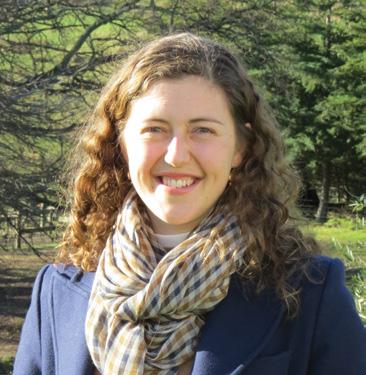
Rabobank expects the NZ lamb schedule to continue to recover to just above the five-year average in the coming months – it’s currently sitting just under.
“New Zealand has actually taken market share off Australia in the USA in the last few years, whilst Australian lamb supplies were recovering from the effects of drought.”
Steven said the USA is a very
important lamb market to Australia. NZ does compete there with highervalue cuts, such as racks, but NZ cut sizes are generally smaller.
While Australia could focus on Europe, Steven said Europe is still challenged by tough economic conditions. Additionally, Europe is a very small market for Australian lamb.
“We have way more quota into the UK and Europe than Australia, and we are currently not filling our EU or UK quota, rather, we are sending it to China because that is where demand has been.”
Steven said the USA and China are probably the main markets where Kiwi lamb competes with Australian lamb. In 2022, 206,000 tonnes (t) of NZ sheep meat was exported to China at an average price of $7.65/kg FOB (free on board). This was down from $8.19/kg the previous year.
The Australians eat a lot of their own lamb. In 2022, of the 702,000t of sheep meat produced in Australia they consumed 207,000t – almost a third. About 340,000t of lamb was exported. MLA reported late February that the mutton slaughter was sitting at 59,000 head/week, or 52% above 2022 figures.
Steven said MLA is forecasting 22.6 million lambs to be slaughtered for 2022/23 compared to its Kiwi counterpart Beef + Lamb NZ’s forecast of 17.6 million in NZ.
Country-Wide | APRIL 2023 45
Rabobank analyst Genevieve Steven.
OR NOT TO LEASE TO LEASE
It pays to crunch the numbers and weigh up your options before deciding to buy or lease your tractor, Kerry Dwyer writes.
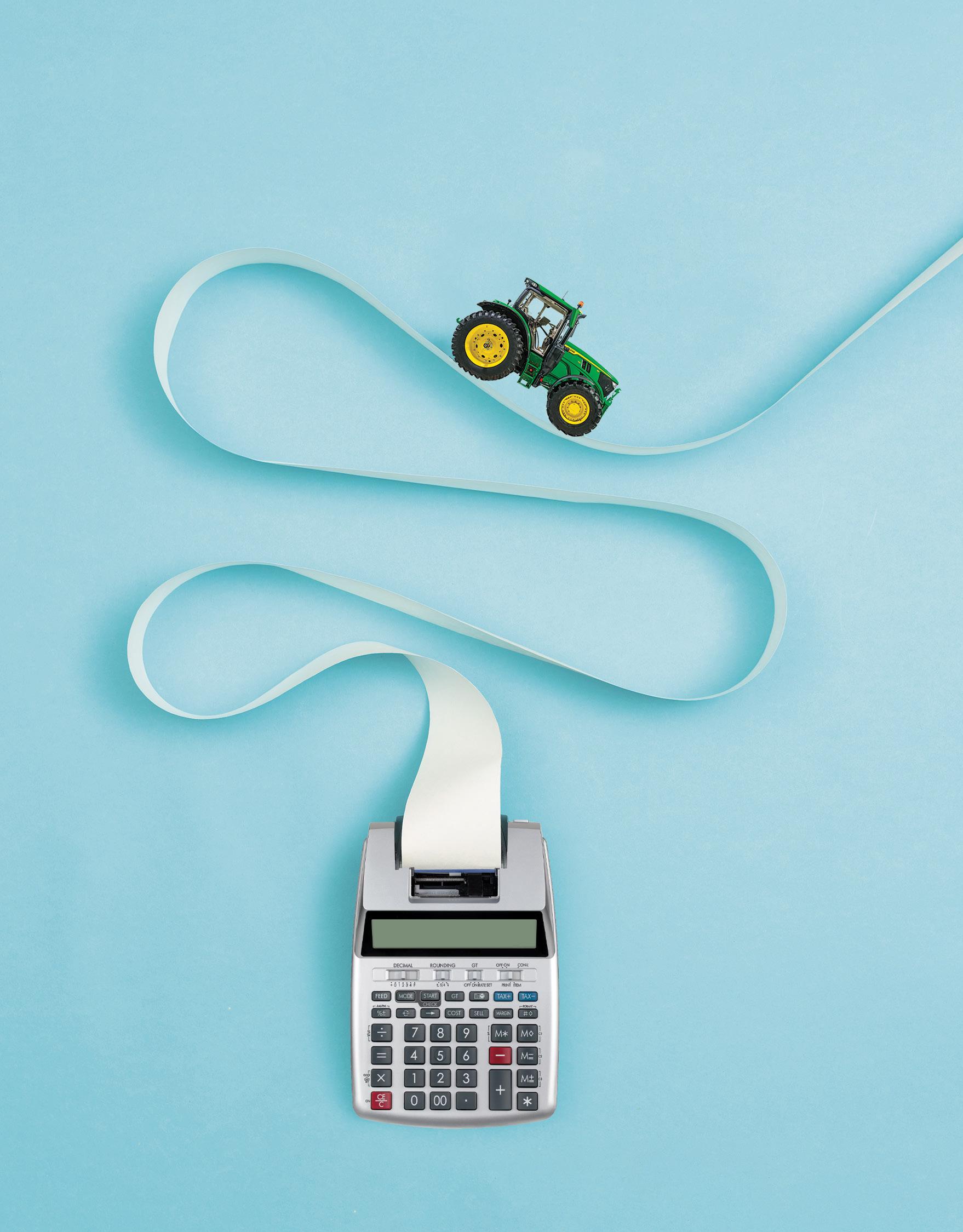
COSTS
Irecently wrote about the costs of buying and running farm tractors, but we can also look at leasing as an alternative to buying because there is no capital outlay required. That means the impact of interest rates, devaluation, depreciation and some repairs and maintenance is carried by the owner (the leasor) rather than the leasee.
For a farm tractor of 140hp, with a front-end-loader, I found a fairly tight range of quotes for tractor leasing, with some variety as to any additional costs. Some covered service costs and some didn’t. All were on a dry hire basis, meaning the leasee paid all fuel, oil and driver costs. And all were based on a set number of tractor hours; running over that number incurs additional cost but under that does not reduce the lease cost.
Leasing is an attractive option if you don’t have sufficient capital to buy a new tractor, as a 140hp FEL tractor is going to cost about $200,000 to buy new. For some contractors who are clocking up 2000 hours a year it looks to be a very
good option because there is a large replacement cost with that number of hours.
In my article on owning tractors (Country-Wide February 2023) I worked on the basis of a 140hp FEL tractor for general farm use, doing 500 hours a year. That it is bought new with half the funding coming from sale of the previous tractor and that a cost of driver is included in the total running cost. The figure I came to was $172/hour running cost, which is variable depending on all the financing, labour, fuel use, etc, however it gives a basis that you can work out the figures for your situation.
IF YOU ARE IN THE BUSINESS OF LEASING TRACTORS OUT, THE RELEVANT FIGURES NEEDED ARE:
Original value of the tractor
Likely value at the end of a lease period
Depreciation rate on the tractor
Interest to be charged against the original value
Any major risks to the integrity of the tractor e.g. destruction.
I am not an expert on tractors so cannot compute these figures, but the people in the industry do. The standard leasing model is based on the tractor doing enough hours to make sense of the annual depreciation i.e. a $200,000 tractor depreciated at 13%p.a. incurs a cost of $26,000/year if it sits still. If it does 500 hours/year that is a cost of $52/hour whereas that reduces to $32/hour if it does 800 hours/year.
Leasing a tractor to run for 500 hours/ year is no cheaper than owning one, on the basis used in my previous article. The comparison is shown in Table 1.
Tractor leasing is based on an agreed number of hours used, with a monthly payment on that basis. Using the figures above, if the tractor was used for 800 hours/yr the total cost reduces to about $150/hour, because the monthly lease cost is spread over more hours of use.
THE ADVANTAGES OF LEASING TRACTORS ARE:
No capital outlay required
The lease cost is all tax deductible
No replacement cost when finished with that tractor, go rent another
Access to new tractors with new technology and efficiency.
The main disadvantage is that it has to be used for enough hours to make sense of the depreciation factor incurred by the owner you are leasing it from.
Kerry Dwyer is a North Otago farm consultant and farmer.
Country-Wide | APRIL 2023 47
Own tractor cost/hour Leasing tractor cost/hour PURCHASE PRICE for a 140hp tractor $210,000 INTEREST On half the purchase price 8% p.a $17 DEPRECIATION 13% p.a. $55 LEASE COST $80 DRIVER COST $40/hr $40 $40 SERVICING $30,000 per 5000hrs $6 $6 TYRES 4 sets per 5000hrs $3 MAINTENANCE $1 $1 DIESEL 20litres/hr @ $2.10/litre $42 $42 INSURANCE $8 $8 TOTAL $172 $177
Table 1 Owning vs leasing tractors based on 500 hours/year
Award winners a White wash
BY: TONY LEGGETT
Two Taihape farming couples were in the running for this year’s Wairere Central Districts Red Meat Farm Business of the Year Award.
And it was second-time entrants and last year’s runners-up Derek and Leanne White (pictured) who claimed the silverware ahead of nearby farmers Mairi Whittle and Hayden Tapp.
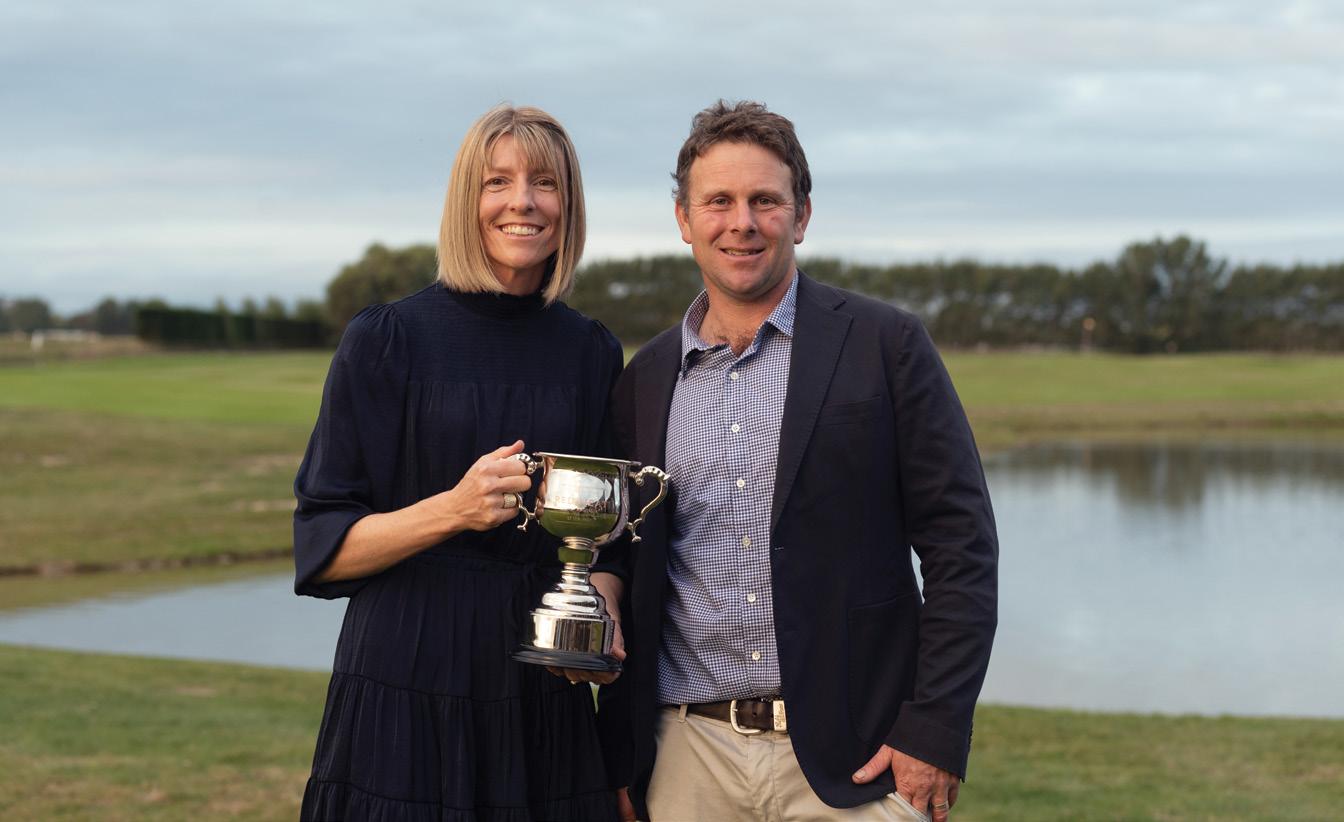
The Whites farm 20 minutes north of Taihape on 435ha (effective) of hill country ranging from 560–800m above sea level, running 3000 ewes plus hoggets and 100 cows and progeny at about 12 stock units/ha over winter.
Lamb weaning percentage is a big driver of income for them. A cropping/ re-grassing programme supports the higher stocking rate through the winter months before lambing.
The Whites achieved an economic farm surplus (EFS) of $897/ha in their 2022 financial year. They have clearly defined short-term goals and have a well-defined vision for future ownership succession with their three children.
Competition co-judge Sean Stafford says the Whites are performing strongly across all aspects of modern farm business practice.
“The complexity of running a really good red meat business has ramped up in the past five years,” Stafford says.
“To be an exceptional sheep and beef farmer these days, you need to be an outstanding businessperson.”
He says farmers need to be extremely passionate about what they are doing and be ready to adapt to a changing landscape.
To take out a competition like this a farmer needs to be extremely talented.
“That’s what has differentiated the winners from the other finalists,” he says.
The judges also noted how well Derek and Leanne operated as a team by playing to each other’s strengths and how adaptive they have been to changing regulations that impact their farming business.
It was tight control of farm working expenses and consistent livestock performance that helped set this year’s Keinzley AgVet Wairarapa Farm Business of the Year winners apart from two other strong finalists.
First-time entrants Tim and Binds White entered after some encouragement. They say the experience of preparing for the two rounds of judging produced enormous rewards for them and their two children, Grace (24) and Maggie (21).
“Entering the competition took us right outside our comfort zone,” Tim says.
He says at their age and stage they wanted to reflect back on their experiences in farming and set the scene for where they want to go in the future.
Bind says winning the coveted award was a wonderful bonus after the huge rewards they received from preparing their entry and going through the two
judging rounds.
Their 410ha (effective) runs a highperformance sheep flock, mating ewe hoggets and finishing all lamb progeny, and trading cattle. In the 2022 financial year, they achieved their goal of a $900/ ha EFS from gross farm revenue of more than $1700/ha and farm working expenses were just 37% of that.
Their financial performance puts them consistently in the top 10% of the BakerAg FAB analysis.
One of the final round Wairarapa competition judges, Katie Wyeth, says the Whites’ entry stood out for many reasons, apart from its outstanding financial performance, careful cost control and consistent livestock performance.
Wyeth says it was just an exceptionally well-run farm, all round. Tim and Binds have clear roles. They are committed to achieving their goals and their entry showed that scale is not always better.”
“They’ve put years into creating a beautiful farm; they’ve ticked off some big projects and they have more to do as well.”
Wyeth says they are also a very proud farming family, they value their land and everyone involved with it.
A field day will be held at Derek and Leanne White’s farm at 425 Waiaruhe Road, Taihape, starting at 9.45am on Wednesday, April 5.
48 Country-Wide | APRIL 2023
AWARDS
In autumn, Arron ensures he completes soil tests, applies the right fertiliser and sows oats ready for feeding stock in winter.
As Carnoustie Farm is a unique operation, he appreciates bouncing ideas off his Technical Field Representative Darryl and tapping in on his knowledge of different crops.
With Darryl coming up with plans A, B and C for the farm’s agronomy programme, from there they both decide on the best fit for the paddocks.
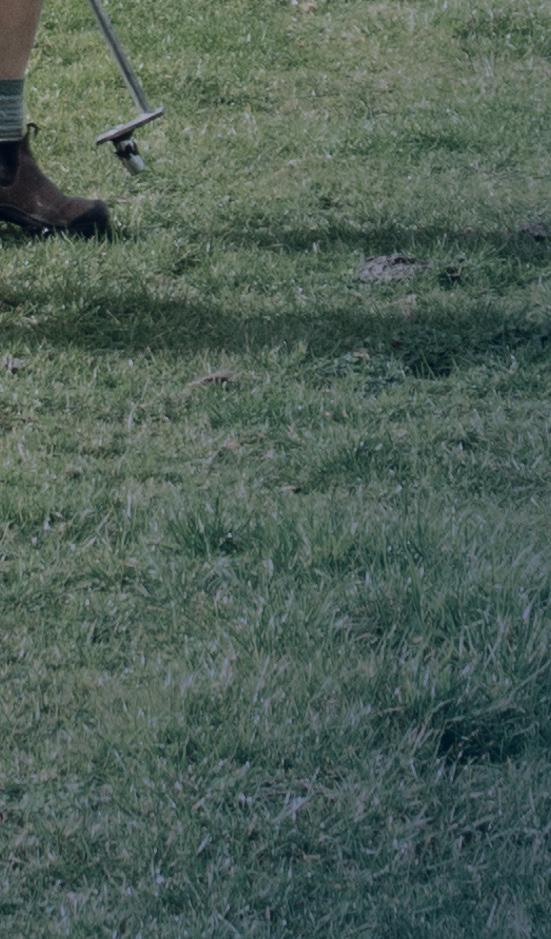
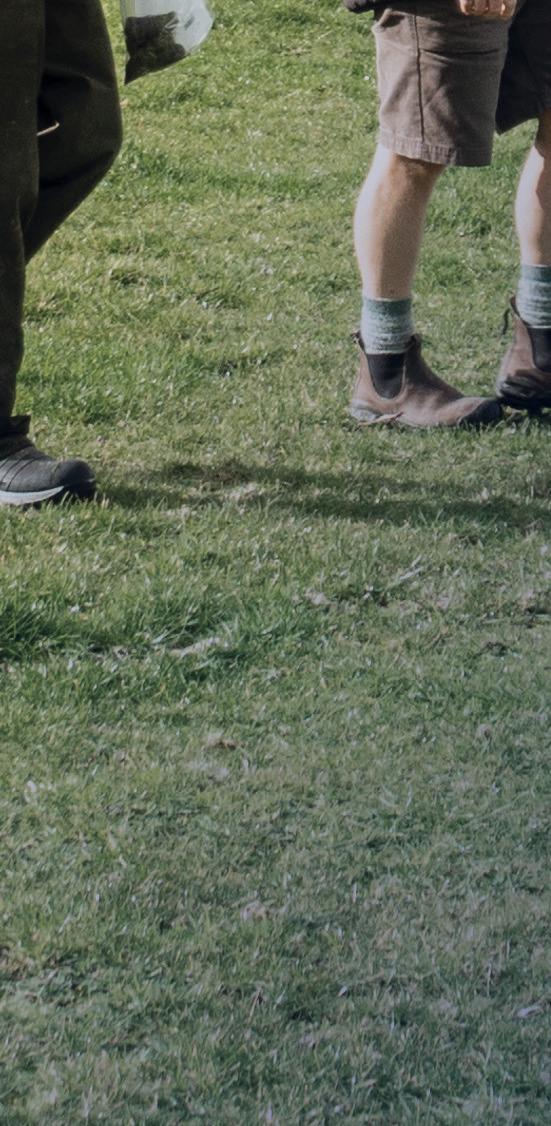

GROUNDED IN EXPERIENCE


With over 100 Technical Field Representatives nationwide, our team is on-farm daily delivering tailored agronomic advice and solutions. Find your Darryl this season.







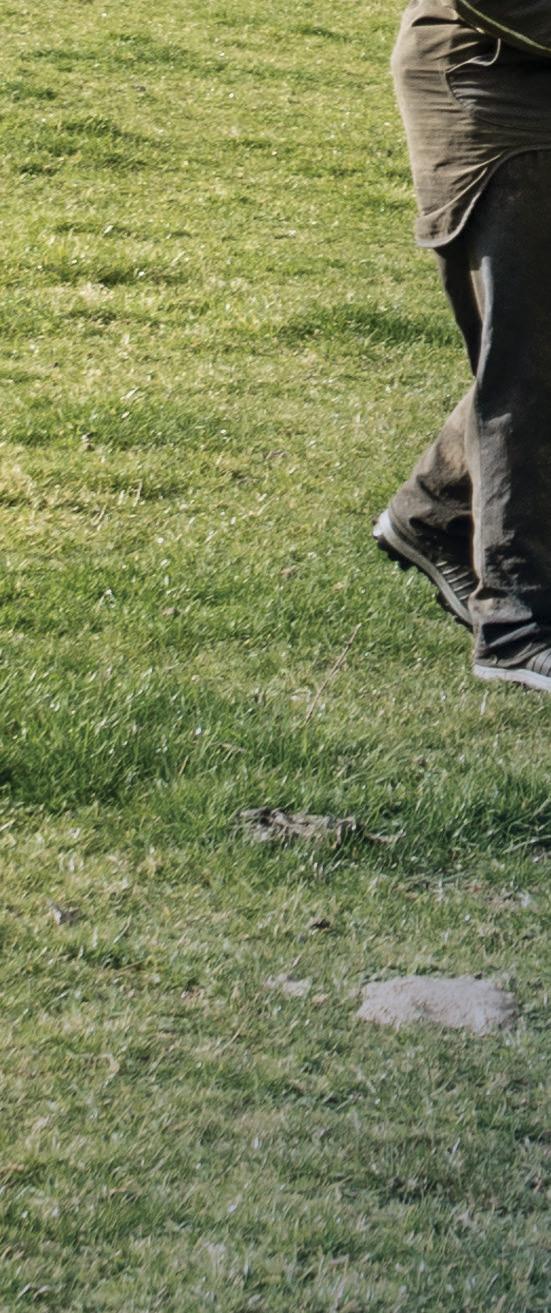





Country-Wide | APRIL 2023 49
Helping grow the country Freephone
10 22 76 store.pggwrightson.co.nz
0800
methodology. the
The methodology for calculating inflation and interest rates: is it time for a rethink in volatile times?
 By Victoria Rutherford.
By Victoria Rutherford.
INFLATION
The impact of rising inflation and the interest rate hikes designed to kill it have raised questions about whether the methodology used by the Reserve Bank of New Zealand (RBNZ) to measure inflation and set interest rates is outdated.
Timaru-based New Zealand Agri Brokers (NZAB) director Andrew Laming says his business uses mechanisms which could be improved, such as adopting inflation measurements monthly rather than quarterly. This would help avoid the lag time and address where the current approach may lead on to unintended impacts in future.
“The lagged nature of our system is quite startling. We probably haven’t cared about it before because we’ve never seen such quick or dramatic shifts in inflation. It simply wasn’t that volatile.”
To understand why this is an issue, we need to look at how inflation is calculated, Laming says.
Inflation occurs when demand for goods and services in the economy outpaces supply. High inflation dents our trust in money – if we believe it won’t be worth a similar amount in the future it starts to lose its “trust”.
Inflation is calculated by Stats NZ, examining a “basket” of goods and services and their change in price over time, presented as a Consumer Price Index (CPI). At 7.2%, it’s well above the 1-3% mandated by the RBNZ.
Laming identifies three key areas where improvements could be made.
CPI is measured over a 90-day period and looks backwards
The CPI for the Dec 2022 quarter was 7.2%. In October last year households were paying an average of only 4.07% on their home lending as they still had fixed rates in place.
“Household savings were still semi-high and [Reserve Bank governor] Adrian Orr hadn’t delivered his November monetary statement reprimanding public spending and talking of significant further increases in rates. In other words, people hadn’t changed much at this point.”
In countries such as the USA, CPI is measured monthly and Laming believes adopting this system would be a good start.
CPI records a change in price, not volume
The calculation methodology measures the changes in price of goods or services, but it doesn’t measure the change in volume of how many or how much they’re purchased for. They are weighted, but that weighting only changes every few years.
“If food prices (which make up about 19% of the index)
go up for the year by 10% but we all collectively spend 10% less because we can’t afford as much (meaning purchasing volume goes down), this registers as a 10% increase in inflation (for that category) even though we may have spent a similar amount to the previous year.
“Economics eventually solves this – that is, if we all start buying less of something that costs more, that ‘in theory’, with all else held equal, might lead to a build-up of stock of that item, which would then mean prices would go down to bring supply and demand back into equilibrium. But that takes time to work through – again, ‘a lag’.”
Fixed rates – average interest rates on home loans are still low (but rising fast)
About 50% of all fixed rate loans will come off this year. In November 2022, the average rate (a mix of historical fixed rates) was only 4.07% and an estimated 4.5% by the end of Jan – while the current short-term re-fix rate is much higher at 6.5%. In short, the impact on spending in the economy is set to intensify.
Given the high use of fixed rates by New Zealand homeowners, albeit short in length (1-3 years), Laming says you could effectively put up the Official Cash Rate (OCR) to 10% and it wouldn’t make much difference to how much a homeowner is paying in interest right now.
“This comment is an extreme example, as it would scare the population into spending less due to fear of the future –but the point is that it takes time for the increase in OCR to work its way into actual spending habits. You must be patient to see its effects as it flows through the fixed curve.”
The impact is happening quicker in farming and in business where loans are typically floating, commercial-type products and they see rises as the 30- or 90-day bill goes up.
Laming says the lagged nature of this system is startling. There are OCR decisions being made using a period of time that has well passed, using methodology that doesn’t fully capture people’s reducing spending habits. That doesn't even have an impact on the wallet until sometime in the future.
It’s important to remember a lag can work both ways too, Laming says. “When we need to kick-start our economy again due to low GDP, an OCR drop will take time to filter back through the economy. We run the risk of locking in the pain for longer with these dramatic shifts in OCR.
“History is not always a good guide for future results, and all of this could be completely wrong if we’re not out of this inflation spiral yet,” he says. “But whatever the actual answer is, our current lagged methodology for setting rates based on historical data requires a rethink.”
Country-Wide | APRIL 2023 51
1 2 This story has been edited for length and clarity – for the full article go to www.nzab.co.nz
3

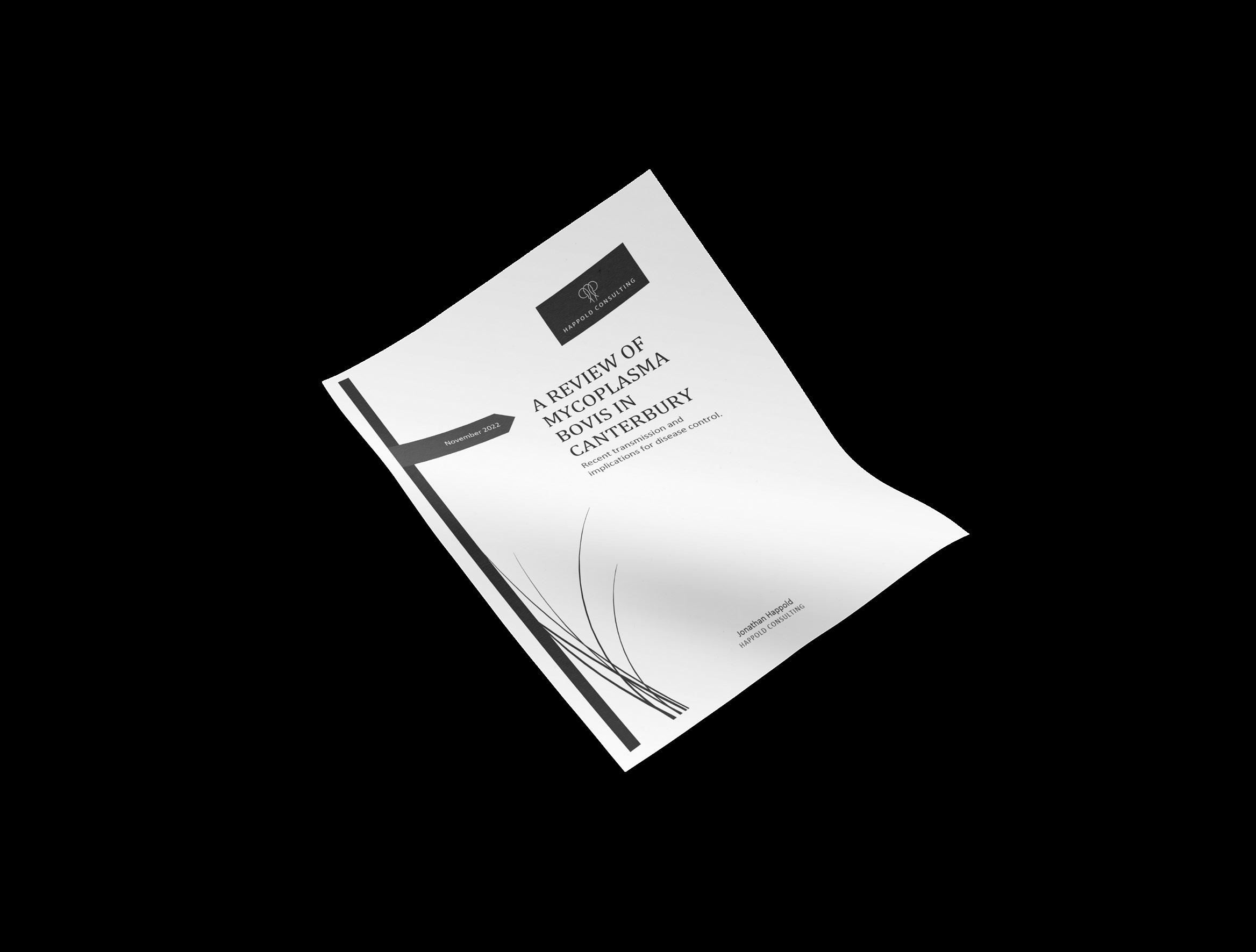
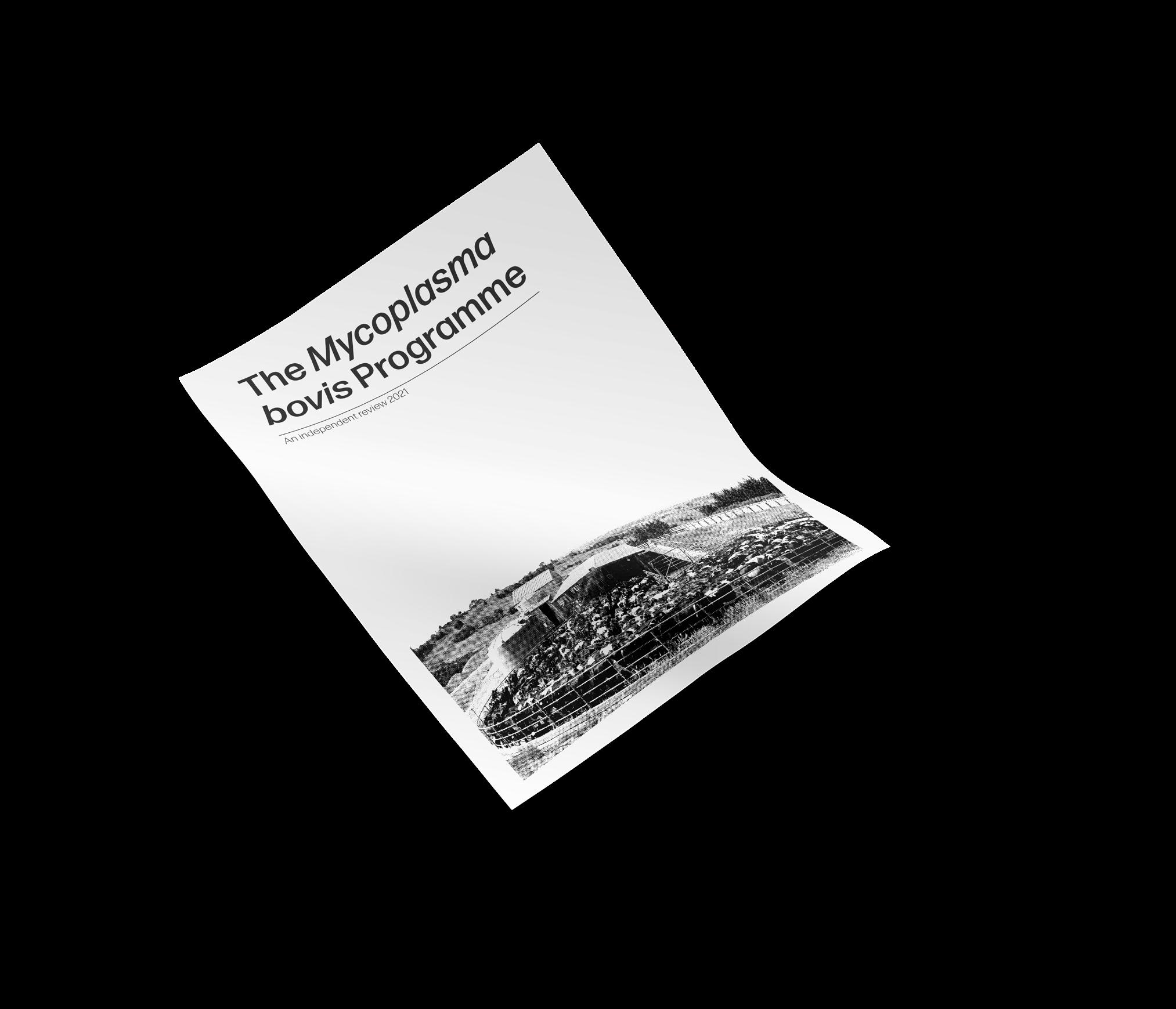
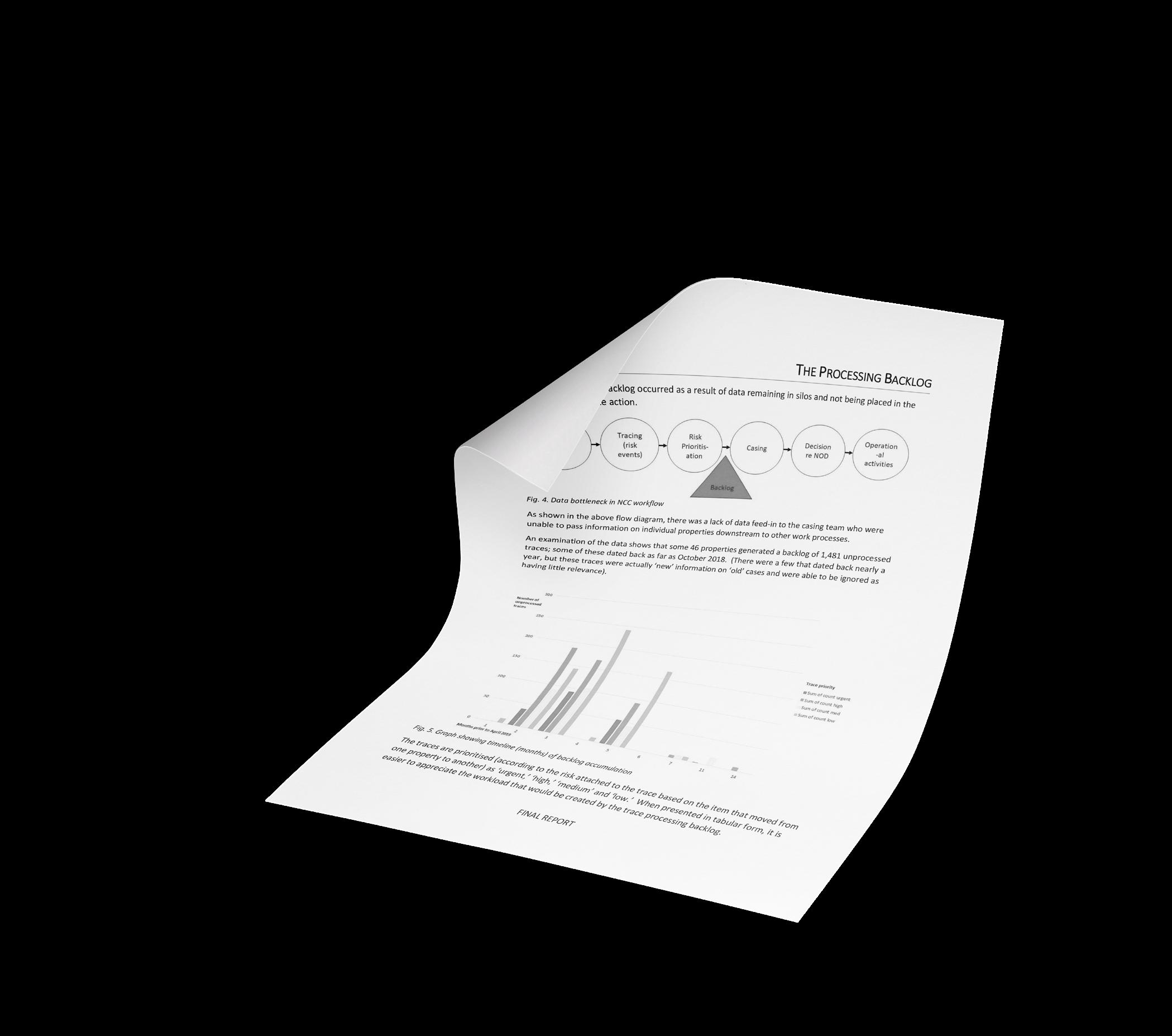

It has been six years, close to $700 million and over 19 released reports since the Ministry of Primary Industries (MPI) started dealing with mycoplasma bovis (M bovis) on New Zealand farms.
MPI’s dedicated M bovis website (www.mbovis.govt.nz) is teeming with the partially redacted musings from the advisors, researchers and reviews of the programme. Guess who foolishly volunteered to read them all?
It’s not all bad, there were some juicy bits left amongst the grey boxes they paste over information deemed too sensitive for public release. I have picked through the reports and tried to put together a summary. A review of the reviews if you will.
SEPTEMBER 12, 2004 A 22-month-old Dexter born to an imported Australian dam dies of pneumonia. This may be NZ’s first case of M bovis. We’ll get back to this later.
2007 A national survey of 244 bulk milk samples were randomly tested for M bovis DNA and living mycoplasmas. Nothing is detected.
JULY 17, 2017 A vet treating sick cattle on a South Canterbury dairy farm owned by the Van Leeuwen Dairy Group contacts the exotic pest and disease hotline about suspected cases of M bovis. The cows have developed alarming high rates of mastitis and many have developed arthritis in one of their front legs.
JULY 21, 2017 MPI confirms that this is a case of M bovis. All 16 farms in the Van Leeuwen dairy group are placed under movement control. This is the first notified case of M.bovis in NZ. Later analysis will reveal that the disease has already been in the country for at least 18 months, but for a while experts believe they have found the epicentre of the outbreak.
JULY 31, 2017 M bovis is detected on one of the other Van Leeuwen Dairy Group farms.
AUGUST 11, 2017 NZ’s M bovis testing creates a worldwide shortage of testing kits for the disease.
AUGUST 29, 2017 Three more South Canterbury farms are designated infected.
OCTOBER 12, 2017 The governance group decides to depopulate 5500 cattle from affected farms at an estimated cost of $16.5m.
PGG Wrightson agrees to carry out valuations needed for compensation of culled cattle.
OCTOBER 31, 2017 MPI suspends the live animal Import Health Standard for live cattle. This is mostly symbolic since imports are only allowed from Australia and no one has ordered any Aussie cattle since 2013.
NOVEMBER 2017 There is an “Analysis of risk pathways for the introduction of Mycoplasma bovis into New Zealand” report investigating the ways that M bovis may have entered the country. The authors are redacted in the public copy, probably on account of how much heat the report receives in subsequent reports. At this stage seven farms are known to be infected: five of them part of the same business. The report investigated seven potential pathways that M bovis might have reached NZ: imported live cattle from Australia, imported frozen semen, imported embryos, imported feed, imported used farm equipment and the importation of other (not cattle) animals.
Yes, that only adds up to six, MPI has chosen to redact one of the methods which I assume is “animal remedies”. The report does not rule any of these pathways out. From genomic sequencing it looks like this strain has originated in Europe, although there is no definitive match with overseas strains. The authors seem convinced that the first farm with M bovis’ symptoms (“the index farm”) is the epicentre of the outbreak. With the benefit of hindsight we can see that they are barking up the wrong tree. But to be fair to them, the cows on the index farm were going down with weird symptoms at an alarming rate not seen on any other farm.
The authors reveal that M bovis DNA was detected in imported semen, but they could not culture any living M bovis bacteria from the semen straws. So, it seems likely that M bovis is killed when the semen is processed and frozen prior to importation. The authors muse that the high prevalence of M bovis overseas and the amount of artificial insemination taking place with imported semen mean that M bovis should be a much larger problem if this is a plausible route of infection.
The idea of the disease coming in on imported cattle seems a little far fetched. No live cattle have been imported since 2013 and even in the 10 years leading up to that there were only 110 consignments from Australia, so probably not that. Something
Country-Wide | APRIL 2023 53
In part four of the Mycoplasma bovis series, Nicola Dennis delivers a timeline that delves into the detail – the good, the bad and the ugly – as New Zealand battled to control the M bovis outbreak.
has also been redacted from the discussion on imported sheep and goats, but from context clues, I think they view that risk as negligible. They recommended more study into the infection risk of semen and embryos, as well as locating records on imported cattle. Tracking down the imported cattle records was eventually done in June 2019, finding two alarming, but ultimately unimportant, potential cases of historical M bovis infections in NZ.
DECEMBER 2017 Infected cattle are traced back to Alfons Zeestraten’s Southland business, Southern Centre Dairies. From here on in, this will be the new assumed epicentre, taking the heat off the Van Leeuwen Dairy Group. The heat comes on everyone else though when the first North Island farm tests positive in Hastings. The Technical Advisory Group (TAG) is having its first meeting when this bombshell hits.
TAG is not a fan of the risk pathways report, saying it “added little useful information germane to this outbreak”, but agrees that imported semen is an unlikely source of infection. TAG notes that overseas donor bulls are required to have never tested positive for M bovis, but there is no requirement to actually test the bulls in the first place. That seems like an oversight, but the symptoms of the infected cows on the Van Leeuwen property (i.e. limping on one front leg in late pregnancy) doesn’t fit well with being inseminated with infected semen nine months prior.
TAG supports eradication, and reports that in other countries eliminating M bovis from a herd has not been successful. So the group recommends whole-herd culling and the 60-day stand down period that would ultimately be adopted. TAG also notes that the evidence points to one or two disease clusters and that the programme should aim to complete national eradication no later than mid May 2018!
TAG also recommends that MPI resolve “major deficiencies in the practical operation” of the NAIT tracing system.
They were somewhat keen on establishing disease-free zones, although they are impaired from doing so because they are still not sure they have found the source of the original infection.

At this stage we are still another three months away from the government committing to an eradication programme, so there is some discussion about different schemes. TAG says that a non-government control programme would need a better bulk milk test; there is a level of crystal-ball gazing needed when interpreting M bovis test results. TAG says a voluntary scheme is unlikely to be adopted. Ignoring the problem is also an option the group says. “There are no historical examples where a national government has funded a disease eradication campaign for a disease not listed by the OIE and there are no human health, food safety or trade implications.” Yes it sounds like TAG is taking a dollar each way about eradication, but doesn’t have enough information to do much else. It’s obvious from this report and the previous TAG report that TAG is a little grumpy about not having access to the government’s cost/ benefit analysis and better information about how the disease got into the country.
2018
The year of the drawn-out eradication decision
FEBRUARY 2018 It’s time for another TAG report. It is now hypothesised that the M bovis incursion occurred in mid-2016 or earlier. There is a backlog of 200 herds with animal movements to or from infected properties to be tested. Each of these properties is generating another 20–30 new farms to look at. MPI anticipates that it can complete outstanding trace visits before “Gypsy day”. There is no history of the infected farm using imported semen. The majority of TAG still believe that eradication is feasible and desirable, although the scale of the effort has increased substantially.
TAG seemed to have been asked about the prospect of declaring the North Island to be M bovis free. They are cautious about this suggestion (which puts them on the right side of history).
26 MARCH 2018 MPI declares it will cull 22,300 cattle on the 28 farms that have tested positive so far. An extra $85m (of which $50m is compensation) is found in the government coffers. MPI also provides a short list of responses to some of the TAG’s recommendations. The highlights are that MPI says it can’t investigate how the disease got into NZ in greater detail until it knows it has worked out which farm has started it all. MPI also can’t “complete eradication by mid-May 2018” because it says that the scale of the infections has increased considerably and it can’t make a decision on eradication before mid-May.
APRIL 27, 2018 Another TAG report. It says eradication still appears feasible, given the distribution of cases so far. There has been a study testing cattle carcases from 720 farms at the
54 Country-Wide | APRIL 2023
meat works and so far anything suspicious looks like false-positives. The TAG report concludes that the number of infected beef farms is probably low. (Though hindsight being 20:20, we can see that the majority of infected properties are categorised as “beef” in the M bovis stats).
We are still another month away from the Government making a decision on eradication, so there is plenty of discussion on this. TAG says that the programme will need to run for at least five years and the public will need to be warned that cases will be popping up for years to come. If eradication is to be attempted, TAG recommends a go/no decision point in spring 2018, this is when the bulk milk tank results will start coming in from the dairy farms. That should give a lot more information on the size of the problem.
IN BRIEF: A REVIEW OF THE REVIEWS
As part of a national study 353 dairy cows were randomly tested for M bovis antibodies by Central Animal Health laboratory. No M bovis is detected.
The TAG recommends someone undertake modelling of disease spread. And yes, they would still like to see the economic impacts of the disease under various control strategies. TAG knows some economic modelling must have been done and they would really like to see it. I would love to see it too. In the hundreds of pages of report releases I had to dig through for this, it never once makes an appearance. Also missing in action is the definition of success for an eradication plan which the TAG repeatedly calls for over the next few years. You might think that the definition of success is something like “ding dong the disease is dead”, but it’s not that simple. You can’t prove the absence of something, especially with M bovis which spends most of the time just chilling. M bovis is a part-time disease with an excellent work-life balance. The TAG is happy to give examples of success, “For example, the objective might be 95% confidence that the national herd prevalence is less than 2%”, they say. The report shows that after the TAG meeting, MPI informed them that cleaning up infected properties is not going well. Considerable effort has been spent cleaning equipment that has had limited contact with animals. Cleaning of yards and buildings has been extremely time-consuming, with it taking more than 60 days on some properties to complete two rounds of cleaning including the two-week drying period, after which time the 60-day stand-down begins. In practice therefore, farms are experiencing a stand-down in excess of 120 days. It is costing $100,000 per farm to dispose of the contents of effluent tanks. MPI has therefore proposed changes largely around when the 60-day stand-down period before repopulation begins. Pasture stand down will now begin once all animals leave and they will move to a single round of cleaning for plant and buildings.
MAY 17, 2018 Another month, another TAG report. This time there is some division in the team. Nearly half the TAG members (4/10)
A national survey of 244 bulk milk samples were randomly tested for M bovis DNA and living mycoplasmas. Again nothing is detected.
US researchers first discover M bovis.
2007 2016
Exercise Akuaku goes ahead.
1961 1995 2004 2015 2017
SEPTEMBER 12
A 22-month old Dexter dies of pneumonia. This may be NZ’s first case of M bovis.
MARCH
Another NZ cow dies in a suspected M bovis case.
AUGUST
NZ’s M bovis testing creates a world wide shortage of testing kits. Three more South Canterbury farms are designated infected.
OCTOBER
The governance group decides to depopulate 5500 cattle from affected farms at an estimated cost of $16.5 million. MPI suspends the live animal Import Health Standard for live cattle.
DECEMBER
Infected cattle are traced back to Southern Centre Dairies. From here on in, this will be the new assumed epicentre.
JULY 17
A vet treating sick cattle on a south Canterbury dairy farm contacts the exotic pest and disease hotline about suspected cases of M bovis.
JULY 21
MPI confirms that this is a case of M bovis. All 16 farms are placed under movement control. First notified case of M bovis in NZ.
NOVEMBER
“Analysis of risk pathways for the introduction of Mycoplasma bovis into New Zealand” report. Seven farms are known to be infected, five of them part of the same business.
Country-Wide | APRIL 2023
"TAG knows some economic modelling must have been done and they would really like to see it. I would love to see it too."
now believe that eradication is not rational given the current number of cases. The six others believe that eradication is still technically feasible since the epidemiology remains unchanged; however they have concerns about the rate of ongoing infection compared with rate of identification, concerns about REDACTED and serious concerns about ongoing social effects of eradication. Of the six TAG members who still believe that eradication is achievable, there is a diversity of opinion about what point it would be deemed unfeasible. At this stage there are 38 identified affected farms and a handful of cases in the North Island. There are 252 high-risk farms yet to be tested. Farm depopulations have thus far been slow and TAG questions whether MPI has enough resources available to undertake depopulation. However, no new clusters have been identified, which is encouraging – although at this point testing is limited to farms identified by animal movements and bulk milk testing. There is still no surveillance of the beef population underway.
MAY 28, 2018 – Today is the day that the Government announces a decision to eradicate Mycoplasma bovis. It is expected to take 10 years and cost $886m and the culling of 126,000 cattle. “Senior MPI leaders and industry participants interviewed [for a July 2021 review] stated that the response grew from nothing, to over 400 staff, within a year of initiation.” A condition of the Government agreeing to eradicate M bovis in May 2018 was that industry bodies signed up to a cost-sharing arrangement under the GIA (Government Industry Agreement (for Biosecurity Readiness and Response)).

As a result, DairyNZ and Beef + Lamb New Zealand became signatories to the GIA. The GIA provided a mechanism through the Biosecurity Act 1993 to seek approval from farmers for a biosecurity levy to pay for the M bovis response. The Government commits to meeting a very specific 68% of the eradication cost, with DairyNZ and Beef and Lamb sharing the rest of the costs. This is the first, and last time, that anyone sees any sort of cost-benefit analysis. The Government says
that opting for long- term management of M bovis would cost $1.2 billion (presumably over 10 years) and not doing anything would cost $1.3b in lost production over 10 years. We can all agree that $886m in eradication costs is smaller than $1.2 or $1.3b. But that’s all the information we have. Spoiler alert: there are budget blowouts ahead for eradication.
JULY 2018 Government announces an investment of up to $30m over two years for science to support the eradication effort. The dairy cows are back in the milking shed, so the national bulk tank milk testing begins for the season. M bovis pops up in Northland. There are discussions with the four largest processing plants in the South Island regarding costing schedules and extra charges for processing M bovis animals. For whatever reason, MPI has spent a bit of time trying to personally convince me that they have not paid meat processors anything. Government departments have strange hobbies. Anyway, July 2018 is also when it becomes compulsory to tell the neighbours that there is M bovis over the boundary fence.
AUGUST 17, 2018 The date at which MPI’s July 2019 review states that the four main processing plants agree to substantially reduce charges for processing M bovis animals. This would be the processor payments that MPI, under pain of the Official Information Act, deny ever happened.
AUGUST 24, 2018 ANZCO’s Five Star Beef feedlot is put under movement control after testing positive for M bovis.
SEPTEMBER 4, 2018 MPI mounts 10 charges against Alfons Zeestraten, the owner of Southern Centre Dairies in Southland relating to the importation of farm equipment in January 2018. They state that these charges are not related to M bovis, although this farm is believed to be the likely epicentre of the M bovis outbreak. Before the trial, four charges of unpacking a
APRIL 2023
"For whatever reason, MPI has spent a bit of time trying to personally convince me that they have not paid meat processors anything. Government departments have strange hobbies."
MARCH
2018
FEBRUARY
TAG report. It is now hypothesised that the M bovis incursion occurred in mid-2016 or earlier.
container without the permission of an inspector and introducing goods – an effluent pump – into a restricted place (I assume this is Zeestraten’s depopulated property) were withdrawn by the Crown. And halfway through the trial another four charges were dropped when the Crown told the judge it had no further evidence to give in relation to them. The remaining charges related to a container of fertiliser which was picked up from Port Chalmers in Dunedin without first being inspected by Fertiliser NZ in Winton Southland. Zeestraten is eventually discharged without conviction and sells the dairy company in December 2019.
DECEMBER 2018 The governance group becomes concerned that it is being fed erroneous information. Industry leaders start to hear from their own channels that stock movements are not being traced promptly, that numbers of potentially affected properties are increasing, and this is not being formally reported to governance. This backlog of cases will blow up over the coming months until publicly revealed in April.
MPI declares it will cull 22,300 cattle on the 28 farms that have tested positive so far.
APRIL
MAY
Another TAG report. This time there is some division in the team. Some TAG members now believe that eradication is not rational.
JULY
Another TAG report. They say that eradication still appears feasible, given the distribution of cases so far.
MAY 28
Today is the day that the government announces a decision to eradicate M bovis. It is expected to take 10 years and cost $886m and the culling of 126,000 cattle.
2019
The year of the backlog
JANUARY 24, 2019 After seven months of silence, the TAG reports are back and they have something to say about the programme. “While we understand that the scope of our work is primarily technical, we have commented on issues such as communication, social licence and staff fatigue. We have done so as we consider these as potential factors that may slow or derail eradication.” In summary, they feel that they have lost some strategic oversight. “For example, there was a greatly reduced involvement of experienced Wallaceville staff during the November 2018 meeting compared to our initial meeting in November 2017 and there were no experienced veterinarians from MPI’s risk assessment or animal import Directorates.” MPI will later commission many reports after the fact that tell them the same thing – that things are getting strained and confusing within the programme.
On the technical side of things, TAG is divided on whether imported semen should be further investigated as a cause of the outbreak. The NZ strain of the disease is associated with a strain that showed susceptibility to routine antimicrobials used in semen preparations and the TAG has “not been provided with any information to indicate that this is no longer the case”.
TAG is asked to comment on whether M bovis has been in NZ prior to the assumed 2015 kickoff date. To do this they review some historical cases of potential M bovis cases in NZ. They say that evidence of historical M bovis cases in NZ was presented to them in November 2018. This is the 2004 Dexter report I mentioned earlier. Results from his samples suggest he had M bovis. But it is unlikely that this animal led to the current outbreak. Another sample from an adult cow with pneumonia that died in 2015 has tested positive for M bovis antibodies. There are some musings about the accuracy of the tests in these historic samples and neither are plausibly linked to the outbreak. But TAG
Govt announces an investment of up to $30m over two years for science to support the eradication effort. M bovis now in Northland.
AUGUST 17
The date at which MPI’s July 2019 review states that the four main processing plants agree to substantially reduce charges for processing M bovis animals.
AUGUST
ANZCO’s Five Star Beef feedlot is put under movement control after testing positive for M bovis.
SEPTEMBER
DECEMBER
Industry leaders started to hear from their own channels that stock movements were not being traced promptly. A backlog of cases will blow up over the coming months until publicly revealed in April.
MARCH
MPI attempts to prosecute Alfons Zeestraten, owner of the farm believed to be the epicentre of the outbreak with unrelated biosecurity charges.
2019
JANUARY 24 TAG reports are back and they have something to say about the programme.
There are another 41 farms listed as infected. Total 143. APRIL Eradication programme now employs 423 staff, of these 110 work in the national control centre and 160 for AsureQuality. First case found in the West Coast.
Country-Wide | APRIL 2023 57
notes that if these cases had been tested earlier, then the alarm could have been raised about M bovis risk before NZ saw an outbreak.
TAG still has some grumblings about the lack of economic data provided. The group’s been asked to comment on the numbers used for economic models, but members aren’t allowed to review the models themselves. TAG also comments on the costs of disinfecting slaughter plants handling infected cattle, noting there is some “resistance from some [meat] works to handle these stock” but that new protocols for meat plants should help resolve this.
MARCH 26, 2019 M bovis programme director Geoff Gwyn says that there are another 41 farms listed as infected (bringing the total up to 143 at the time). He says they can’t link all the infected farms back to the initial farm, likely due to improper use of the national animal tracking system, NAIT. Farmers would argue that NAIT has never been fit for purpose.
APRIL 1, 2019 The eradication programme now employs 423 staff, of which 110 work in the national control centre and 160 for AsureQuality. West Coast has its first case.
APRIL 12, 2019 DairyNZ CEO writes to the Director-General of MPI formally seeking information on the casing backlog and the Government publicly admits to a huge (666 case) backlog in M bovis case reporting. Later, a follow up report will state that “farmers, veterinarians and MPI field staff and contractors claimed that they were alerting the National Control Centre since spring that farmers that had received animals from Confirmed Places had not yet been contacted (i.e. had not been cased). They believed their concerns were not given due
consideration and were not surprised by the announcement of a ‘backlog’.”
APRIL 15, 2019 Three days later the backlog is revised to 1100 properties of which 300 are deemed high risk and 800 medium or low risk. MPI’s science adviser is asked to review the reasons and impact of the backlog, and by the time this happens the backlog has been revised again to 1400 cases.
APRIL 25, 2019 Enough’s enough and the Director General of MPI spends his Anzac day weekend drawing up a “Reset” plan. As part of a ten point remedial action plan to get everyone talking to each other, an independent chairperson is appointed.
JULY 2019 There are two reports into the backlog. It transpires that none of the operational staff are surprised, but the backlog is news to upper management. Key reporting that was being undertaken by a Wallaceville epidemiologist has been lacking ever since they stopped inviting said epidemiologist to meetings. The cause of the backlog is a constellation of problems. There is a silo-type structure to the organisation and this discourages collaboration between different arms of the response. Data management is haphazardly taking place in individual spreadsheets across MPI and AsureQuality. There is no decision making at field level; all decisions are funnelled up to a slow and isolated National Control Centre in Wellington. Hastily recruited staff do not have the skills to deal with a disease response and veterinarians have been cut out of the loop. There’s a lack of a well-trained emergency response team to guide said staff – all in addition to generally poor management from an indecent management system that is only appropriate for short responses of a few weeks or months. Add the dog’s breakfast that is NAIT and farmer compliance to it. It was obvious in December 2018 that the caseload was ramping up, but little work was undertaken over the Christmas holidays and staff contracts expired at this point. The science adviser calls for more 49 extra staff, revealing that it takes one person approximately one-to-two weeks to trace the movements of one infected property.
SEPTEMBER 6, 2019 Milksolid levy comes into effect. Dairy farmers are charged 3.9 cents per milk solid for the M bovis programme. Background surveillance of the beef population begins with the testing of some animals coming onto the Five Star Beef feedlot.
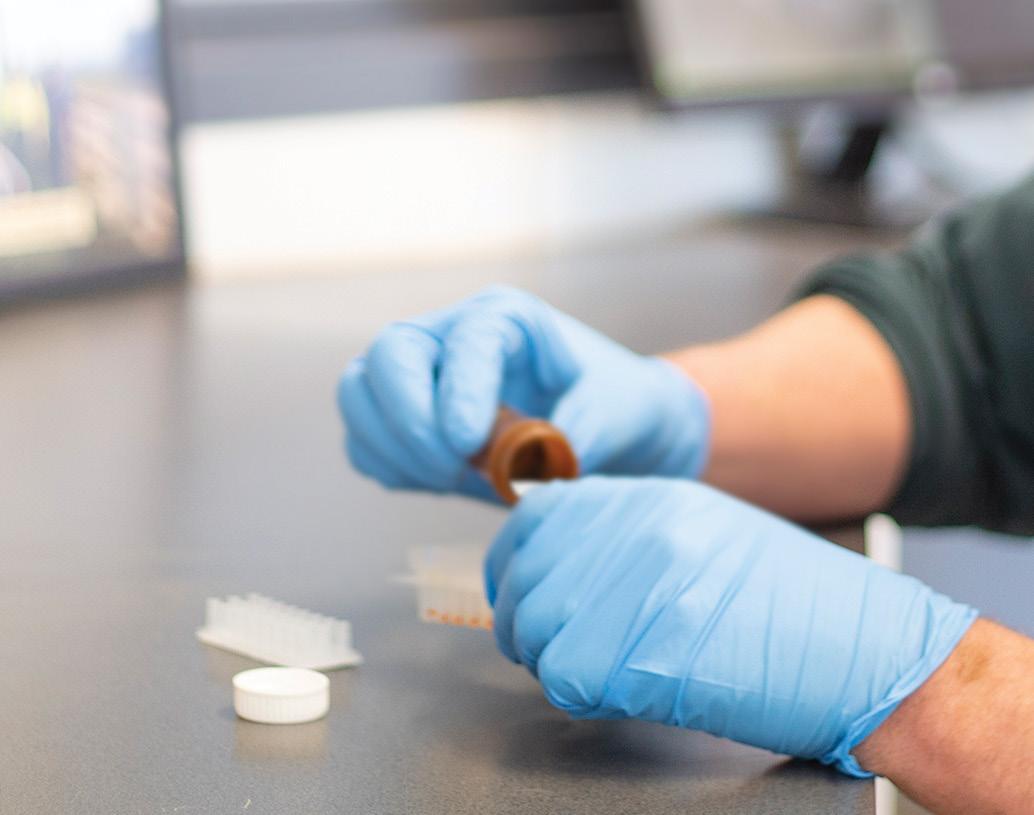
58 Country-Wide | APRIL 2023
MPI will later commission many reports after the fact that tell them the same thing – that things are getting strained and confusing within the programme.
OCTOBER 18, 2019 TAG is back and heartened to see that MPI has committed to changing the directorate structure, employing some additional veterinary epidemiologists, implementing a new information system and increasing the resourcing of communication. But it is too early to say if it is going well. TAG remains convinced that this outbreak is either from a single introduction or from a small number (three or four) closely related introductions of M bovis some time around 2015 or 2016. TAG is concerned there is still little surveillance testing for beef farms. They take an audience with Dr Keith Woodford whose blog on his independent investigation into M bovis is blowing up at the time. TAG notes that a number of clinical veterinarians report frustration with their inability to be able to provide technically sound information to herd owners and to understand the context for decision making about individual herds. While it is recognised that, because of confidentiality and resourcing issues, high levels of detail about every decision cannot necessarily be provided to herd owners or their veterinarians, a system enabling herd owners to provide permission for their veterinarians to be privy to, and involved in, discussions with response staff would be highly desirable.
NOVEMBER 2019 There is a $58.2m shortfall in funds to run the programme for the 2019-2020 financial year.
SOMETIME AROUND THE END OF 2019 Research looking into the onfarm symptoms of infected herds is completed. Of the 25 infected dairy farms surveyed, 13 (52%) had no discernable disease from M bovis, a further four farms were battling with mastitis that appeared to be environmental (bad weather, machine faults, etc), two farms had a couple of cows with arthritis, one had 50% of their dry cow mob affected with mastitis and arthritis in their forelimbs (which must be the first Van Leeuwen property), three other farms had higher than normal rates of mastitis. There were 37 calf rearers surveyed and they all seem to have reported symptoms in their calves to some degree, but they note that calf data is hard to interpret, because there are many common calf diseases and because some of these symptoms were exacerbated by calf movement controls. There was little to nothing to report on dry stock farms, lifestyle blocks and feedlots.
2020
The year of lockdowns and droughts
JANUARY 2020 Routine M bovis sampling at slaughter plants begins; it will last until the national lockdown in March coincides with a widespread drought, putting major pressure on cattle processing.
FEBRUARY 2020 In an update to Cabinet, the programme asks for two years’ funding worth $336.2m. Instead they receive one-year funding at $195.50m, including $53.2m in compensation. By March the programme’s contingency fund has been bled dry.
JULY 2020 On-farm testing of M bovis during TB testing is underway.
APRIL 12
Govt publicly admits to a huge (666 case) backlog in M bovis case reporting. Three days later the backlog is revised to 1100 properties. Further review shows 1400 cases.
JULY
There are two reports into the backlog. It transpires that none of the operation staff are surprised, but the backlog is news to upper management.
OCTOBER
First agricultural training programme for MPI office staff. TAG is back and heartened to see that MPI has committed to changing the directorate structure.
2020
JANUARY
Routine M bovis sampling at slaughter plants begins.
MARCH
NZ Covid lockdown. M bovis sampling in feedlot and processing plants is suspended. A large-scale drought is declared in both the North and South islands putting pressure on processing space.
APRIL 25
Director General of MPI draws up a “Reset” plan.
SEPTEMBER
$30m research investment reveals NAIT compliance is generally pretty good for lifestlye block owners.
SEPTEMBER
Milksolid levy comes into effect. Dairy farmers are charged 3.9 cents per milk solid for the M bovis programme. Background surveillance of the beef population begins.
NOVEMBER
There is a $58.2m shortfall in funds to run the programme for the 2019-2020 financial year.
FEBRUARY
The programme asks for two years funding worth $336.2 million. Instead they receive one-year funding at $195.50m, including $53.2m in compensation. By March the programme's contingency fund has been bled dry.
JULY
On-farm testing of M bovis during TB testing is underway.
2021
MARCH
TAG report is back. The programme is down to 10 infected herds, after depopulating 261 farms.
APRIL
Van Leeuwen Dairy Group, the company with the first identified M bovis cases, goes into receivership.
Country-Wide | APRIL 2023 59
SEPTEMBER 2020 As part of the $30m research investment, researchers survey 286 commercial cattle farmers and 152 livestyle owners, revealing NAIT compliance is generally pretty good for lifestyle block owners who own (a median of) two dairy cattle or seven beef cattle that barely go anywhere. More than 70% of lifestyle block owners report never taking cattle off the farm prior to taking them for finishing or slaughter. On a less wholesome note, 8% of lifestylers and 14% of commercial farmers with pigs admit to feeding uncooked meat to pigs, which is a pathway to picking up serious livestock diseases. Both sets of farmers listed veterinarians as their most trusted information source. Leagues ahead of research institutes and industry bodies, which were the next runners up. MPI barely scrapes up a pass mark for trust and relevance.
2021
The year of the reviews
MARCH 24, 2021 After an 18-month silence and a week-long meeting in November, the TAG report is back. The programme is down to 10 infected herds, after depopulating 261 farms. Not every infected farm has been linked back to a known source of infection, however they now have nearly 700 genomic samples (representing ~40% of infected herds) and they all appear to be closely related. This reinforces the idea that M bovis is a relatively new arrival to the country. TAG commends the casing team on their improvements in data handling. There is a discussion about a Canterbury cluster of nine infected farms in 2020 and it seems that the Five Star Beef feedlot is a likely source of infection. But, overall things are looking good and it’s time to start thinking about the next stage of the programme: how is NZ going to go about defining itself when it is free from M bovis?
APRIL 23, 2021 Van Leeuwen Dairy Group, the company with the first identified M bovis cases, goes into receivership.
in AsureQuality’s favour. It seems that they were not ripping MPI off. But the contracting, reporting and oversight in the relationship were not fit for purpose.
Data sharing and communication was an issue. “One farm had stock killed under oral instruction from the ICP [Incident Control Point] manager. This ICP manager didn’t document this and then left AQ [AsureQuality] and no records [were] kept. The farmer sought compensation for these animals, but there was no record of the notice to destroy the stock… We eventually found out the wrong stock were destroyed on the wrong farm.”
“One farm had stock killed under oral instruction from the ICP...but there was no record of the notice to destroy the stock… We eventually found out the wrong stock were destroyed on the wrong farm.”
JULY 2021 A 200 metre minimum cattle-free buffer is placed around the Five Star Beef feedlot as a precautionary measure.
An independent review (196 pages!) of the M bovis eradication programme provides a comprehensive autopsy of everything that has gone wrong. The review finds the programme is on track to eradicate M bovis and that $635.9m or (74%) of the budget has been spent. Of this, there was $208.7m of compensation (or just under a third of the total spend). The report notes that there were tensions between MPI and AsureQuality about the costs incurred. At some point there was a review into the value for money spent by AsureQuality. This has not been released, but we can see that the review finds
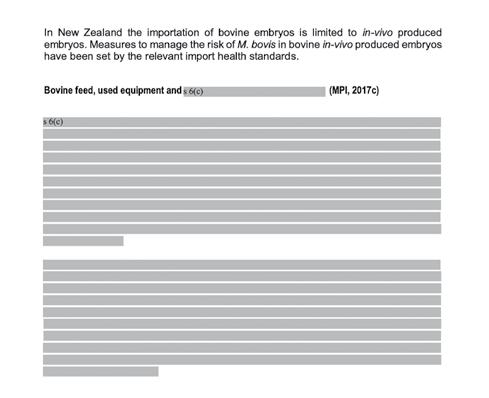
Overall the independent review finds that many things have improved, but the programme still has poor strategic oversight and acceptablebut-not-great feedback channels.
In the same month, there is also a report on data sources to “identify gaps and highlight areas of missingness” in NAIT records using complicated maths, and an analysis of NZ stock movements to describe NZ’s cattle movement patterns and better ways of getting them into NAIT.
AUGUST 2021 MPI appoints a chief veterinary officer (CVO) for the first time in a couple of decades. Up until this point “MPI had no formally recognised CVO and no single leader responsible for livestock biosecurity readiness and response who would have provided the link between the Programme and wider MPI biosecurity structure, as well as preparing MPI for a future incursion.” (From the independent review above).
OCTOBER 2021 Results from a survey of 71 of the 4681 farmers affected by M bovis. This documents the stressors from on farm restrictions, financial uncertainty, excessive
60 Country-Wide | APRIL 2023
Redaction action: Page 5 of the Report investigating ways M bovis might have entered NZ.
JUNE
Researchers complete a two-year study on the emotional, social and psychological impacts of M bovis. Results are harrowing.
workload, community perceptions and concern for animal welfare. It highlights some holes in the compensation process. “But the amount of extra work it has taken to get through this is horrendous and we can’t claim for it. Like contractors, if you haven’t used them before, you can’t claim for them now.”
DECEMBER 3, 2021 Government announces that M bovis elimination is “on track” and that there are only four farms with current infections (all in Canterbury). At this time there have been 268 farms culled, totaling 173,000 cattle.
2022
The year of the Wakanui cluster
MAY 5, 2022 Government announces a $68m spend over the coming year to “continue momentum on M bovis programme”. At this point M bovis is reported to be isolated to just one farm (ANZCO’s Five Star Beef feedlot in Ashburton).
JUNE 16, 2022 There is another Mid Canterbury case detected via the bulk tank milk surveillance.
JUNE 30, 2022 MPI announce the cost of the programme is now up to $588m, even though it was at $635.9m in a review a year ago.
SEPTEMBER 4, 2022 Two more Mid Canterbury farms test positive for M bovis.
SEPTEMBER 22, 2022 MPI announces for the second or third time they are going to cull the ANZCO’s Five Star Beef feedlot which has been infected for four years at this point. A controlled area notice is declared for the Wakanui area surrounding the feedlot. Eight farms in the high-risk area will be depopulated as well as the 12,000 cattle on the feedlot.
OCTOBER 2022 A new strain of M bovis is identified in this cluster. Investigations are underway to work out where it has come from, including inspecting frozen semen used by the farm.
NOVEMBER 2022 There is a review of the new Canterbury cluster. There are eight infected properties within the new Controlled Area Notice at Wakanui and there is no evidence to suggest these farms brought in infected cattle. In six of these, cattle may have grazed within 1.5km of the feedlot. This situation raises the question that is central to this review: Is M bovis spreading in Wakanui through one or more less common routes of transmission? During the national programme, it was very rare for M bovis to jump boundary fences. In fact, it was only confirmed in three cases. The disease spread predominantly through cattle purchases or feeding infected milk to calves – two routes that have been ruled out in the Wakanui cluster. It seems that these properties have caught the disease from the nearby feedlot, but it is not obvious how. Groundwater leaching, manure spreading, and vehicles are all ruled as unlikely. This leaves airborne transmission, and contamination from seagulls and flies.
AUGUST
MPI appoints a chief veterinary officer (CVO) for the first time in a couple of decades.
JULY
A 200 metre minimum cattle-free buffer is placed around the Five Star Beef feedlot as a precautionary measure. An independent review of the eradication programme provides a comprehensive autopsy of everything that has gone wrong.
SEPTEMBER
There is a report on NAIT compliance behaviour.
OCTOBER
Results from a survey of 71 of the 4681 farmers affected.
2022
MAY
Govt announces a $68m spend to “continue momentum on M bovis programme”. M bovis is reported to be isolated to just one farm.
SEPTEMBER
MPI announces they are going to cull the ANZCO’s Five Star Beef feedlot which has been infected for four years. Eight farms in the high-risk area will be depopulated as well as the 12,000 cattle on the feedlot.
NOVEMBER
Canterbury cluster is reviewed. A cluster of Confirmed Properties in Wakanui. The source of infection for these properties cannot be attributed to the documented movement of infected cattle. This raises the question: Is M bovis spreading in Wakanui through one or more less common routes of transmission?
DECEMBER
Govt announces M bovis elimination is “on track” and that there are only four farms with current infections. There have been 268 farms culled, totaling 173,000 cattle.
JUNE
Another Mid Canterbury case detected. The cost of the eradication programme is now up to $588m.
OCTOBER
A new strain of M bovis is identified in this cluster. Investigations are underway to work out where it has come from.
Country-Wide | APRIL 2023 61
THE POWER OF PENCIL AND PAPER
In the third part of our large-scale farm manager series, Paddy Boyd has made a career out of managing the Mackenzie Basin’s Haldon Station and its people.
By Terry Brosnahan.
Photos by Chris
Sullivan.
Under Paddy’s management the 22,000ha station has flourished.
So too have the people who have worked on Haldon. A number have gone on to be managers in their own right.
Watching staff develop and achieve gives Paddy immense satisfaction. They arrive with different skill levels so he lets them develop, but most can’t stay.
He says Haldon has three to four shepherd positions but only one at the next level so they need to move on to climb up the ladder.
He says at the age of 17 or 18 they need to move on to other places to gain experience and progress. By their late 20s, early 30s and after about three farms, they will then know if they have what it takes to be a leader. Some have returned to Haldon as stock managers.
“It is a shame to see the good ones go,” Paddy says.
There are 10 staff including Paddy who is hands on.
“A 100%,” he says. His wife Barbara (Barb) says 200%.
Paddy (67) is out the door at day-break, works seven days a week, averaging 10hour days.
He “absolutely loves the challenge” of being a manager and did from day one.
“I would get bored without a challenge and this place is challenging.”
He says Haldon has 40C summers and -20C winters, “you can’t get more challenging than that.”
Irrigation has shortened the winters and made summer more enjoyable.
Getting the best from staff
Every Monday to Friday at 7.30am there is a staff meeting at the workshop to cover what’s happening, going to happen and what has to be done. It can take 10–30 minutes.
Monday morning is the longest. Paddy wants new stock manager Hamish Neal and development manager Grant Gardyne to plan their weeks. But he wants all the staff there so they all know what they are doing and can work as a team.
“I don’t want them working in silos.”
Staff are his biggest challenge. There used to be a waiting list of staff wanting to work at Haldon, but staff are harder to find and expectations of young staff are high. In the 1980s they were happy to have a job. Paddy says the staff now are good; some exceptional.
He employs people to fit into the job. Another shepherd is needed but not an experienced one because there are already three and a new one can learn from the other shepherds.
“When they come in they have got to enjoy what they are doing.”
The ones wanting to be shepherds want to learn how to work dogs. Paddy says the three shepherds have top dogs and Haldon will pay the vet bills on a dog injured at work.
Stock numbers
Under Paddy’s 36 years as manager, the 22,000ha station has developed stock numbers, top facilities and infrastructure. This year the station will winter 6800 deer, 6500 Merinos, 3000 Border Leicester-Merino cross ewes and 3000
62 Country-Wide | APRIL 2023
MANAGER SERIES
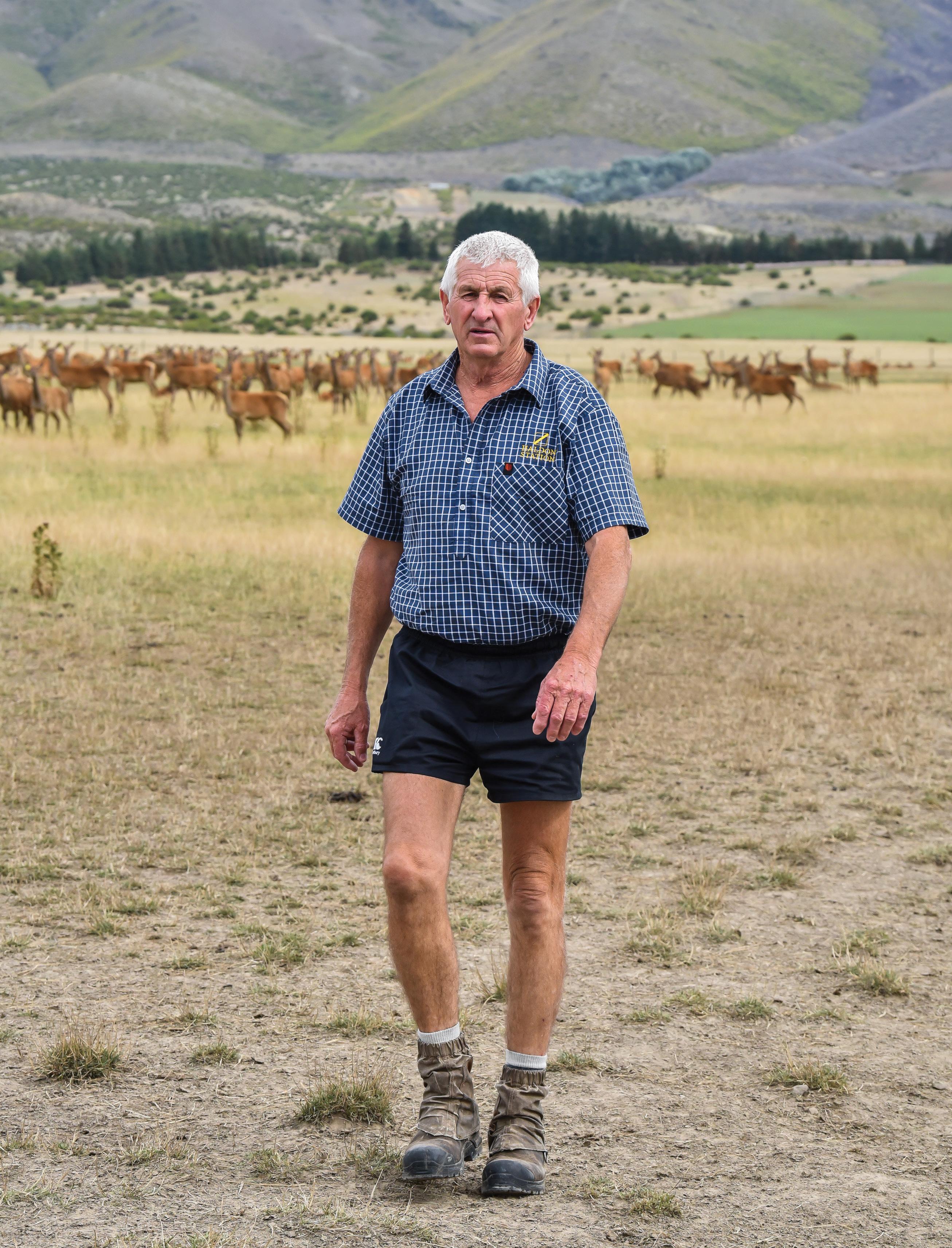 Six-foot-four Haldon Station manager Paddy Boyd is always up for a challenge.
Six-foot-four Haldon Station manager Paddy Boyd is always up for a challenge.
hoggets, 1200 Hereford and Angus cattle including breeding cows, replacement heifers and younger stock.
With irrigation they can finish 5000 first cross lambs, 3000 fawns and 300 cattle.
Irrigation has changed the management of Haldon, which Paddy says he originally didn’t sign up for. Nine centre-pivots have gone in over the past 15 years.
One of Paddy’s management traits is to run the best set of accounts possible and watch expenses, but not be over frugal. All the development work on Haldon since he has been manager has been paid for out of income.
Barb has continued to help with the accounts until recently. She has been heavily involved in community work. They have two children: Hamish is an earth moving and fencing contractor, and Anna is the genetics operations specialist, beef, for Beef + Lamb New Zealand.
Paddy was born in Kaikoura and raised on a small farm. He worked on stations including Clarence Reserve as a shepherd. He managed a Kaikoura farm called Stone Jug for six years and had developed it as far as he could with the finances available.
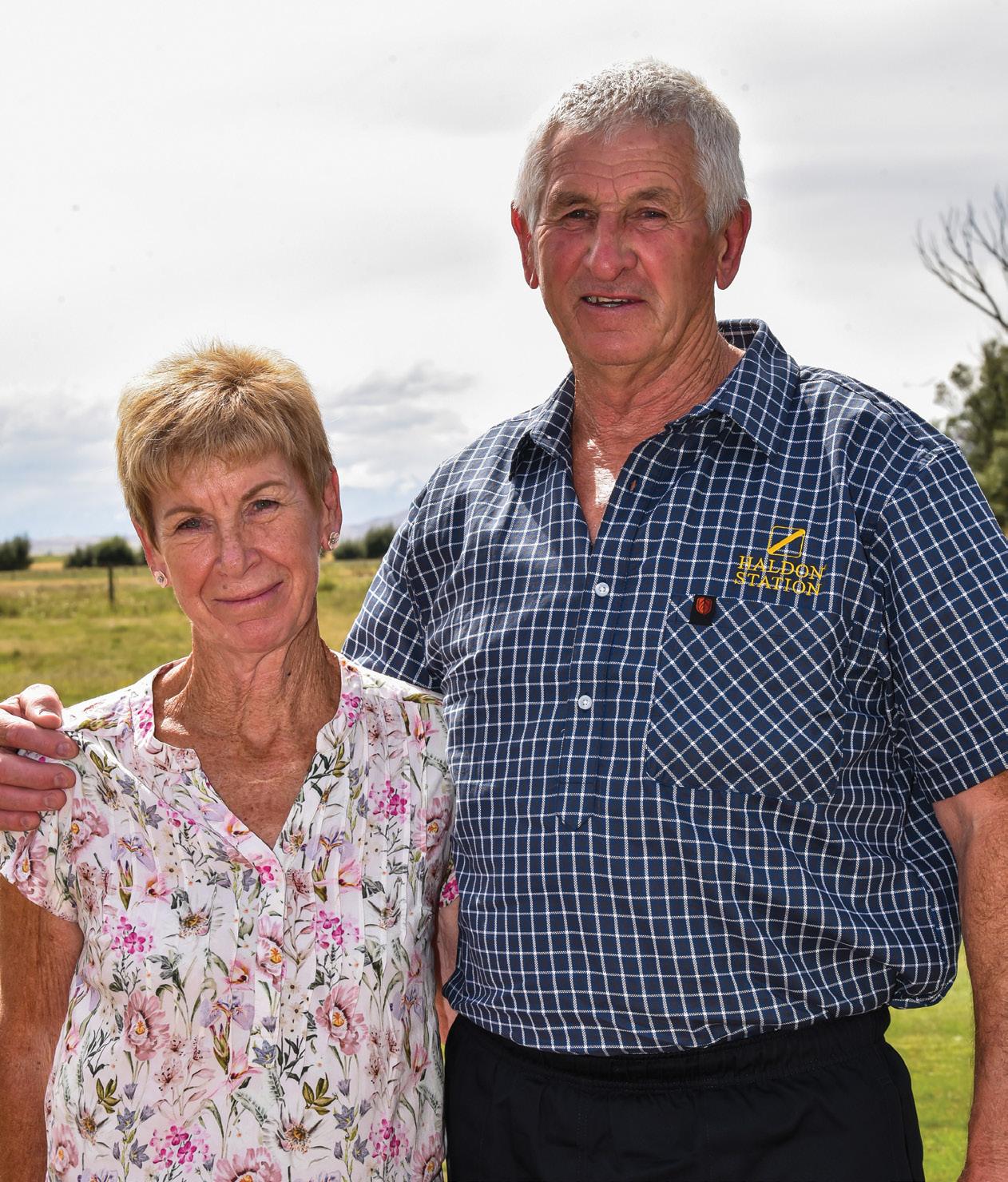
He applied for a manager’s job on a farm in the Hunter Hills, South
Canterbury, but wasn’t allowed to look at the farm or house. So Barbara and Paddy went to work at Haldon for owner James Innes in 1982.
During his time managing Stone Jug he used to buy wethers at the Tekapo sale to run on a hill run in the Clarence Reserve. It was similar to the Mackenzie Basin.
At Haldon Paddy was made stock manager and in charge of putting together the database for Genepool Herefords. Haldon was the base for Genepool and other farms’ cattle joined, so there were up to 30,000 animals recorded. Today it is just the Haldon animals.
Paddy considers himself lucky to have come to Haldon. He says James was a blue sky thinker, an entrepreneur but also a gambler.
“He never looked back and never doubted himself.”
James allowed Paddy to think differently and learn, and he had to learn fast to keep with James. Paddy never went to Lincoln College and claims to be the “dumbest bugger” at school.
James was into wild deer capture in the 1980s and built up to six helicopters. Paddy drove the truck picking up the deer at Haast and Hokitika driving a 19hour circuit. The truck could hold up to 27 deer that would need to be drenched once back at Haldon. Then the phone would go and Paddy would be off on another run. In the end they employed a driver.
Paddy would fly with James in his plane to bring deer home. Once a hind became untied mid-flight and got out of its body bag to be standing, staring at the pair. Paddy wrestled it to the floor of the plane until they got home.
“We had some really hairy trips.”
They worked well together. James would come up with an idea, get it going but couldn’t stick with it. He’d move on to the next one. Paddy developed James’ ideas, kept the ones that worked and Barb and Paddy Boyd.
64 Country-Wide | APRIL 2023
“I would get bored without a challenge and this place is challenging.”
dropped those that didn’t.
Prior to Haldon Paddy had wanted to own a farm, but at the station he realised he would never have the finance and scale like Haldon.

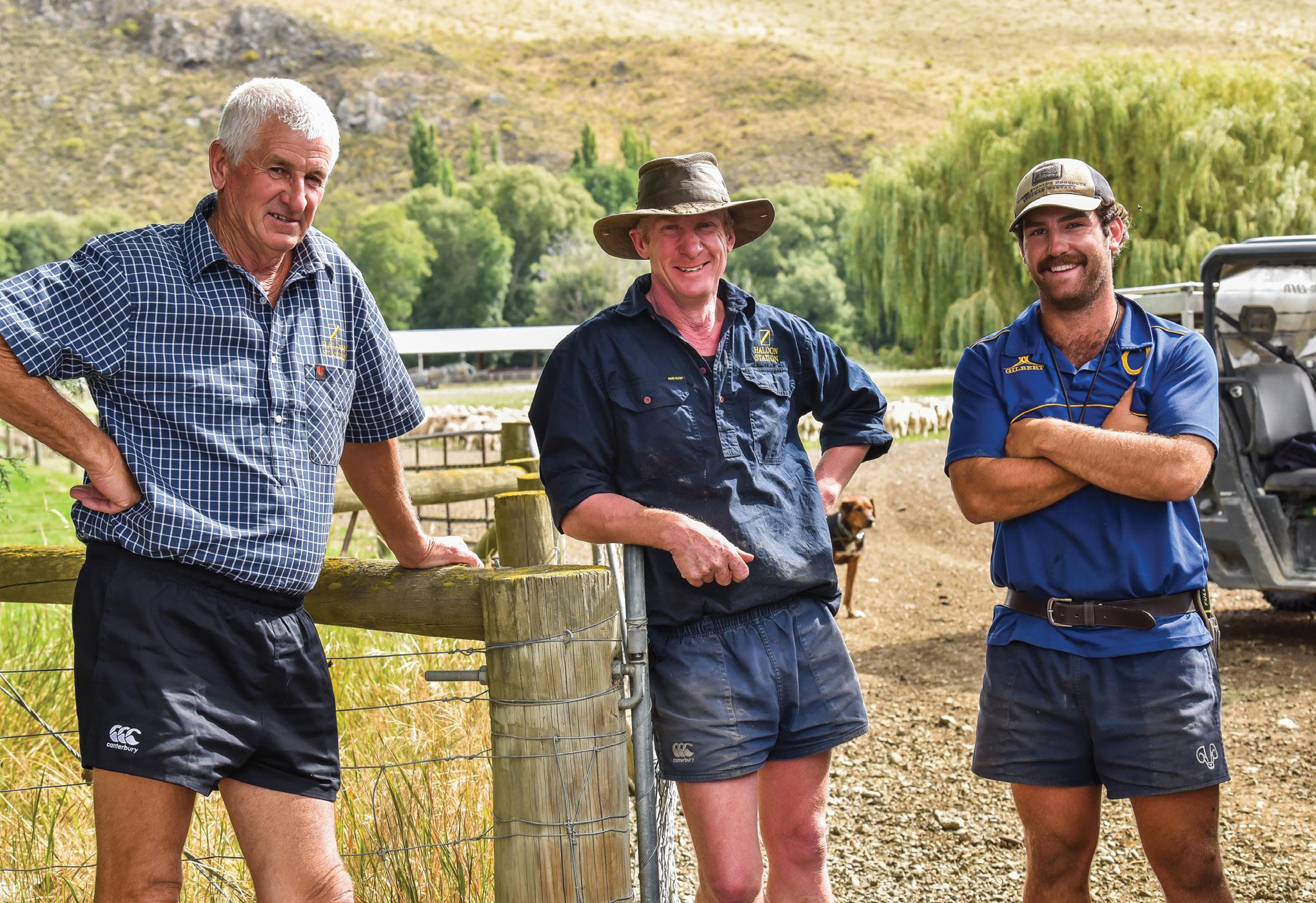
An opportunity
When James left Haldon in 1985 and moved to the United States he left Paddy in charge. By then he was virtually running Haldon anyway, as James was often away. But Paddy had no financial control.
“Probably because James was so hooked up with the banks.”
In 1987 Paddy was offered the manager’s position at Mt Linton, though Barbara was refusing to go.
The same year James was made bankrupt. His move to the USA, love of helicopters and the Lange government’s
Country-Wide | APRIL 2023 65
Taking a breather: Paddy Boyd, livestock manager Hamish Neal and shepherd Rian Norton. Below: Haldon Station has top notch accommodation and facilities.
KEY POINTS
Manager of Haldon Station for 36 years.
Hands on, works seven days a week.
Staff the biggest challenge, and most rewarding.
Developed 22,000ha station out of income.
Tough climate, -20C and 40C.
Finishes 5000 lambs, 3000 fawns, 300 cattle.
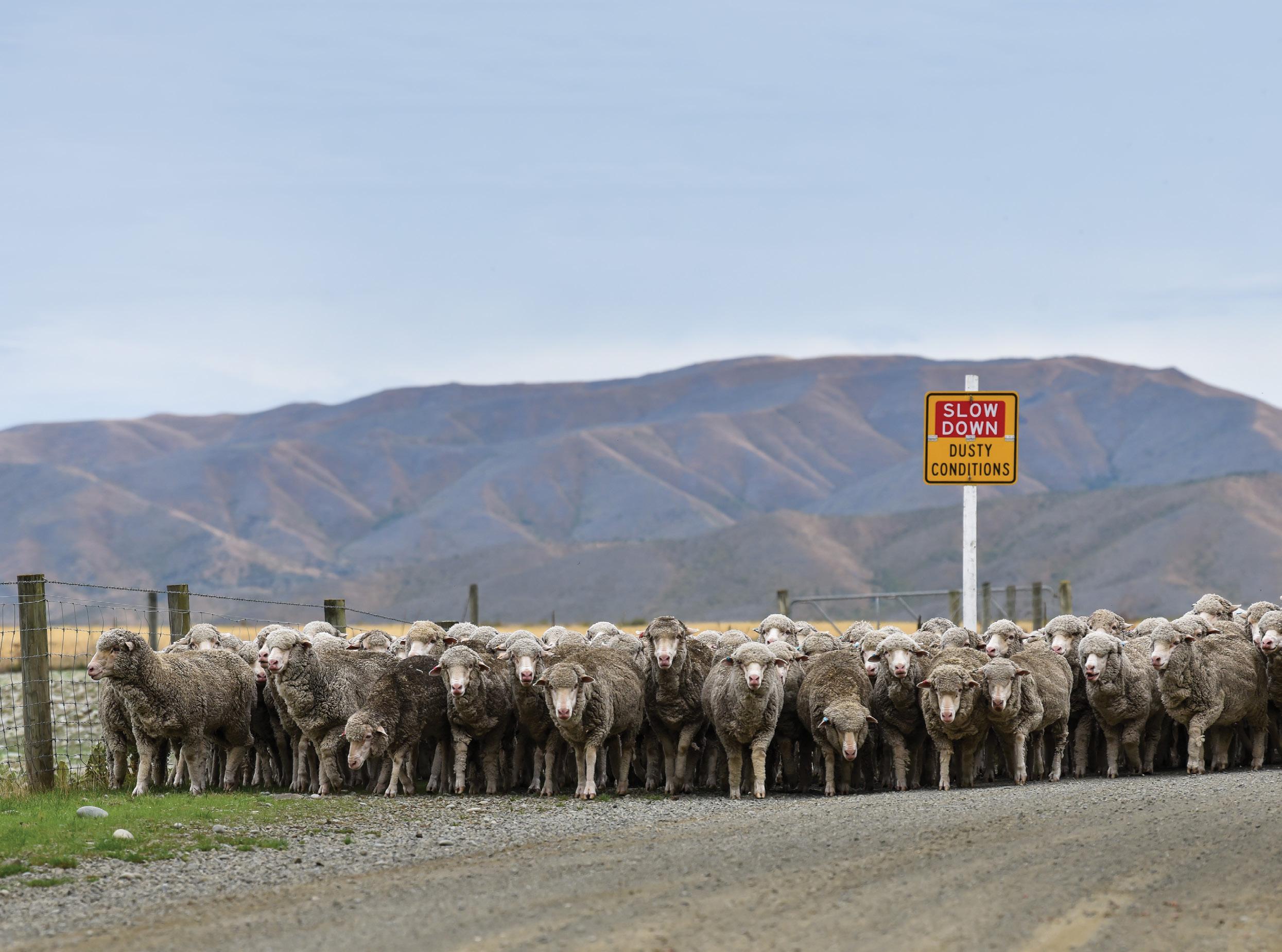
change to the standard values for deer had become too much. Twenty-one years later in 2008, James died in a helicopter crash with his youngest son Andrew.
Haldon’s receiver, Laurie Chilcott, took over the station to make it profitable and more attractive to sell. He and Paddy worked well together.
Paddy says Laurie told him that he ran the best set of books for budgeting of anyone he knew. It was a habit Paddy developed while working with James, to do a budget and hit it.
“I watch expenses excessively and the income just sorts itself out,” he says.
Paddy says it doesn’t mean being too frugal, there is a need to spend as long as the expense is justified. He never worries about the income because it’s something he can’t control. He keeps costs under control but develops all the time. Even when income is high he will still watch the expenses closely.
Johan (Han) and Jenny (Jenn) Klisser
sold their Vogels bread factory in 1990 and bought Haldon in 1991. They were good owners but knew nothing about farming. They brought in a farm adviser who advised they go all silage, but Haldon goes down to -20C and it froze in the pit. They couldn’t get the silage out and stock died.
Han watched the pennies and around the board table were the Klissers, a lawyer, an accountant and Paddy. But if Paddy wanted to do something and it made sense, Han would let him do it, as long as it had been costed out.
After several years he trusted Paddy completely.
“We’ve had a great working relationship ever since.”
Han let Paddy have a go at what he wanted to do.
“Han and Jenn Klisser have been brilliant farm owners.”
Paddy says they were firm in the belief they didn’t own the land but were custodians.
66 Country-Wide | APRIL 2023
Above: Merinos on the move.
“Han often said we must leave the land in a much better state than when we took it over.”
Paddy says the Klissers have been good custodians. Right from the outset they didn’t want to take money off Haldon but rather reinvest it in the station. They wanted Haldon to be a top-ranked farm.
When the Klissers took over, Paddy was told to write down in his diary, “The more you make, the more you can develop.”
Paddy is paid a base salary with a performance bonus.
New technology changes
The Klissers took Barb and Paddy overseas to see new technology, including centre-pivot irrigators, which Haldon had years before they took off in NZ. Haldon brought in genetics for artificial insemination, Merino and Hereford from Australia, deer semen from England.
The Klissers lived in Auckland but would come down for major happenings on the station.
Han died in November last year aged 95, but Jenny still comes down to Haldon though not so frequently. Haldon is held in a family trust.
Paddy has his own blue-sky ideas but will first do a cost analysis. If it looks like it will work and break even, they will run with it to see how it pans out.
Though he is computer literate and uses Cashmanager, Paddy still makes a pencil copy of everything. He carries a notebook. “I write notes all day long.”
Since the day he came to Haldon, Paddy has kept a diary of work events and goes back to look over them. They became his planner. Now there are farm assurance and environmental plans to fill out, but he still keeps a diary.
“I hate compliance but it’s a necessary evil.” Paddy predicts a lot of environmental hurdles ahead for farmers in the Mackenzie Basin and is up for the challenge. “It is imperative to have irrigation in some areas; it’s not made for everywhere.”
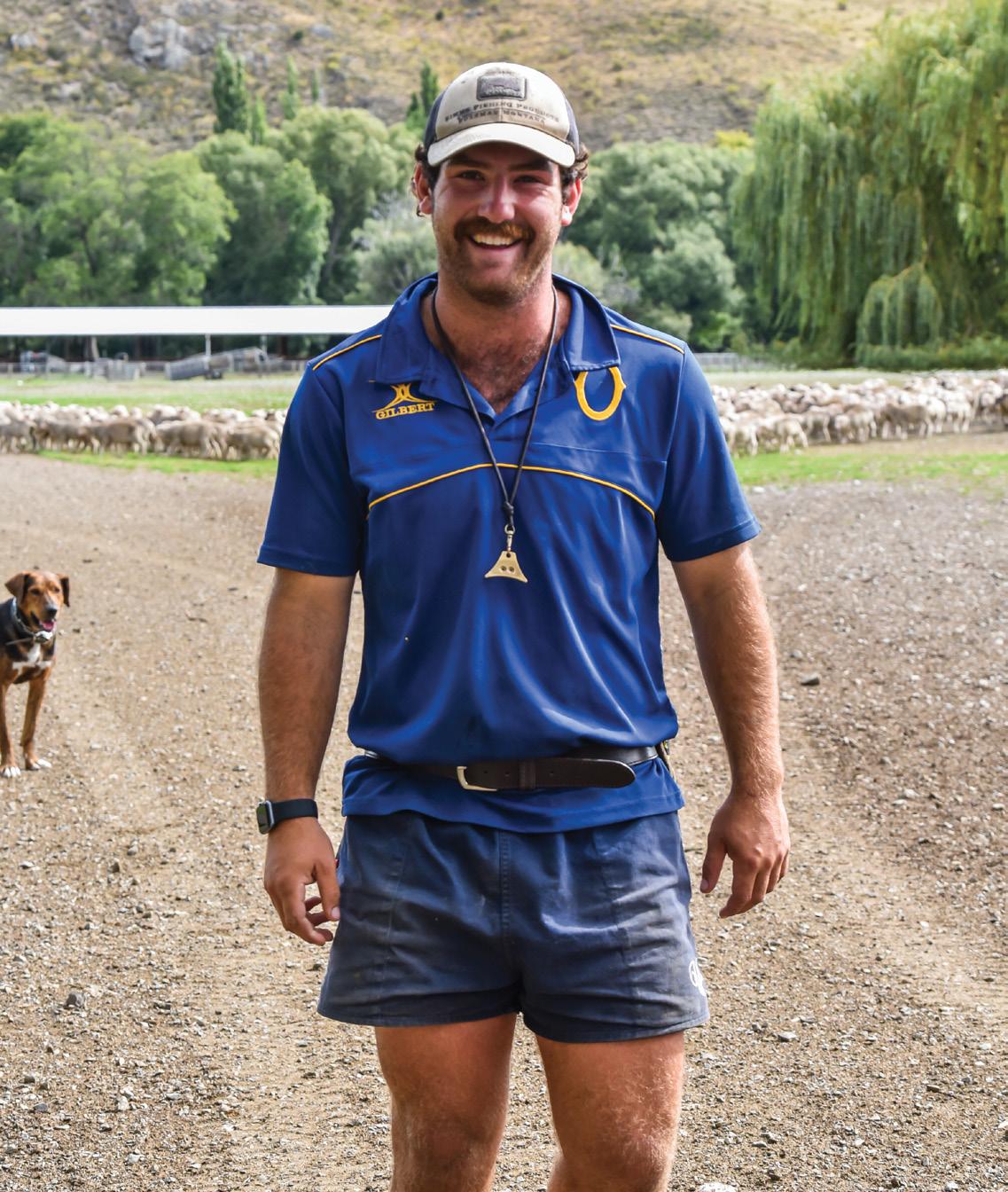
He says only 3% of the Mackenzie plain area is under irrigation. The 950ha on Haldon makes the station sustainable. About 15 years ago, they spent $350,000 in one year buying in
balage and hay. That’s why he pushed development and centre pivots to make the station more resilient to dry conditions.
Paddy works on a five-year plan. One to two years is too short, more than five too long.
He has systems in place and plans ahead – what has to happen and by when. He knows what he will be doing between now and Christmas. What ground needs to be renewed, what’s got consent and needs to be developed within two years.
He has no hobbies and only reads when not on the farm, maybe travelling on a plane for the likes of Deer Industry NZ business. When he and Barb do take a holiday, he will devour a Wilbur Smith-type book before arriving at the destination.
When I brought up the subject of retirement he whispered something about it not happening soon, so Barb wouldn’t hear.
It will happen and succession has started.
New additions to the team are Hamish and Anna Neal who are part of the succession plan. Anna runs the office and Hamish is stock manager who will take over from Paddy.
Paddy and Barbara bought land near Pleasant Point 15 years ago, originally for security and it is here they will probably retire to.
Paddy never wanted to be a manager when he first came to Haldon.
“But it was so rewarding to try these things and make them work.”
His advice to anyone taking on a manager’s role is to make sure there is time to achieve their goals. Otherwise it might be better to look somewhere else.
Country-Wide | APRIL 2023 67
More on Haldon Station in County-Wide Beef, May issue.
Shepherd Rian Norton.
ON THE HOME STRAIGHT
Time is important to Bevan Hopcroft. He hates wasting it or even worse, people wasting his time. So Country-Wide deserved a rark up when we arrived half-an-hour late. Excuses of road works, a lost hearing aid and difficulty finding pudding for lunch didn’t cut any ice.
Thankfully Bevan doesn’t hold a grudge. It was also Bevan and his wife Wendy’s wedding anniversary so a bottle of bubbly instead of chocolate biscuits would have been more appropriate.
Bevan and Wendy run an efficient operation on their 397 hectare (379 effective) Wendonside farm in Southland. The couple married three weeks before they took over the farm.
It is a low-cost, high-output system they have built up during 27 years of marriage and farming the flat plateau farm.
The Hopcrofts’ farming operation appeared in Country-Wide after they won the New Zealand Ewe Hogget competition in 2015. They were then running 2400 Coopworth-Texel cross ewes, 640 hoggets and wintering for nine weeks, 300 dairy cows. The ewes scanned 200%, and lambed 165%.The hoggets scanned 115% and lambed 89%. In 2014 the lambs averaged 18kg carcaseweight (CW) and $99.
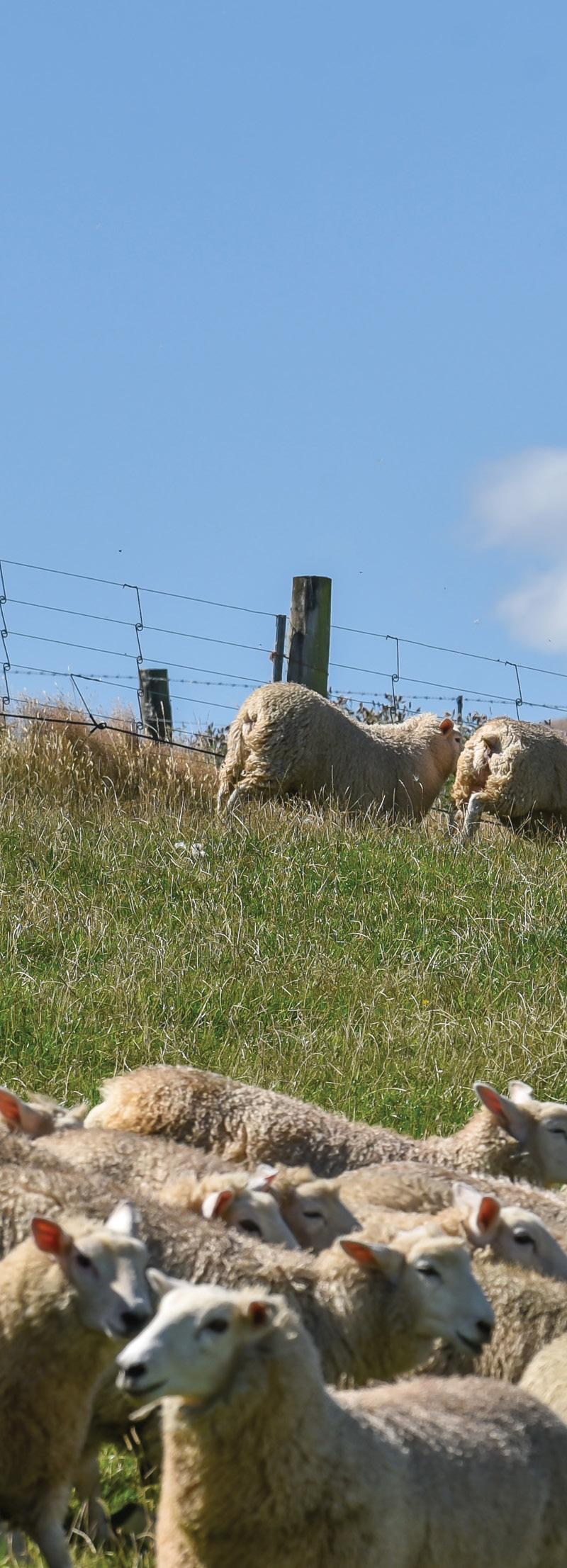
Gross farm income (GFI) at June 2015
was $1928/ha, farm working expenses (FWE) were $767/ha and the earnings before interest and tax (EBIT), 1161/ha.
Today they run 3200 Coopworth Texel ewes, 850 hoggets, graze 240 dairy cows for nine weeks in winter and have planted 16ha in pine trees.
In the 2021/2022 year, lamb prices were nearly $9/kg CW and the gross farm income was $2453/ha. The previous year it was $2034/ha, which included development costs of about $60,000 with the new farm.
In 2020/21 EBIT was $1278/ha and last year it was $1705/ha (excluding tree income and wages of management), with FWE 33% of GFI.
“They were two good years, but this year you can whack $700/ha off it,” Bevan says.
The lambs produced are still consistently meaty and fast growing with a 45% yield, though this year, due to the dry, are only yielding 42%.
The young pines are planted on escarpments. A block of 30-year-old trees was harvested two years ago which has helped reduce their undisclosed debt.
Wendy says they have concentrated on debt reduction in the past three years.
In 2020 they bought another 109ha adjoining the farm. The land is heavier and gives more scope. It hasn’t necessitated another labour unit.
Wendy is 50–75% of a labour unit as well as handling the administration side of the business.
“She is half the equation,” Bevan says.
Their motto used to be “the harder you work the luckier you get”. Now it is “let’s try to enjoy the moment”.
They’re both 53 and consider themselves to be in their last decade of farming, but they are still keen.
“We want to enjoy it without stressing about what’s ahead,” Bevan says.
They have been planning for it. Off-
68 Country-Wide | APRIL 2023
Efficiency and consistency are the hallmarks of a Southland couple’s farming operation who are out to enjoy their last 10 years of farming. Terry Brosnahan reports. Photos by Chris Sullivan.
ONFARM
farm investments have been made into property and a crib in Riverton.
The investments have helped set up possible farm succession. Their two daughters Emma (24) and Charlotte (23) are working in Christchurch, while George (20) is in his final year at Lincoln University.
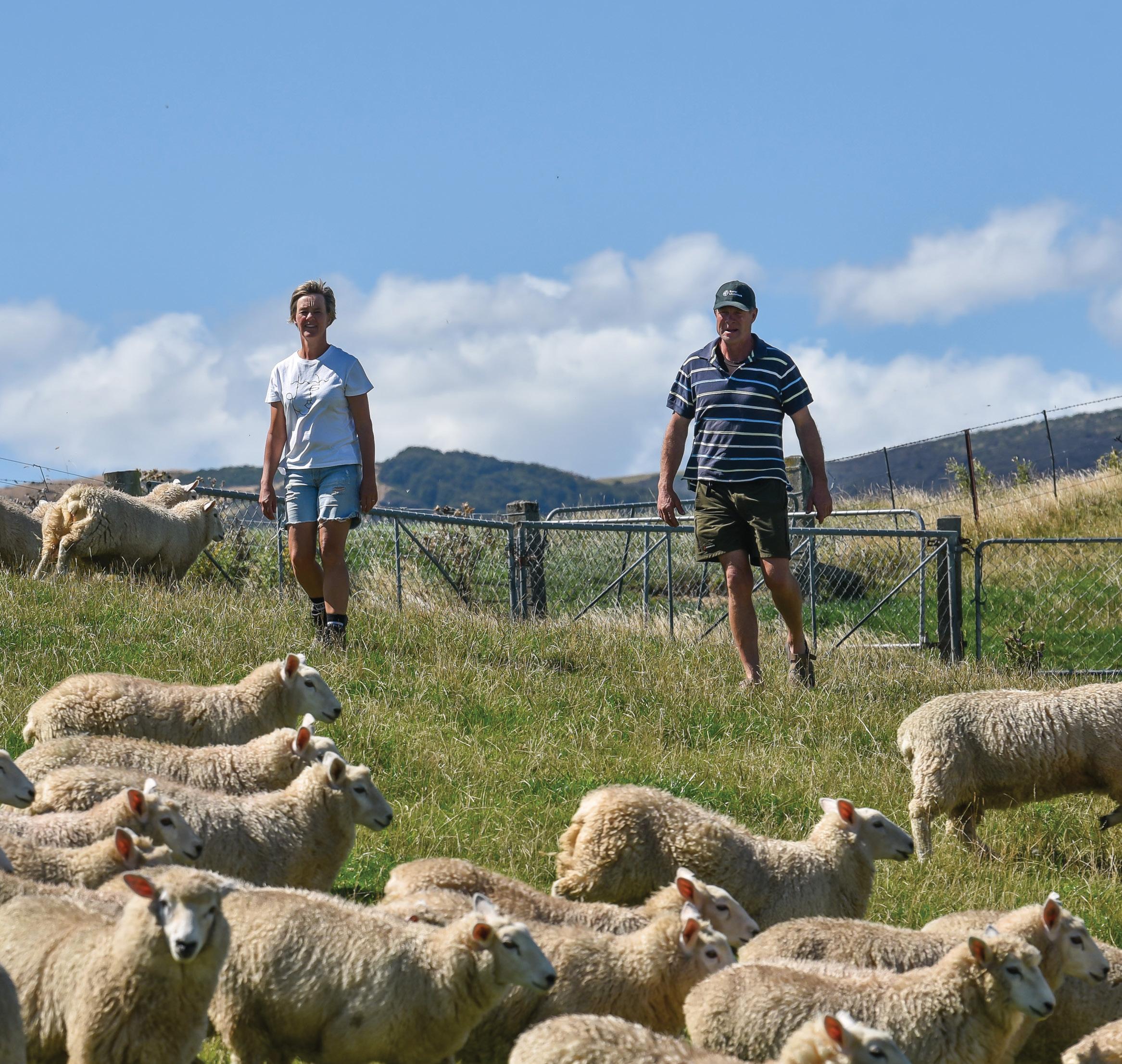
Back in 2011 they had an investment in a dairy farm but had little control. Bevan disagreed with the farming practices and they pulled out. They invested in a commercial property
syndicate which gave 6-7% return on investment for the past five years.
They also run a small accommodation business on the farm and at their crib in Riverton. They enjoy meeting people so it’s a good fit.
A total of 24ha has been leased to a cropping farmer to grow barley. The Hopcrofts didn’t disclose the lease price, but say it is worth doing. The ground is leased out for 19 months to grow two crops. The lessee sows it back in permanent pasture and by April 1 the
grass is six to eight weeks old.
An option might be to put in a winter feed crop instead of permanent pasture, so it’s a break crop for the grower. A key thing was to have rules on the soil fertility, which the Hopcrofts have built up over the 27 years.
Bevan would prefer the crop residue to be burned but the fire risk is too high.
The Olsen P levels are 30, potassium 7 and the pH is 6.1.
A lot of super went on when it was cheap and they may consider skipping
Country-Wide | APRIL 2023 69
next year. A whole-farm soil test is planned this year, last done 12 years ago as part of a potash trial.
The sudden drop in meat prices has been a bitter pill to swallow.
“Product prices went from hero to zero in six months,” Bevan says.
Changed meat company
The Hopcrofts were fed up with Alliance’s performance because it wasn’t treating everyone equally. Larger suppliers were getting special deals and better prices.
Bevan is a straight talker.
“We were loyal, supplying over 5000 head/year but were at the bottom of the heap.”
When the Hopcrofts held their ewe
hogget winners’ field day back in 2015, Alliance chief executive David Surveyor praised the Hopcrofts for their excellence and consistent change, which took time. He said if Alliance was to achieve excellence it needed to run it the way the owners, farmer shareholders, wanted it run.
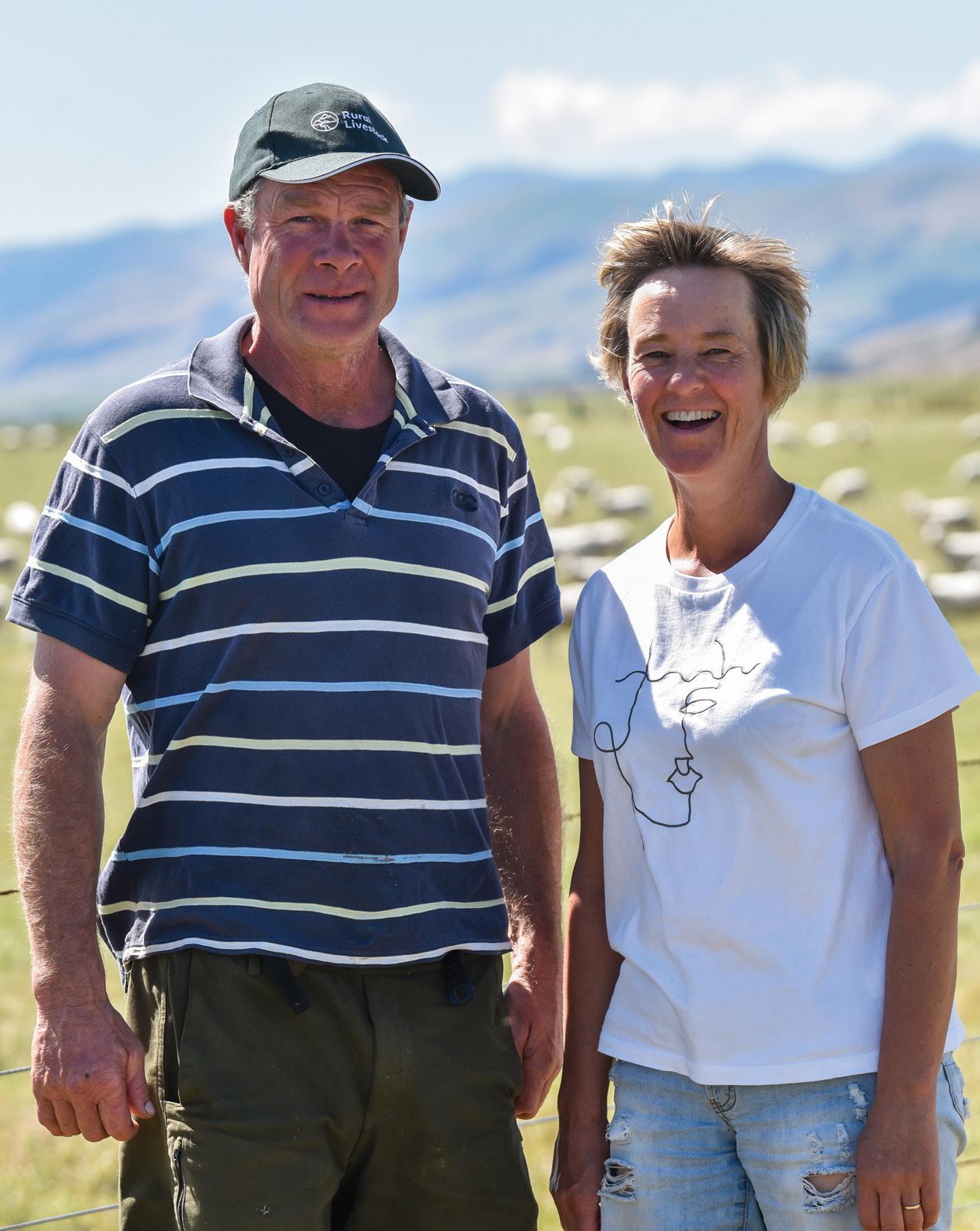
Bevan says they left Alliance two years ago and now supply South Pacific Meats which has same-day kill and no share capital required.
“They seem to be a few dollars ahead of the pack.”
Bevan says it is a shame co-operatives don’t stick to the principles they were founded on. If they did, they’d be in a better position now.
Inside the Hopcroft farm gate, flystrike is getting worse every year with warmer, muggy weather. It used to hit midJanuary but now it is late December.
Wendy says input costs have rocketed with main expenses like fertiliser jumping from $60,000 to $100,000. They expect FWE to rise a considerable amount this year.
Buying another 109ha has given more heavier soils and helped feed to hang on longer in the dry. The increased scale has meant some loss of control over stock performance. Ewe lambing that peaked at 165% several years ago has fallen to 153%.
Hogget lambing is sitting at 80%.
This is the crucial part of the year because it determines whether the year will be a financial success or not. That's why they intensively lamb, going around the sheep three times a day and saving lambs. Six lambing huts are scattered around the farm for minor problems.
The Hopcrofts have always tried to avoid hiring staff. When it was just 288ha, the weather was good and the place was humming, only Bevan and Wendy worked on it.
The increase in land and drier years has not yet meant another labour unit. Having children around as they grew up and even visits home have been a boost. This summer they had daughter Charlotte working five days a week for eight weeks. In future, the plan is to hire a young casual farm worker for jobs such as lamb crutching and topping, while Bevan and Wendy focus on stock.
Cattle are not farmed because of the climate.
“We steer clear of them,” Bevan says.
“You buy them when prices are on a high and sell them when dry on a low.”
Carrying out as much of the work themselves has been crucial to keeping farm working costs down especially when profit is low.
70 Country-Wide | APRIL 2023
Bevan and Wendy Hopcroft intend to enjoy their last 10 years of farming.
Bevan sheared his way into a farm and has kept farm costs down by shearing their sheep. Before they bought the extra land he was down to shearing half the flock, but it still made a huge saving.
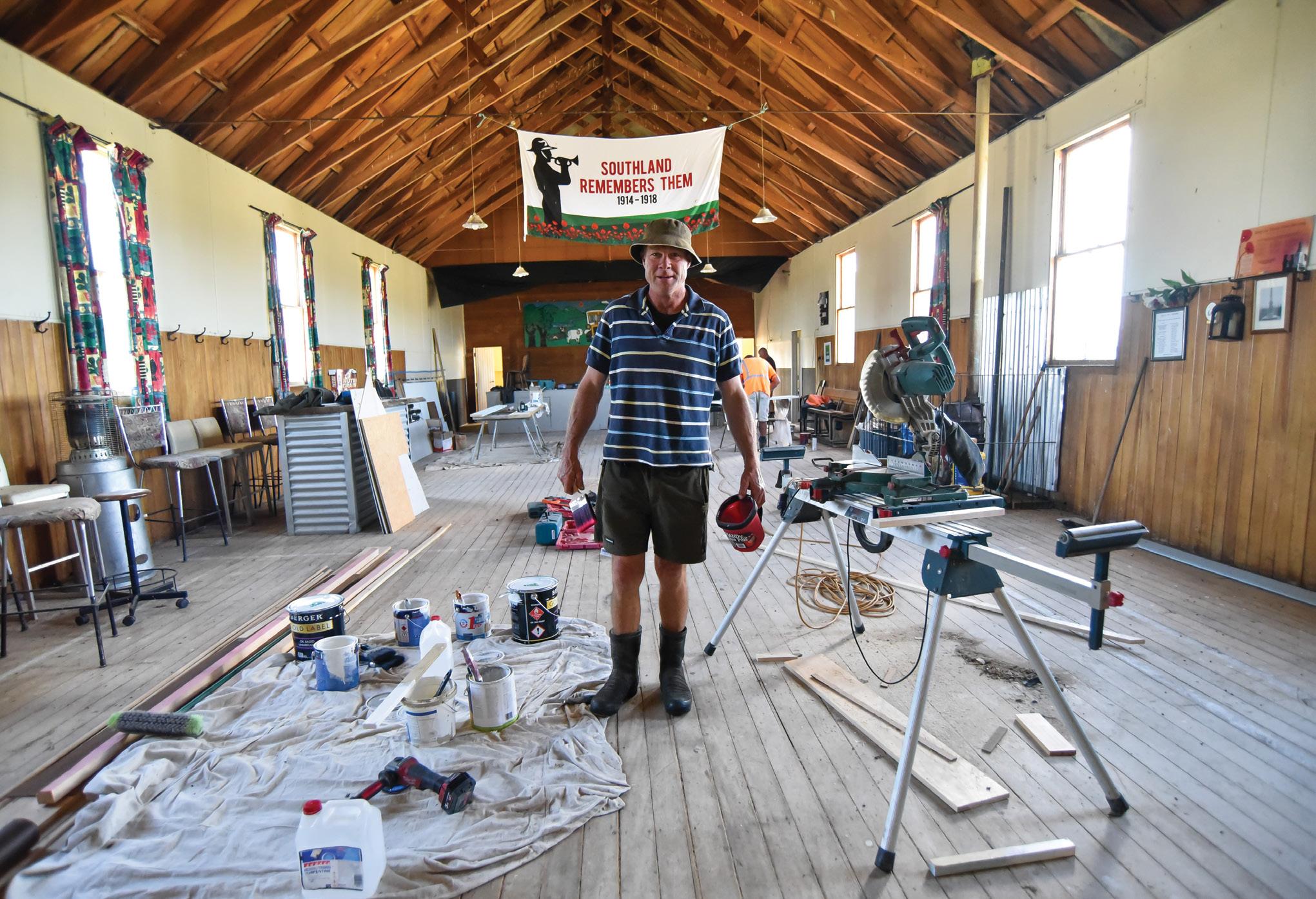

“Our shearing bill has now gone nuts.”
From profit to negative
He shore when wool was $5/kg, but now at $1.50/kg it no longer excites him. However, even with paying for all the shearing they still managed to contain FWE to 40% of GFI. Last year there was a $20,000 profit from wool. After a further collapse in the wool prices, this will be the first time the return will be negative. They shear once a year, early January after weaning, don’t belly the sheep and do the dagging themselves.
Bevan says about every second year there is a new group invented to sort out wool and he wonders if they are going to
Country-Wide | APRIL 2023 71
Bevan is helping to restore the Wendonside hall. Below: A great view and best spot for a future house on the farm.
Crippling Government policies are threatening the future of sheep and beef farms across the country.
Now Kiwis can show their support for sheep and beef farmers by sending their views direct to the Government.
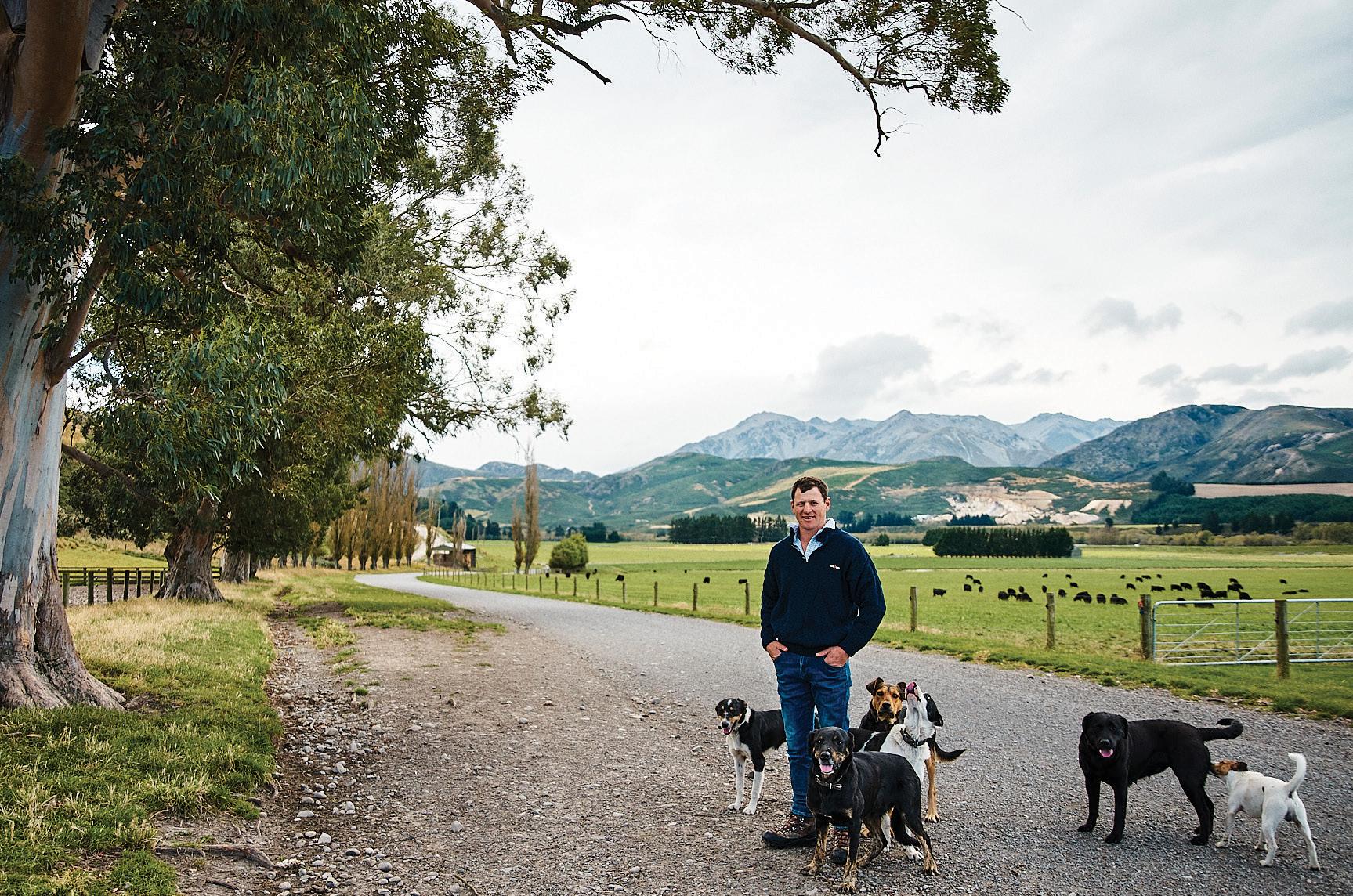
Ask your local communities and your urban mates to get in behind the campaign.

Scan the QR code or head to: kiwisbackingfarmers.nz

72 Country-Wide | APRIL 2023
Last year they made a $20,000 profit from wool; this year it will be negative. Below: For the first time they are growing kale.
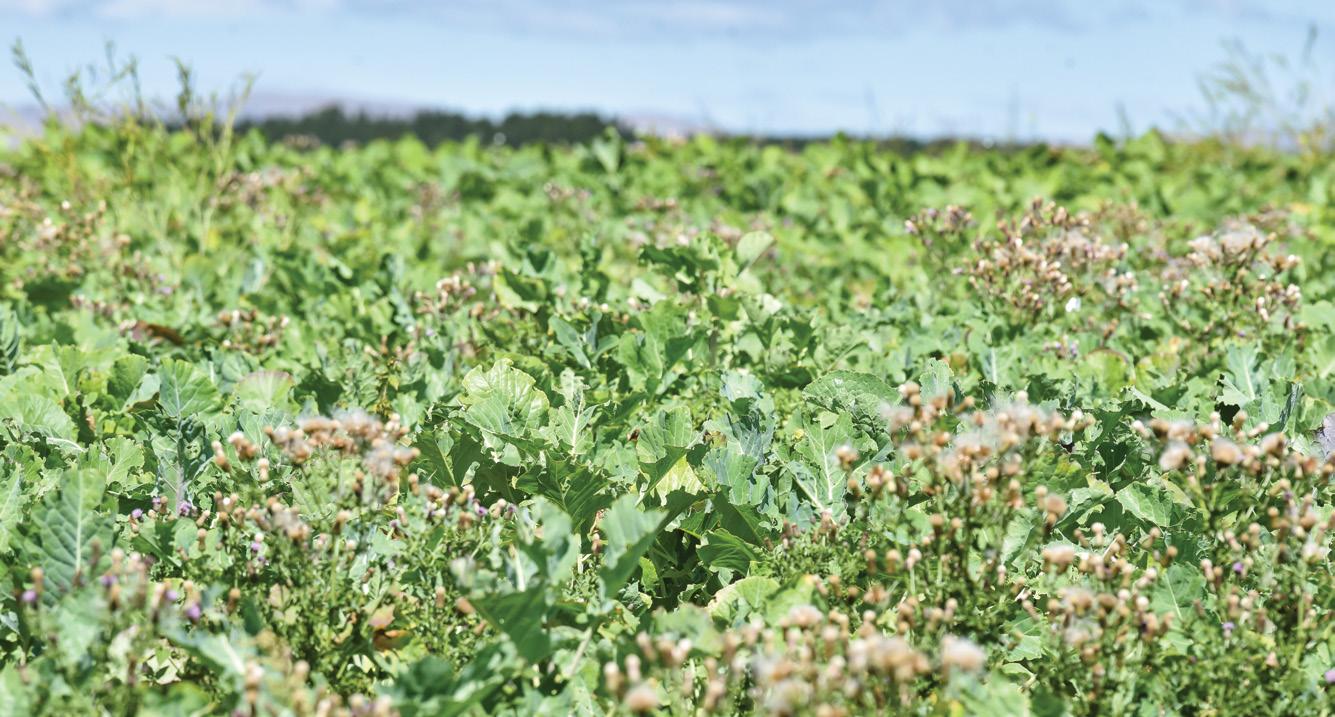
run out of names for the new groups.
“You almost roll your eyes.”
He says farmers are hurting this year so change is needed very soon.
He doesn’t begrudge the shearers being paid for hard work.
“They deserve everything they get.”
He pays $6/sheep for shearing and is getting $3 for the wool. “It doesn’t entice you to invest in a new shearing shed.”
Wendy says shearing is a management tool.
Any ewe that only lambs a single goes into the B mob and goes to a Poll Dorset or a Texel Suffolk.
Bevan selects twin lambs from twinreared ewes and expects the flock fertility to go up a little each year, but it seems to have plateaued.
In 2016 the ewes scanned 200%. For five years they were in the high 180s. Last year they scanned 174%.
“It is due to the drier climate and being off the pace.”
The rising four-tooths have been lambed as hoggets and two-tooths, but kept separate from the main mob until scanning because they are younger sheep.
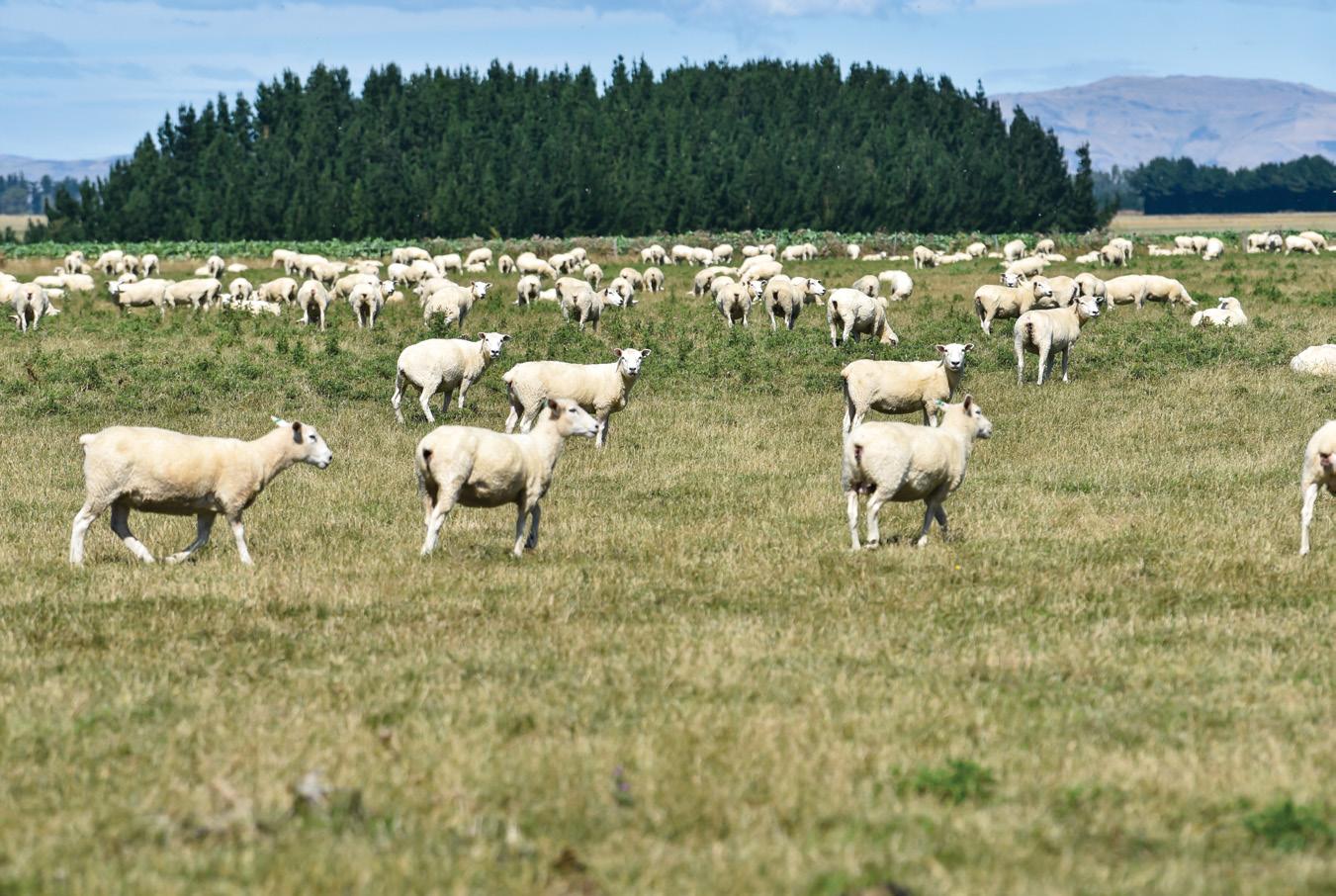
“They are still growing and are in better condition when not competing with the mixed-age ewes.” Bevan says
800–900 is the right size mob for the farm.
For the first time this year they have planted kale. Bevan is in a hogget lambing group, set up under the Red Meat Profit Partnership.
The group carried on after the programme finished and after one meeting Bevan decided to grow a paddock. A farmer in the group was feeding his sheep nearly all kale for winter feed and the sheep did well. Bevan had 100 lambs grazing on 5ha of Bonavere kale, eating the tops and grass around the edge of the paddock. In winter it will feed the two-tooths.
There is also 17ha of Major Plus swedes.
The Hopcrofts still don’t have a lot of machinery – plant is valued in the accounts at $70,000. They are still actively involved in the community. In fact Bevan was toey about us being late because he was delayed in helping out the community’s big project, restoring the local 111-year-old hall (see p8). They regard being involved in their community is good for mental health.
“It is also good for your business”, Bevan says.
A bonus is making contacts at the sideline of sport or at community events.
“You live in a community, you play in a community.”
Part of Bevan and Wendy’s final 10year plan is to reduce the sheep workload by changing stock numbers to 2500 ewes, 750 hoggets, 300 dairy cows and lease 80ha of grain.
That’s dependent on the dairy farmer still grazing cows and the arable farmer wanting to grow grain.
“It is good land so it’s lucky we have options,” Wendy says.
The dry weather forced them to sell the bottom 430 lambs. Rain came a day after they were sold but was only 5mm.
“That lasted half a day,” Bevan says.
Bevan and Wendy’s key message is to keep positive, always look for learning and business opportunities and try to enjoy the moment. They intend to do this for the next 10 years.
Country-Wide | APRIL 2023 73
Flystrike challenges south
It’s been an unusual summer throughout the country and my thoughts are certainly with those who have been impacted following the devastating impacts of Cyclone Gabrielle.
The rain seen by many up north this summer has been sorely missed by those of us down south, with dry conditions proving to be a challenge for southern farmers. This has been amplified by one of the worst summers for flystrike ever seen and to make matters worse, we have had supply issues with some of the most common fly treatments.
Traditionally, the fly season in southern New Zealand has been relatively short and many farmers have
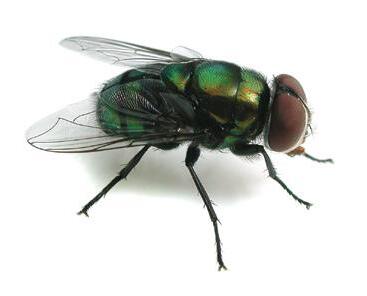
got away with no preventative chemical treatment. Fly has been managed through crutching, shearing and a bit of ‘Maggo’ splashed around as treatment for the occasional struck ewe or lamb. In recent years that has changed with the establishment of the Australian green blowfly and consequently the need for preventive treatments has grown.
Flystrike is a significant welfare concern for sheep, causes substantial production losses and is a major cause of stress for farmers.
Several farmers have revealed to me this season that the main reason they apply preventative treatments is to avoid the angst caused when dealing with
74 Country-Wide | APRIL 2023
This year’s hot summer in the south meant flystrike was worse than ever, and some treatments unavailable.
ANIMAL HEALTH
By Andrew Cochrane.
Andrew Cochrane is a veterinarian at Northern Southland Vets.
flystrike; they tell me the peace of mind is worth every cent. These same farmers have also reported significantly fewer issues with fly this season, despite the high challenge seen by many.
To examine the reasons behind this summer’s high challenge, we need to first understand the risk factors associated with flystrike.
Risk factors
Climatic conditions are particularly important with warmth and humidity being a prerequisite for successful egg hatching and larval development. This summer has certainly been hot down south, but it has also been dry with record low rainfall recorded in some southern locations. Despite this, humidity has at times remained high and many will recall some of the muggy summer nights we had to endure during January.
The hot weather also results in sheep sweating, which can increase the humidity near the skin in sheep that have not been recently shorn. This helps to provide an environment suitable for eggs to hatch and may also aid in attracting flies, especially the Australian green blowfly.
Wind is also a factor and wind speeds above 30km/hour will impact the flight of flies. While it hasn’t been a windy summer, some of you will have no doubt experienced higher strikes in more sheltered paddocks.
Faecal and urine staining is another risk factor, and all sheep farmers are well versed in the benefit of crutching stock to aid in the prevention of flystrike. Nutrition and parasites can also influence the level of faecal staining (dags), as can full-length tails.
There has been some discussion about
the impact of longer-tail docking lengths on this year’s fly challenge, but in reality this is unlikely to be a major contributing factor. Conversely, it is believed that tails docked too short can increase the risk of flystrike, particularly where the tail cannot be lifted during toileting, leading to urine and faecal contamination of the breach.
Fleece rot, dermatophilosis and other infections such as foot rot, pizzle rot and head wounds can also predispose animals to flystrike by attracting flies. Female flies are attracted to the bad smell and lay their eggs close to the skin where they typically hatch within 24 hours.
The Australian green blowfly (Lucilia cuprina) is the culprit in most strikes but this has only recently become a major problem. This fly can strike anywhere on the body and is often simply attracted to the smell of sheep – not requiring smelly dags as a prerequisite.
So while lambs are most frequently struck (often near the breach due to dags), two-tooths are often reported as the next most common and typically the victim of body strike.
It appears wool length on two-tooths seems to be one of the risk factors in this instance, with two-tooths often having approximately an inch of wool over the summer – just enough to maintain the humidity at skin level, but not so much that it prevents the fly from laying her eggs close to the skin. For these reasons two-tooths are often one of the first stock classes to receive a preventative chemical treatment (dip).
Preventative measures
With plunge dipping and shower dips falling out of favour, the majority of sheep are now dipped through automatic jetting races. While these are certainly
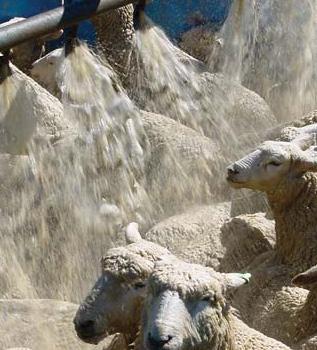
convenient and efficient, they are often a little too efficient. Despite farmers gloating about throughput, it is this speed that is limiting the effectiveness of the chemicals by reducing the period of protection.
Under the high challenge seen this summer, many farmers have reported only getting eight weeks’ protection after jetting. This is not unexpected and nor is it a sign of chemical failure or resistance; it is simply the consequence of not getting enough chemical on the animal as it runs through the jetter at 40kmh. One method that can help to slow stock down is to add a corner in the race just before the jetter – they might not flow as well, but that is the aim.
Prevention is certainly better than waiting for a strike to occur. Talk to your local vet about what might work best for you. This will depend on wool length, withhold periods, stock class and application method, amongst others. Become familiar with your high-risk paddocks – typically those with shelter – plan shearing around your challenge periods and manage your sheep so they stay clean of dags.
Fly traps can be used as a monitoring tool and offal should ideally be buried or burnt to help reduce fly breeding grounds. No one likes dealing with a flystruck animal and the production losses can be significant – make sure you have a preventative management plan for next season.
Country-Wide | APRIL 2023 75
“There has been some discussion about the impact of longer-tail docking lengths...this is unlikely to be a major contributing factor.”
Photo: teara.govt.nz
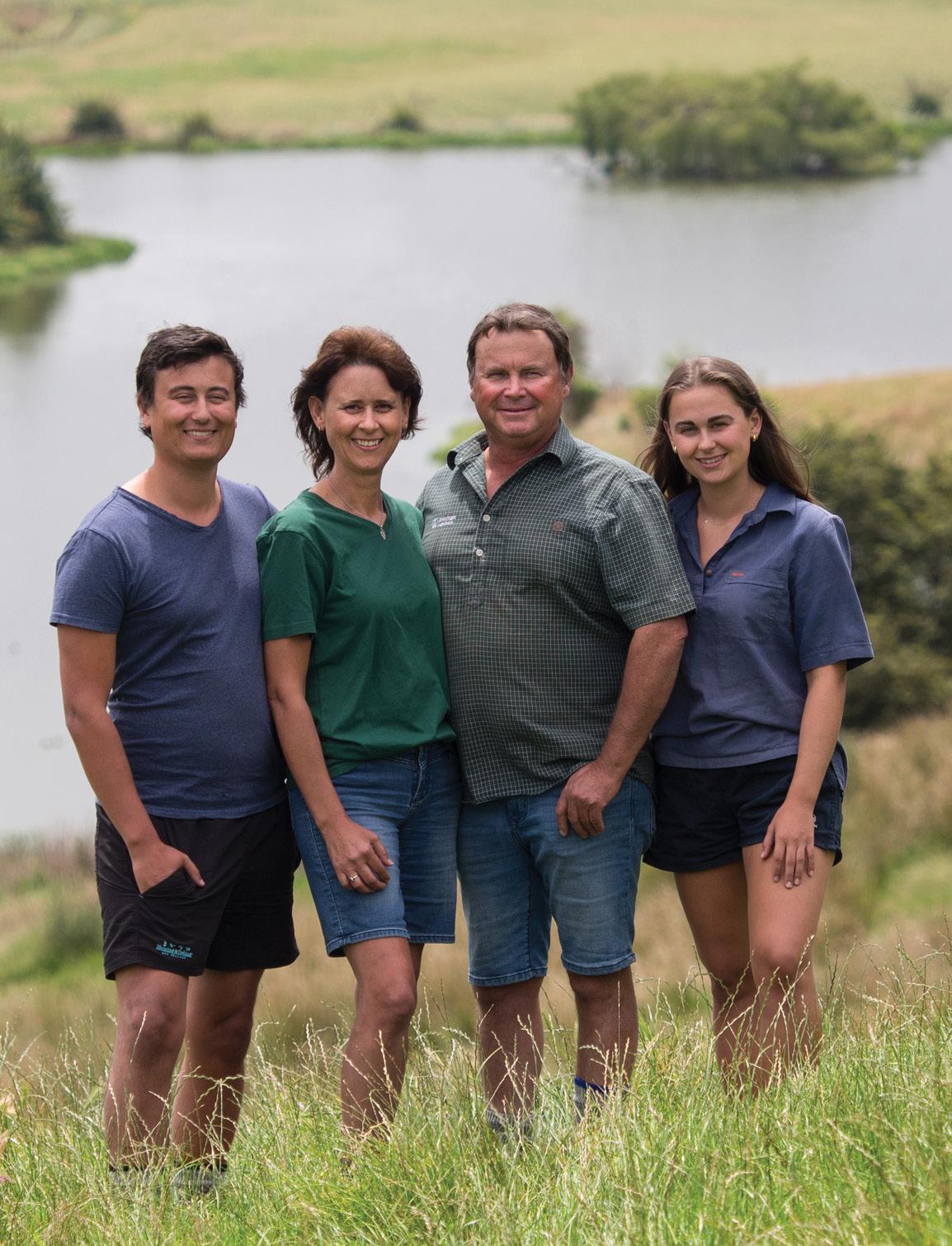
HARD WORK BUILDS SUCCESS
Rob and Marie Burke have done the hard yards at Puketira Station and are still looking for ways to increase revenue and improve practice. Story and photos by Louise Savage.
experience whenever possible, and Marie works about 15 hours a week for interactive primary-school programme Farmer Time. They feel this is important to foster interest in agriculture among future generations.
Stock on Puketira comprise 112 mixedage cows, 101 calves, 29 R3 heifers, 5 bulls, 2200 lambs and 130 tail-end ewes. Numbers are low at this time, as the Burke’s policy is to farm for a drought. They will buy 2000 to 2500 more lambs in the next two to three months, then up to 1300 in-lamb ewes.
Adapt and diversify
Rob and Marie Burke’s successful partnership is the result of 30 years of hard work, adaptability and resilience. The couple has reached the stage where they have consolidated their land holdings, have a plan to take them forward, succession planning well underway, manageable debt and an “empty nest”. The Burkes believe their most valuable assets to be “ourselves” and therefore aim to farm smarter, not harder. They have constantly adapted over the years and aim to inspire the next generation of potential farmers.
The Burkes farm picturesque Puketira Station at Ormond, Gisborne, where Rob grew up and is the third generation owner to farm there. Marie grew up only 25km away as the crow flies, on Mangakino Station, Te Karaka.
The 354ha station home block comprises 302ha hill country, divided
into 19 paddocks farmed for sheep and beef, 40ha of tile-drained flat land used for cropping followed by winter feed crops, and 12ha cut for haylage The hill country is 60% rolling, 25% easy and 15% steep.
In addition, 23ha of neighbouring flat land is leased from family and they recently bought 15ha from a neighbour. Being relatively close to the coast, winters are mild with good grass growth for finishing lambs. The station receives 1192mm rainfall a year.
Rob and Marie work full time on the farm and are assisted by long-standing full-time employee Mark (Hek) Kingi, with casual staff Alan Nicholl and Neal Ingram as needed in peak times. Jess and Matatua Ruru and family assist with docking, crutching and calf marking. The Burkes encourage school and university students, offering holiday work and
Rob drew on his 19 years of cropping experience, leasing additional land to increase their cropping area to 250ha to cover their mortgage repayments. At peak times they ran 24-hour shifts. They grew early maize, sweetcorn, popcorn and seed maize, while farming sheep and cattle on Puketira. Marie ran the office side of the business, continued to teach, helped on the farm after work and on weekends, and managed the seasonal jobs such as docking. To say they were busy was an understatement. The workload took its toll on them both.
In 2005, only a year after buying Puketira, leased cropping land on the Waipaoa River flats was inundated twice and the entire maize crop lost. In 2007 they made the decision to sell 14ha of their land at Te Karaka to relieve them of some debt.
Ten years of concerted farm and business development followed, including fencing, tracking and drainage. More than 30ha of formerly untillable wet flats were made suitable for highproducing crops. But while the farm was very productive, every dollar had been reinvested into the farm and no principal had yet been repaid to the bank.
Sheep on Puketira
The Burkes are able to fatten lambs in winter, thanks to the normally benign Gisborne climate and their large area of
Country-Wide | APRIL 2023 77
ONFARM Ormond
flat land, grassed after the summer crops are harvested.
Each year, between July and September, the Burkes buy 1250 to 1300 ewes in-lamb with multiples, including triplets, sourced from anywhere they’re available in the North Island. They are put out in mobs according to paddock sizes.
Marie says, “Our sheep breeds are a mixed bag as it depends on what ewes we buy and what they’ve been mated to. We can have all sorts, and lambing dates within each mob span a wide range of dates because the ewes might have come from two or three different farms.”
Puketira docks 170% on average. That varies depending on what ewes were bought. Weaning is the first week of January, with 200-300 lambs picked off the ewes and sent to be killed, while the rest are farmed on into the winter finishing programme. Those are ready for slaughter from May to mid-October.
Cattle
Angus cows are used as a pasturegrooming tool to create the best possible feed for lambs and young cattle on Puketira. There are about 140 breeding cattle, including the R3 heifers, a reduction from a one-time high of 190, which proved to be too many.
Mid- to late-winter is when the stocking rate is highest on Puketira. Cows are mostly set-stocked to clean up paddocks, and are fed supplementary haylage in June and July. Weaners get lucerne haylage in August and September. All supplementary feed is made on the farm.
“We farm for a summer drought,” Marie says. “So with low stock numbers during summer, the cows help keep on top of grass and weed growth. With the wet summer we’ve just had, they have feed coming out of their ears.”
Angus bulls go out into the cow and heifer mob on October 25 until December
“We weigh all lambs”, Rob says. “We’re aiming for 50 to 52kg liveweight to the works.”
Marie says the lambs are sold on schedule to whichever company consistently offers the best prices and most recently that’s been Davmet in Hawke’s Bay.
“We don’t know where lambs will go this year. It depends on when the road to Hawke’s Bay gets re-opened,” she says.
All long-wool ewes are shorn in early December to be ready for sale early January.
“We used to shear all winter lambs at 43 to 47kg, but the cost is so high and the return so low we don’t shear them at all. If needed, the lambs will get a full belly and a crutch, but we prefer not to.”
Puketira has a Hecton sheep handler with a handpiece set-up enabling them to do most of their own dagging.

27. They get moved into calving paddocks in late July and calves start to arrive on August 1, “Just as our spring feed starts lifting.”
Between 30 and 35 replacement heifers are retained with cows culled on condition rather than age. The remaining progeny are sold store, mostly by private sale or occasionally at the Matawhero sale yards. Steers and the tail-end heifers are taken through one winter and sold in spring between 12 and 18 months of age.
Cropping and pasture
The Puketira flats are planted with a summer crop commencing October 1. Cedenco leases them for sweetcorn. In autumn, after harvest, Rob re-sows with H1 Italian ryegrass with a small amount of brassica in the mix, using the station’s own cultivation and sowing gear.
Soil fertility testing is done annually and the farm receives 250–280kg/ha
78 Country-Wide | APRIL 2023
Professional advisers warned them that the farm was too small and the debt loading too high, but Rob and Marie decided to back themselves.
Previous page: The Burke family, son Mat, Marie, Rob and daughter Jess in front of the 5.5ha lake Rob’s grandfather created at Puketira Station in 1963 as a secure source of stock water. He began planting around the lake edge and further planting was done by Rob’s parents. The trees were accessible to stock and the strike rate was variable until Rob and Marie, with the help of Fish & Game NZ, fenced around the lake, planted many more trees and re-engineered the overflow. The adjacent wetland is the next area they’d like to plant up. Above: Wool being handled by Rayna Grace from Hyde Shearing.
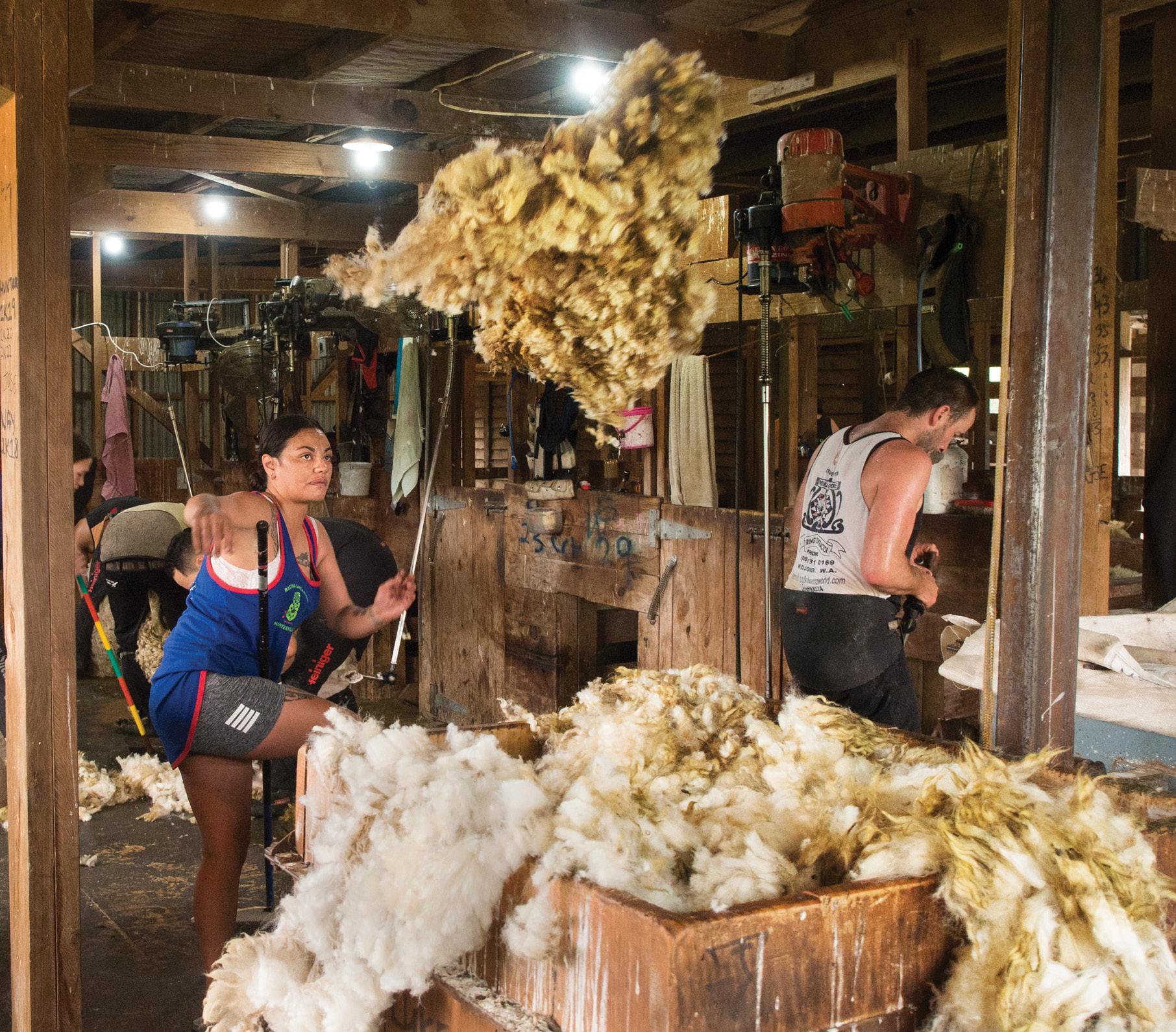
Country-Wide | APRIL 2023 79
KEY POINTS
Good balance of hills and flats. Mild climate, good winter grass growth for finishing lambs. Novel sheep policy, well drained and tracked.
40ha tile-drained cropping flats. Lake and three springs provide reliable water source.
Soil conservation and biodiversity are important.
superphosphate, with a small amount of urea (100kg/ha) used on the new grass. Hay paddocks are usually shut up on October 1 for one or two cuts, and 3.5ha of lucerne provides four or five cuts.
Animal health plan
Upon arrival, all sheep are given a broad spectrum worm dose and quarantined. They are treated with flystrike protection if indicated.
At docking, from September to November, lambs get Coglavax vaccine and Clik Extra fly treatment, ram lambs are castrated and ewes drenched and dagged. Lambs receive another Coglavax, a drench and Clik Extra at weaning in January. Winter lambs are then drenched on a 28-day programme.
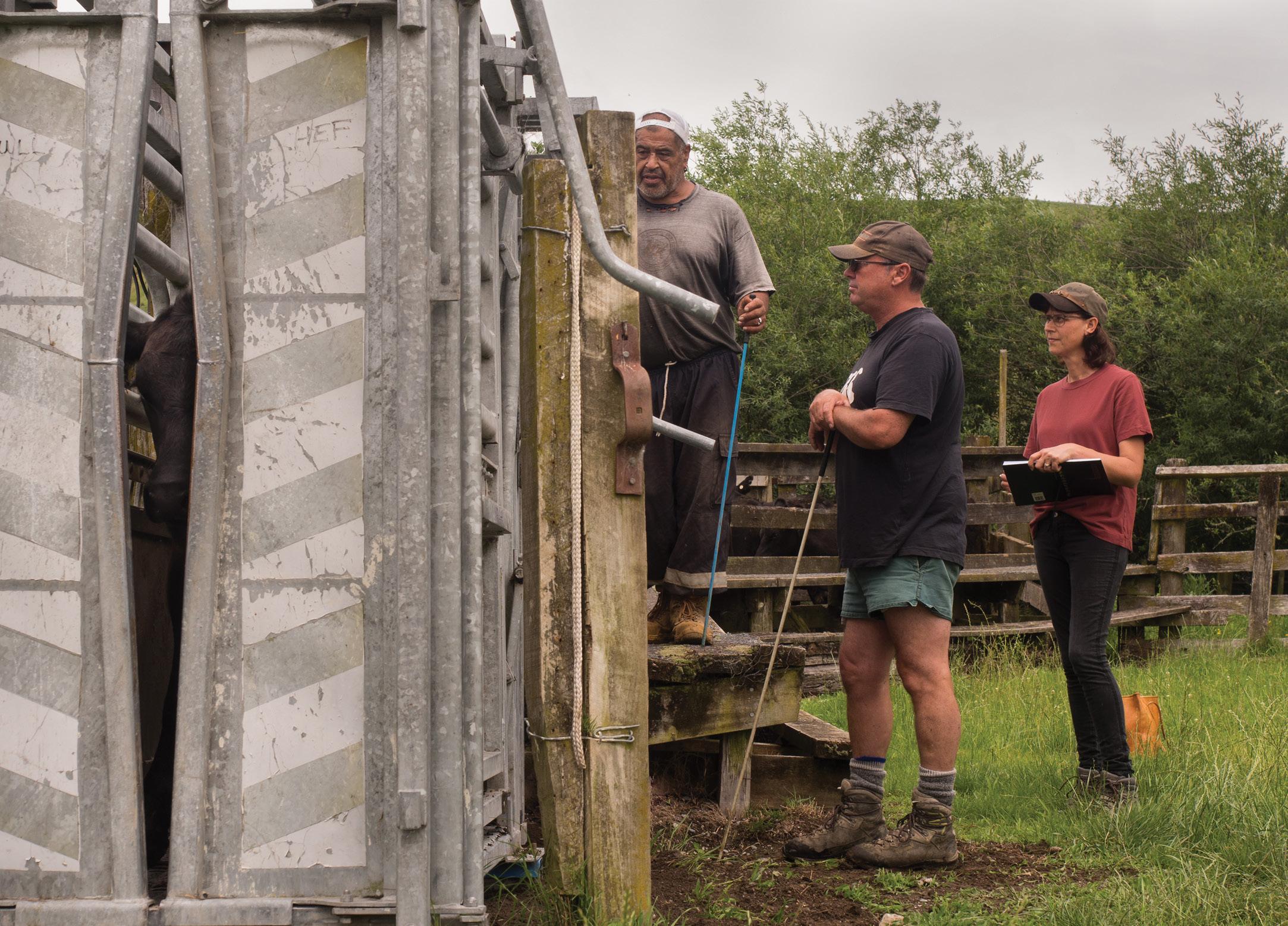
Cows and R3 heifers are pregnancytested in April; the wets receiving copper, a pour-on (Abamectin) and 7-in1 vaccine. Cull cows go to AFFCO and Greenlea.
In April, weaned calves get 7-in-1 vaccine and Eclipse pour-on, followed six weeks later by a second vaccine and copper. Young cattle are subsequently dosed at approximately three-monthly intervals. The R2 replacement heifers also get a 7-in-1 lepto boost.
In May, bulls are vet tested and have a BVD vaccine followed by a lepto boost in July.
Before calving, the cows are given a liver-fluke drench, copper and those over five years get a magnesium bolus.
Other land bought
Since 2016 the Burkes have bought and sold different blocks of land and in turn Puketira has become freehold – a huge achievement.
In 2016, with the intensive phase of development on Puketira completed, a new development block was bought at nearby Bond Road comprising an 8ha
80 Country-Wide | APRIL 2023
Above: Mark (Hek) Kingi, Rob and Marie weighing cattle.
Table 1
Pukeitra Station: Stock and financial performance 2022
vineyard, subsequently converted to cropping land, the five-bedroom house renovated and rented out. This block provided work for staff at quiet times of the year.
The Bond Road block consolidated the business closer to home, and in 2017 the remaining flat land at Te Karaka was sold to relieve the very high workload, the stress, and above all, bank debt. Puketira was at last freehold from the bank, a huge achievement.
By 2017, falling revenue from maize and sweetcorn meant it was no longer viable for smaller operators to grow it. The decision was made to lease out the flats at both Puketira and Bond Road and in November 2020 the latter was sold.
The Burkes have subsequently leased the next-door “airstrip block” of flats from Rob’s uncle, Tim, and have bought a 15ha hill block adjacent to Puketira from neighbours.
The Burkes concede their first decade of farm ownership was stressful and both physically and mentally exhausting. Years later, Marie was to draw on her experience when she and Sandra Matthews started Farming Women Tairawhiti, to connect and support rural and farming women.
“We’ve learnt a lot from past experiences. We like to reflect on the choices we’ve made, whether they’ve been good ones or not, and always try to improve on what we do,” Marie says.
“Having seen so many ups and downs of weather and outside factors affecting farming, we know now that when things are tough they eventually get better. High debt was an obstacle early on in our farming life. We got on top of that by buying, improving, and selling smaller properties.”
Rob adds, “Not every year will be a good one, and often when one part of the business is having a good year, another part won’t be. That’s just farming. We’ve been in business long enough to realise it’s better to look at 10-year averages rather than each year in isolation.”
The biggest challenges in recent years included the Covid lockdowns, when stock still needed the same amount of care as usual, but no staff could come on farm to help.
Daughter Jess and partner Brad filled the staffing gap during the first lockdown,
Country-Wide | APRIL 2023 81
PUKETIRA GROUP AVERAGE TOTAL FARM AREA HA (EFFECTIVE) 354 (328) 1301 (1067) CROP AREA HA 40 3.6 NUMBER OF PADDOCKS 27 92 AVERAGE PADDOCK SIZE HA 13 12 STOCK PERFORMANCE SHEEP SU 2,703 4,666 CATTLE SU 1,522 4,880 SU/HA 12.9 9.1 STOCK RATIO % sheep:cattle:deer 64:36:00 48:50:01 LAMB PRICE $ 187.99 153.61 EWE PRICE $ 201.93 166.72 AVERAGE SHEEP PRICE $ 191.05 158.24 SHEEP INCOME $/SSU 161.19 154.16 CALVING % 86 87 STEER PRICE $ 1,089 1,553 COW PRICE $ 877 1,155 AVERAGE CATTLE PRICE $ 995 1,530 CATTLE INCOME $CSU 62.11 95.74 FARM EXPENSES PER SU WAGES 35.04 21.13 ANIMAL HEALTH 7.72 5.53 TOTAL FARM WORKING EXPENSES 55.57 39.19 FERTILISER TOTAL TONNES APPLIED 64 211 PHOSPHATE KG/HA 17.6 14.3 PHOSPHATE KG/SU 1.4 1.6 SULPHUR KG/HA 21.5 21.2 SULPHUR KG/SU 1.7 2.3 FINANCIAL
GFI/HA $ 1845 1214 EFS/HA $ 669 473
PERFORMANCE

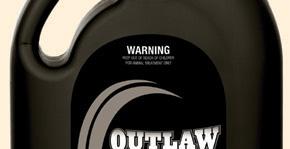

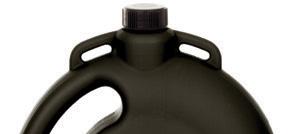
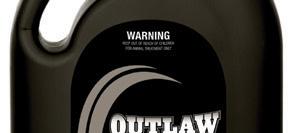




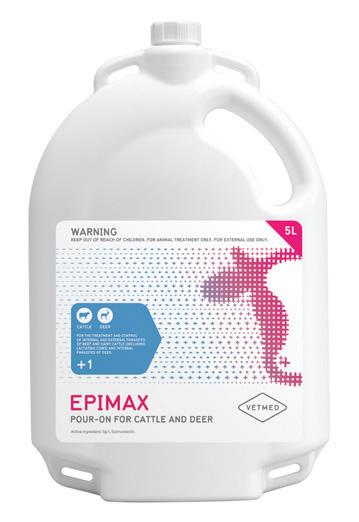






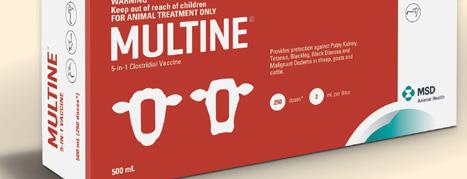












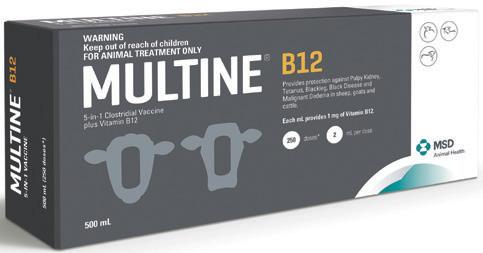













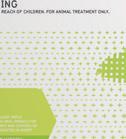

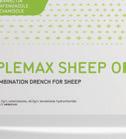











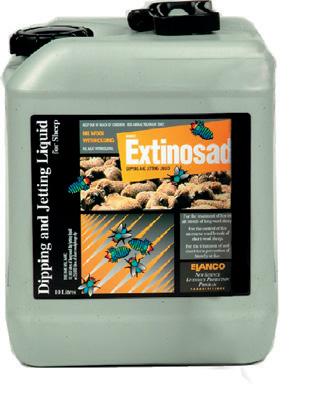

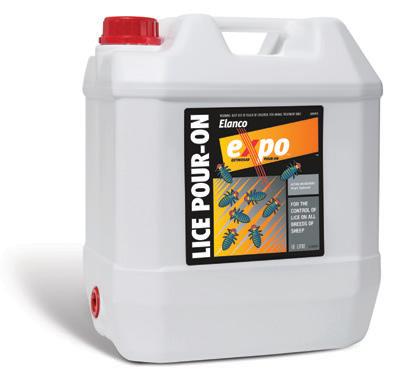
82 Country-Wide | APRIL 2023 ACVM Registration VETMED Triplemax Sheep Oral # A011735; VETMED Triplemax Oral #A011076; MULTINE® B12 #A011311; Outlaw® #A010375; MULTINE® #A000934; VETMED Epimax Pour-On #A010922; Extinosad #A008206; ExPO Extinosad Pour-On #A010205. Always read the registered label before use. Available while stock lasts. View our full and comprehensive range online at store.pggwrightson.co.nz RANGE OF ANIMAL HEALTH LARGE PRODUCTS to keep your sheep and cattle thriving CATTLE P OUR-ONS C LOSTRIDIAL VACCINES SHEEP LICE CONTROL TRIPLE COMBINATION DRENCHES
but had to isolate for 10 days first.
“Then special dispensation from MPI was needed to get the shearers in, and every surface of the woolshed and yards had to be cleaned down. Not easy,” Rob says.
Other major challenges include the volume and speed of changes to Government policy, regulation and consultation, which Marie says have been exhausting and have caused costs to rise faster than earning capacity.
Now fences and tracks require reinstating following Cyclone Gabrielle. Son Mat has been home to help with the clean-up.
“For the next five years we want to increase productivity and efficiency, continue to work on soil conservation planting and native planting. I like to plant fruit trees along the laneways to increase food for bees and for us,” Marie says.
Farm succession
Rob and Marie began succession discussions early with their children when Mat (28) and Jess (23) were in their teens. At this stage neither of their children intend to farm, but Rob and Marie wish to help other young people who do and have looked at ways to incorporate a new generation into their business plan.
Marie sees future potential in equity partnerships to bring young farmers into the sheep and beef industry and achieve a stake in farm ownership, similar to what’s been done in the dairy industry.
With an eye to the future, the farm was subdivided into three blocks a few years ago, and the Burkes have just put one block on the market.
“If it doesn’t sell, we may look at employing a stock manager in the future.”
Marie and Rob are always on the lookout for new possibilities. Not being afraid to seize opportunities has enabled them to get to where they are today.
Rob says he wants to go fishing more in the future. As a result of the Bond Road sale, the family has a holiday house now, so spending time there is a dream they both have.
The history of Puketira
Puketira Station is part of the original Meadowbank Station, bought in 1938 by Rob’s great grandfather and has come down through the generations. The station was divided in two in 1970 and Rob’s parents Patrick and Christine bought Puketira, which was very underdeveloped, having large paddocks, considerable areas of scrub and rushes, and no house, yards or woolshed.
Patrick and Christine built a house, developed the farm, drained the flats, planted trees, created dams and tracks and raised their family throughout the 1980s and some of the toughest times of farming.
When Marie and Rob married in 1993, they bought their first block of flat land –8.9ha at Te Karaka. A few years later they added a neighbouring 26.3ha on which they cropped and fattened lambs in their spare time.
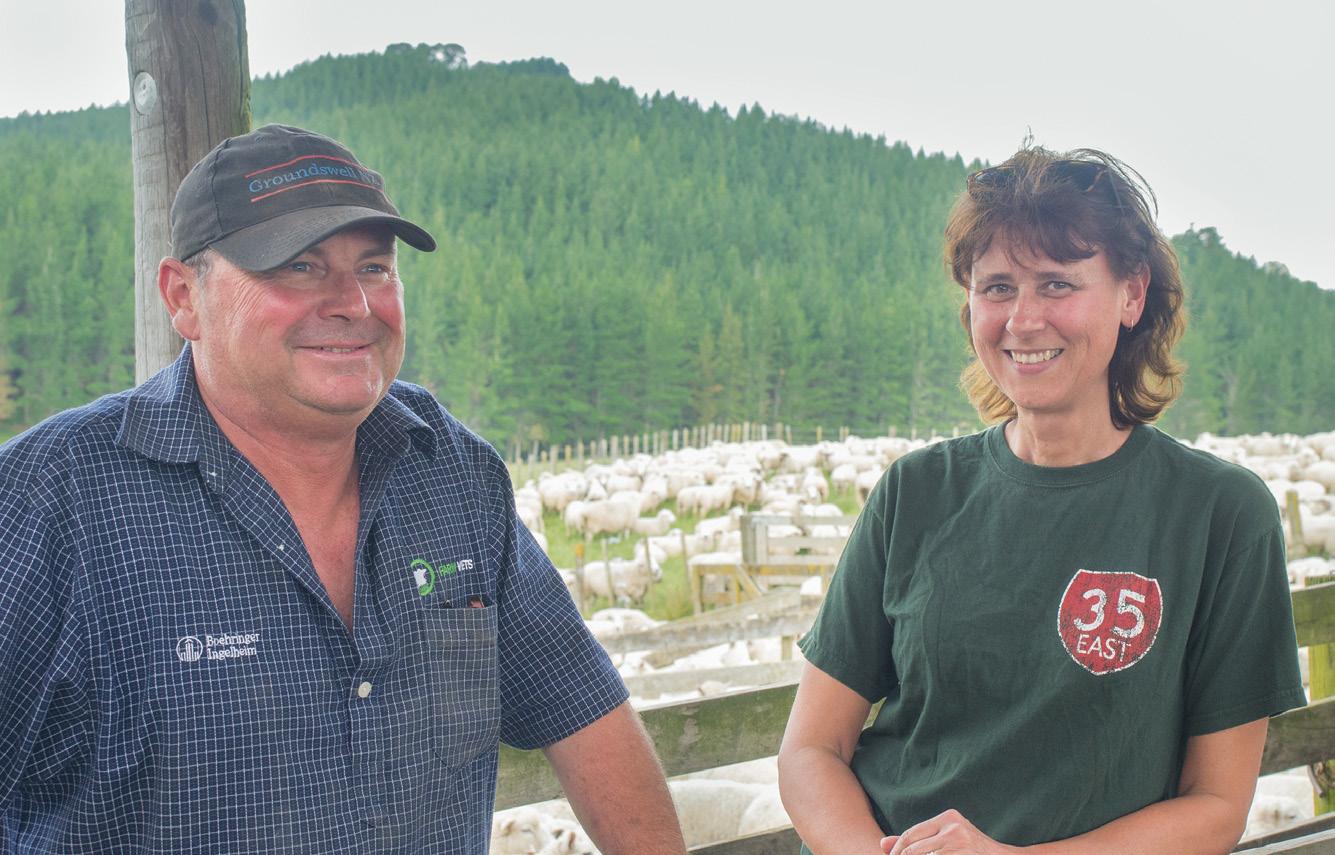
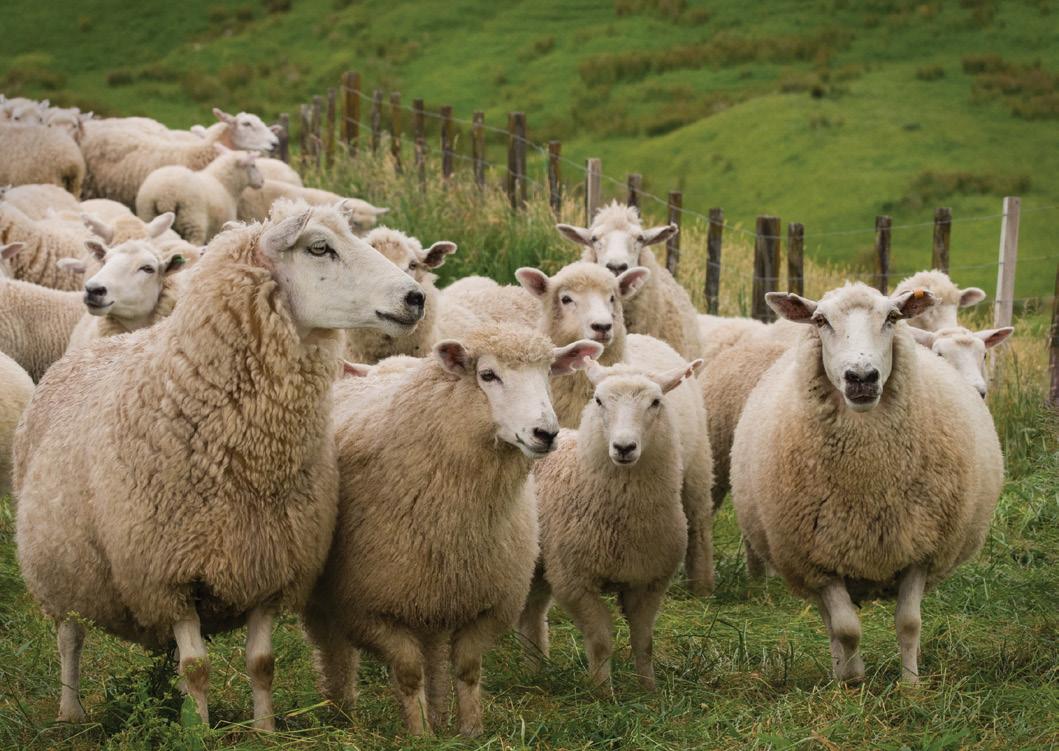
In 2004, Rob and Marie bought the land, stock and machinery at market value and Rob’s parents re-invested in the farm at an agreed interest rate to give themselves an income to retire on.
Some professional advisers warned them that the farm was too small and the debt loading too high, but Rob and Marie decided to back themselves and surrounded themselves with a team to make it work.
Country-Wide | APRIL 2023 83
Left: Sheep on Puketira Station are of mixed breed.
Below: Rob and Marie began succession planning early when their children were in their teens. Having an adaptable plan underpins all their businessand lifedecisions.












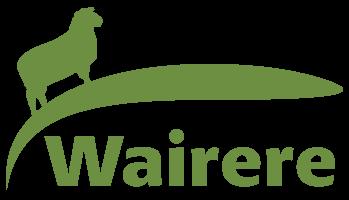

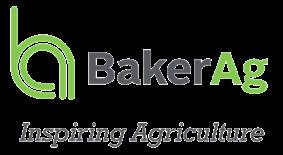



84 Country-Wide | APRIL 2023 RED MEAT FARM BUSINESS of the year C entral Districts Don’t miss your chance to learn from this year’s Wairere Central Districts Red Meat Farm Business of the Year winners, Derek and Leanne White. Farm location: 425 Waiaruhe Road, 20 minutes north of Taihape. Arrive by 9.45am for a 10am start. $20 cash for lunch. Mark your calendar NOW! Winners’ Field Day - April 5 Contact for more information: Gary Massicks, BakerAg Email: gary@bakerag.co.nz Phone: 027 585 3222 GOLD LEVEL SPONSORS:
Stock need pasture choice
Recent pasture growth rates have been huge, but Trevor Cook writes there’s frustration with low liveweight gains.

The North Island summer will be remembered for many reasons. For north and east that memory will largely not be good. The tragic stories of human loss are hard to listen to. Dogteam losses are almost heart-stopping, as are the stock losses.
The ongoing loss of production matched by the massive costs needing to be incurred are yet to hit the headlines.
Dairy farmers are being supported by a guaranteed income while they are out of production. Sheep and beef farmers are unlikely to get anywhere near that. But there will have to be some support, otherwise there will be more human tragedy.
The impact on exports will eventually filter through to impact on everybody, even though few will make the association.
Outside those areas that suffered from massive rainfalls, as well as in those areas, pasture growth rates have been huge. Clover levels never seen before on hill country are being reported.
Huge pasture covers, lots of poorquality pasture and mixed production outcomes are everywhere. Of all the stock classes in the mix, beef cows have been in paradise. Lots of pasture of variable quality is all they need to gain condition. Ewes in disappointing condition despite the feed, poor lamb growth rates, low carcase yields and below-par dairy heifer growth are very common stories. Lots of pasture cover does not necessarily mean good feeding.
A sign of the unusual pasture growth equation is nitrate poisoning in lambs and calves. Any high-quality pasture stimulated to grow fast with the rain and heat will accumulate high levels of nitrate. Especially on cloudy days. The trigger in all the cases I’ve seen is that the stock were held off feed for long enough to be hungry when returned to feed. A higher intake than normal is usually behind all nitrate losses.
Low liveweight gains
In most cases the frustration has been in low liveweight gains. Sheep and young cattle require reasonable quality pasture to grow fast. Adult sheep will hold condition on poorer feed but need quality to gain condition. Lambs and young cattle need quality.
The nature of pasture on so many farms is not great and unless stock are given lots of choice of what they can eat, their diets are likely to be average at best. In the young sheep category I include rising two-tooth ewes. If they have come out of a difficult spring with lambs on them, they need quality pasture to get to where they need to be, which is a minimum of 90% of mature ewe weight at mating.
Longish pasture with plenty of stem in the mix is not quality. The challenge is even greater for their year-younger sisters; they require even higher quality. Some farmers are saying their summer crops have not been necessary because there is so much pasture. But those
crops are likely to be much higher quality than much of the pasture which otherwise would be being consumed.
These pasture growth conditions bring more than quality issues. The multitude of pasture fungal toxins that impact growth and ovulation like these conditions as well. Or maybe just like the pasture better when it is in this condition.
When we give grazing animals choice, they not only select the best quality pasture out of the mix but they will try to avoid the toxin-laden bits as well.
Our parasitic worms love these weather conditions. The free-living stage thrives on moisture and heat. High rates of egg hatch and larval development lead to high levels of pasture contamination. This is compounded by the high pasture covers, which extends the life of the larvae. They do not like exposure to light and so enjoy lurking at the bottom of these pastures.
The irony is that we advise to let lambs leave high pasture covers on the basis that they do not eat down to where the high concentration of larvae are. But leaving high residuals extends the life of those larvae. Following with stock to clean up is ideal, but in doing that they will not grow.
A contribution to lower than expected lamb and calf growth rates is high levels of worm larvae intake. Initially these just lower the appetite before they develop into gut-damaging adults. If ever there was a need for the strict 28-day drenching programme, it is this summer, unless that contamination/exposure cycle has been broken.
Poor winter pasture growth rates often seem to follow very growthy summers and autumns. Part of this though will be poor-quality pasture taken into the winter, which grows slower. Are soil nitrogen levels lower than normal? The high clover levels being reported should be boosting the nitrogen reserves. The reality for many farms is that there will need to be a sacrificial stock class to clean up pastures. Ideally this needs to happen before the winter, but at the very latest before the spring.
Country-Wide | APRIL 2023 85
STOCK CHECK
Trevor Cook is a production animal consultant/veterinarian in Feilding.
Pays to know how the rumen works
As livestock farmers, we do not need an expert knowledge of animal physiology, just as we don’t need to be able to pull an engine apart (and put it back together). But we do need an understanding of how an animal’s rumen digestion works and the implications of that.
The ruminant digestive system allows cattle, sheep, etc, to use high-roughage feeds, including pasture, to convert it into products that we can use for food, clothing and other useful products. Ruminants eat rapidly, mixing their food with large amounts of saliva, which aids digestion and buffers pH levels in the process. They can regurgitate some feed and chew it again, which helps to make the food particles smaller.
The main digestion of feed occurs in the rumen, which is a large fermentation vat holding up to 200 litres in a mature cow, taking up most of their abdominal cavity. The fermentation process involves bacteria and other micro-organisms breaking down the plant cells into more basic carbohydrates (sugars and complex sugars) and fatty acids that can be absorbed by the animal.
Breaking it down
The digested food passes from the rumen to the abomasum when it is small enough in particle size, and gets acidified to a pH of 3.5-4.0. That kills the micro-organisms that pass with the food, and are themselves digested by the animal.
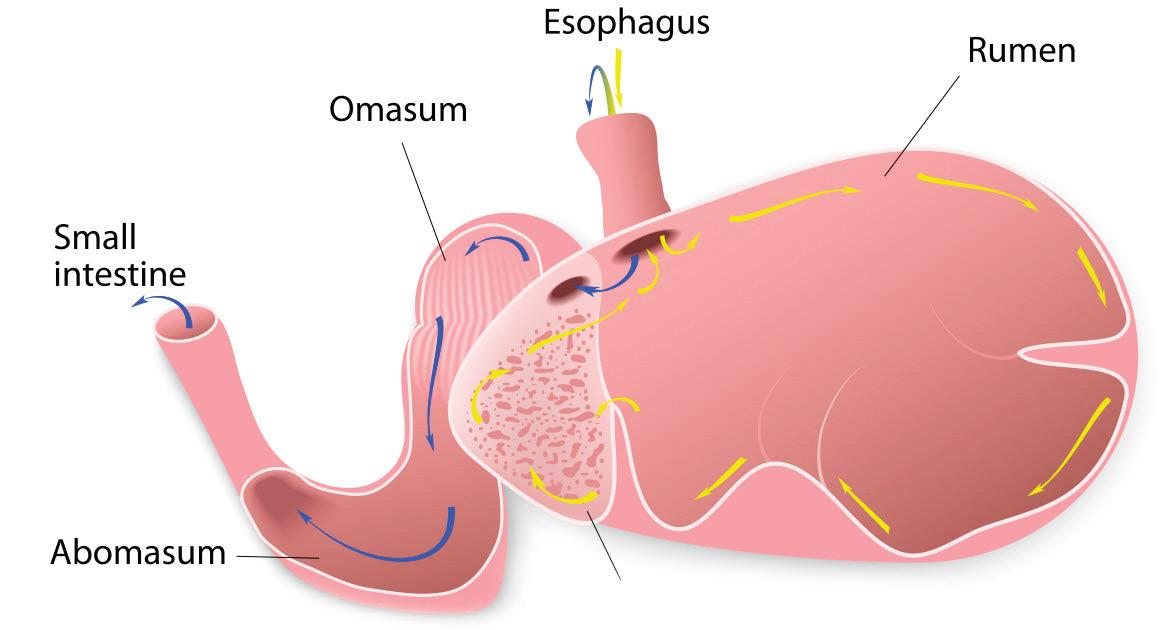
The ruminant digestive system has evolved over millions of years, with the symbiosis of the grazing animal and the micro-organisms that digest the roughage for them. Human effort to alter that may or may not give a
result that we desire.
All the micro-organisms that digest the diet come with the forage, and they are all fairly particular to different food types. They flourish in the ruminant stomach because of the warm, wet environment, with a pH that suits them.
Ideally we feed our sheep and cattle the same diet every day of the year, which allows a stable set of rumen micro-organisms so the digestion process is at peak performance.
Realistically, an animal’s diet changes throughout the year due to seasonal growth patterns and management changes. Whenever the type and balance of feed type changes, there is a resulting change of the type and balance of rumen micro-organisms. First, those bacteria, etc, have to multiply or die off to handle the changed feed on offer, which effectively consumes some of the available nutrients. Then they pass nutrients on to the animal.
86 Country-Wide | APRIL 2023
Rapid changes in diet can affect animal health, so it pays to know a little about what goes on inside an animal’s digestive system, Kerry Dwyer writes.
TRANSITIONING
Small intestine
Omasum
Esophagus
Rumen
Reticulum
Abomasum
These micro-organisms also synthesise and break down proteins and vitamins, and produce gases such as carbon dioxide and methane. The micro-organisms multiply as they digest the food, ideally in warm, wet conditions with a pH of 6.5–6.8. They also release a fair amount of heat, which aids the animal in cooler conditions.
Keep it steady
A small change of diet over a considerable time allows this change of rumen organisms to occur without detrimental effect on the animal. Any abrupt diet change effectively starves the animal until a new balance is reached and nutrient absorption restabilises.
After a sudden change of diet, it will take as long as three weeks for the ruminant digestive system to regain equilibrium, maybe more if the system is hurt by events such as acidosis, which damages the integrity of the stomach linings.
The implications of all this are that as livestock managers, we should aim for our animals to keep their rumen system close to peak performance and so gain
maximum animal production.
If we could allow a two- to three-week transition for every diet, that would be ideal. For example, stock grazing the same pasture have a steady change of rumen micro-organisms as the pasture matures over spring/summer, and possibly again over autumn. Moving stock from pasture to a forage brassica is not a steady transition, so they tend to eat the weeds and paddock edges first in an effort to smooth their diet as best they can.
Fussy sheep and cows
Merino sheep are quite fussy and their wool growth rapidly reflects diet changes. For example, in Australia the Merinos will tend to get a wool “break” when the autumn rains give a rapid change from dry brown pasture to lush green growth. In NZ they can show a spring wool break for the same reasons.
Dairy cows moving from the first grazing round in spring (when the pasture is typically winter grown and older leaf) to the second round (with very fresh leaf that has been nitrogen fed) also show the impact of a rapid diet change.
The cow’s digestive system is hurt and its faeces become liquid, and there’s some liveweight loss as this occurs. At the same time they are expected to reach peak milk production and start oestrus cycling for mating.
Ruminants can be classified into distinct feeding types, based on the diets they prefer: concentrate selectors, grass and roughage eaters, and intermediate types. Concentrate selectors have a small rumen in relation to body size and selectively browse the most digestible and nutrient-dense parts of plants. Deer are an example of this.
Cattle and sheep are grass and roughage eaters and have a larger rumen relative to body size to cope with a lower quality forage. They also have a longer intestine to allow for absorption of nutrients. Goats are classed as an intermediate type of ruminant.
To get the best production from livestock, it is worth thinking about dietary changes and their impacts on the animals in advance and during any diet transition. Observation of the stock will reinforce the importance of smoothing the process and avoiding rapid changes if at all possible.
A diet change may be as subtle as moving from dry summer pasture to new green pasture; or a substantial change from pasture to a greenfeed such as sugar beet. Having some diet portion consistent during this change will aid the rumen micro-organisms, as will a steady increase of the new diet. A full transition period is typically 10 to 14 days but it may take as long as three weeks for rumen equilibrium to be regained.
If you managed to read all of this then you may also be an adept observer of your stock: happy stock have happy stomachs.
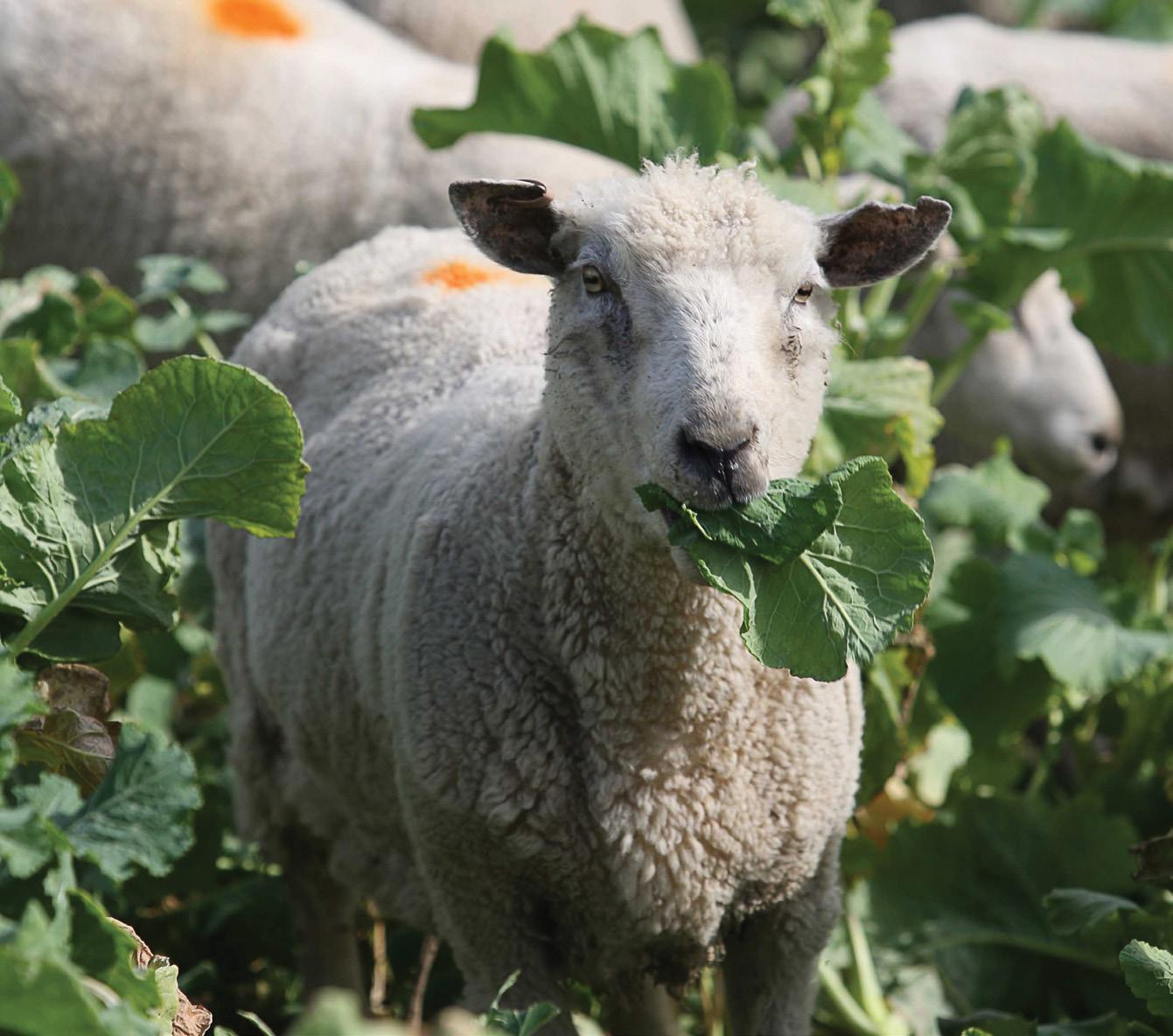
Country-Wide | APRIL 2023 87
“After a sudden change of diet, it will take as long as three weeks for the ruminant digestive system to regain equilibrium, maybe more…”

live naturally, choose wool biodegradable • renewable • natural
Bremworth Carpets and Rugs nzwool.co.nz
Image supplied by
TOO GOOD FOR TREES
FARMERS ARRIVED BY boat, water taxi, motorbike and plane from all over the top of the South, including D’Urville Island, to attend a Pelorus Sounds field day.
About 120 people were hosted at the Beef + Lamb NZ Farming for Profit field day on Manaroa farm.
Greg Sheppard from Sheppard Agriculture told the field day that a survey of Marlborough Sounds farmers showed the farmed area is about 14,000 hectares and carries an estimated 60,000 stock units.
“Much of this land is too good for trees and is ideal farmland,” he said.
Travel by sea has been the new reality for Kenepuru and many Pelorus farmers since a weather event closed the road to large trucks in July 2021. For almost two years, stock, fertiliser, balage, trucks and contracting gear has had to be moved via barge – adding cost and logistical challenges.
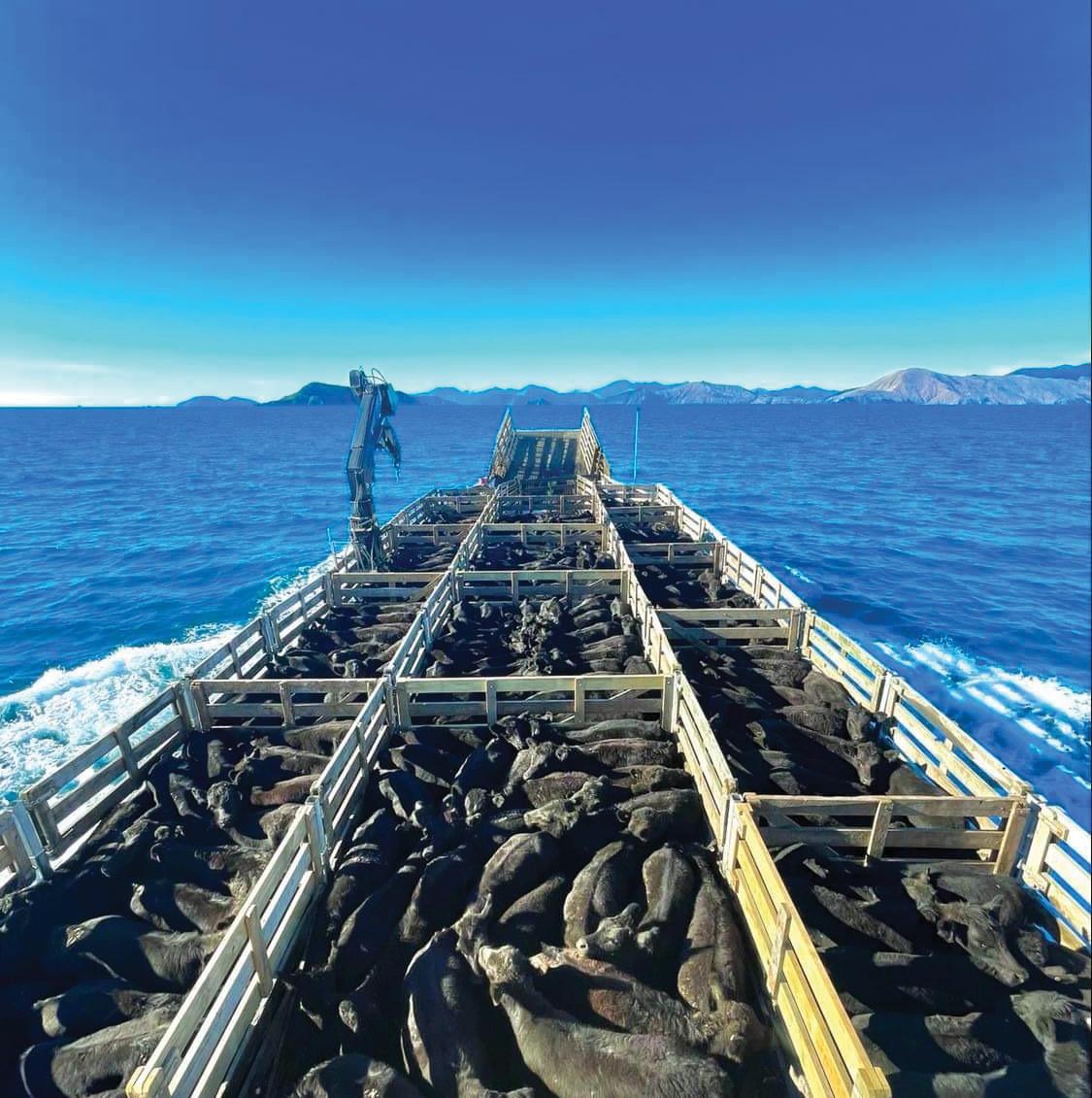
Alliance has been supporting all Sounds suppliers, paying the $560/hour barge cost to get sheep and cattle out to Havelock.
About 30,000 Sounds’ stock units go to Alliance.
Josh Jamieson and Kate Hutterd lease Manaroa after being offered a “really good lease deal” by the owners to make it work. They have added more blocks over time. Josh’s budget for 2023/24 shows Manaroa is expecting an economic surplus well above the B+LNZ Class 6 average. An operating farm surplus
FREE COUNSELLING SESSIONS
WILL TO LIVE is a rural health charitable trust founded in 2018 by Elle Perriam after her partner, a young farmer, took his own life. Sadly, suicide in rural New Zealand is higher than any other demographic, having a lasting ripple effect through a community – especially with our young people, who are often the largest statistic. Since 2018, The trust has been promoting mental health awareness, providing one-on-one support, free education and wellbeing tools to small rural communities, often isolated from mental health resources.
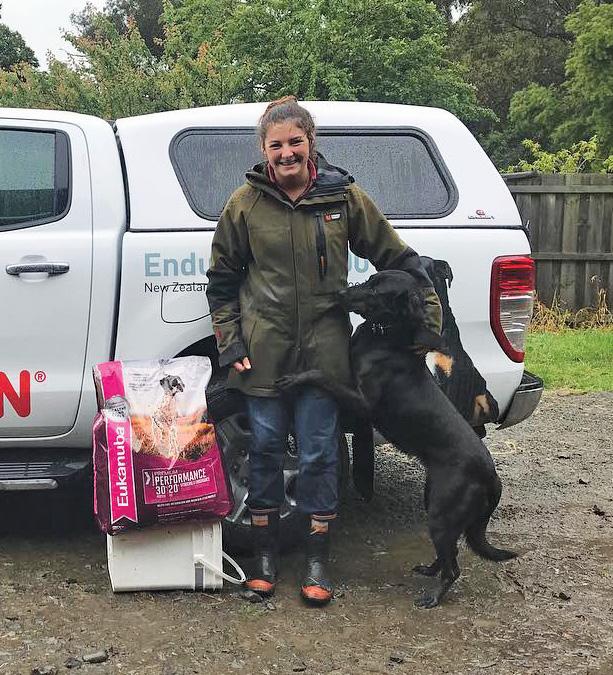
The Rural Change programme was launched by Will To Live in September 2021 and provides each farmer with the opportunity to enhance and improve their health, happiness and wellbeing by accessing three, funded, private
(before interest, tax, rent and wages) of $86/stock unit (su) is expected from 4350 su. Good rainfall and crops helped ensure all young stock left prime this season. The farm carries 10 su/hectare of sheep, cattle and deer (velveting stags).
+ Read more about Manaroa, Hopai and farming by sea, in Country-Wide May.
counselling/psychologist sessions. The programme has supported raw, real, and rural people to courageously share their stories of adversity, illness and hope.
Royal Canin has been supporting the trust for the past few years and first started by feeding Jess the Huntaway, featured in the Will To Live logo. This year, Royal Canin will donate $1 from every bag of Energy 4800 20kg, Maxi Puppy Active 20kg and Medium Puppy 16kg sold at a participating veterinary clinics in NZ between April 1 and May 31, 2023, to help Will To Live continue to provide vital assistance through Rural Change (up to $10,000).*
*Full terms and conditions are available at: www.royalcanin. com/nz/competition-terms
Country-Wide | APRIL 2023 89 SOLUTIONS
Find out more: willtolivenz.com/
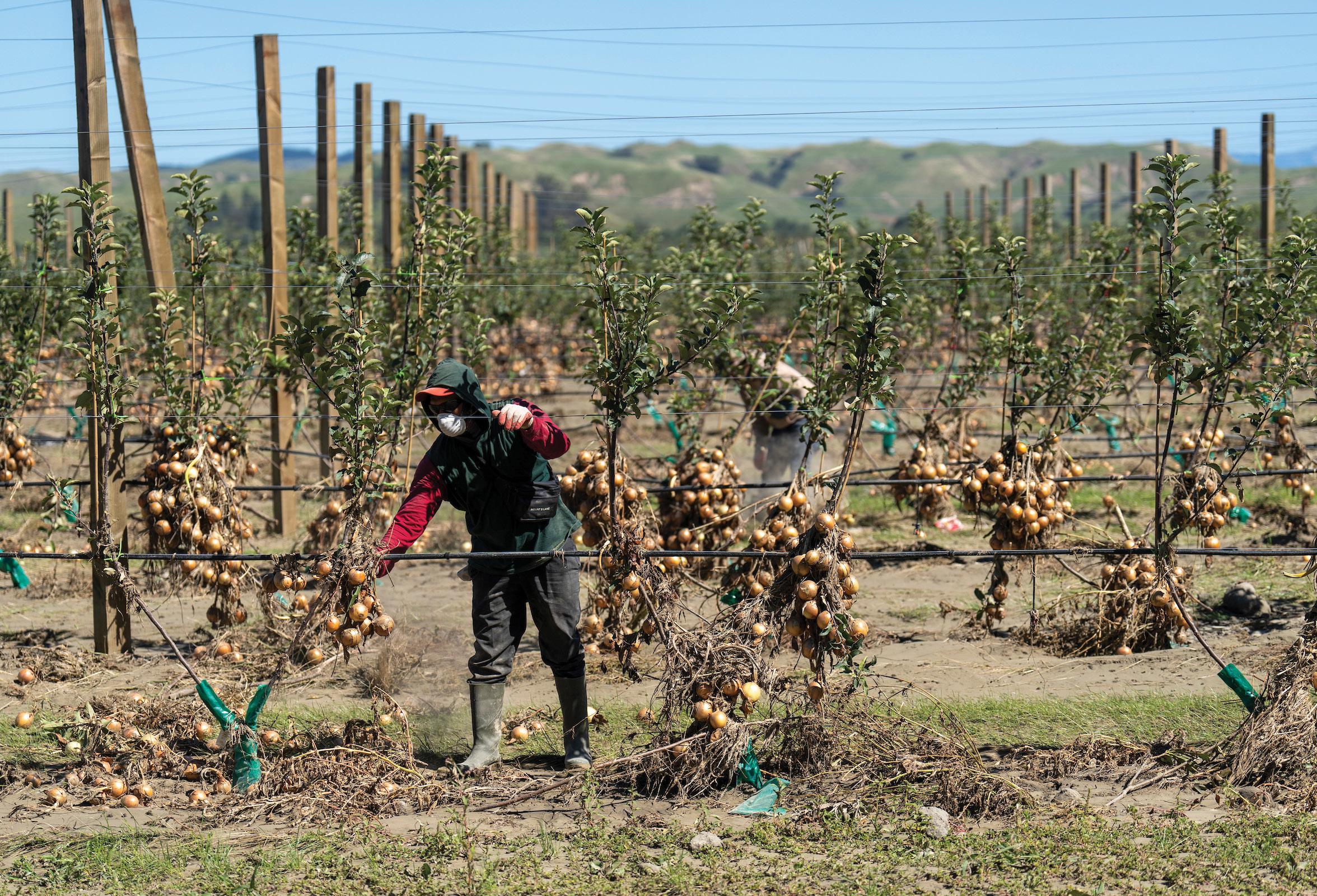
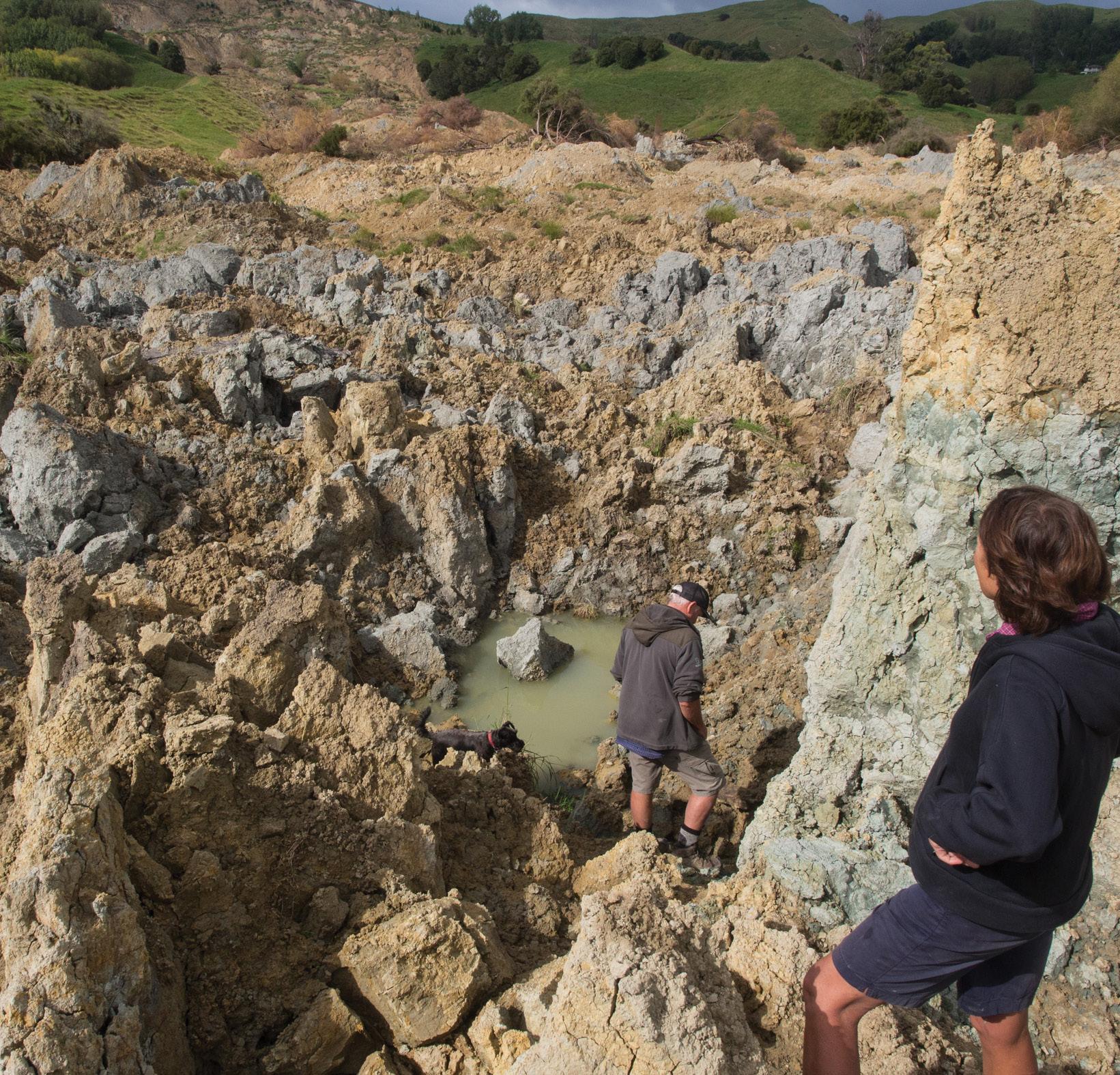
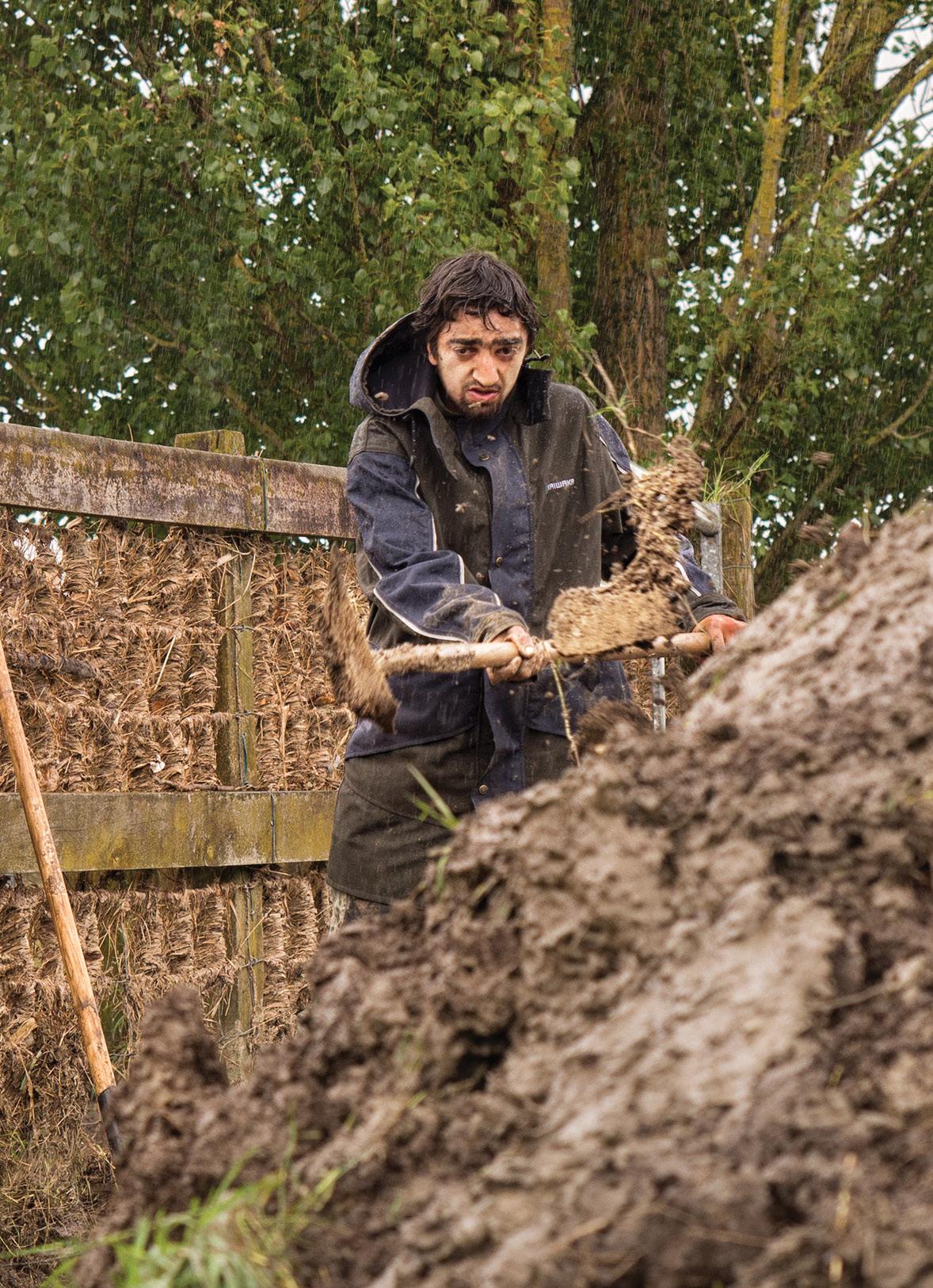
90 Country-Wide | APRIL 2023
Top left: Crispin and Chick Bridge scramble over the glacier-like landscape of the 13ha landslide on their Manutuke property. Top right: Cameron Pihama, first year Growing Future Farmers cadet at the Jex-Blake’s Mangapoike Station, shovelling silt out of the yards at the Manutuke block. Above: Ahmed Supkan from Indonesia, an RSE worker works to clear onions from apple trees in Hawke’s Bay.
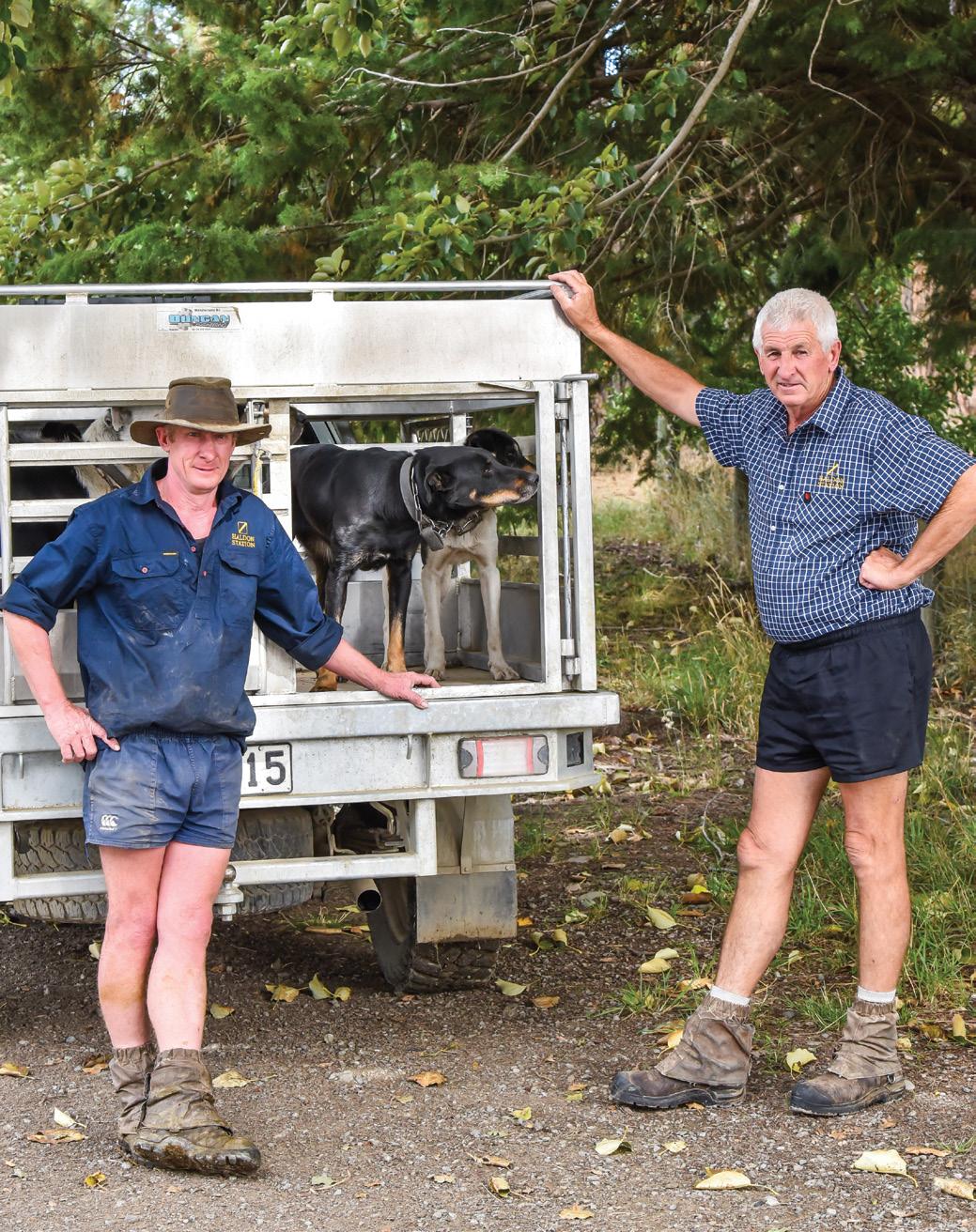
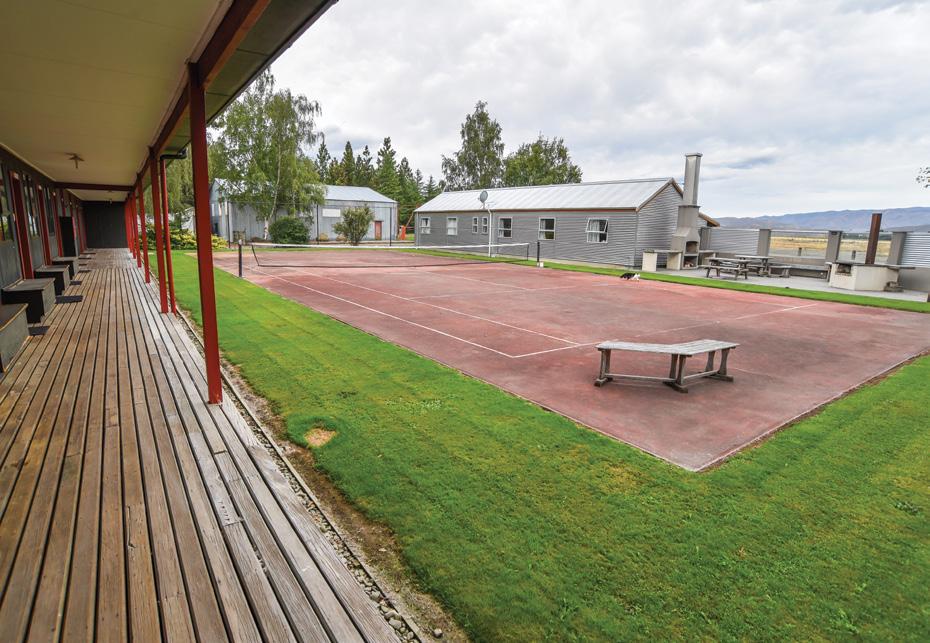
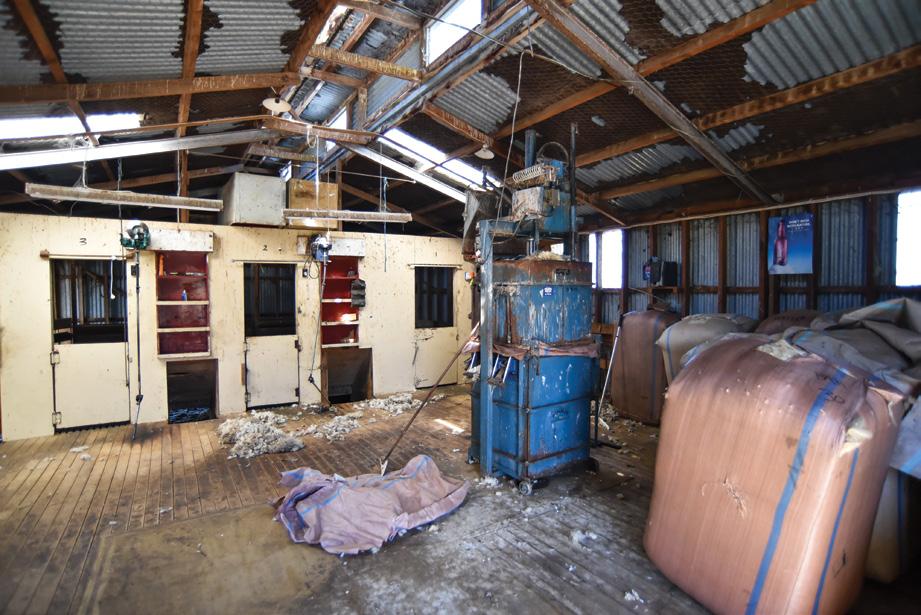
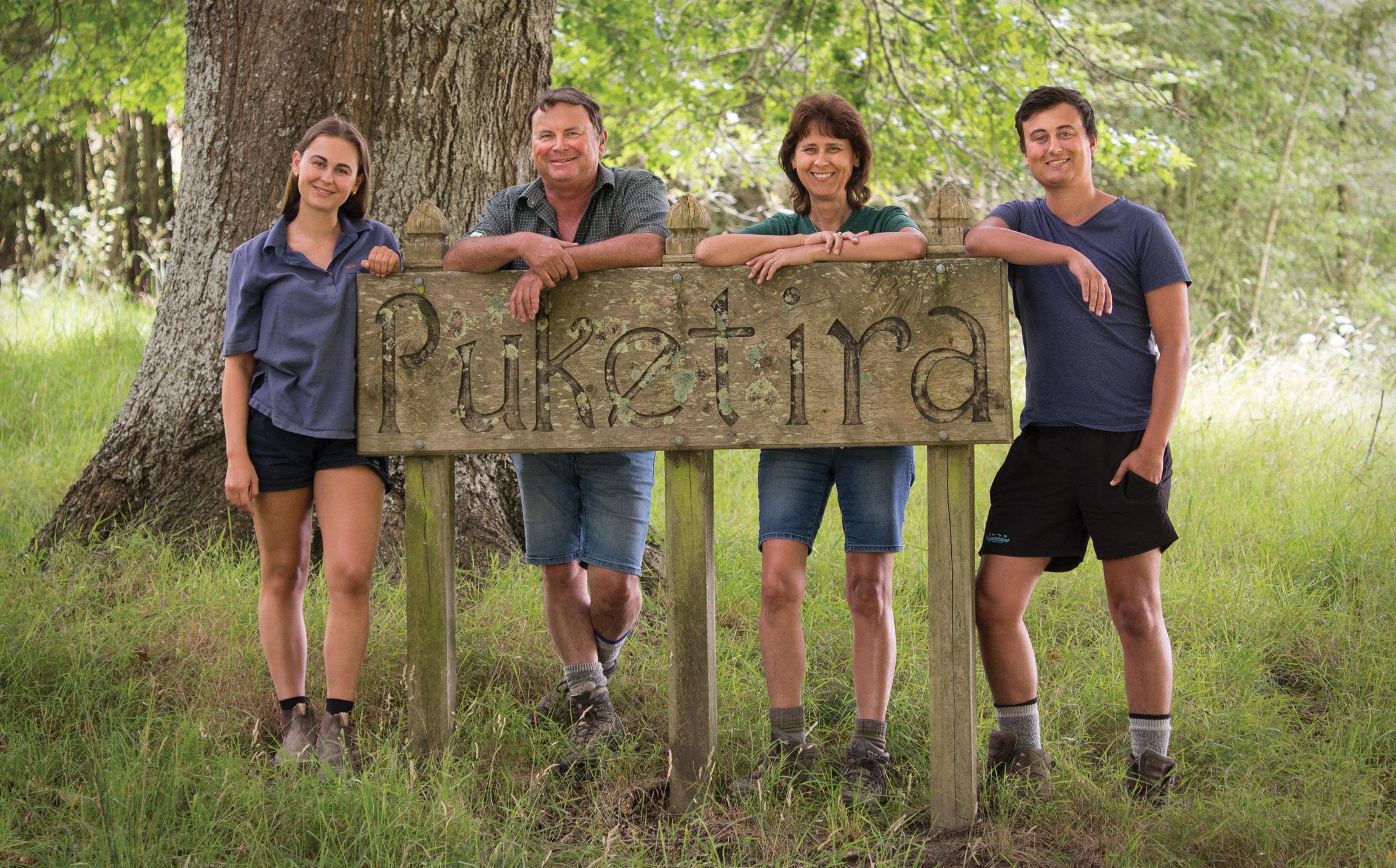
Country-Wide | APRIL 2023 91
Top left: Haldon Station livestock manager Hamish Neal and farm manager Paddy Boyd. Top right: Worker accommodation at Haldon Station. Centre right: Bevan and Wendy Hopcroft's woolshed. Above: The Burke family at Puketira: Jess, Rob, Marie and Mat.
You can say for sure, when it comes to quality and performance, Boehringer Ingelheim cattle products will keep your stock at their very best. Equally, this cookware by Zwilling is known to outperform expectations and designed to handle any recipe for success.
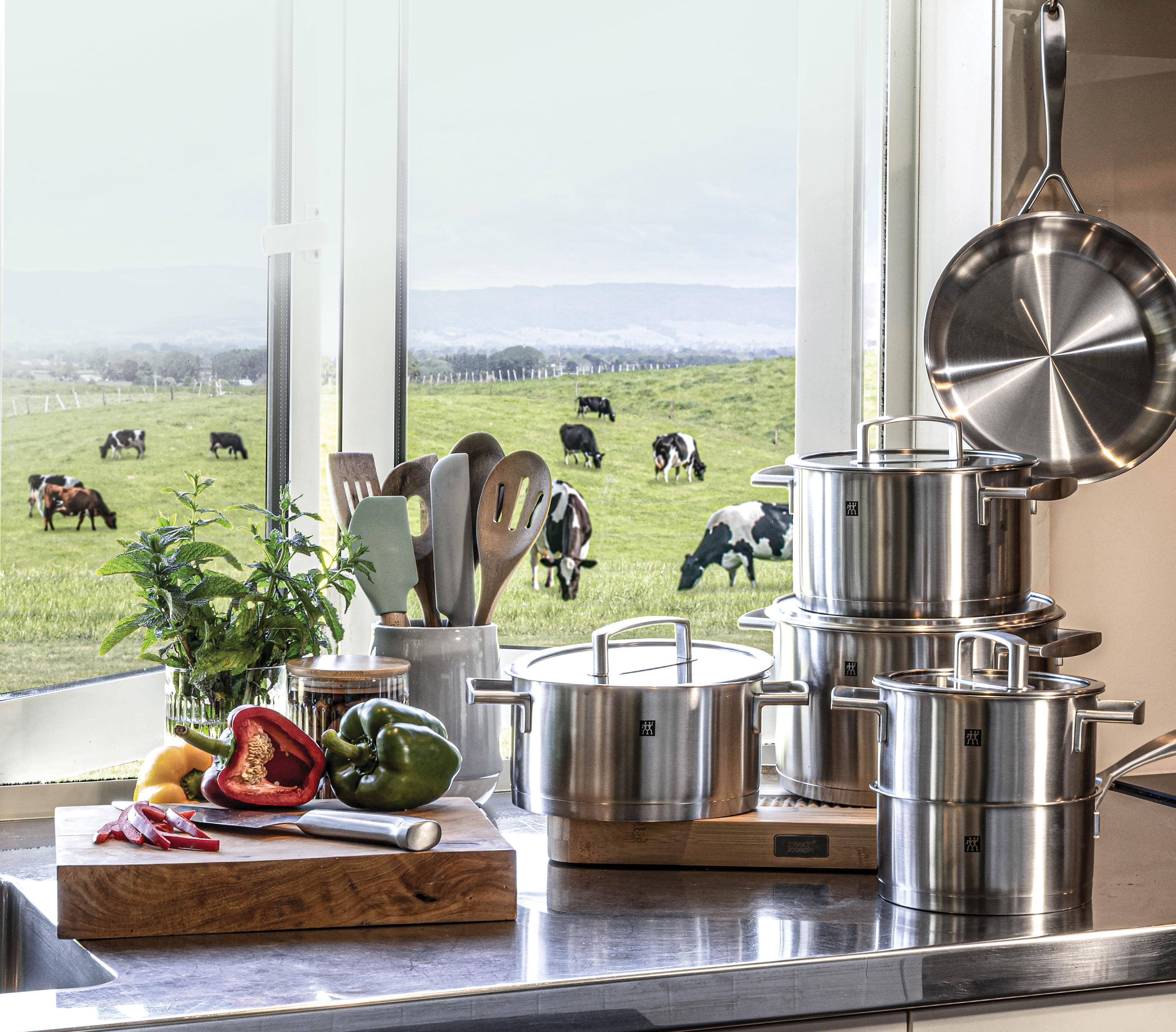
Ensure young stock become future high producers through improved health, growth and energy at: futureproducers.co.nz

92 Country-Wide | APRIL 2023 PROUDLY AVAILABLE FROM YOUR LOCAL PARTICIPATING VETERINARY CLINIC. Boehringer Ingelheim Animal Health New Zealand Limited. Level 3, 2 Osterley Way, Manukau, Auckland, New Zealand. ECLIPSE®, EPRINEX®, GENESIS®, IVOMEC®, MARKS-MIN® are registered trade marks of Boehringer Ingelheim Vetmedica GmbH, used under license. Registered pursuant to the ACVM Act 1997. No’s A010640, A011151, A007191, A009888, A006481, A011687. © Copyright 2023 Boehringer Ingelheim Animal Health New Zealand Limited. All rights reserved. NZ-CAT-0021-2022.
Receive a FREE * Zwilling 5 piece Cookware set or Frying pan, when you purchase qualifying Boehringer Ingelheim cattle products this season. *Promo ends 30th April 2023. Ask in clinic for qualifying products.





















































 Wayne and Julia Dohmen’s flood damaged home at Puketapu, Hawke’s Bay.
Photo: John Cowpland.
Wayne and Julia Dohmen’s flood damaged home at Puketapu, Hawke’s Bay.
Photo: John Cowpland.




























































 By Victoria Rutherford.
By Victoria Rutherford.









 Six-foot-four Haldon Station manager Paddy Boyd is always up for a challenge.
Six-foot-four Haldon Station manager Paddy Boyd is always up for a challenge.





































































































